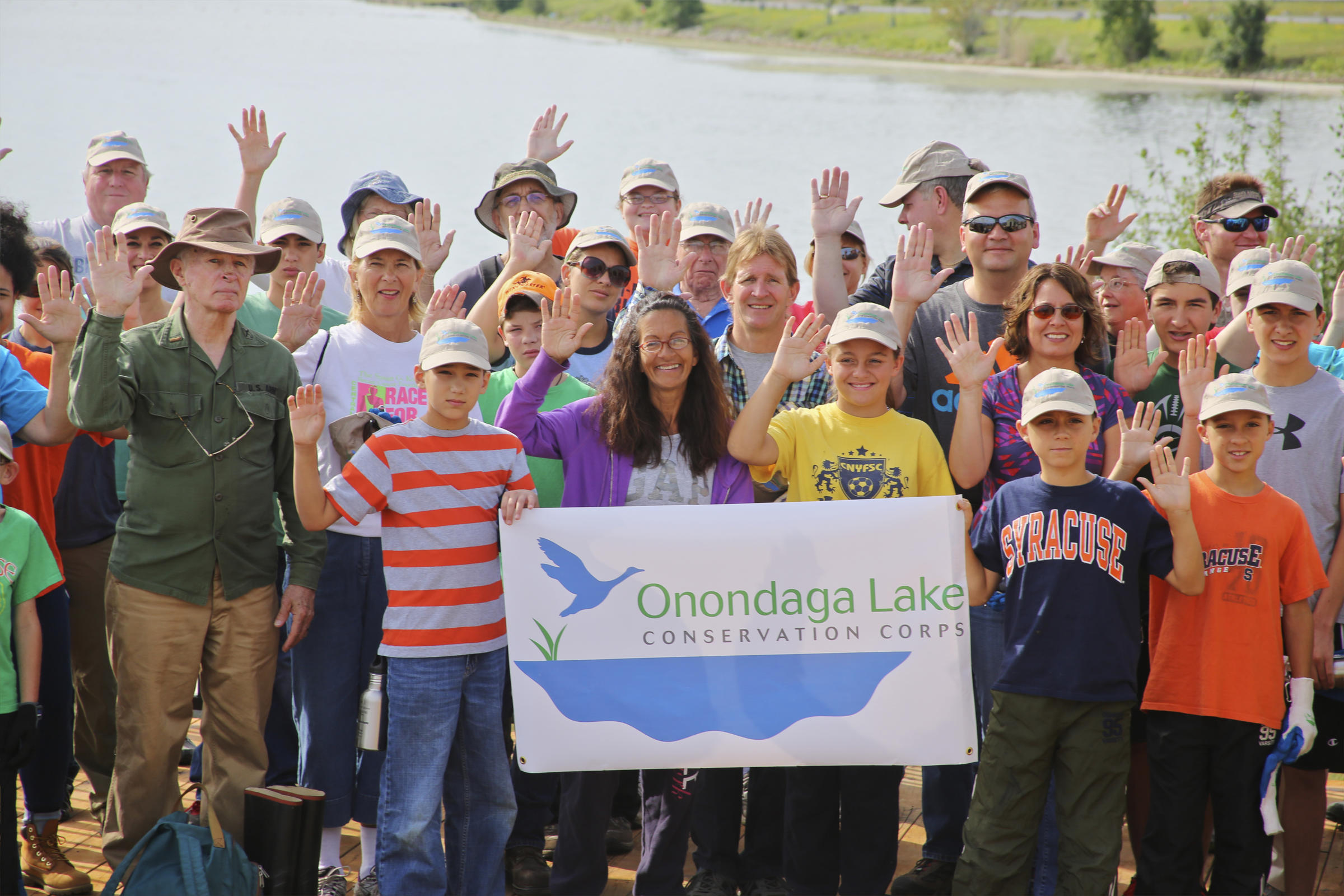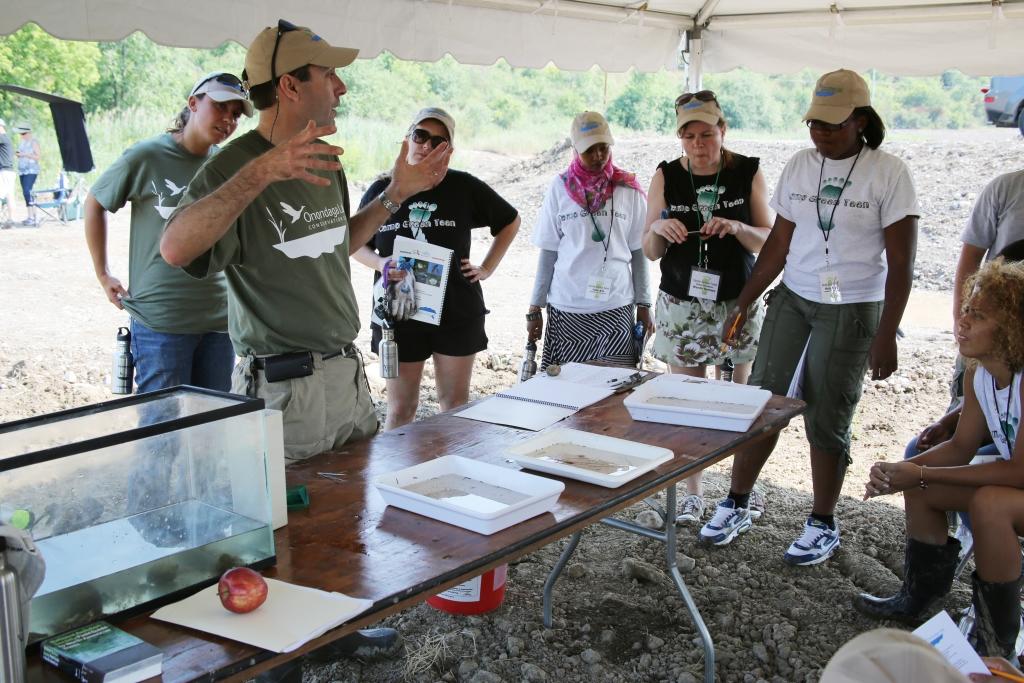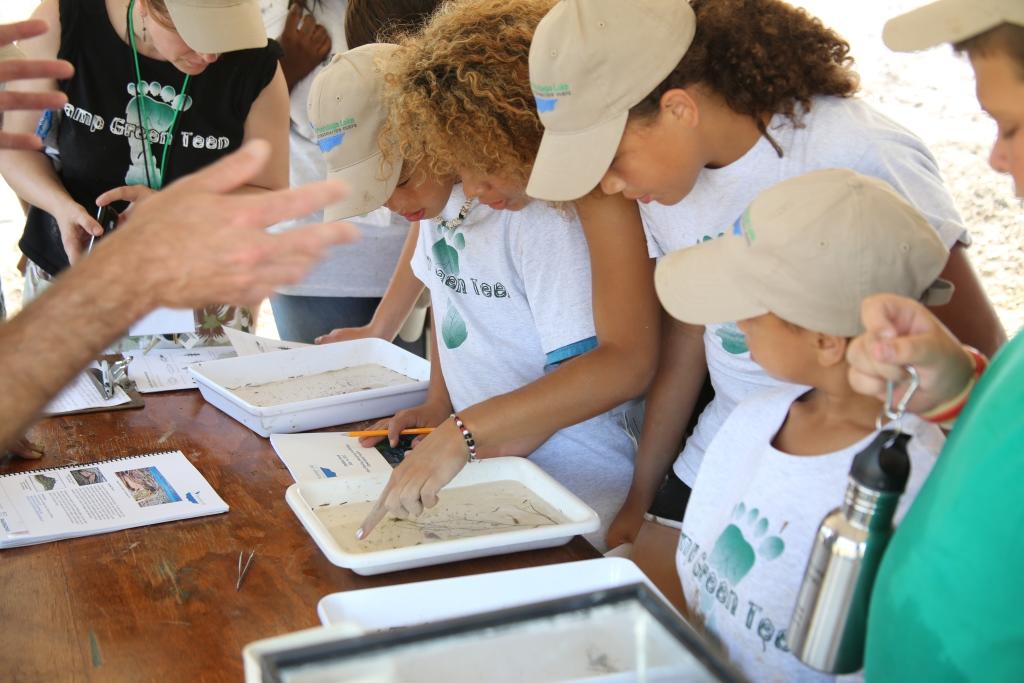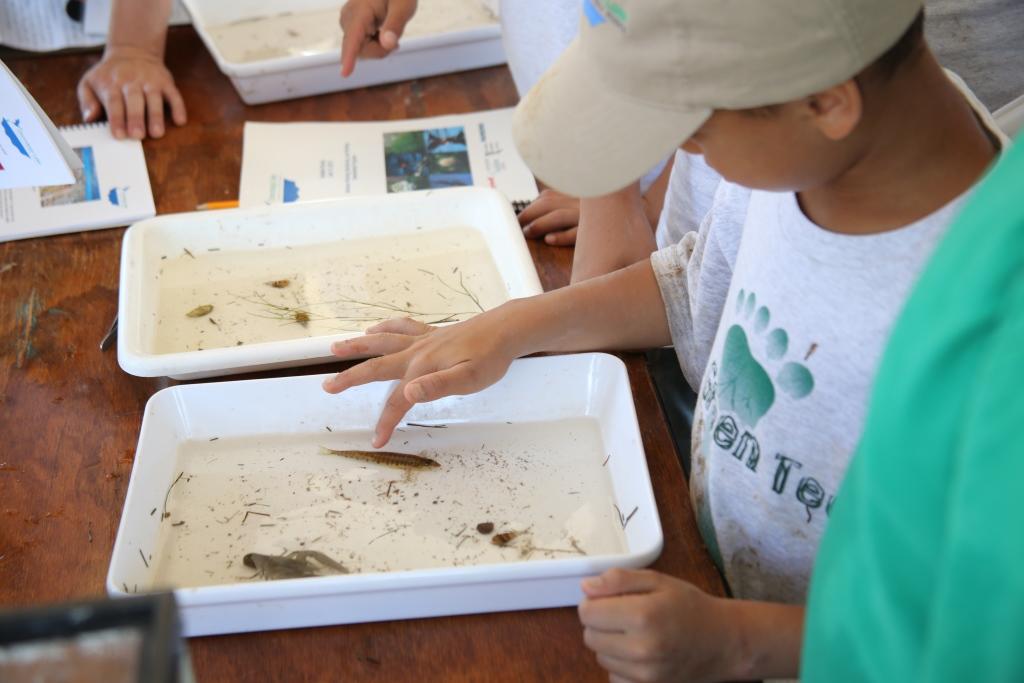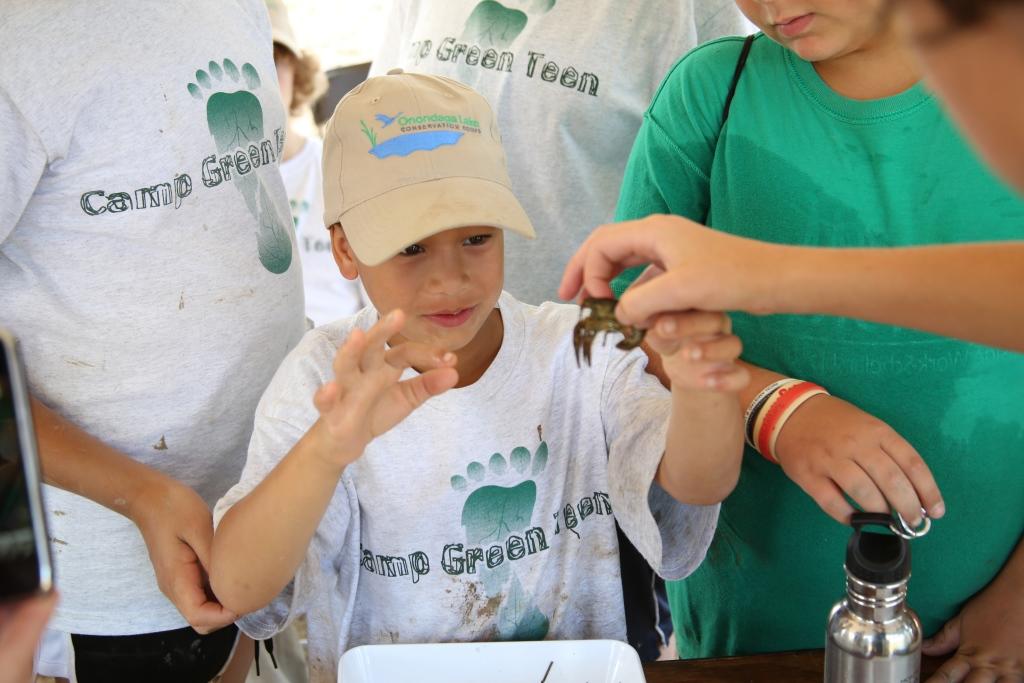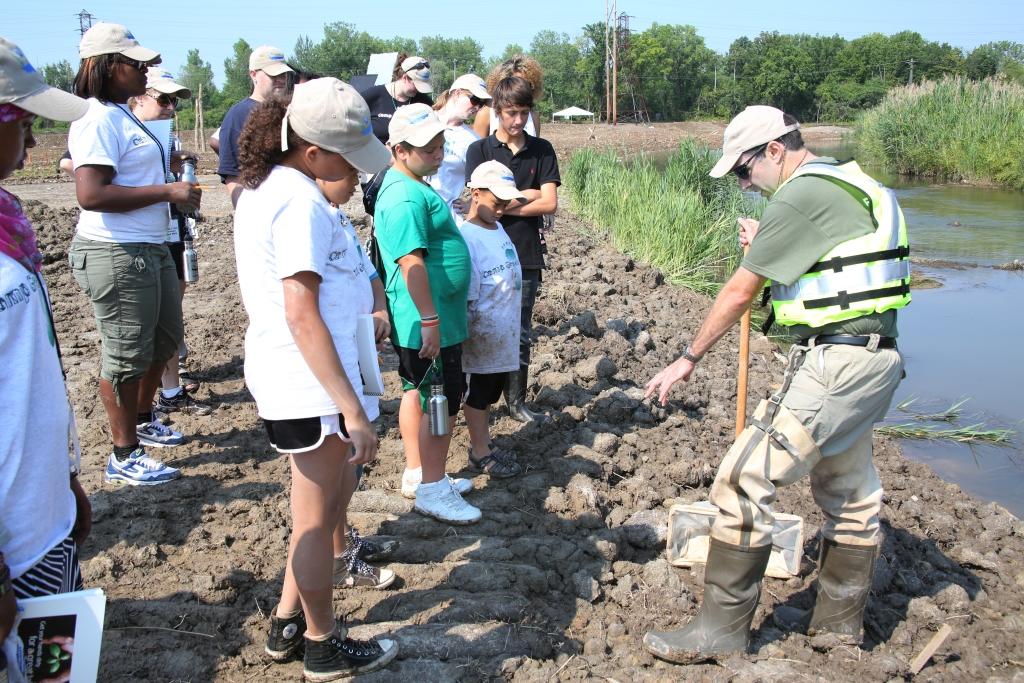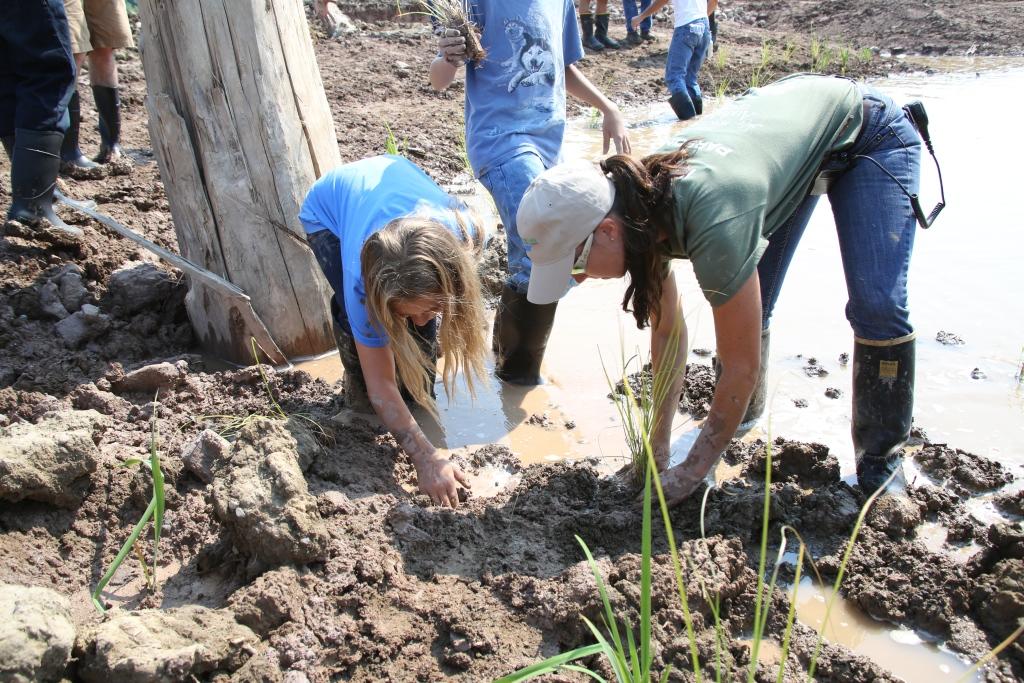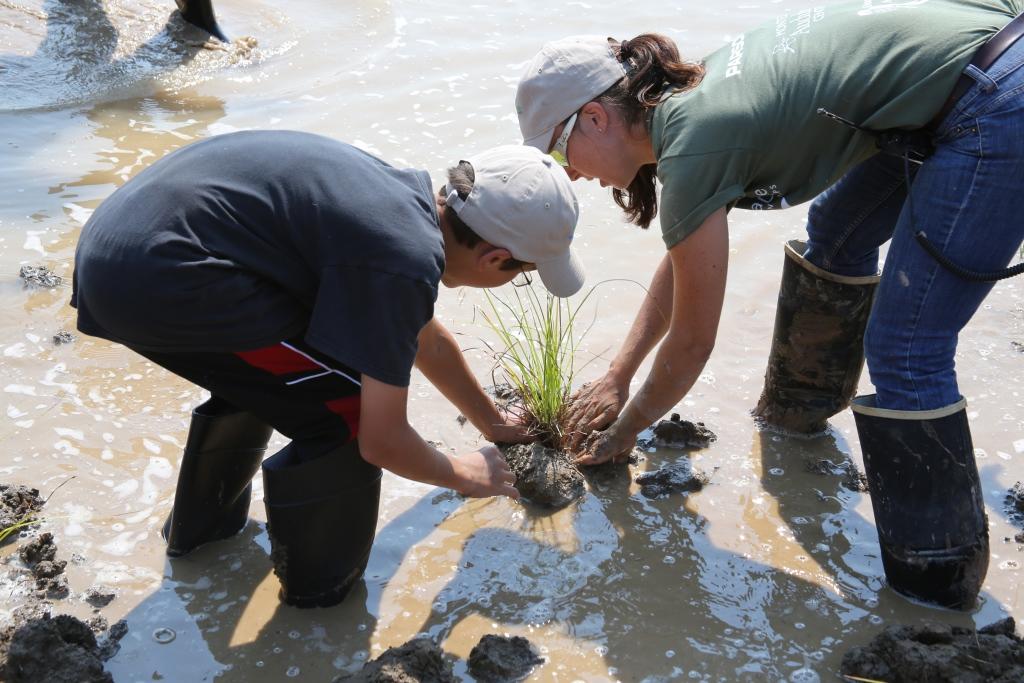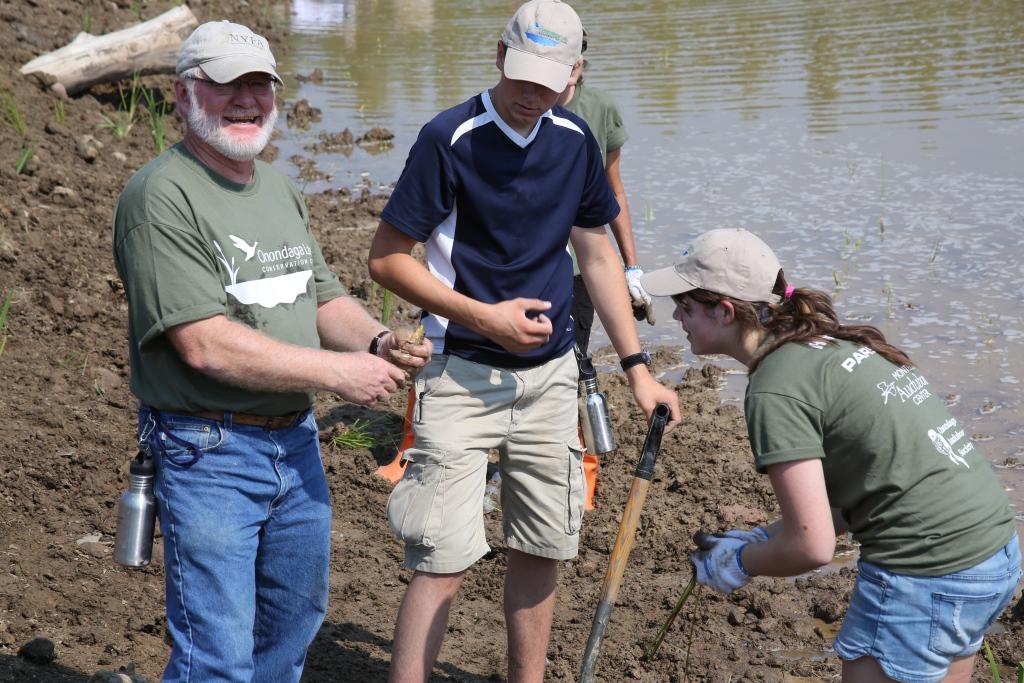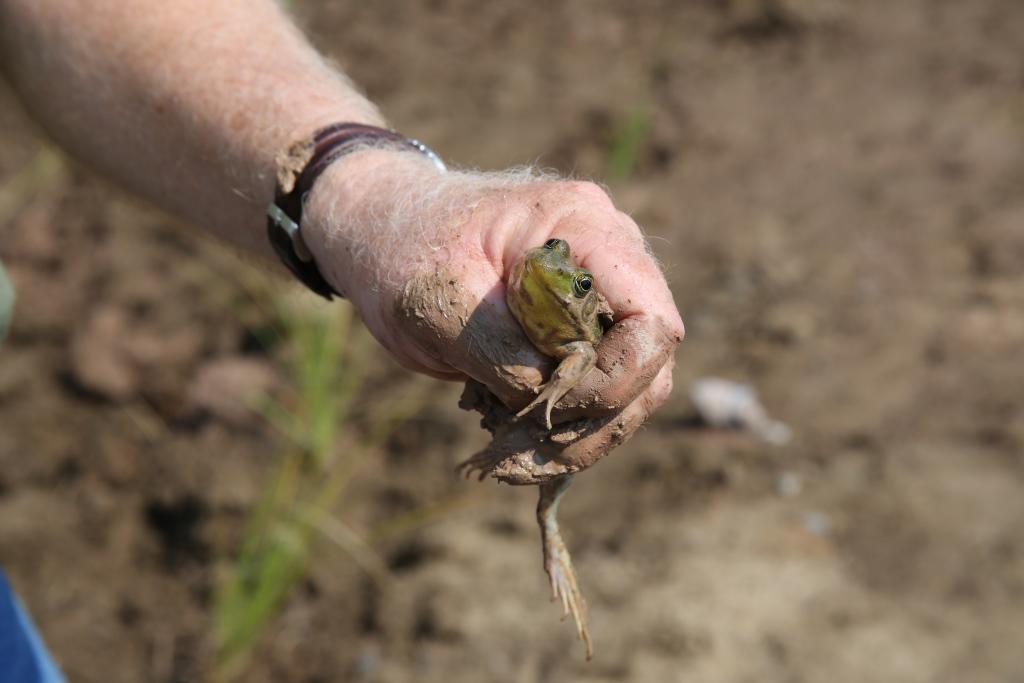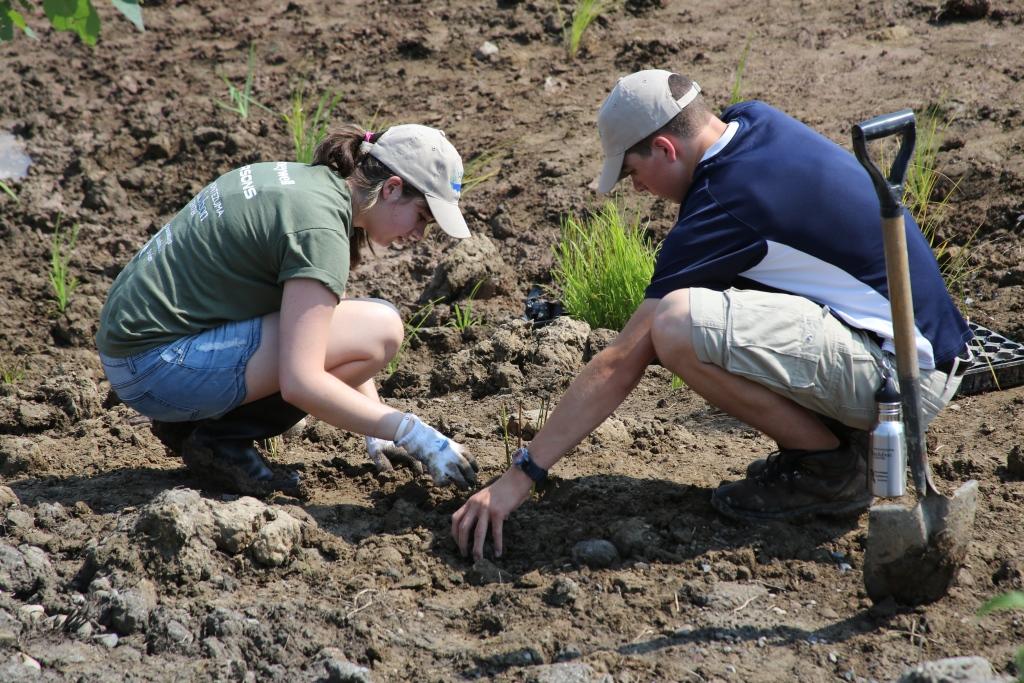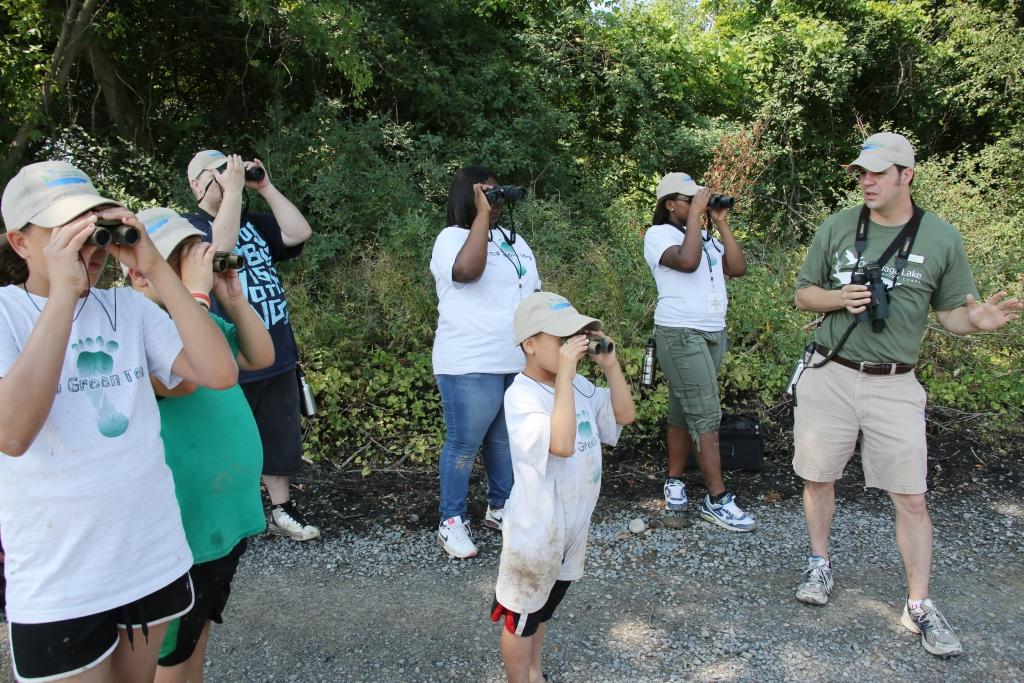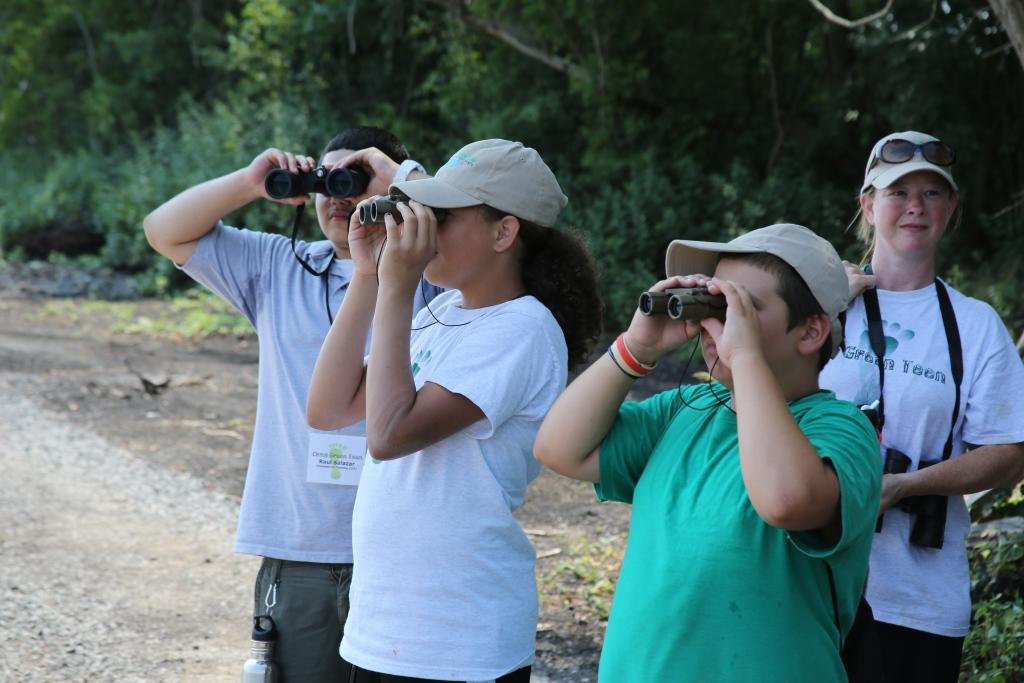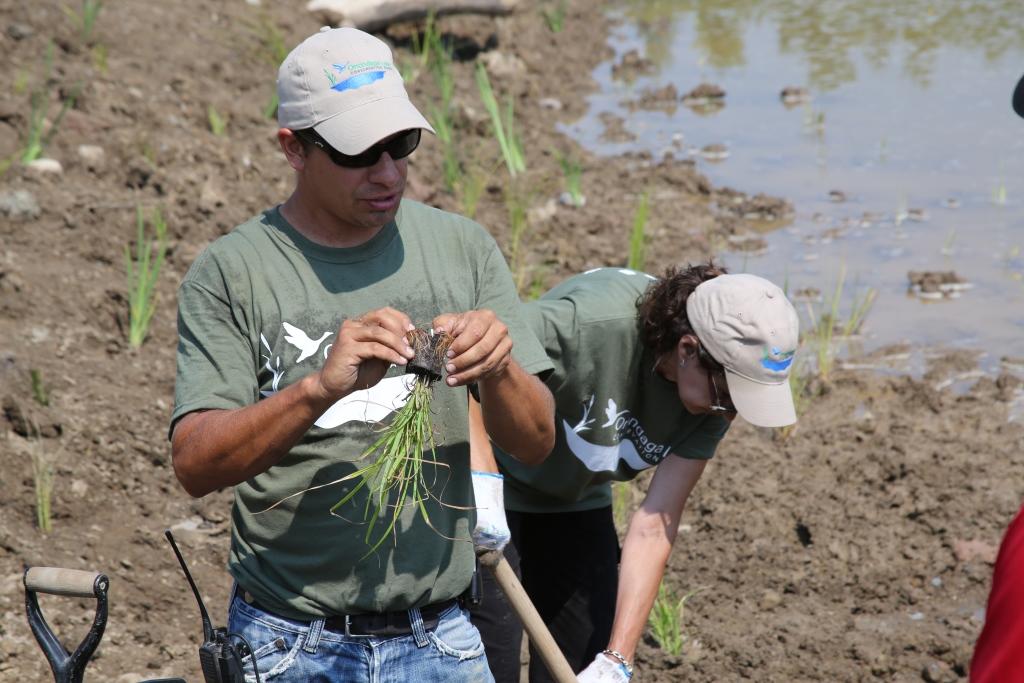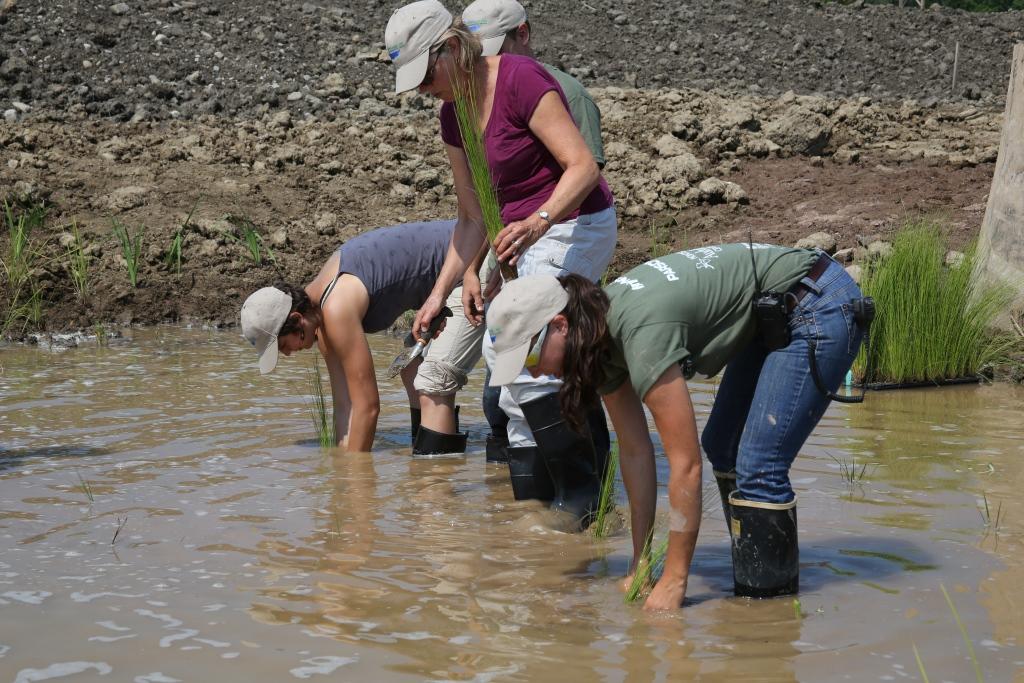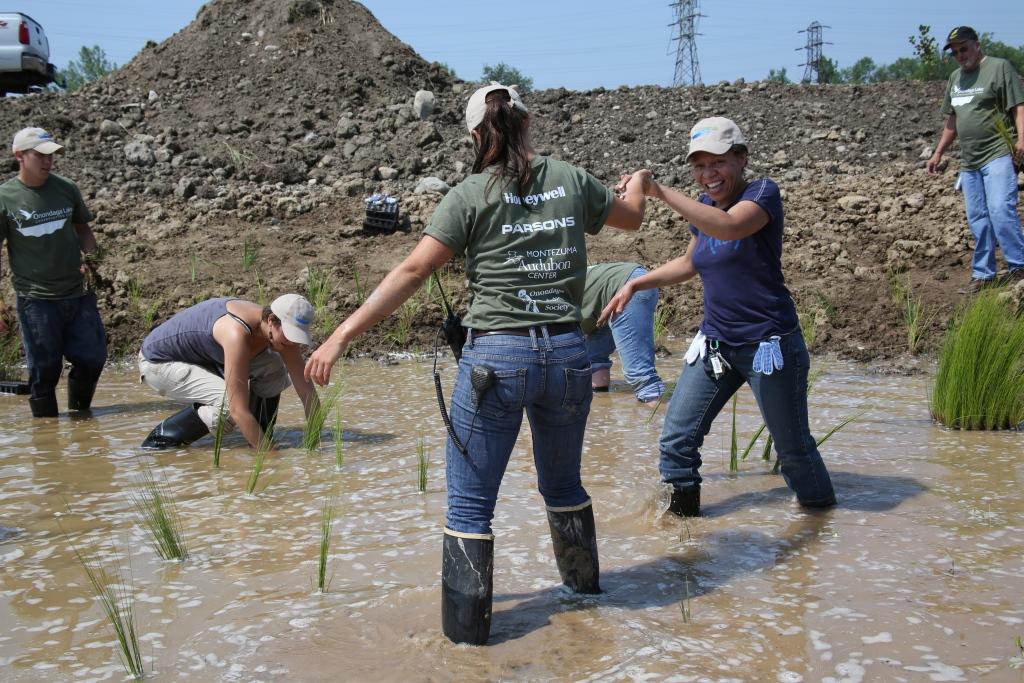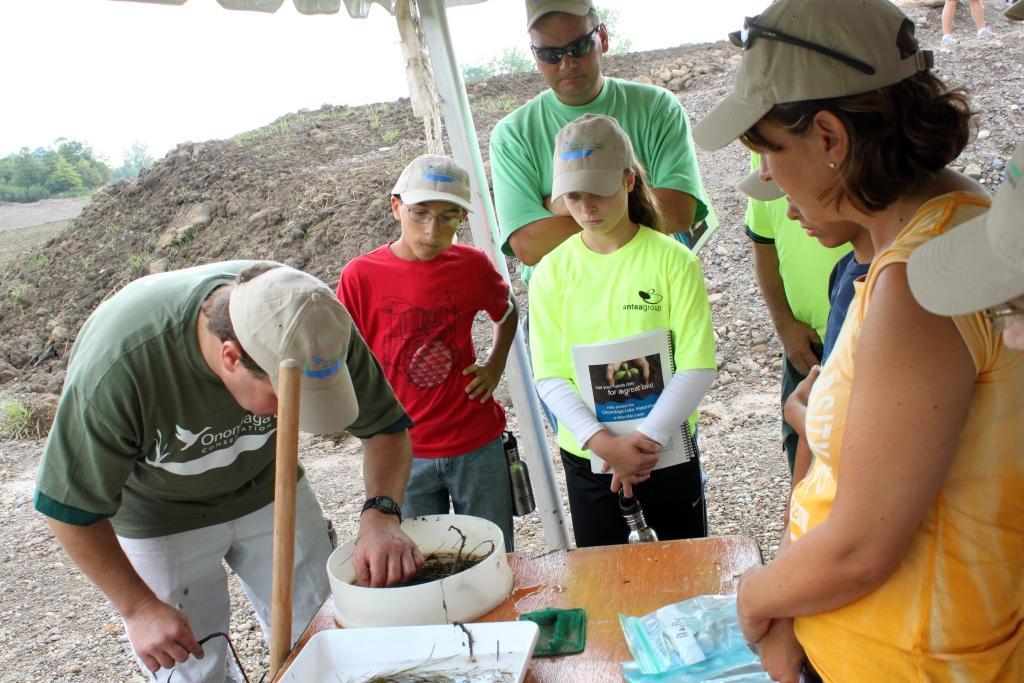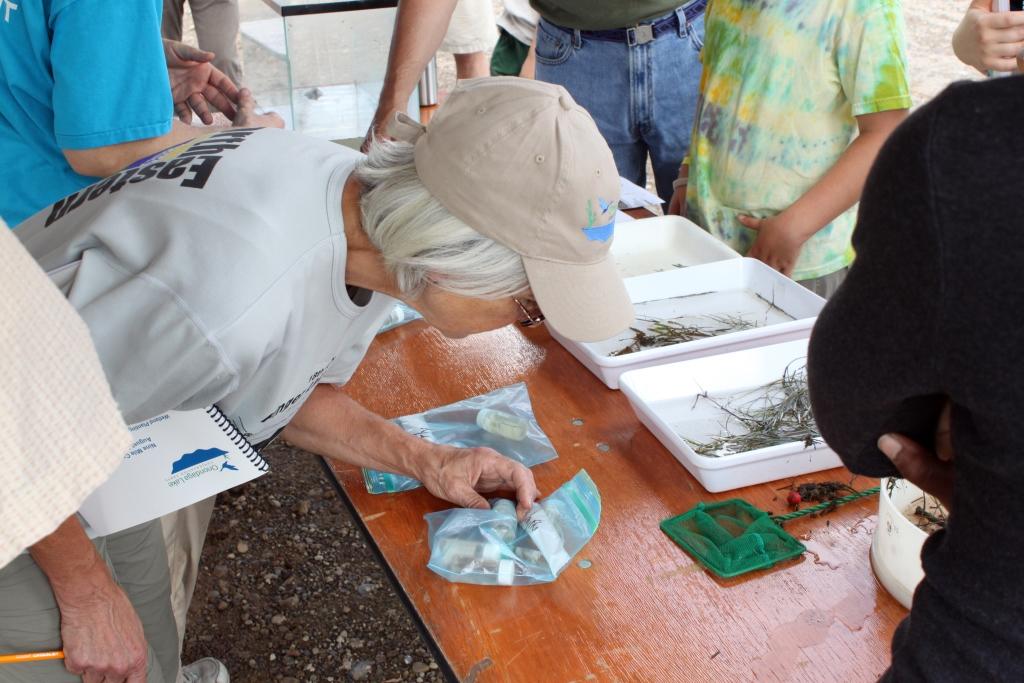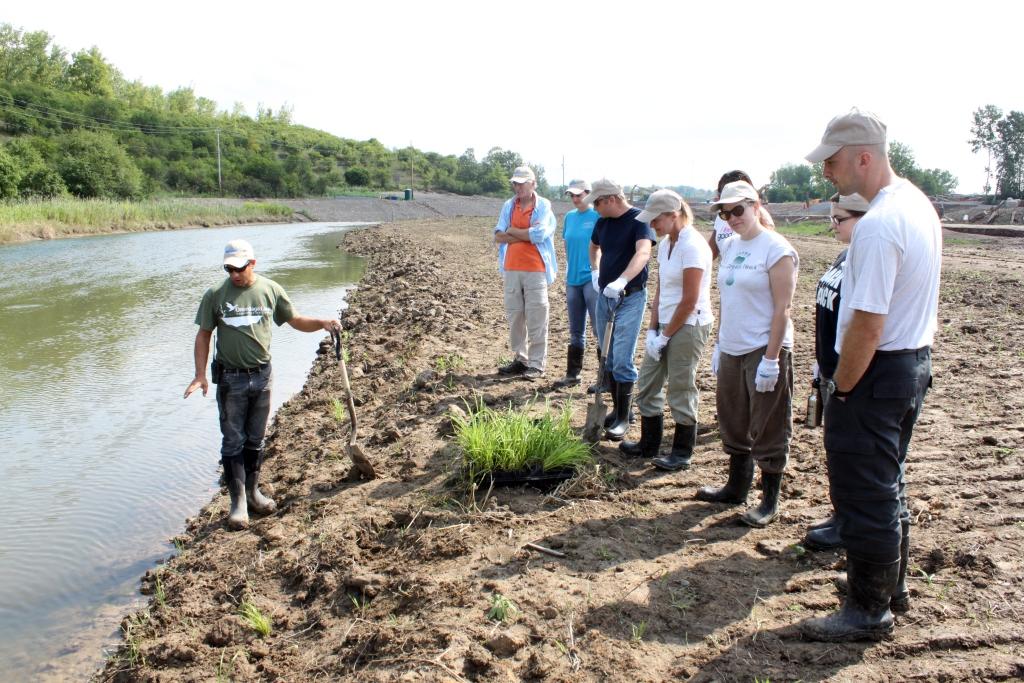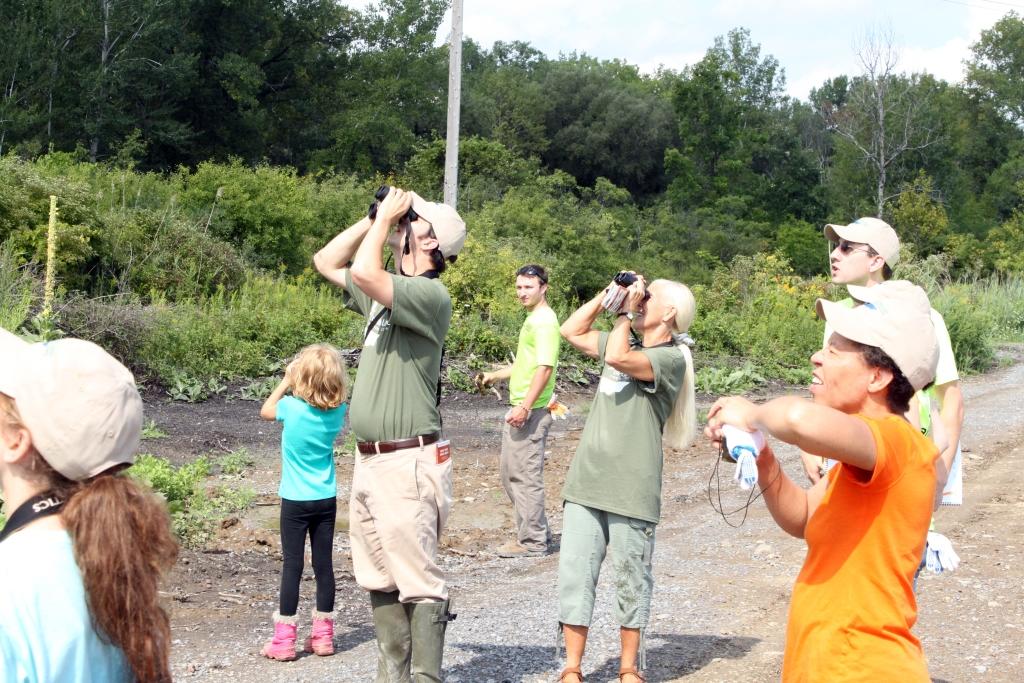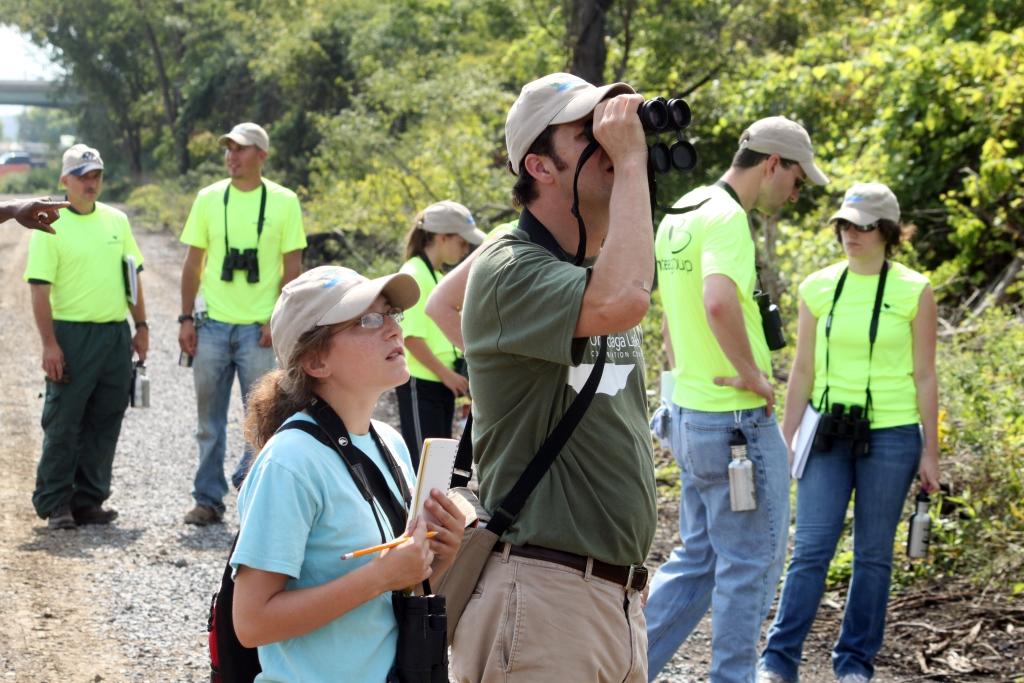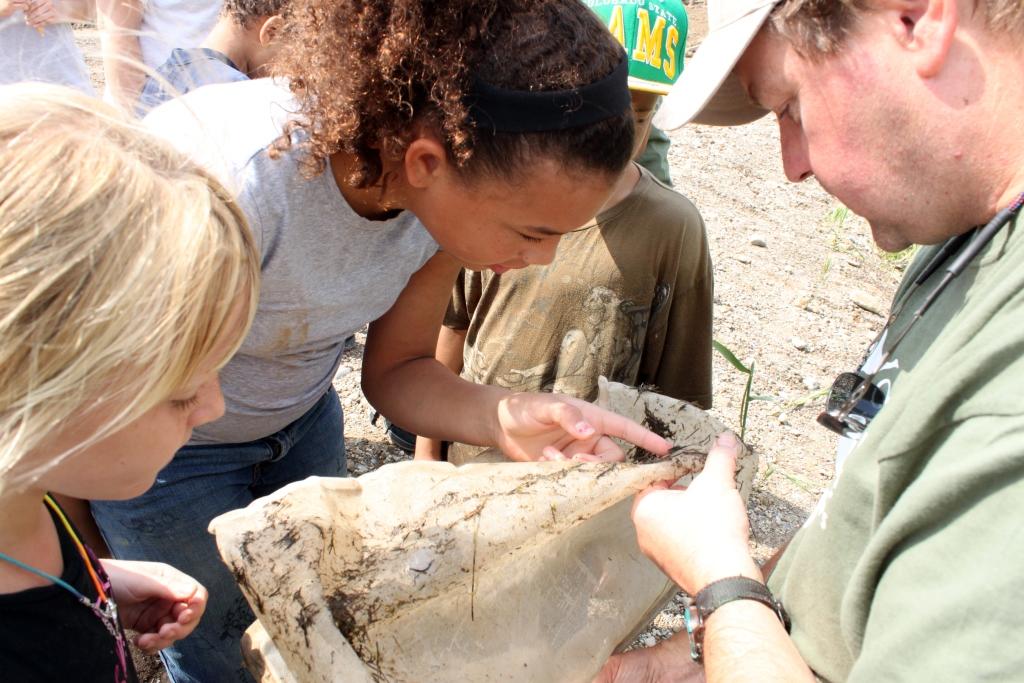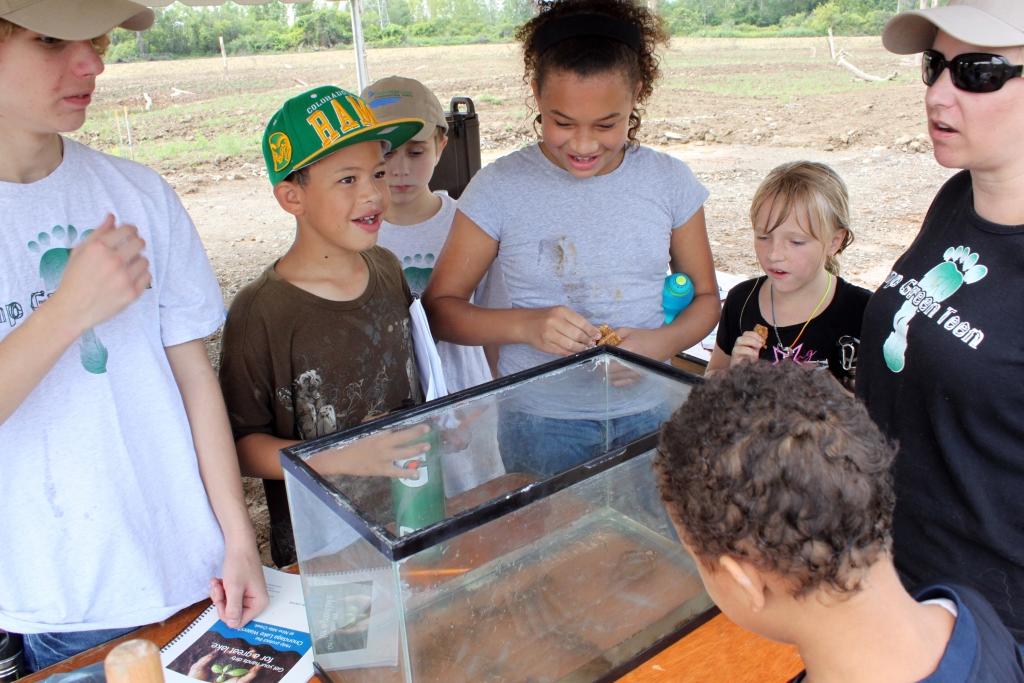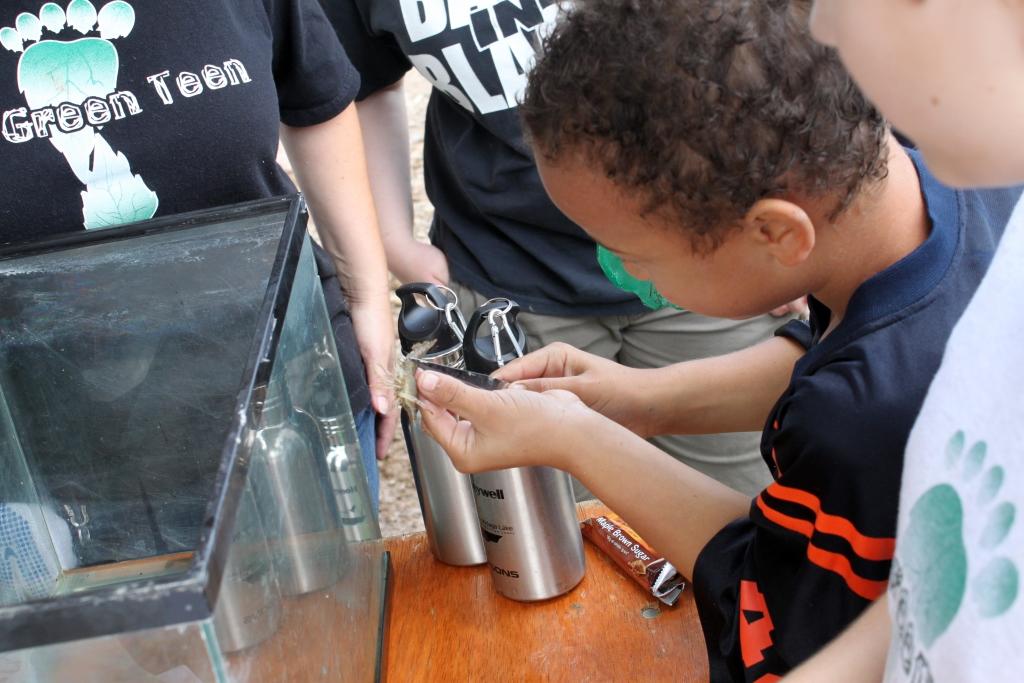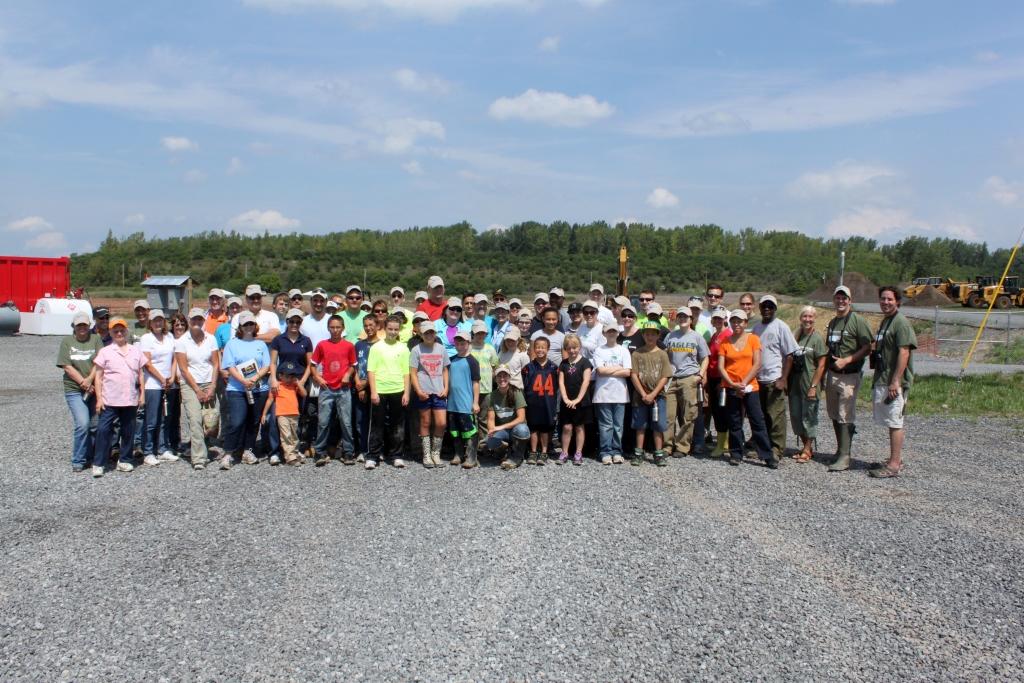For more photos of the habitat restoration and programming happening at Onondaga Lake, click here.
Lake Habitat, September 2016
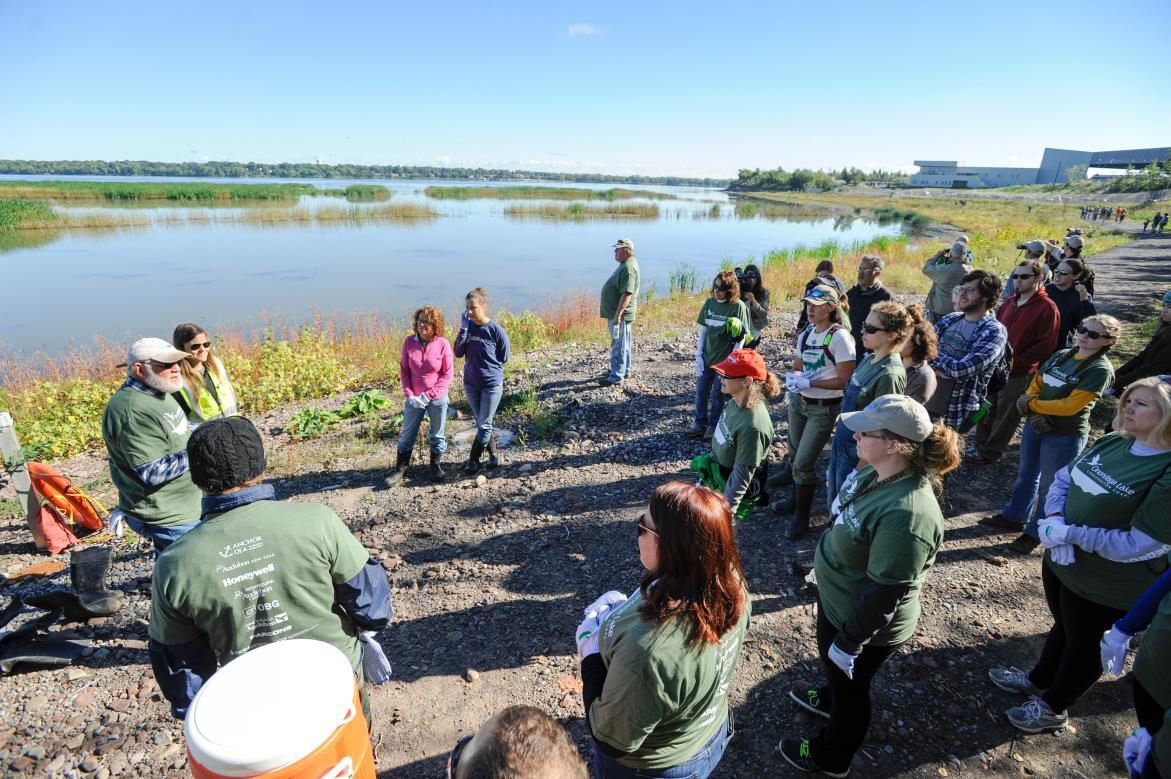
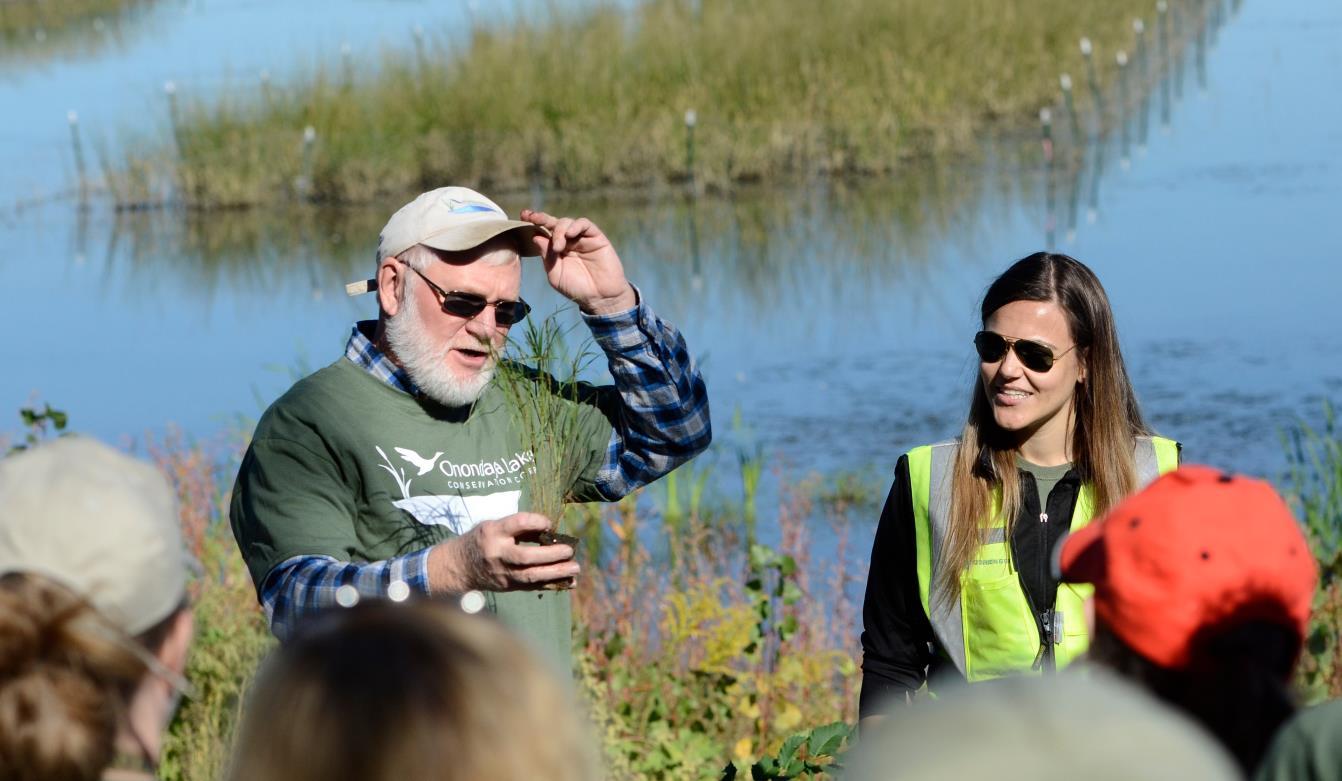
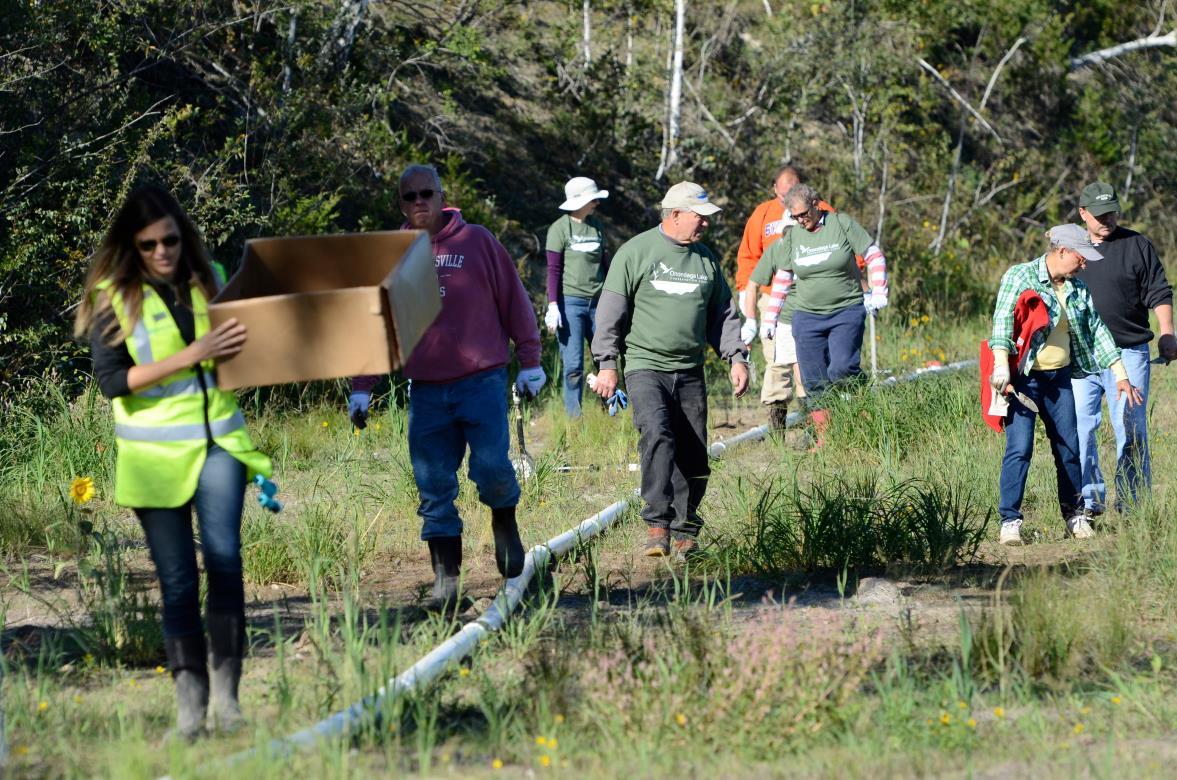
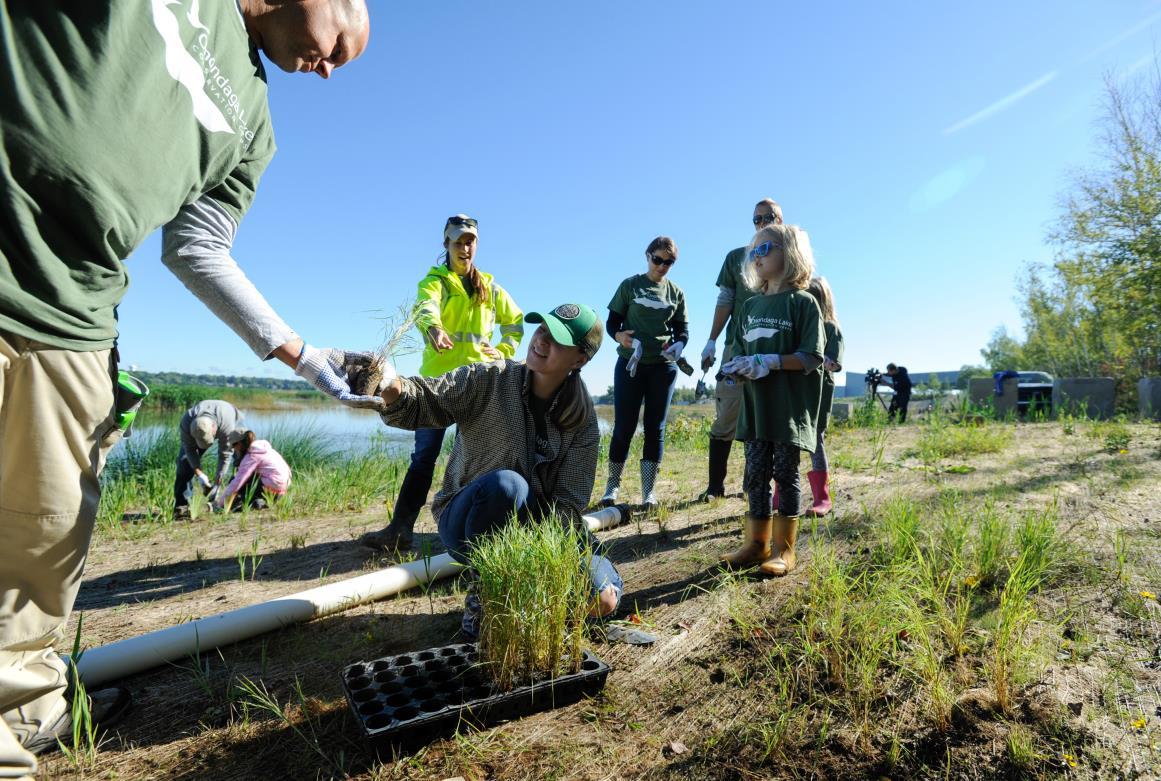
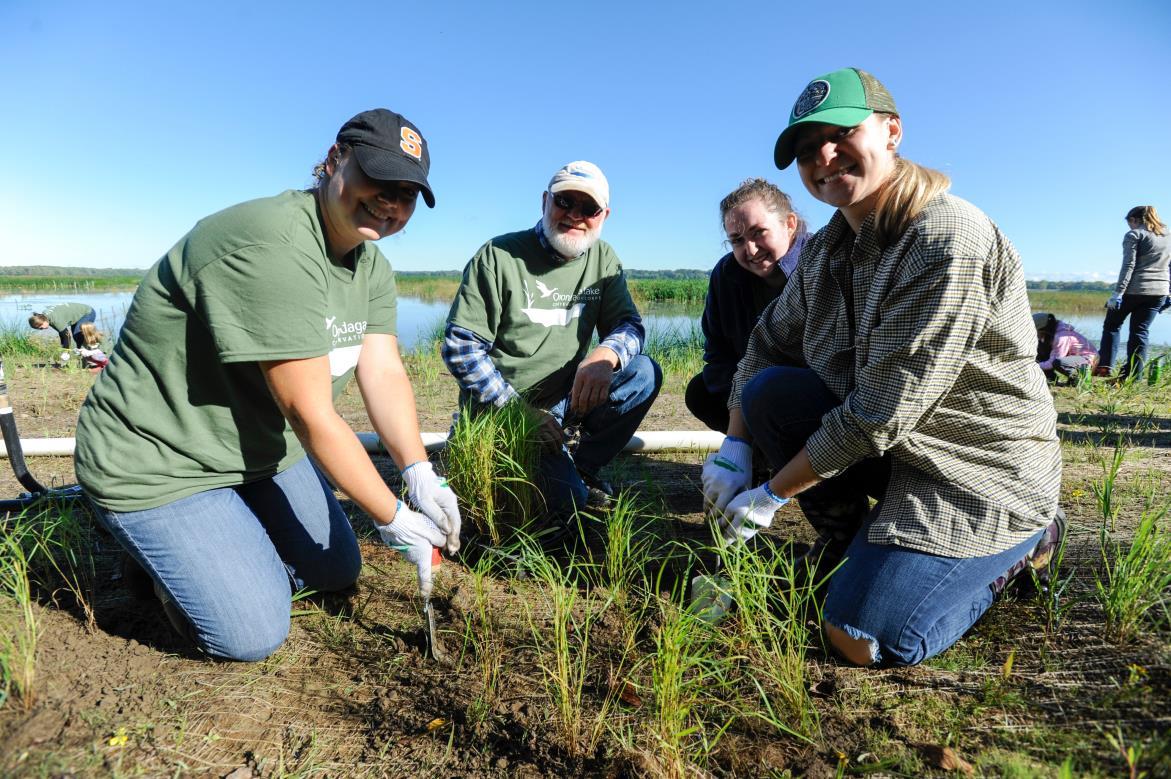
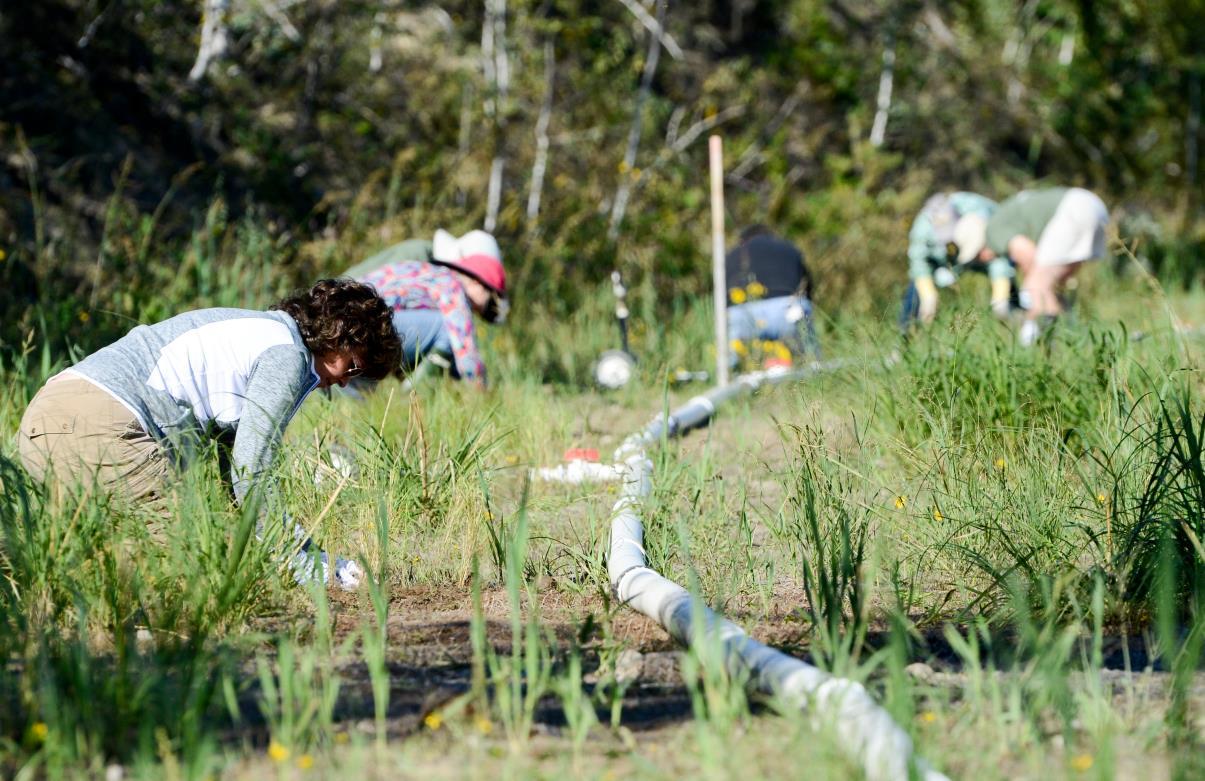
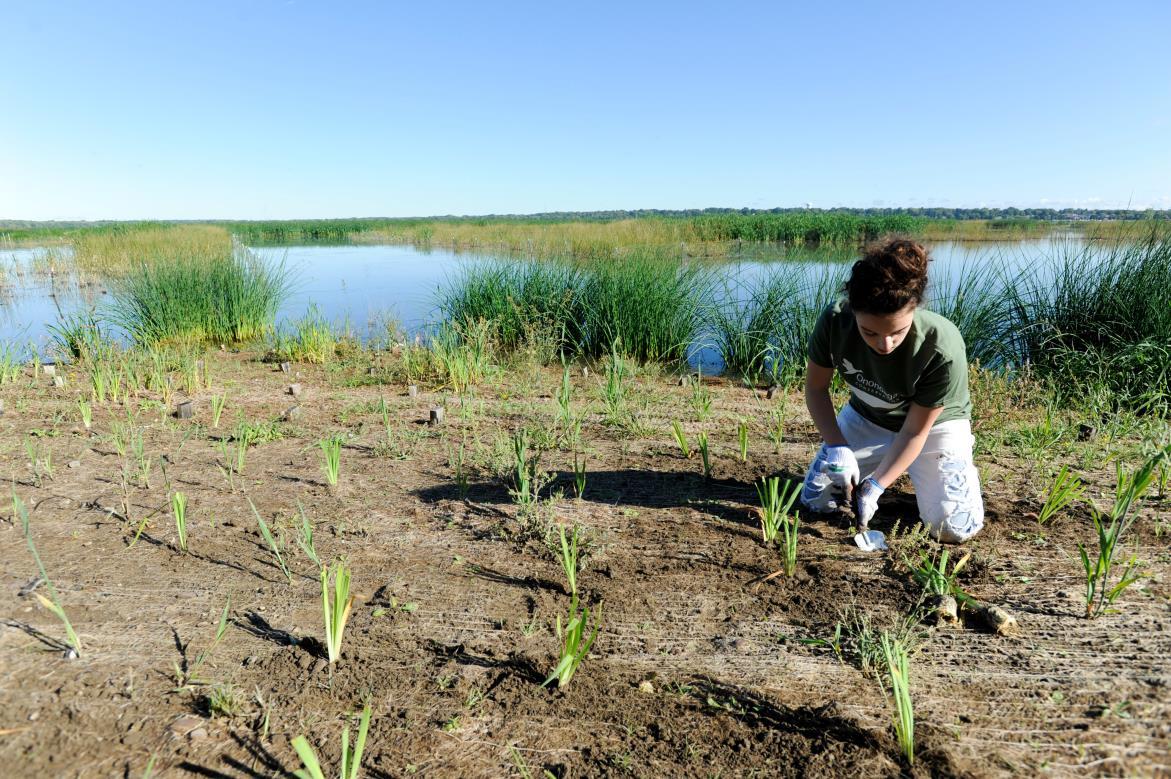
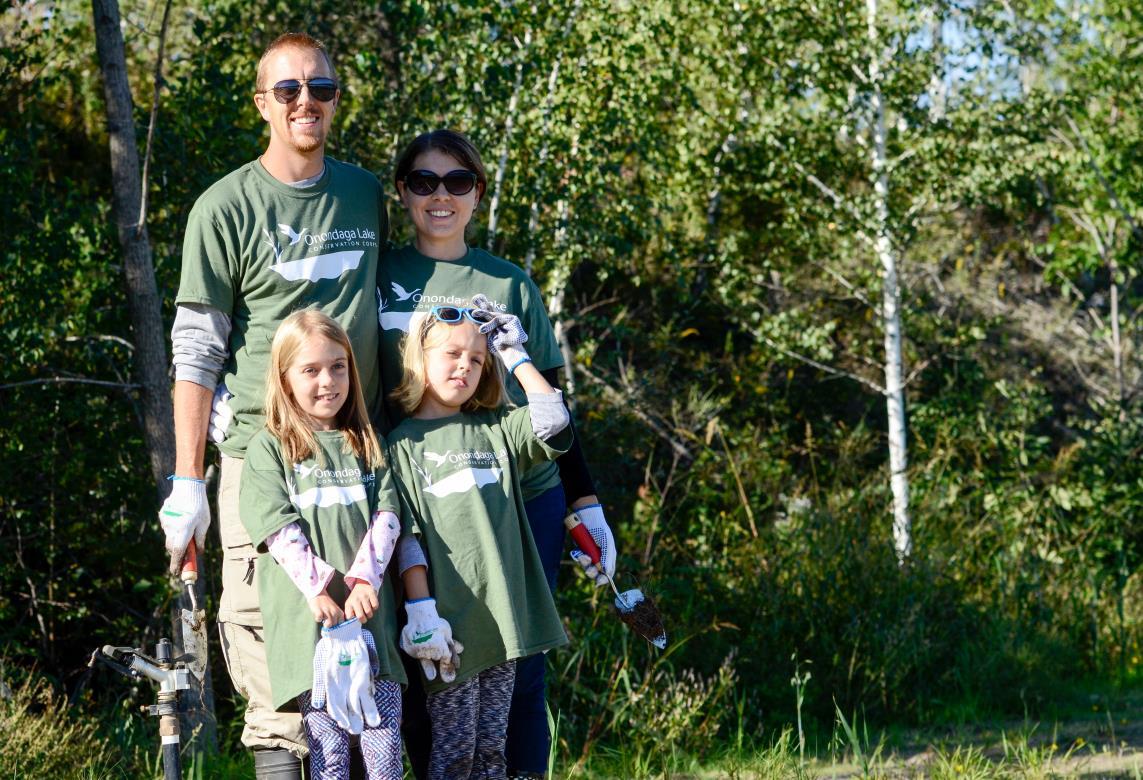
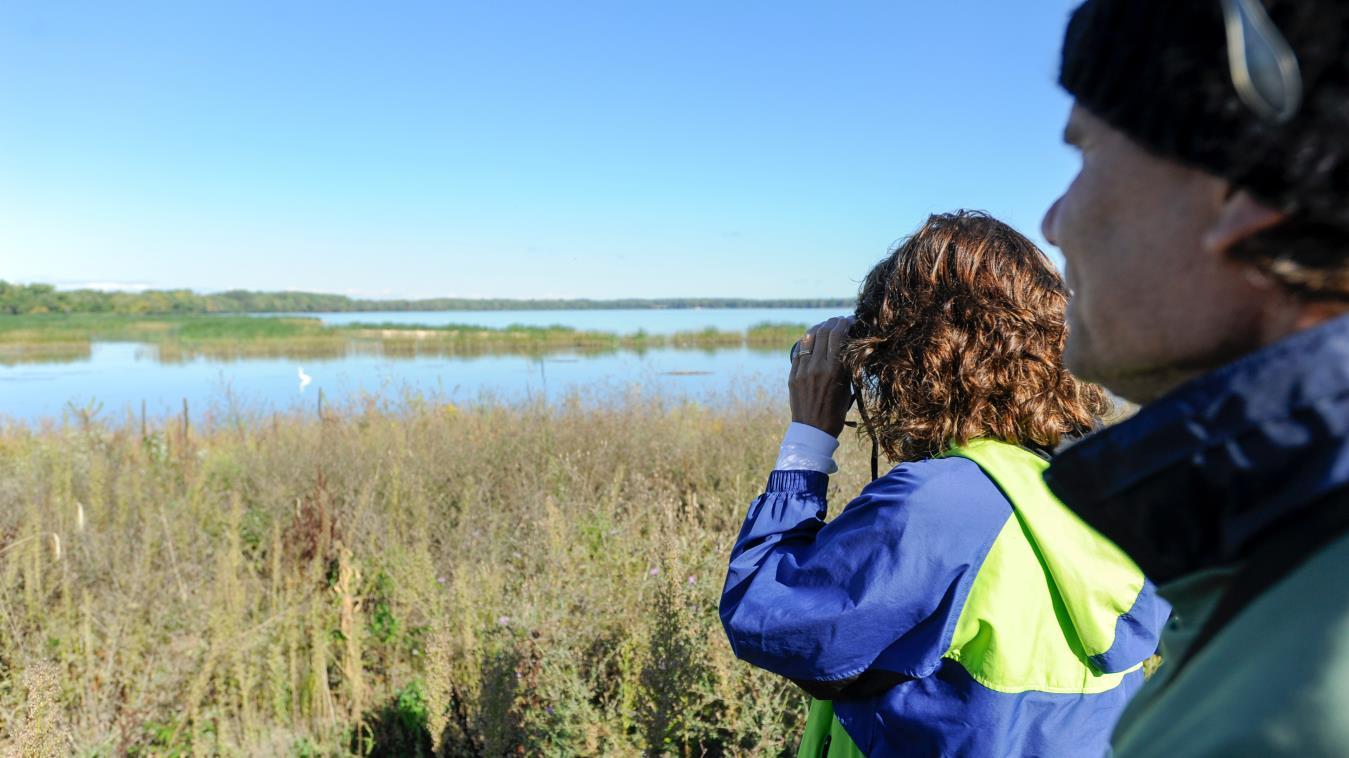
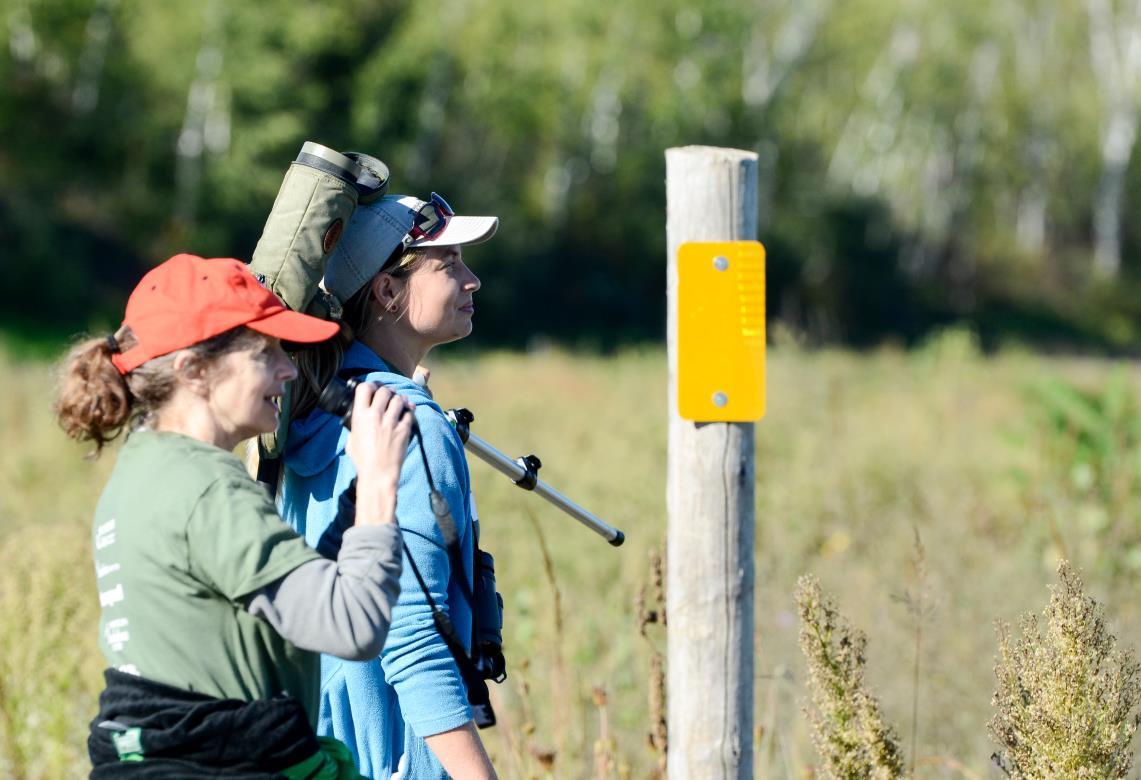
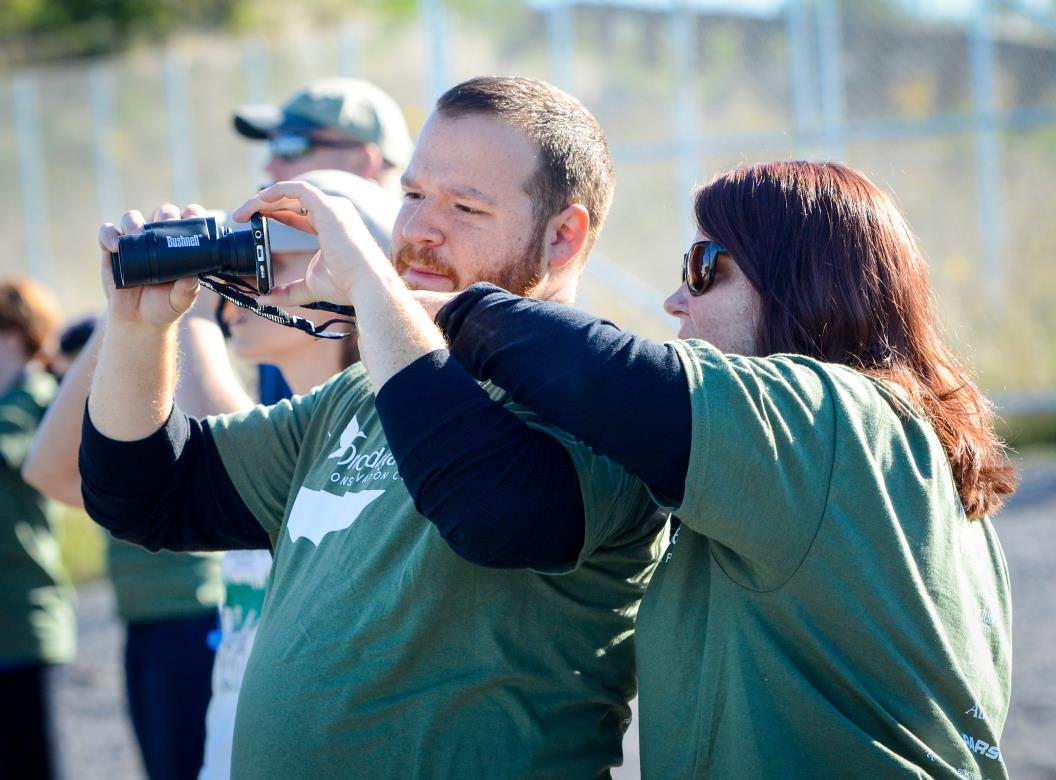
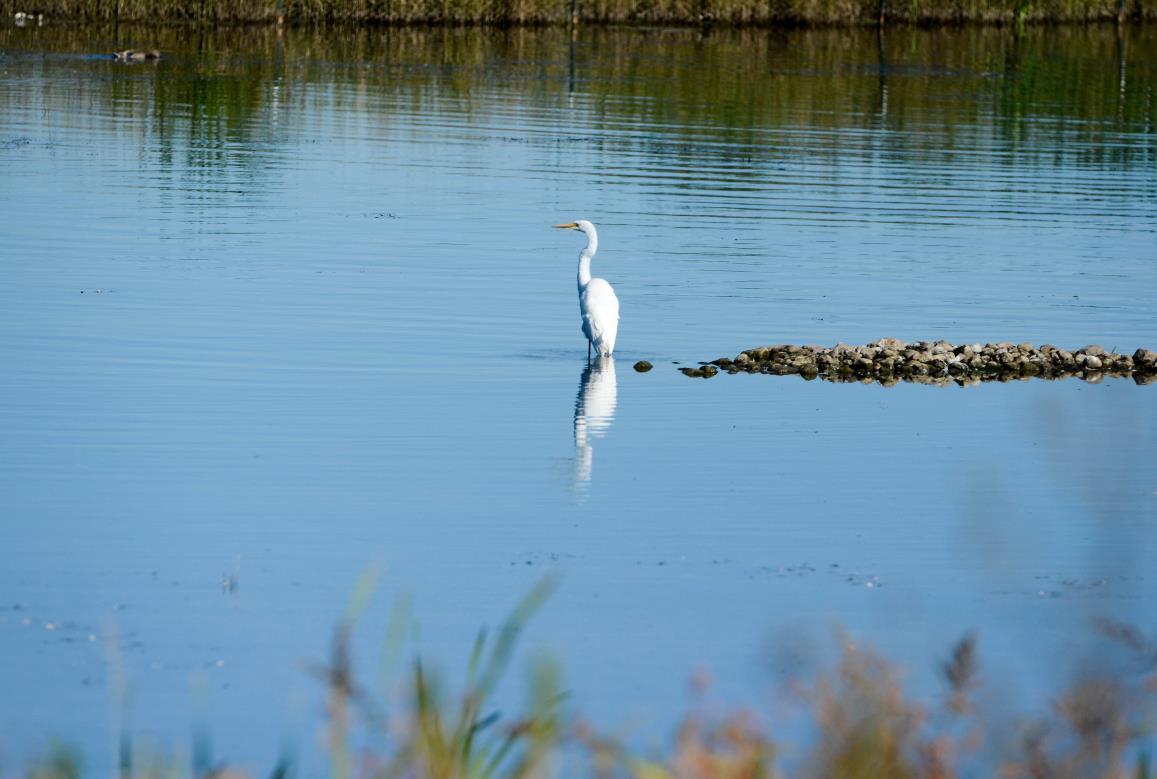
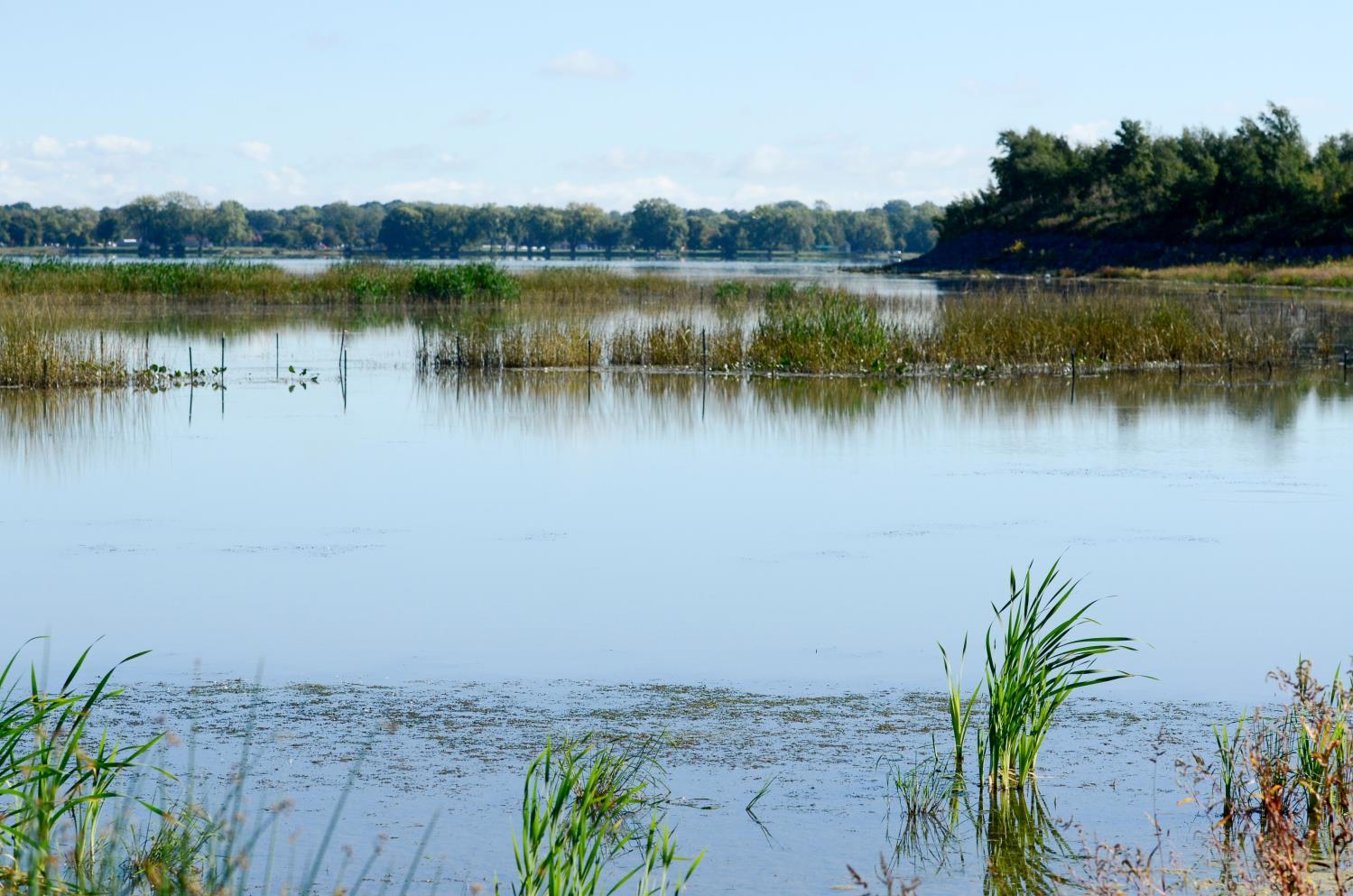
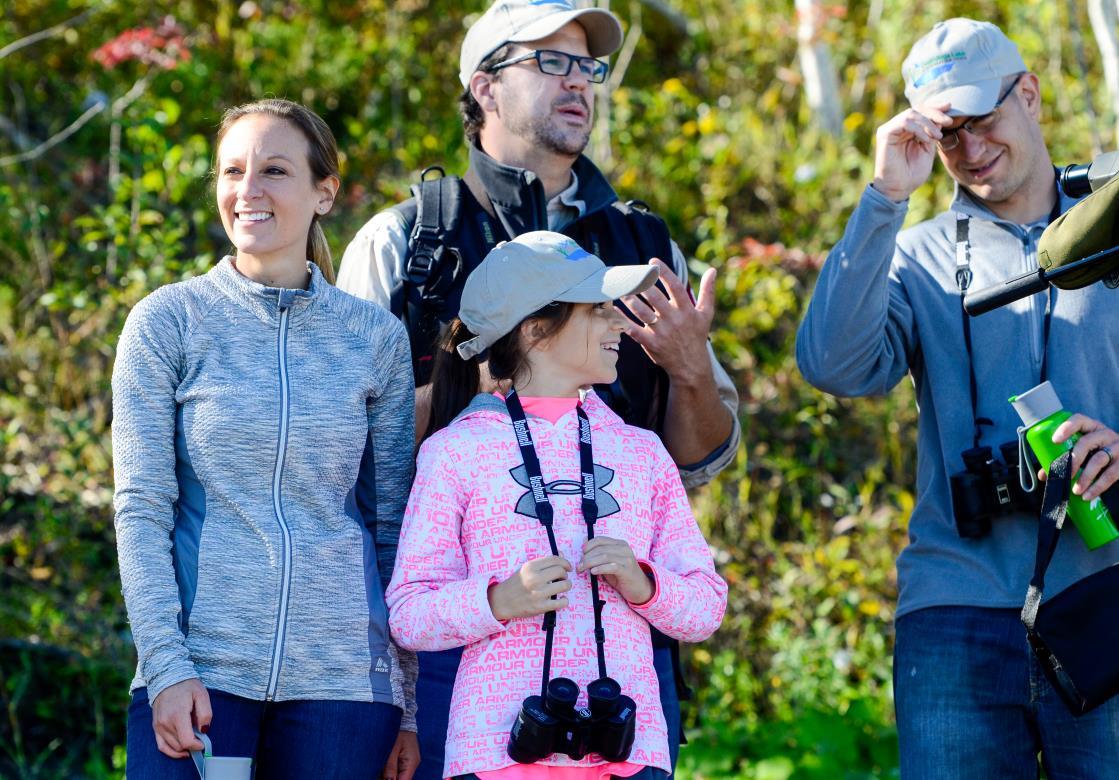
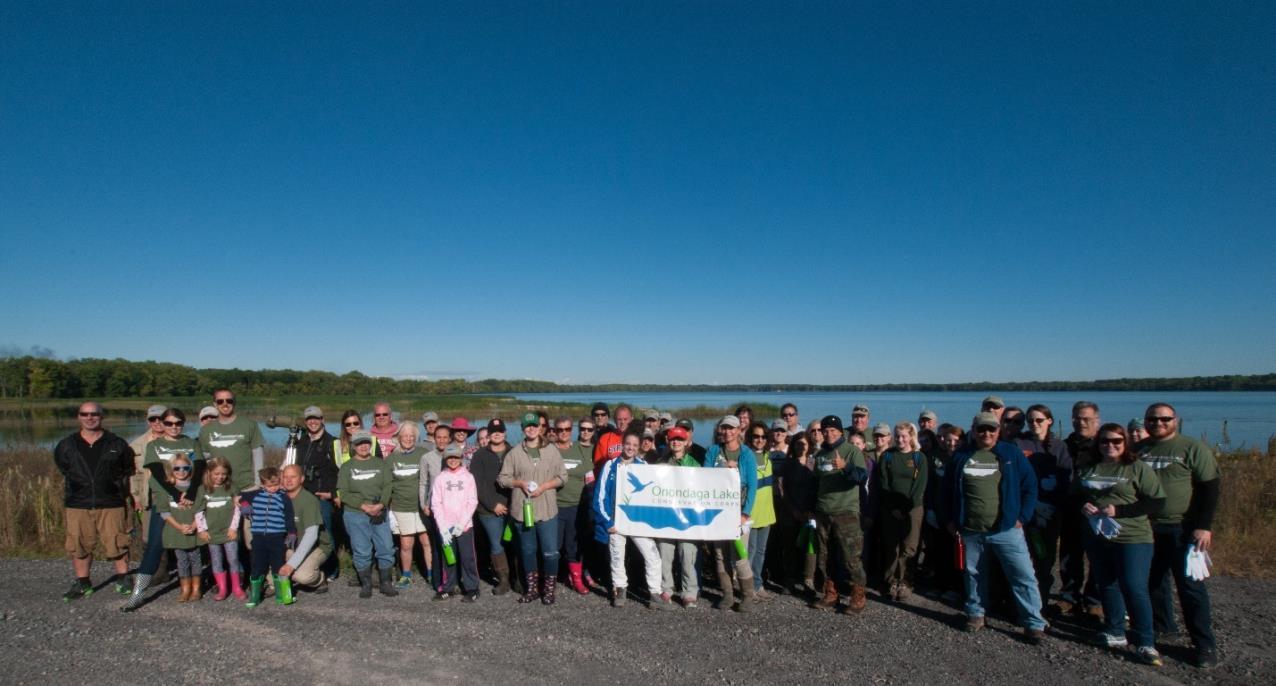
1 of 15
Western Shoreline
-
June 2016
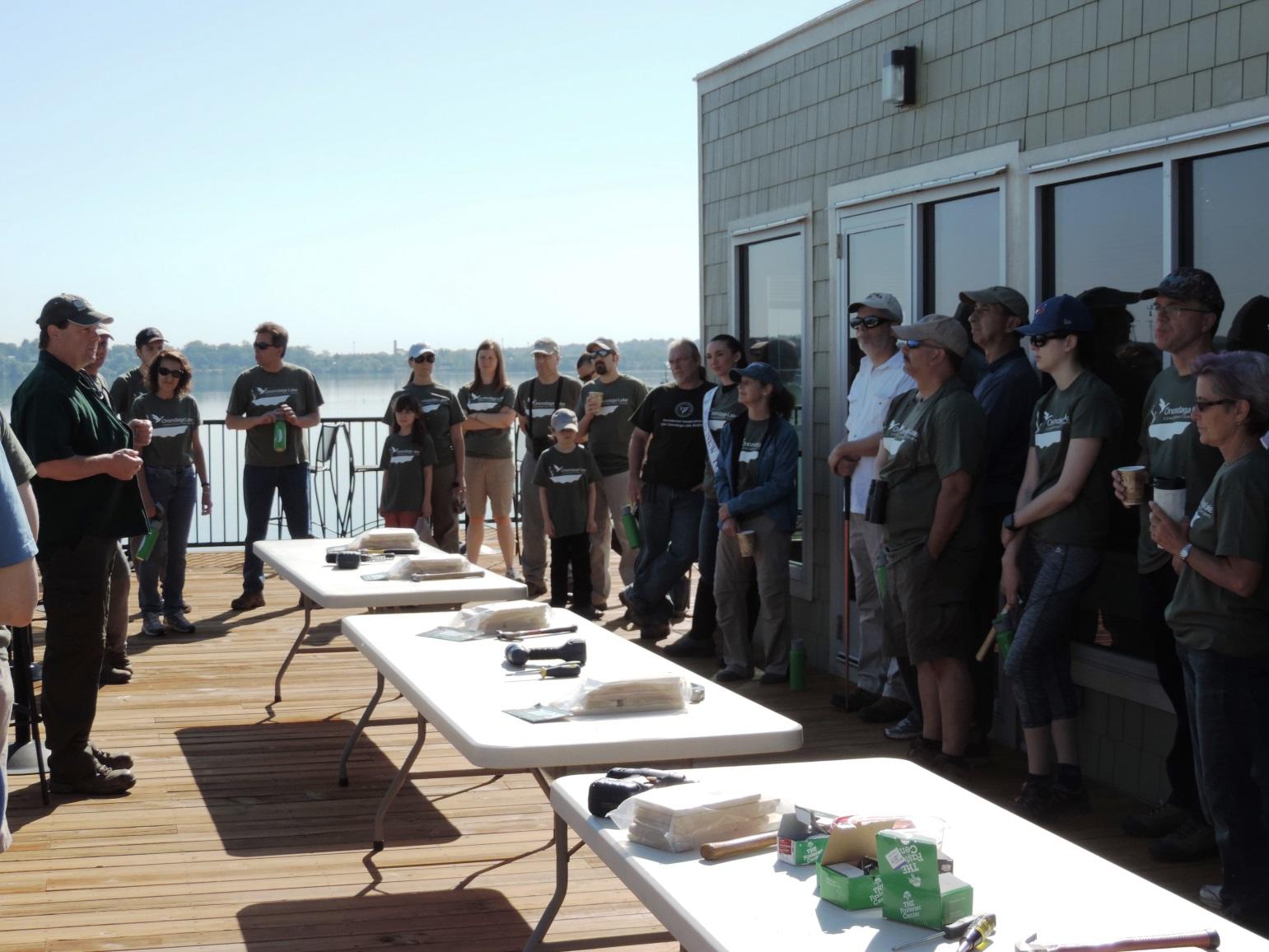 Steve Mooney (left), Project Scientist with OBG, briefs volunteers Saturday morning before activities begin to build and install habitat structures and engage in citizen science monitoring.
Steve Mooney (left), Project Scientist with OBG, briefs volunteers Saturday morning before activities begin to build and install habitat structures and engage in citizen science monitoring.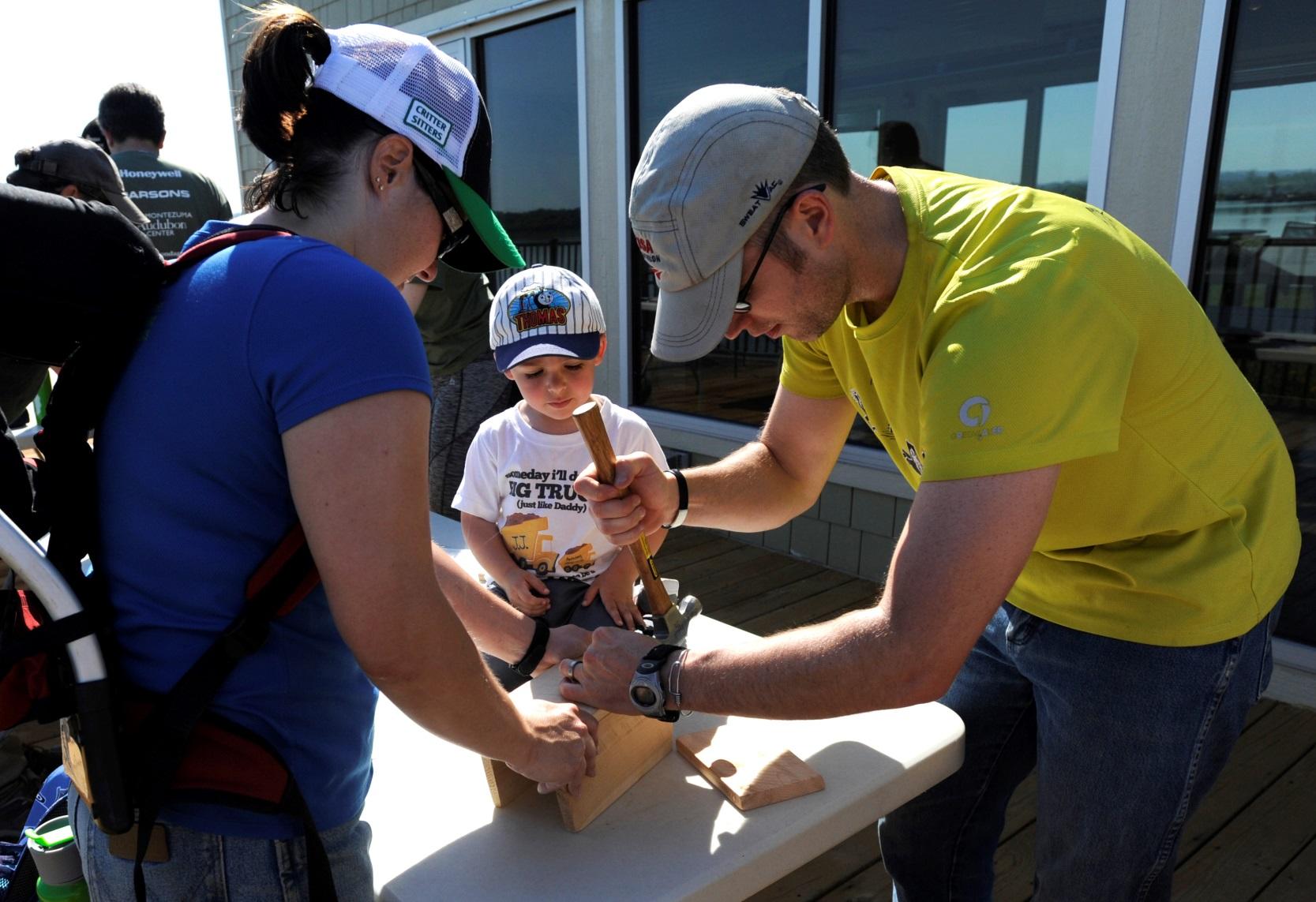 Two-year-old JJ observes as Stacey Keefe and Ben Larsen, of North Syracuse, construct a nest box suitable for Eastern Bluebirds.
Two-year-old JJ observes as Stacey Keefe and Ben Larsen, of North Syracuse, construct a nest box suitable for Eastern Bluebirds.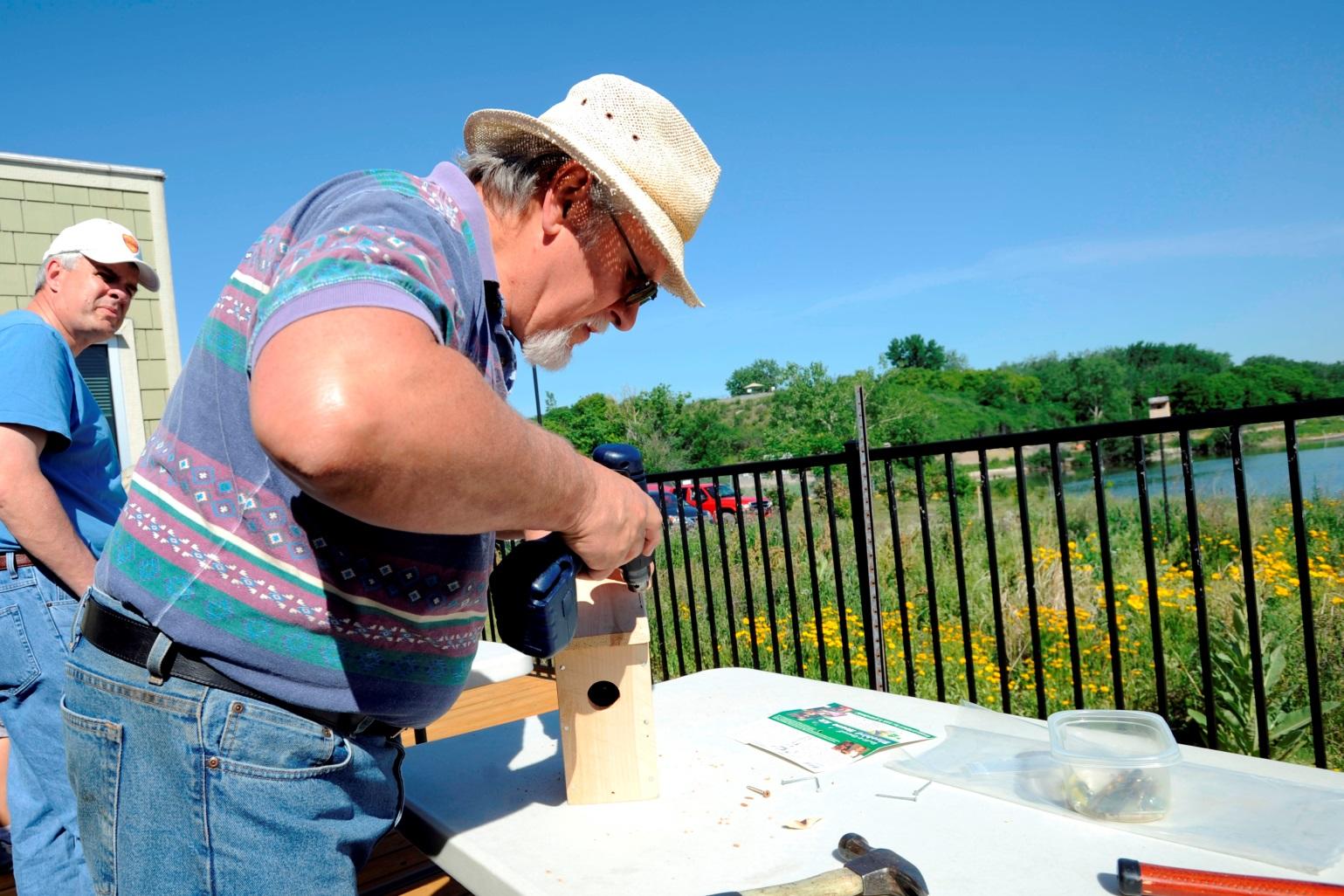 Nest boxes are built in dimensions that support particular species. Placing Eastern Bluebird boxes in fields and grassland areas has helped recovery of this species in recent years.
Nest boxes are built in dimensions that support particular species. Placing Eastern Bluebird boxes in fields and grassland areas has helped recovery of this species in recent years.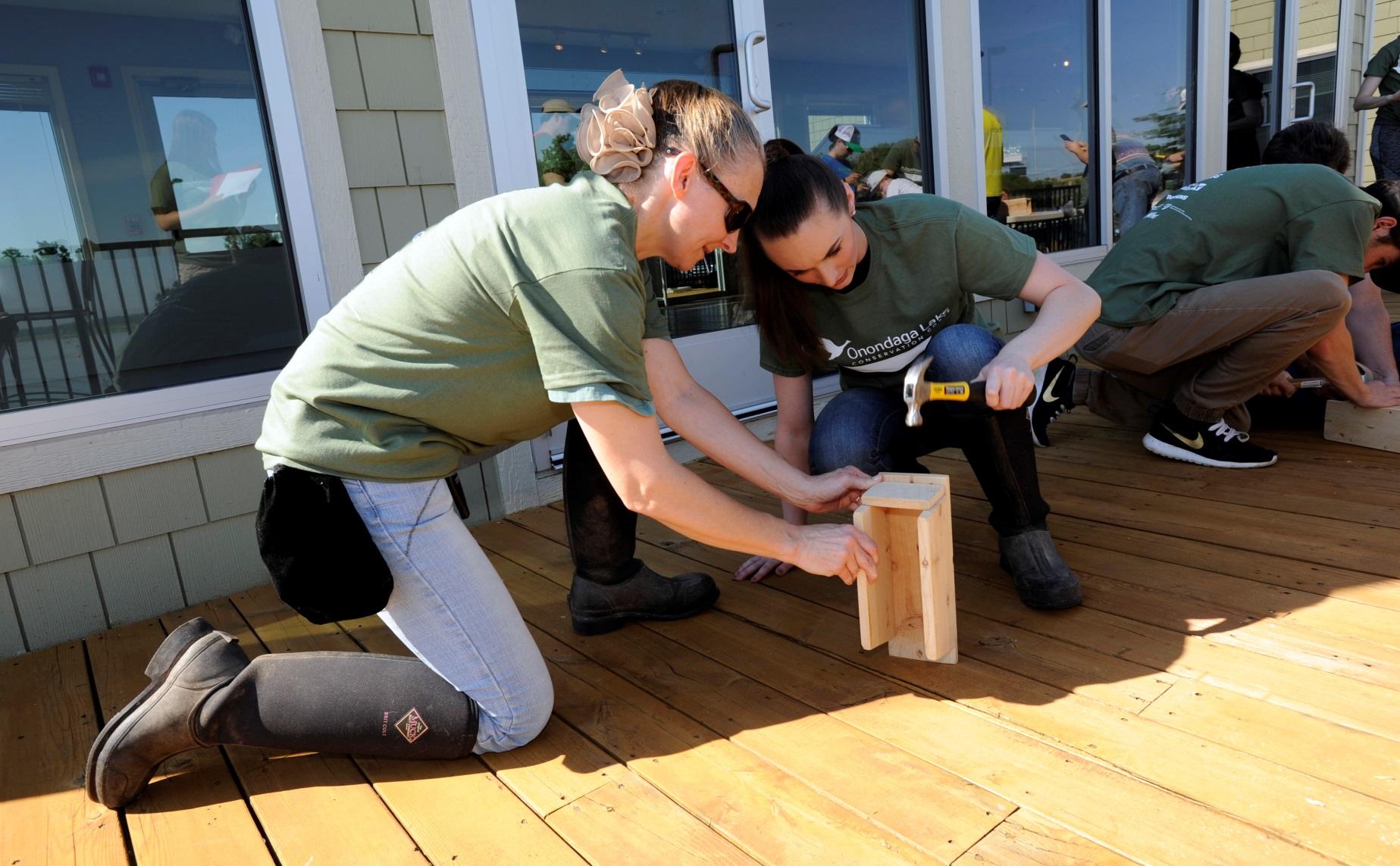 Tracey (left) and daughter Corrin Stellakis, from Bridgeport, NY, assemble a bird box they will later install along the western shoreline of Onondaga Lake.
Tracey (left) and daughter Corrin Stellakis, from Bridgeport, NY, assemble a bird box they will later install along the western shoreline of Onondaga Lake.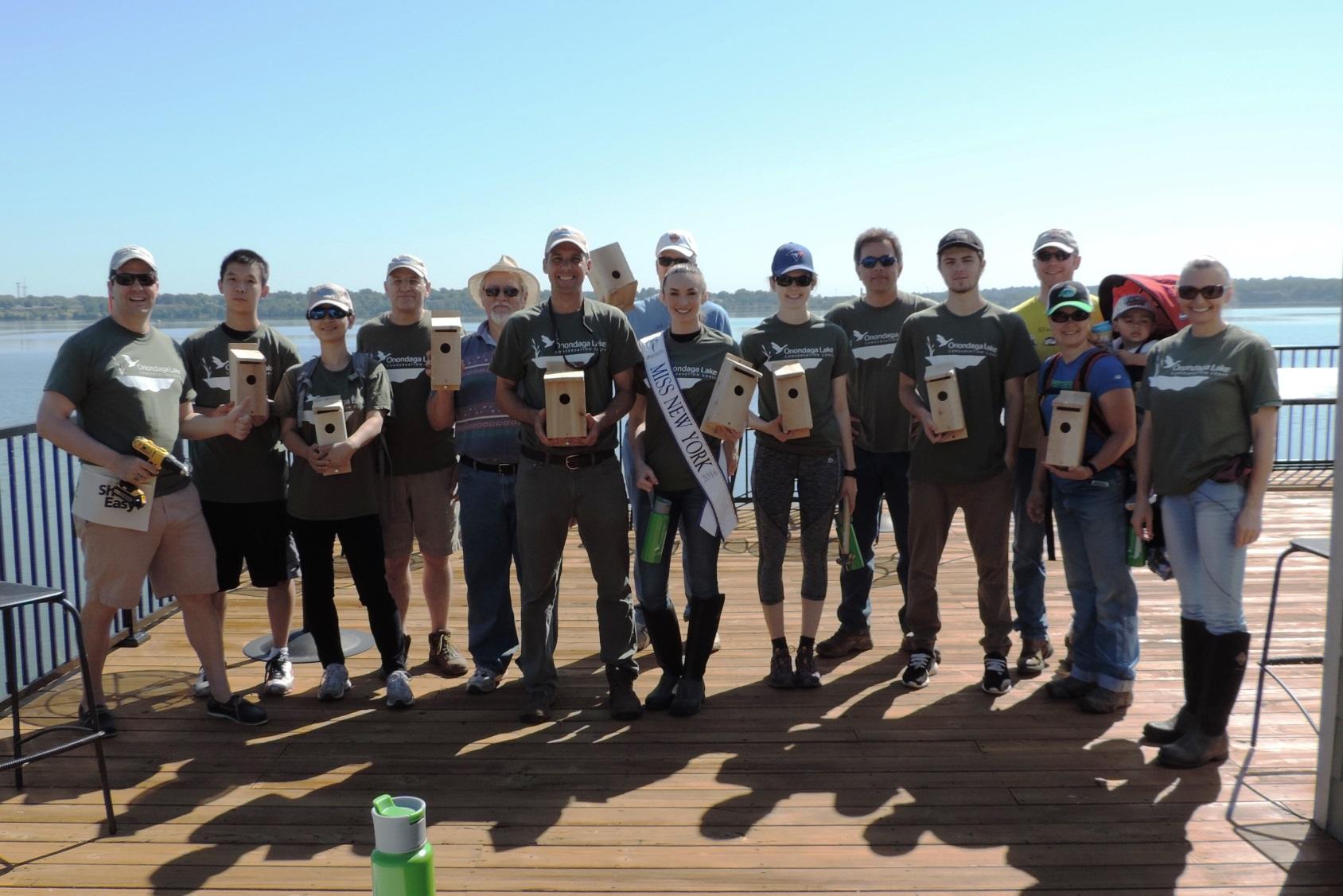 Nest boxes are finished and ready for installation in restored habitat along the Western Shoreline.
Nest boxes are finished and ready for installation in restored habitat along the Western Shoreline.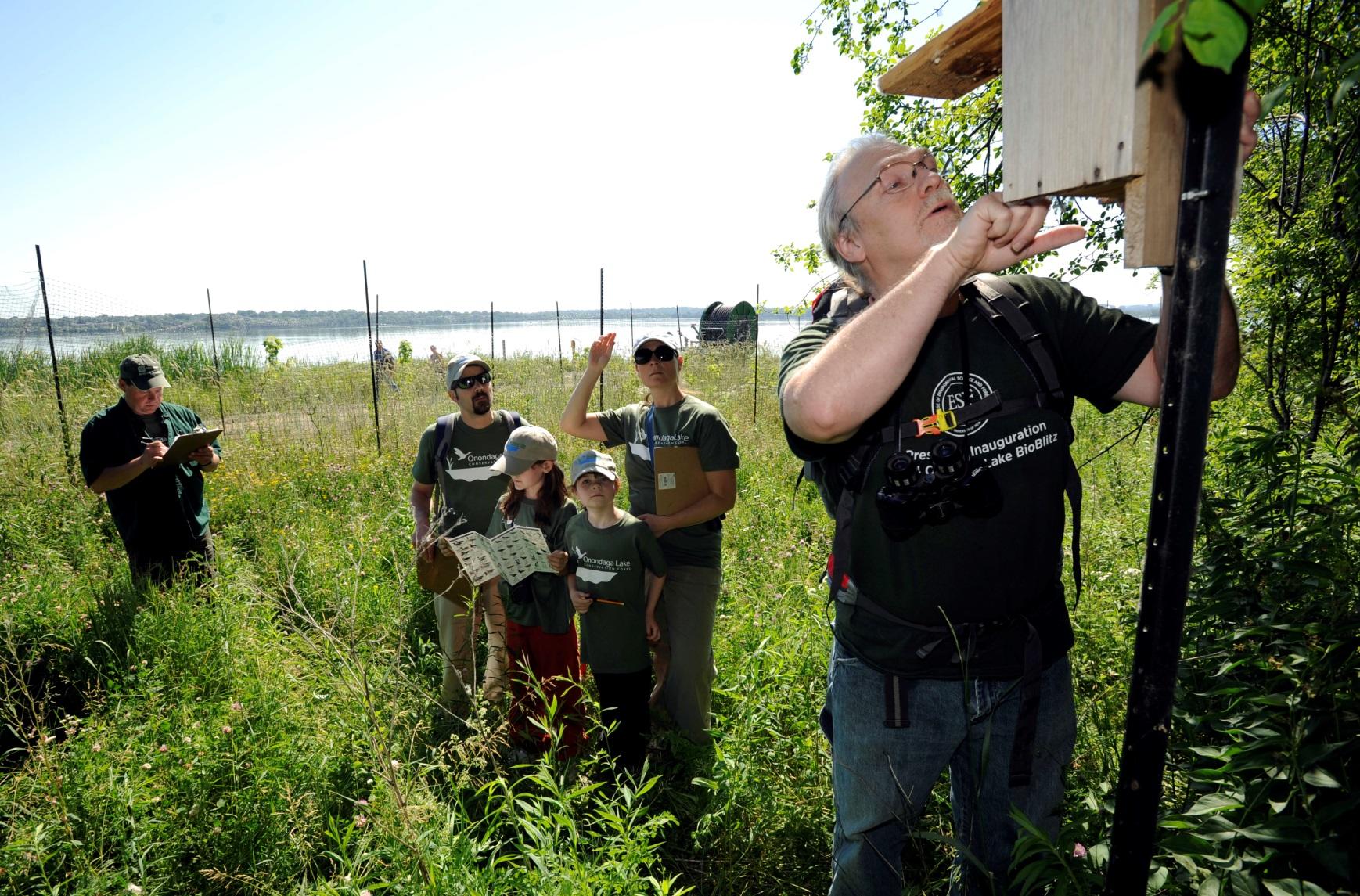 Onondaga Lake Conservation Corps volunteer Douglas Beauchamp inspects a nest box installed last year, while the Keefe family observes birds in the area and Steve Mooney helps records data.
Onondaga Lake Conservation Corps volunteer Douglas Beauchamp inspects a nest box installed last year, while the Keefe family observes birds in the area and Steve Mooney helps records data.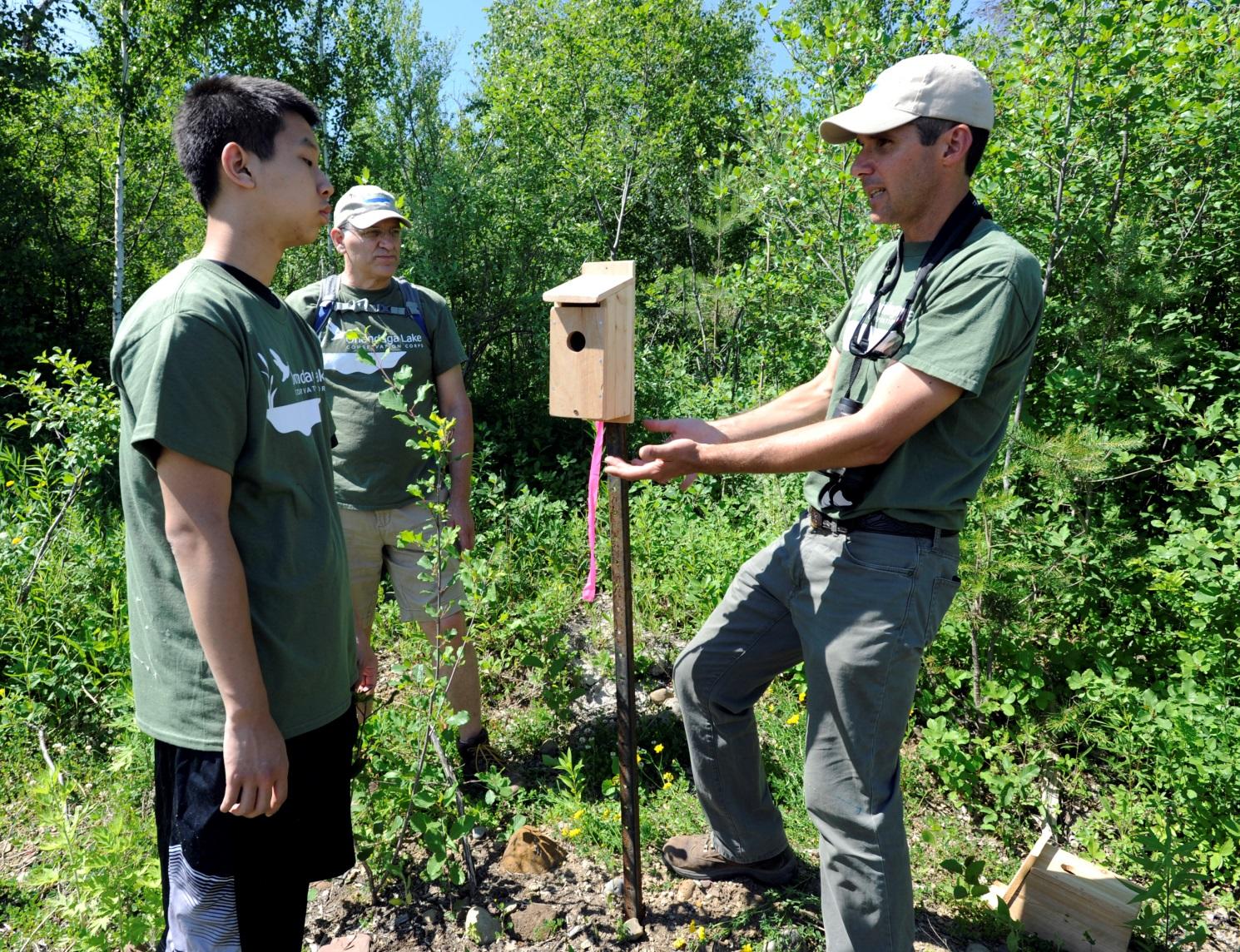 Montezuma Audubon Center Director Chris Lajewski (right) explains to Josh Zhao (left) and Richard Blankenship that the height and placement of a nest box is as important as the dimensions of the box itself to attract target species.
Montezuma Audubon Center Director Chris Lajewski (right) explains to Josh Zhao (left) and Richard Blankenship that the height and placement of a nest box is as important as the dimensions of the box itself to attract target species.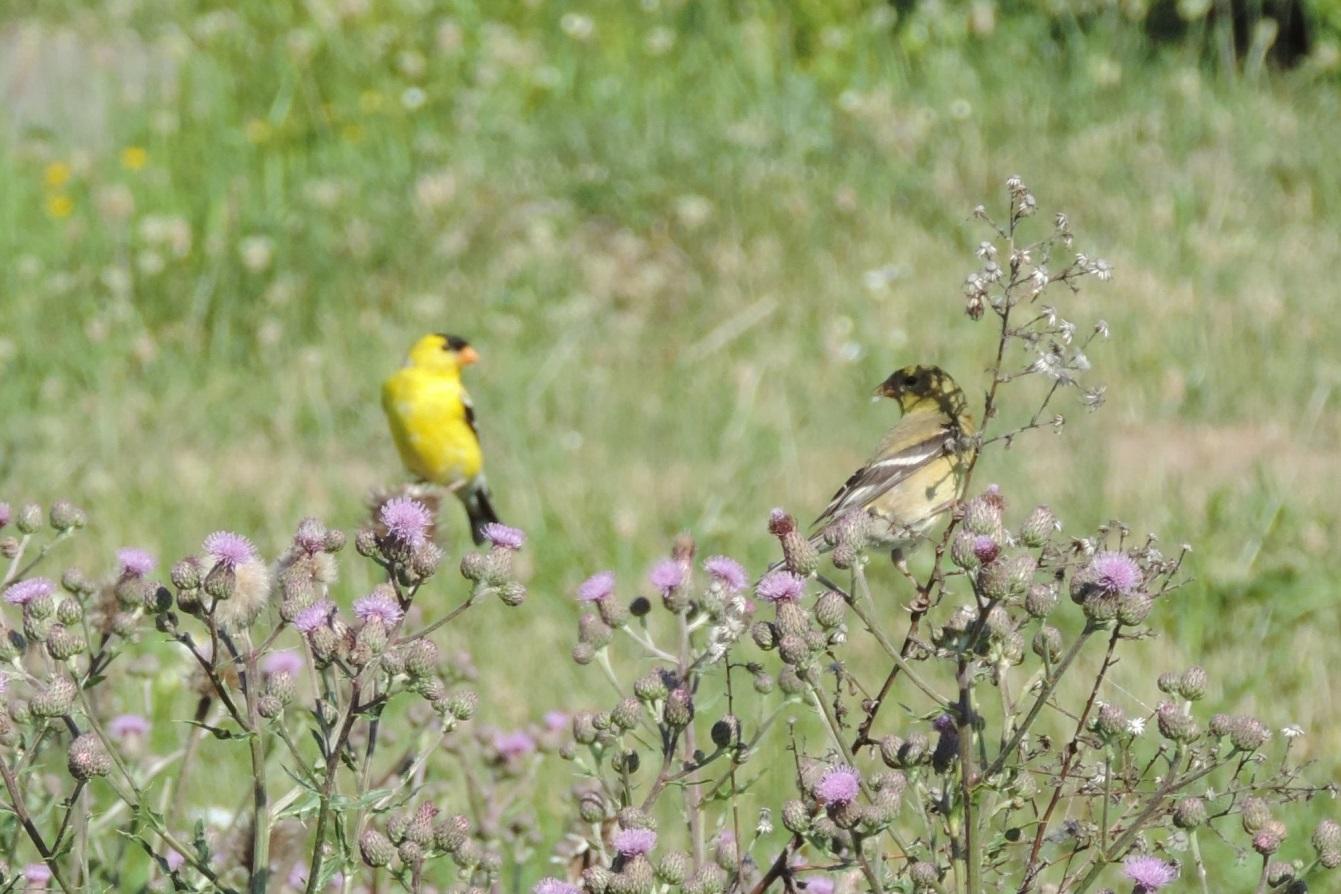 A breeding pair of American Goldfinches was spotted by volunteers birding near the Onondaga Lake Visitors Center.
A breeding pair of American Goldfinches was spotted by volunteers birding near the Onondaga Lake Visitors Center.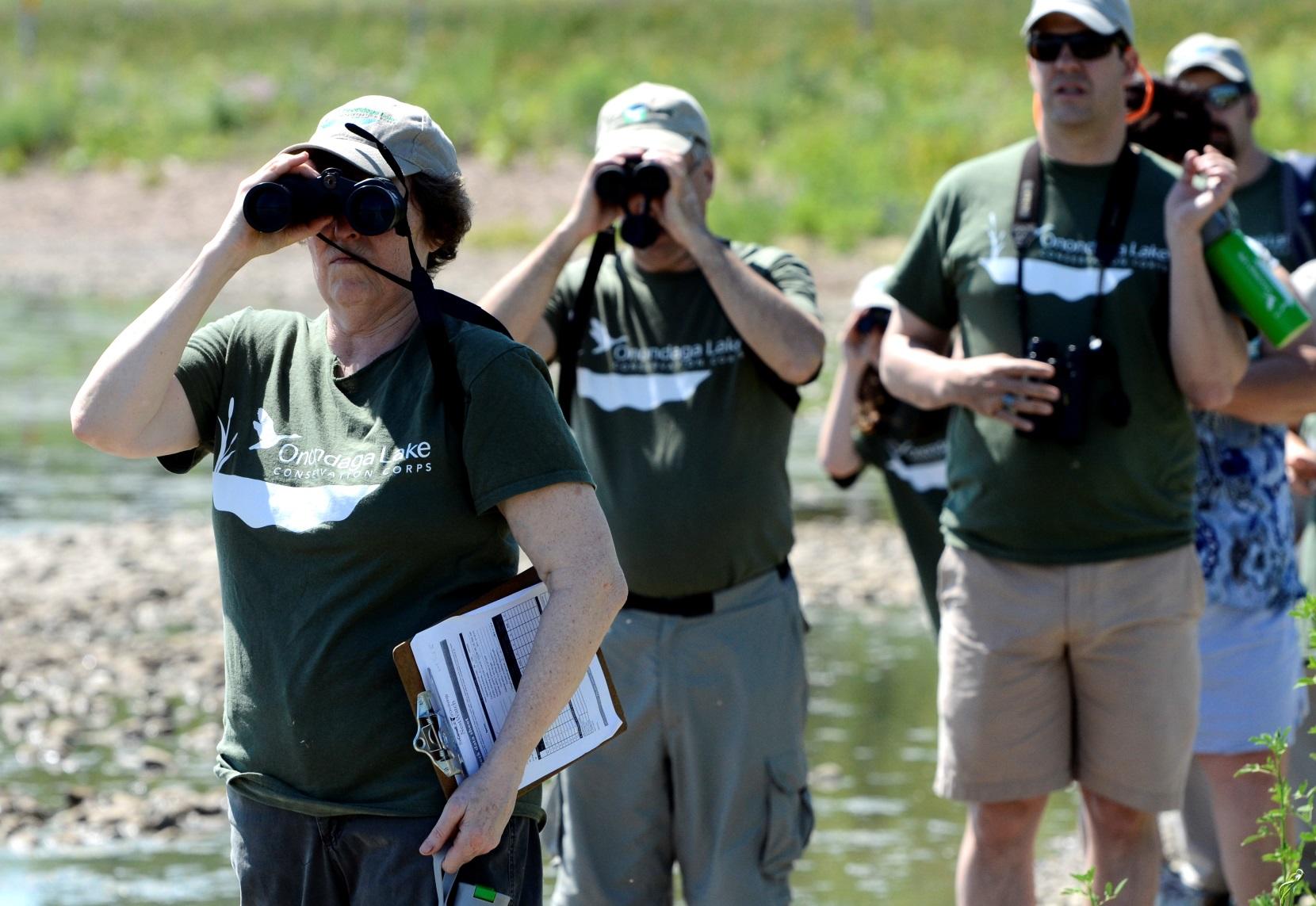 Onondaga Audubon Society (OAS) members help other Corps volunteers identify and record 37 bird species over a few hours Saturday morning. From left are Angela Thor, Paul Richardson (President of OAS), and Frank Moses.
Onondaga Audubon Society (OAS) members help other Corps volunteers identify and record 37 bird species over a few hours Saturday morning. From left are Angela Thor, Paul Richardson (President of OAS), and Frank Moses.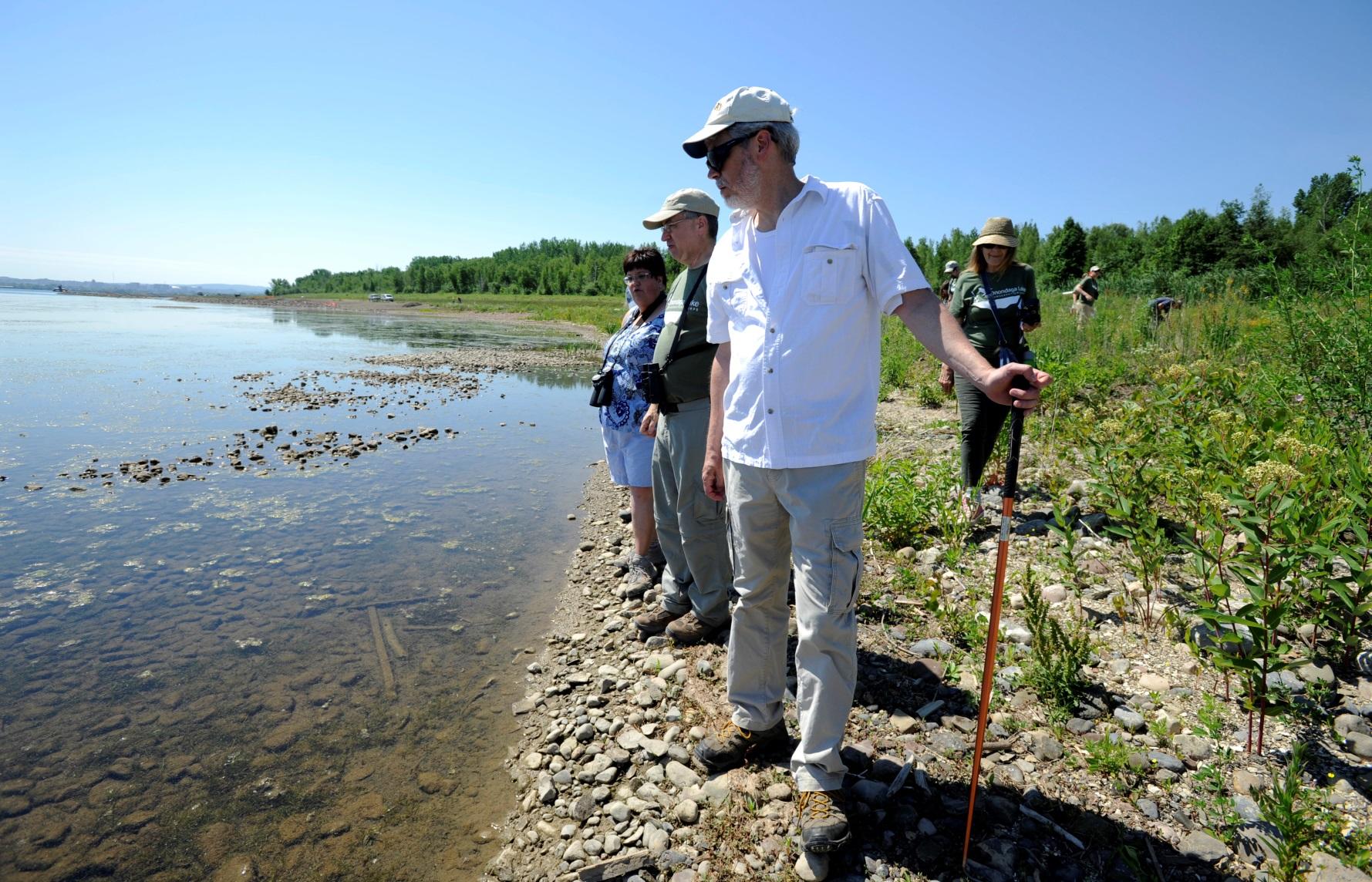 Professor Peter Ducey, Ph.D., of SUNY Cortland, leads Corps volunteers on a walk seeking signs and sightings of amphibians and reptiles. Professor Ducey is an expert in the field of herpetology, a subfield of zoology.
Professor Peter Ducey, Ph.D., of SUNY Cortland, leads Corps volunteers on a walk seeking signs and sightings of amphibians and reptiles. Professor Ducey is an expert in the field of herpetology, a subfield of zoology.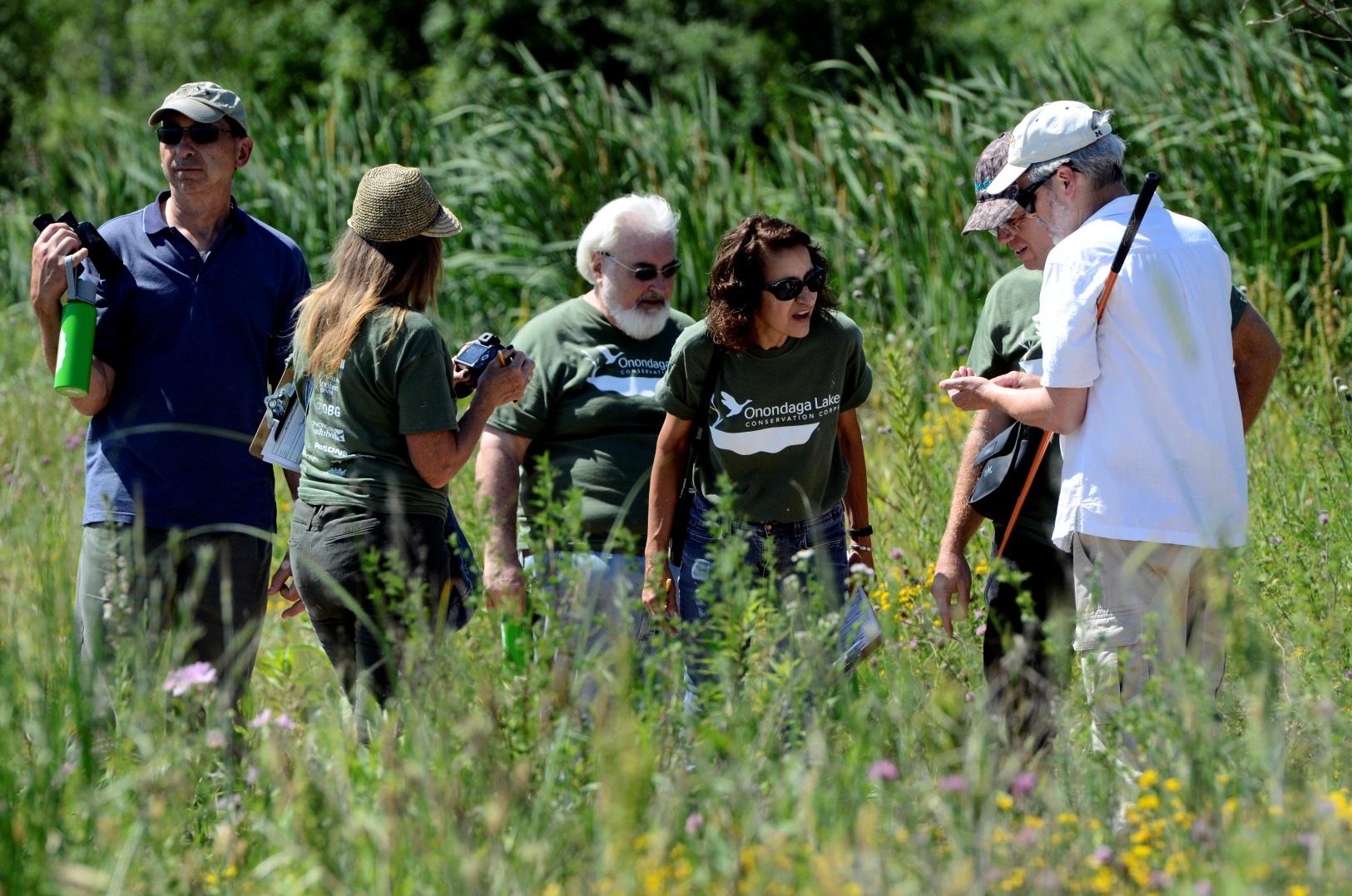 Observations are recorded and will be added to databases monitoring the health of Onondaga Lake as the lake cleanup progresses. More than 170 species of fish, birds, and other wildlife have already returned to restored habitat near the lake.
Observations are recorded and will be added to databases monitoring the health of Onondaga Lake as the lake cleanup progresses. More than 170 species of fish, birds, and other wildlife have already returned to restored habitat near the lake.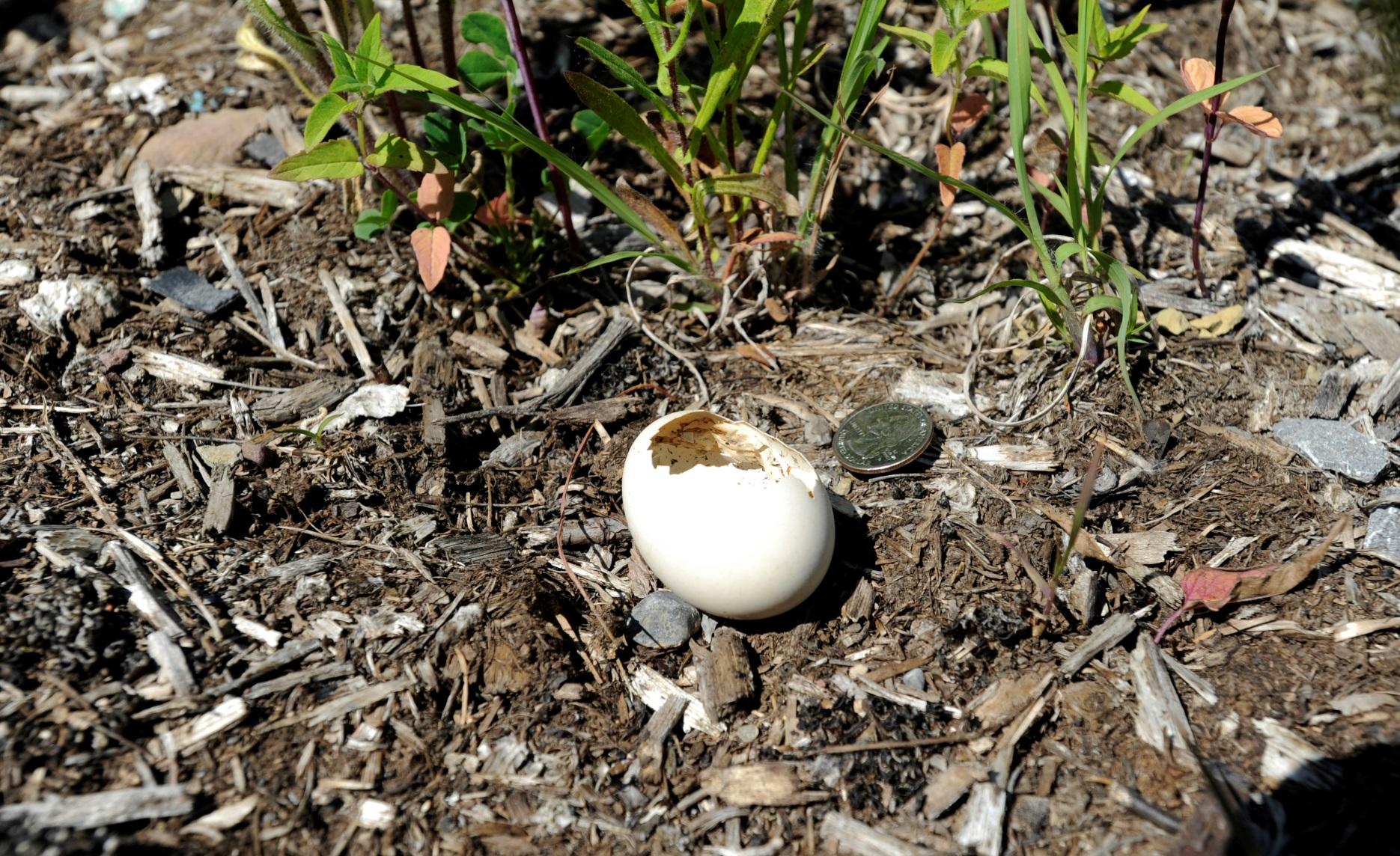 This shell indicates that waterfowl are breeding along the shoreline. Onondaga Lake has been designated an Important Bird Area by Audubon because it provides important habitat for migratory species.
This shell indicates that waterfowl are breeding along the shoreline. Onondaga Lake has been designated an Important Bird Area by Audubon because it provides important habitat for migratory species.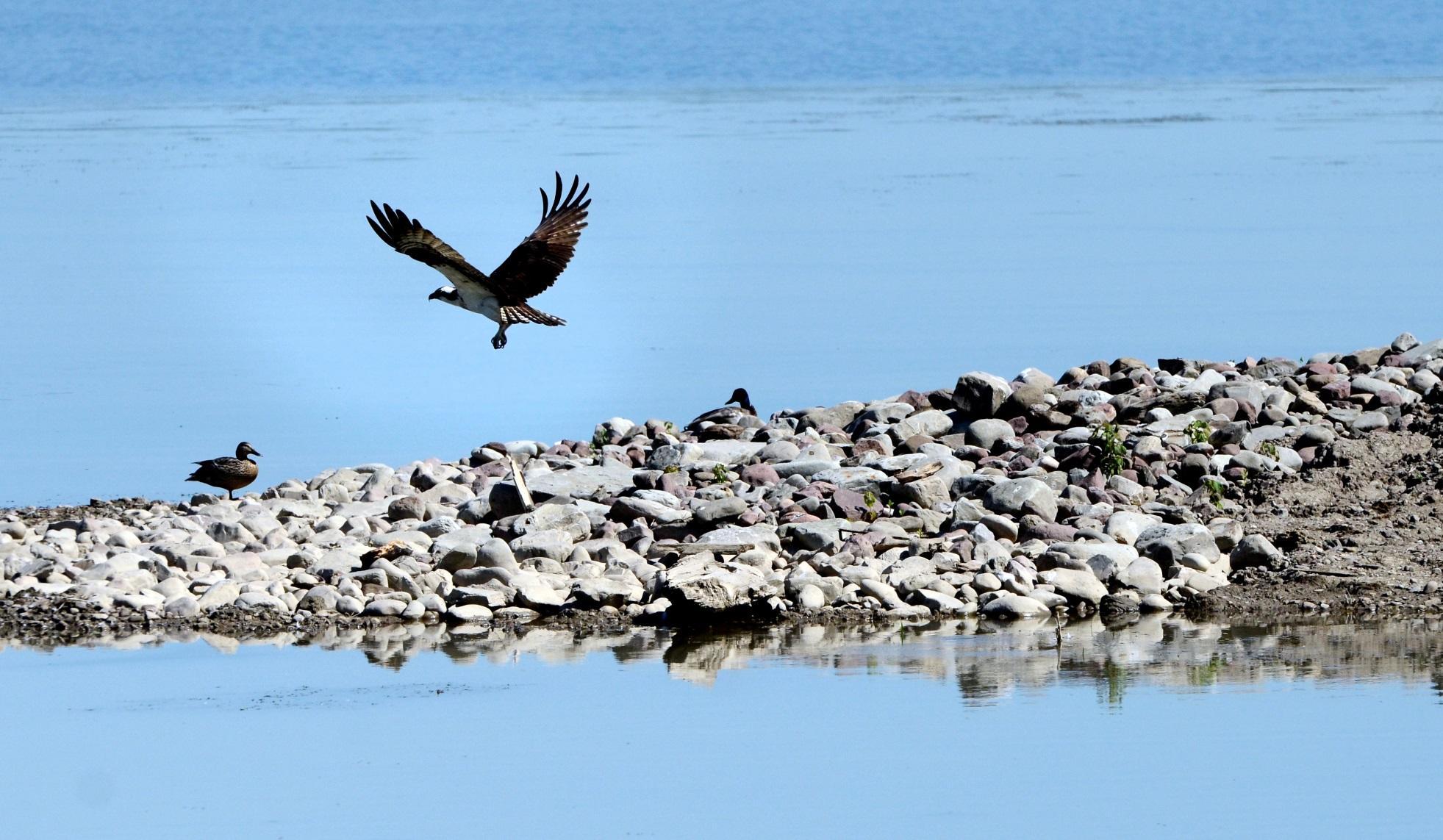 An Osprey is seen along the shoreline hunting fish at the lake.
An Osprey is seen along the shoreline hunting fish at the lake.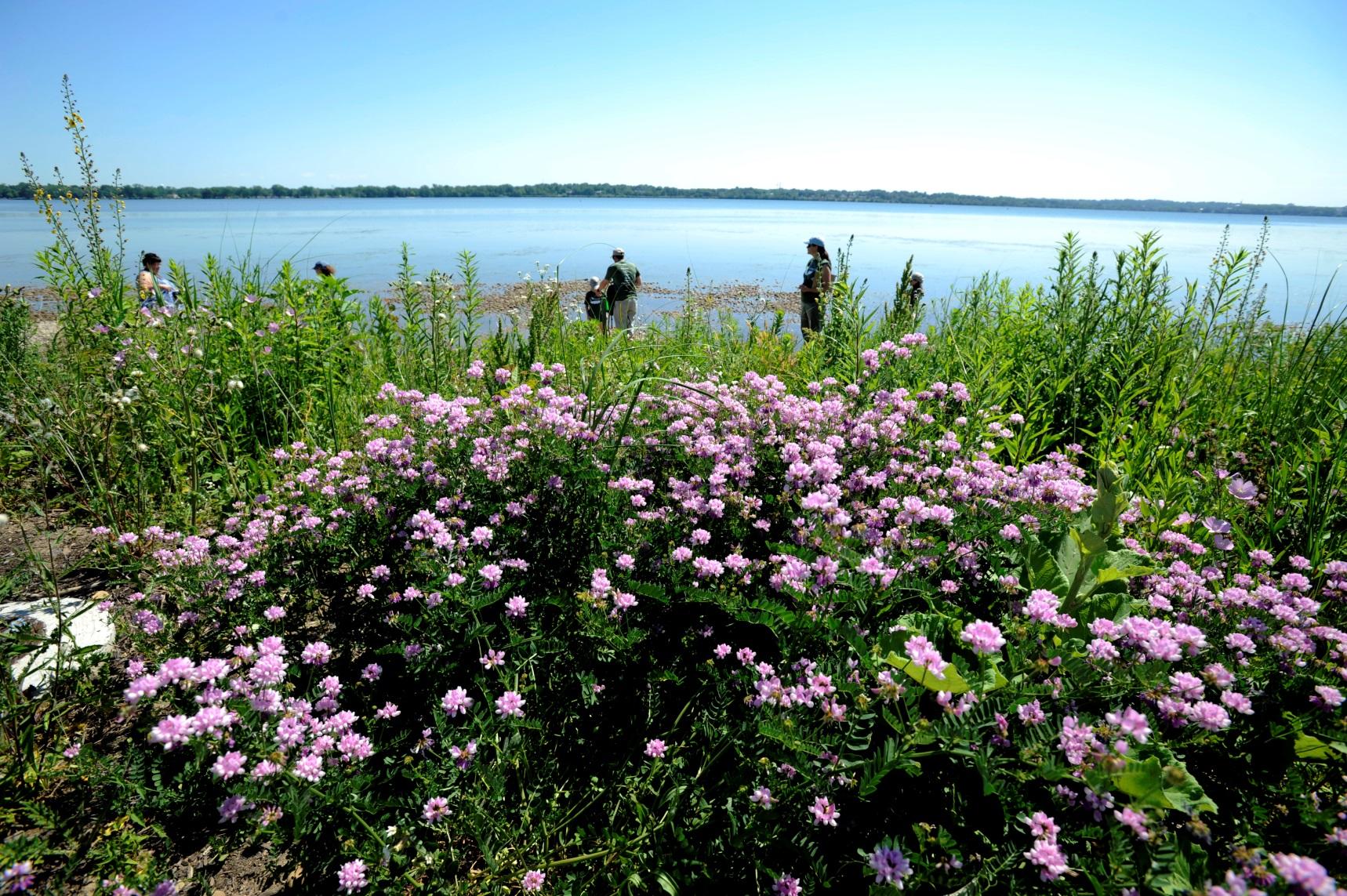 The population sizes and health of amphibian and reptile communities, as well as bird species, are indicators of the status of recovering ecosystems.
The population sizes and health of amphibian and reptile communities, as well as bird species, are indicators of the status of recovering ecosystems.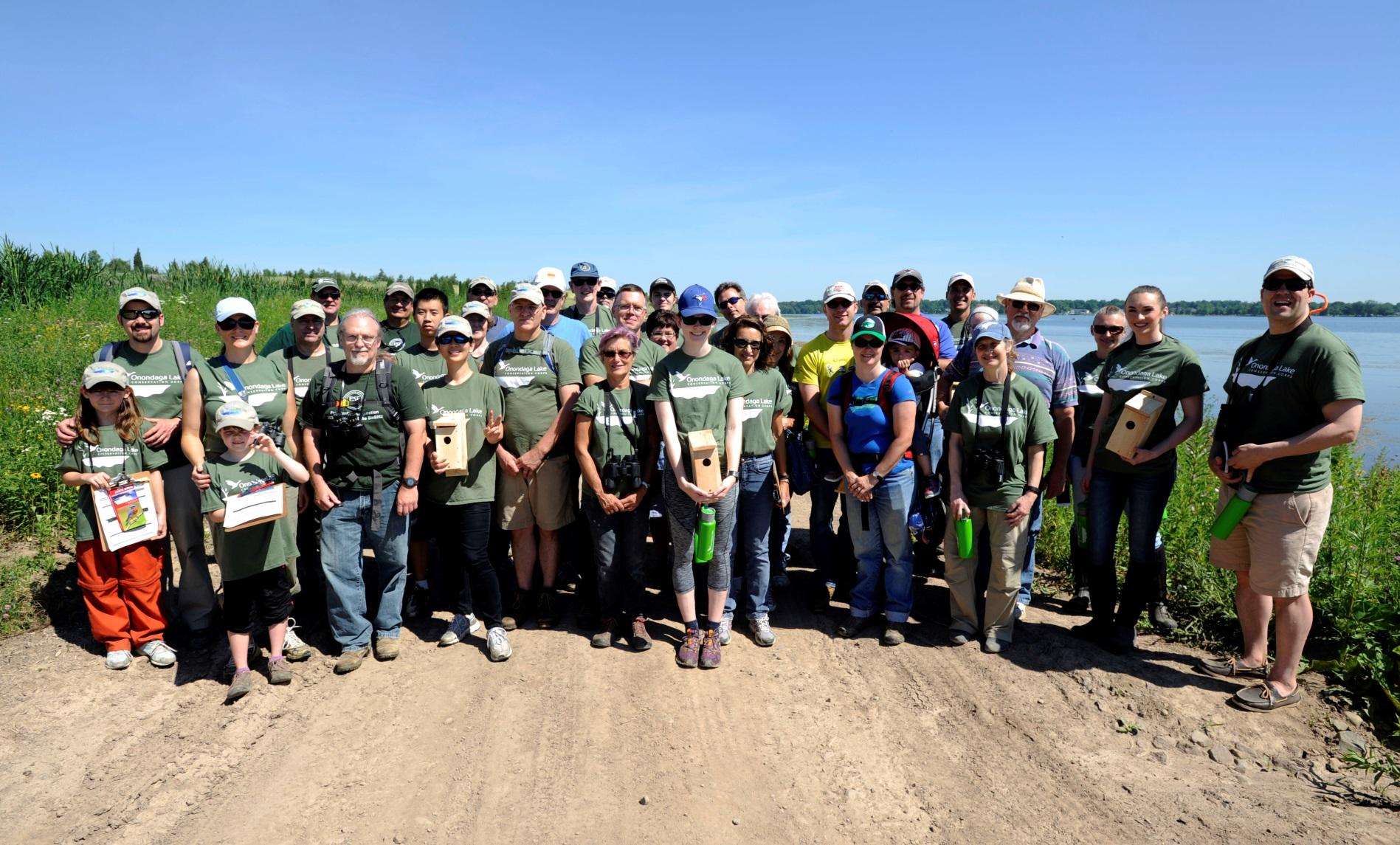 Nearly 40 volunteers participated in an Onondaga Lake Conservation Corps event on June 18 to build, install and survey habitat structures and birds and wildlife along the Western Shoreline.
Nearly 40 volunteers participated in an Onondaga Lake Conservation Corps event on June 18 to build, install and survey habitat structures and birds and wildlife along the Western Shoreline.1 of 15
-
October 2015
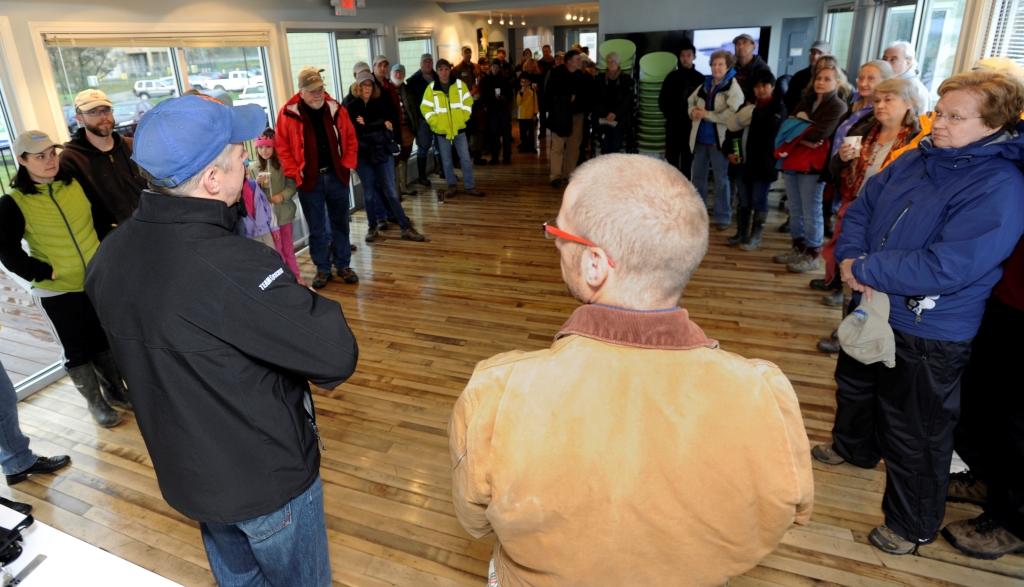 After arriving at the Onondaga Lake Visitors Center, participants are welcomed by Christopher Calkins (left), vice president at O’Brien & Gere and fellow Onondaga Lake Conservation Corps volunteer.
After arriving at the Onondaga Lake Visitors Center, participants are welcomed by Christopher Calkins (left), vice president at O’Brien & Gere and fellow Onondaga Lake Conservation Corps volunteer.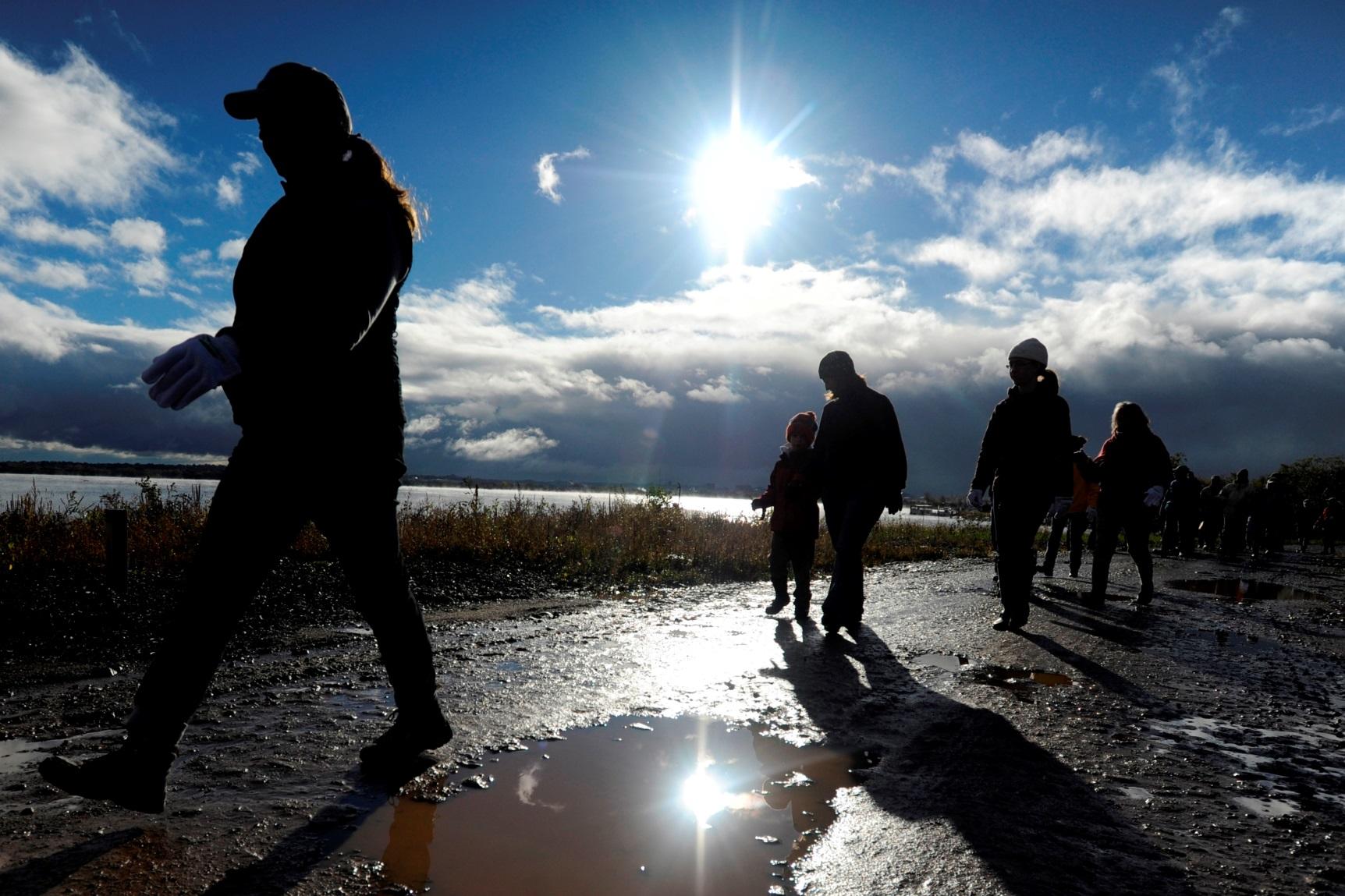 Rain and wet snow earlier in the morning clear just as volunteers head out along the western shoreline to plant trees and observe birds.
Rain and wet snow earlier in the morning clear just as volunteers head out along the western shoreline to plant trees and observe birds.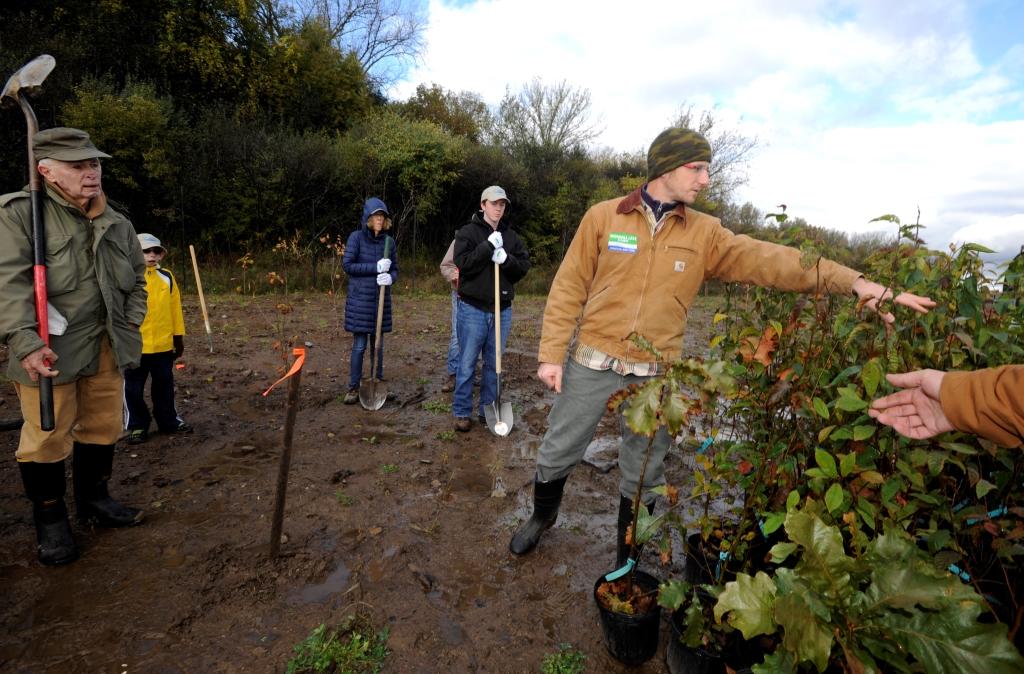 Tony Eallonardo, Ph.D., scientist in plant ecology and ecosystem restoration at O’Brien & Gere, shows volunteers the variety of trees they will plant.
Tony Eallonardo, Ph.D., scientist in plant ecology and ecosystem restoration at O’Brien & Gere, shows volunteers the variety of trees they will plant.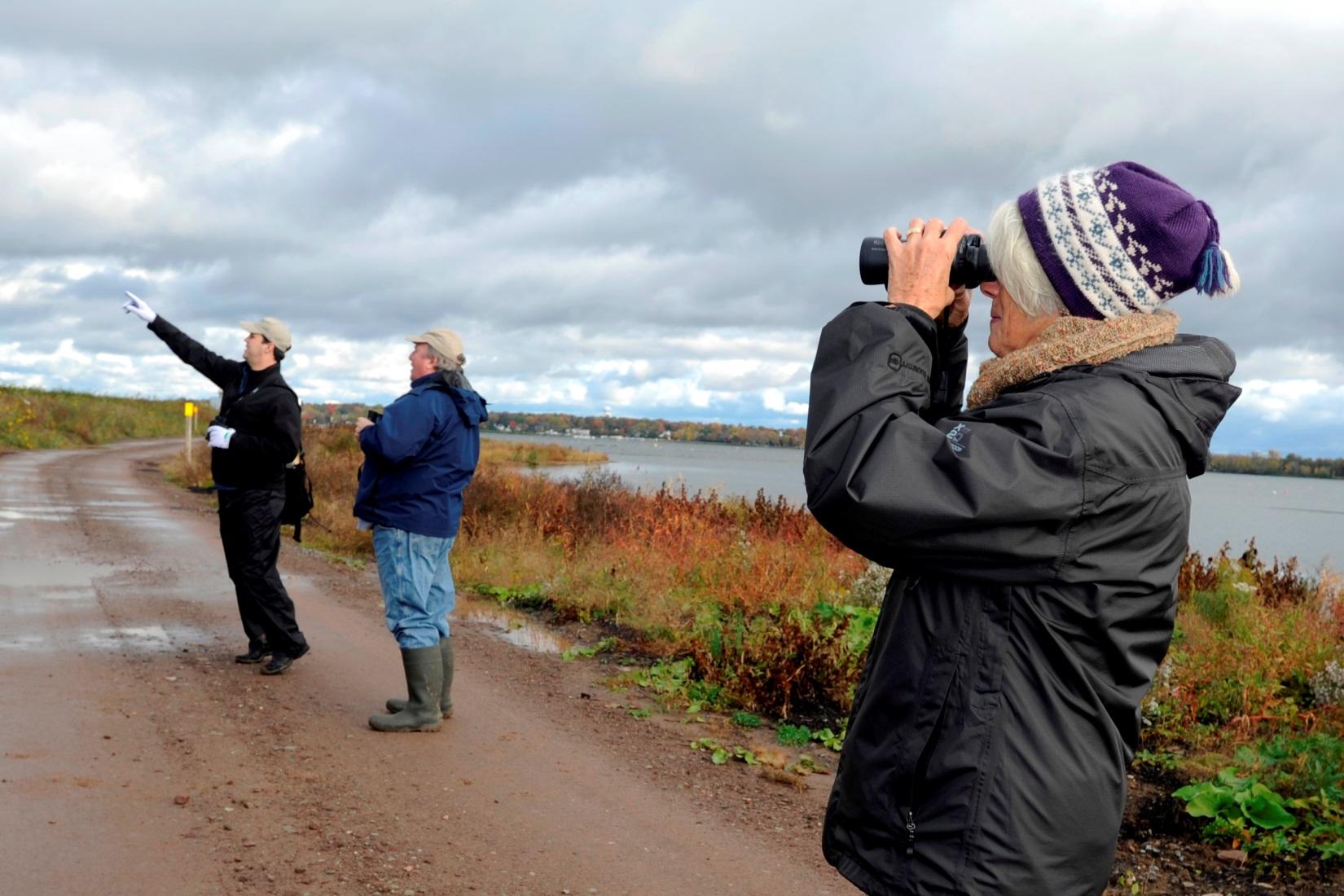 Meanwhile other Corps members work to identify birds along the shoreline. Left is Frank Moses, Onondaga Audubon’s Onondaga Lake liaison, with Paul Marconi, Syracuse, and Cheryl Belle from Baldwinsville.
Meanwhile other Corps members work to identify birds along the shoreline. Left is Frank Moses, Onondaga Audubon’s Onondaga Lake liaison, with Paul Marconi, Syracuse, and Cheryl Belle from Baldwinsville.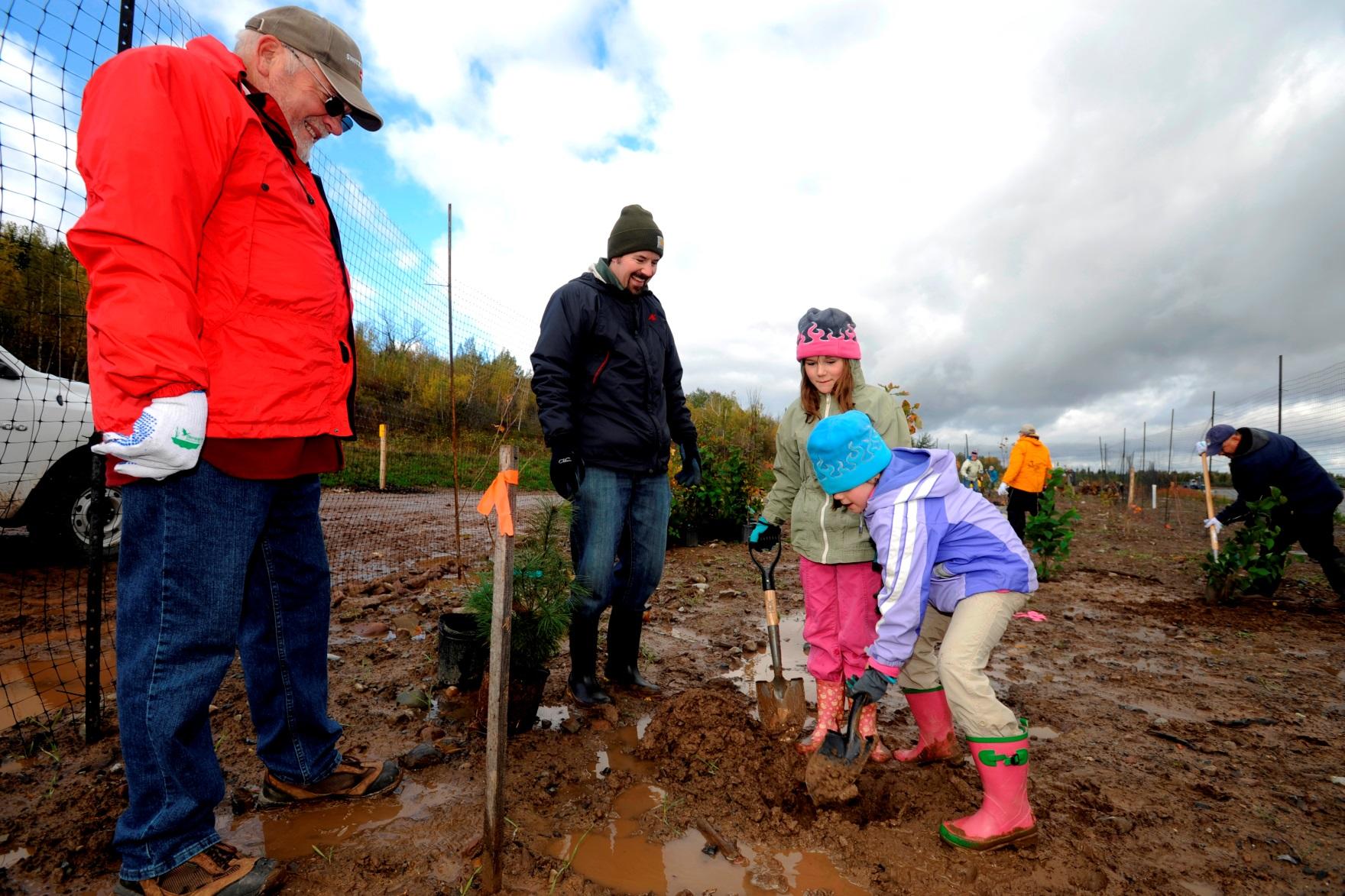 Autumn (right) and twin sister Evelyn Keefe work hard at digging the hole just the right size and depth for a new tree, as their father Nathan and grandfather Larry watch.
Autumn (right) and twin sister Evelyn Keefe work hard at digging the hole just the right size and depth for a new tree, as their father Nathan and grandfather Larry watch.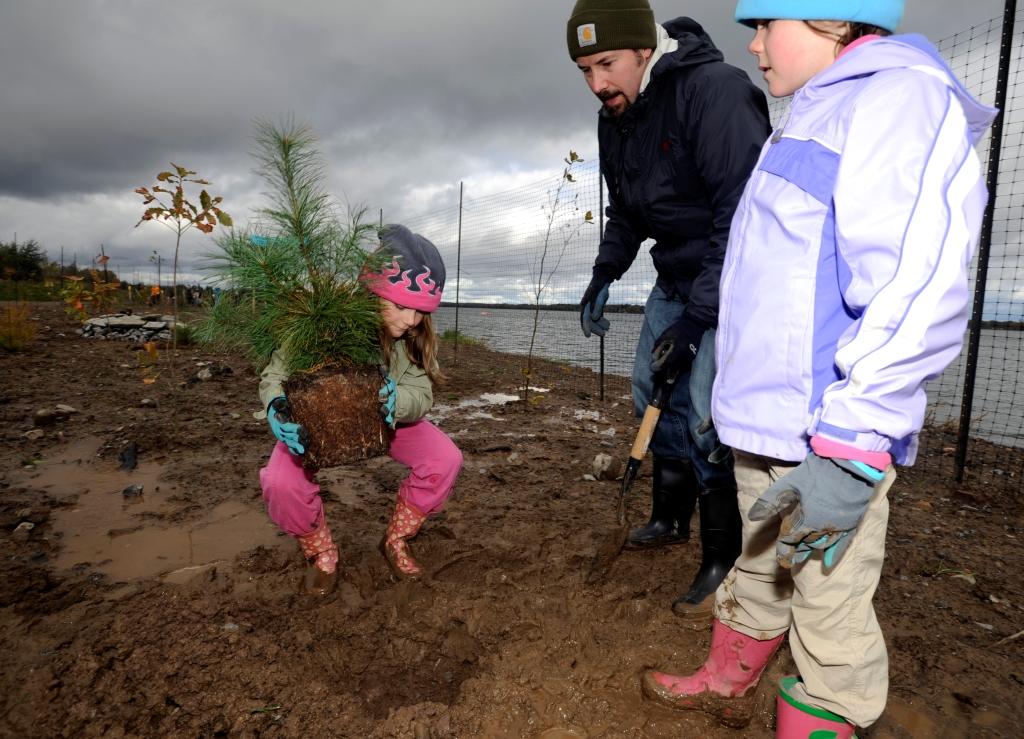 Evelyn places an eastern white pine carefully in its new spot along the Onondaga Lake shoreline. Eastern white pine (Pinus strobus) grow to 150 feet tall and live 200 years or longer in an undisturbed location.
Evelyn places an eastern white pine carefully in its new spot along the Onondaga Lake shoreline. Eastern white pine (Pinus strobus) grow to 150 feet tall and live 200 years or longer in an undisturbed location.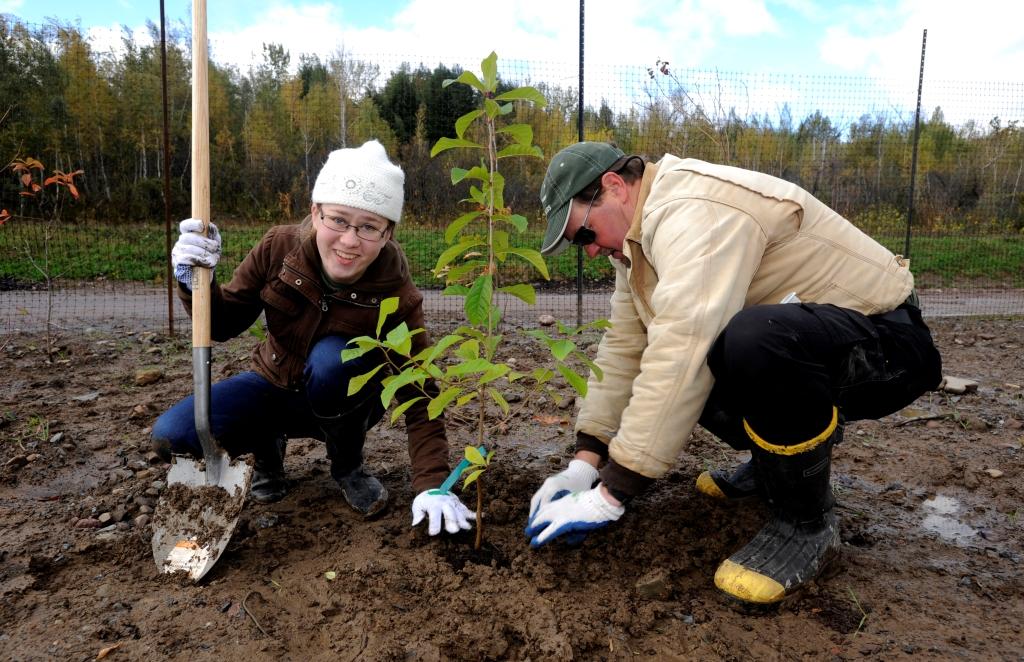 Grace Getman, of Syracuse, works together with Steve Mooney, managing scientist at O’Brien & Gere and Corps volunteer, to properly pack soil around a young spicebush (Lindera benzoin) they just planted.
Grace Getman, of Syracuse, works together with Steve Mooney, managing scientist at O’Brien & Gere and Corps volunteer, to properly pack soil around a young spicebush (Lindera benzoin) they just planted.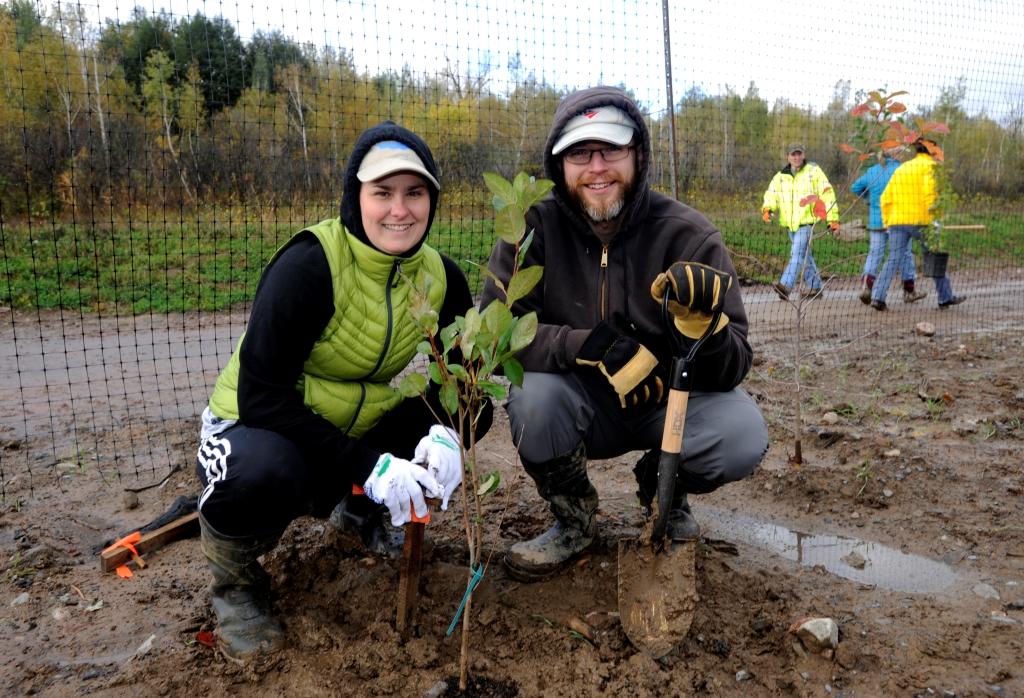 Stacey Keefe and Ben Larsen, of North Syracuse, plant a black chokeberry (Aronia melanocarpa), native to the Great Lakes region. The black chokeberry will eventually produce abundant rich berries that serve as food for wildlife and birds such as Ruffed Grouse.
Stacey Keefe and Ben Larsen, of North Syracuse, plant a black chokeberry (Aronia melanocarpa), native to the Great Lakes region. The black chokeberry will eventually produce abundant rich berries that serve as food for wildlife and birds such as Ruffed Grouse.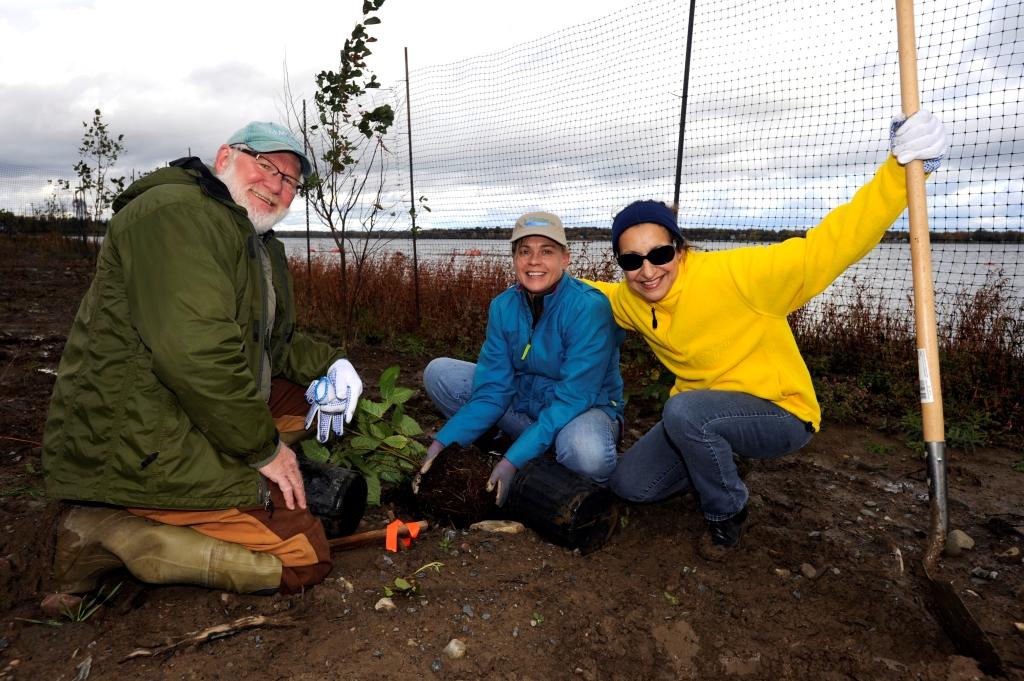 Joe McMullen, of Liverpool, Pam Wildridge, from Jamesville, and Sue Potrikus (right), North Syracuse, enjoy taking part in restoring habitat along Onondaga Lake’s shoreline.
Joe McMullen, of Liverpool, Pam Wildridge, from Jamesville, and Sue Potrikus (right), North Syracuse, enjoy taking part in restoring habitat along Onondaga Lake’s shoreline.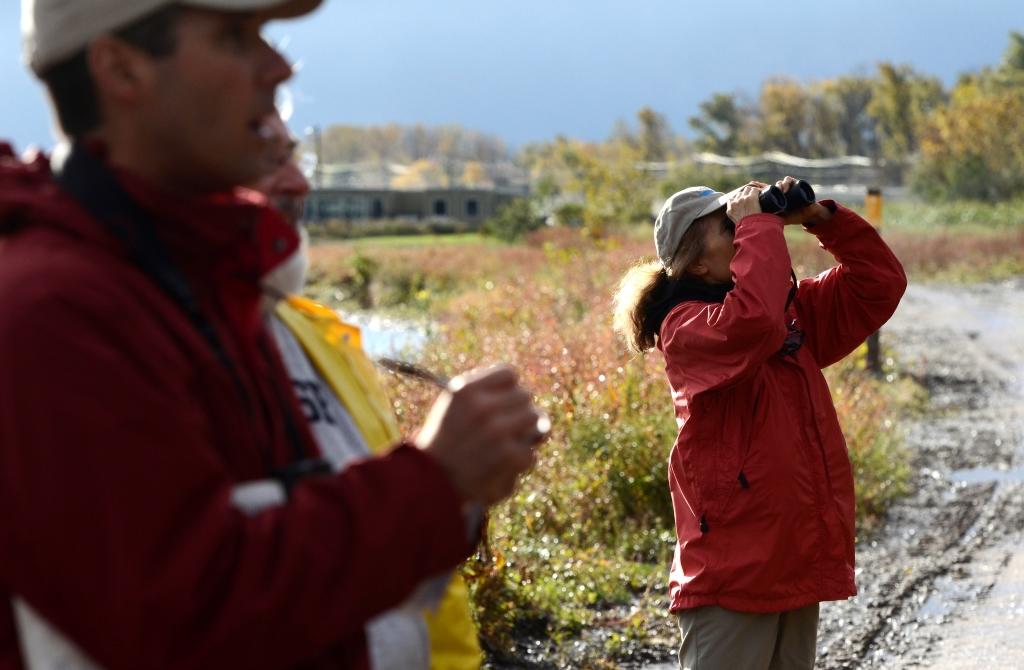 Bird species and numbers are noted by Audubon and Corps volunteers. Chris Lajewski (left), director of Montezuma Audubon Center, records birds Ruth Florey, Onondaga Audubon and Corps volunteer, spots in nearby trees.
Bird species and numbers are noted by Audubon and Corps volunteers. Chris Lajewski (left), director of Montezuma Audubon Center, records birds Ruth Florey, Onondaga Audubon and Corps volunteer, spots in nearby trees.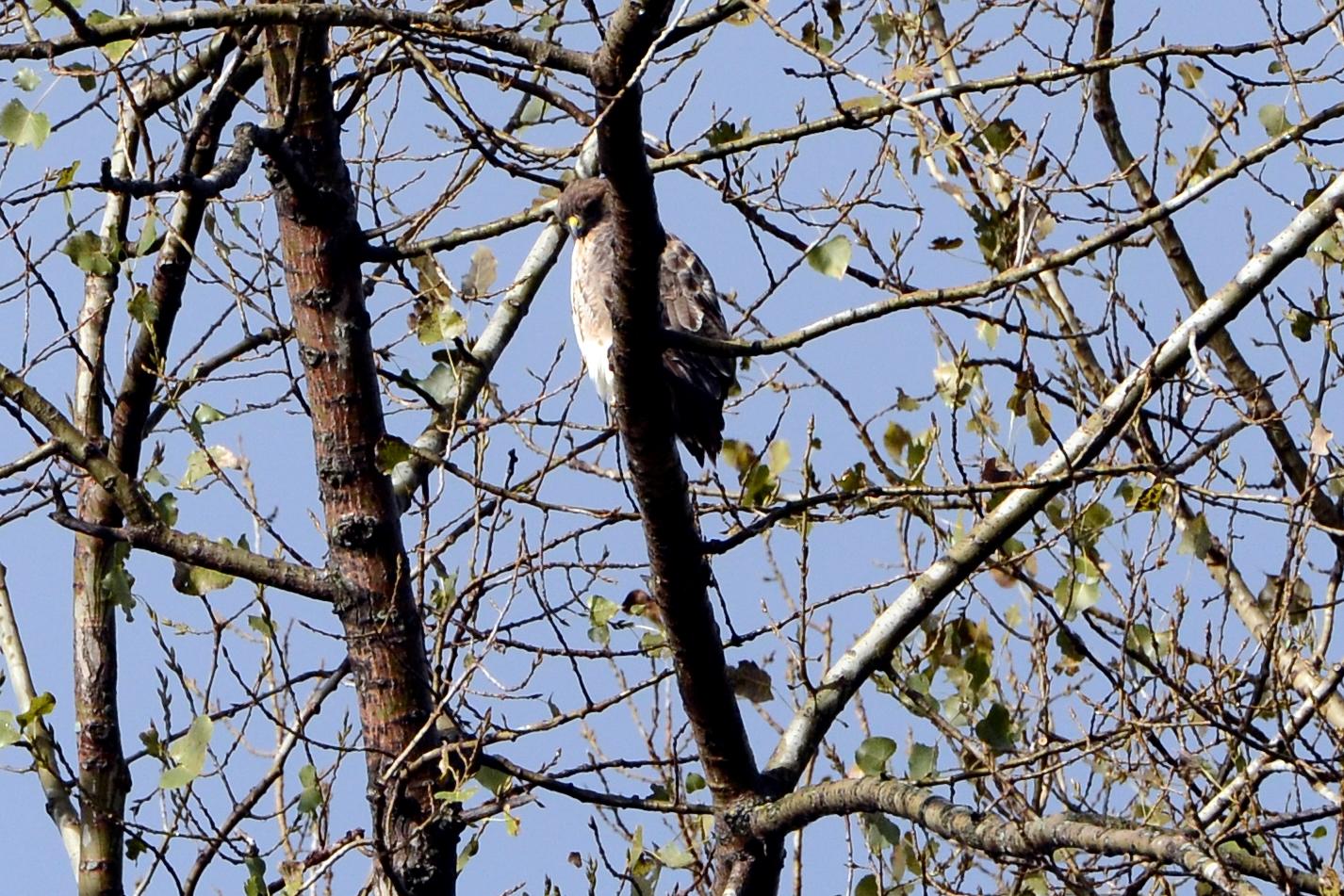 A Red-tailed Hawk is seen in a tree along the shoreline. Red-tailed Hawks prefer to perch in high spots near open areas, scanning the ground for prey.
A Red-tailed Hawk is seen in a tree along the shoreline. Red-tailed Hawks prefer to perch in high spots near open areas, scanning the ground for prey.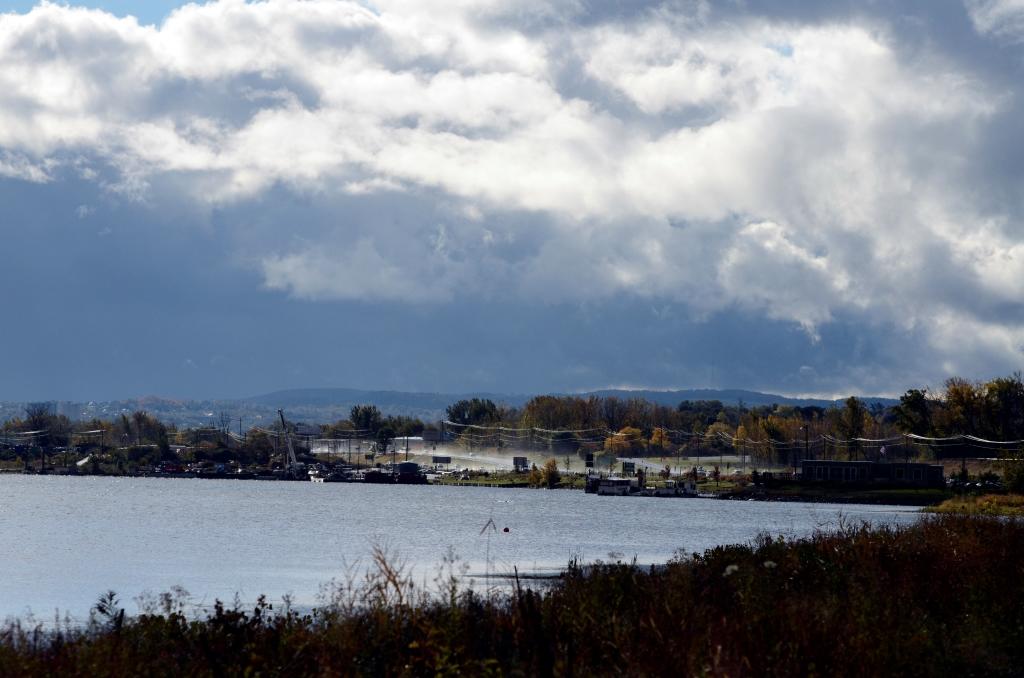 Further south along the Onondaga Lake shoreline, near I-690, is the support area for capping activities on Onondaga Lake, which continue through fall 2015 and will resume next spring.
Further south along the Onondaga Lake shoreline, near I-690, is the support area for capping activities on Onondaga Lake, which continue through fall 2015 and will resume next spring.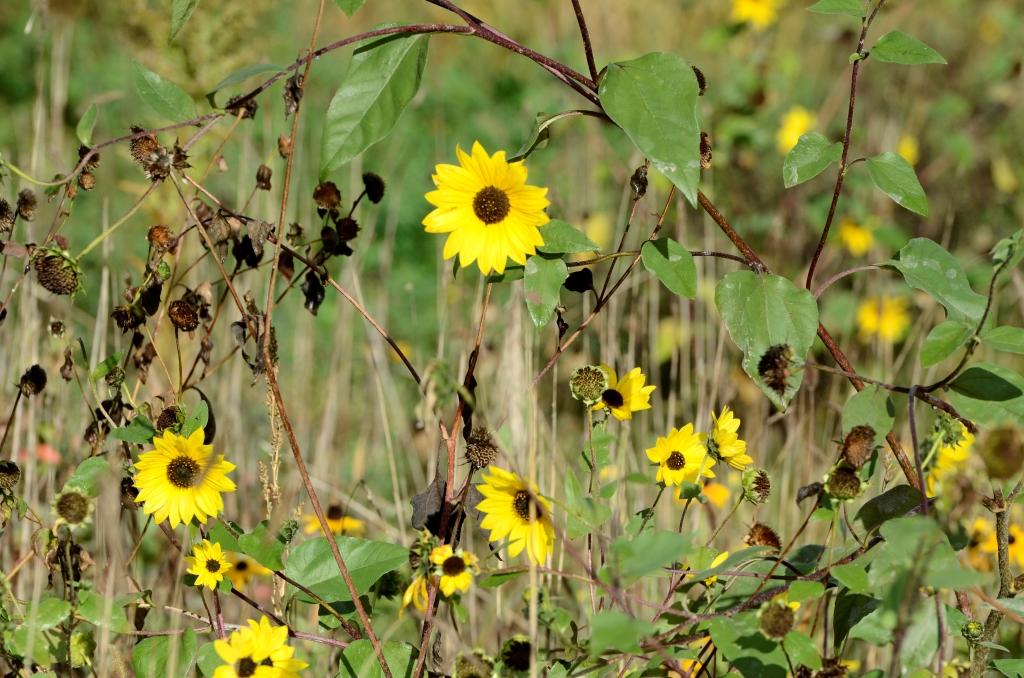 Common sunflowers (Helianthus annuus) planted in an earlier restored habitat area bloom into fall. Common sunflower, a native plant, provides excellent cover for wildlife and seeds for many species of birds.
Common sunflowers (Helianthus annuus) planted in an earlier restored habitat area bloom into fall. Common sunflower, a native plant, provides excellent cover for wildlife and seeds for many species of birds.1 of 13
-
May 2015 - Bird Box Building
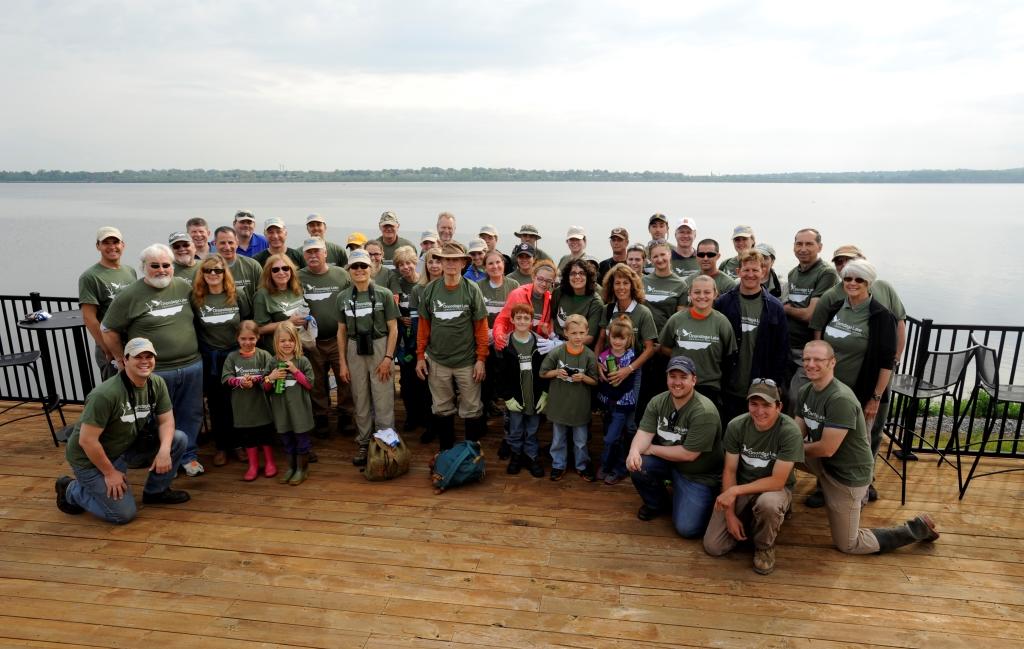 Fifty-one volunteers attended an event to build and install bird boxes along the western shoreline of Onondaga Lake, and plant native vegetation.
Fifty-one volunteers attended an event to build and install bird boxes along the western shoreline of Onondaga Lake, and plant native vegetation.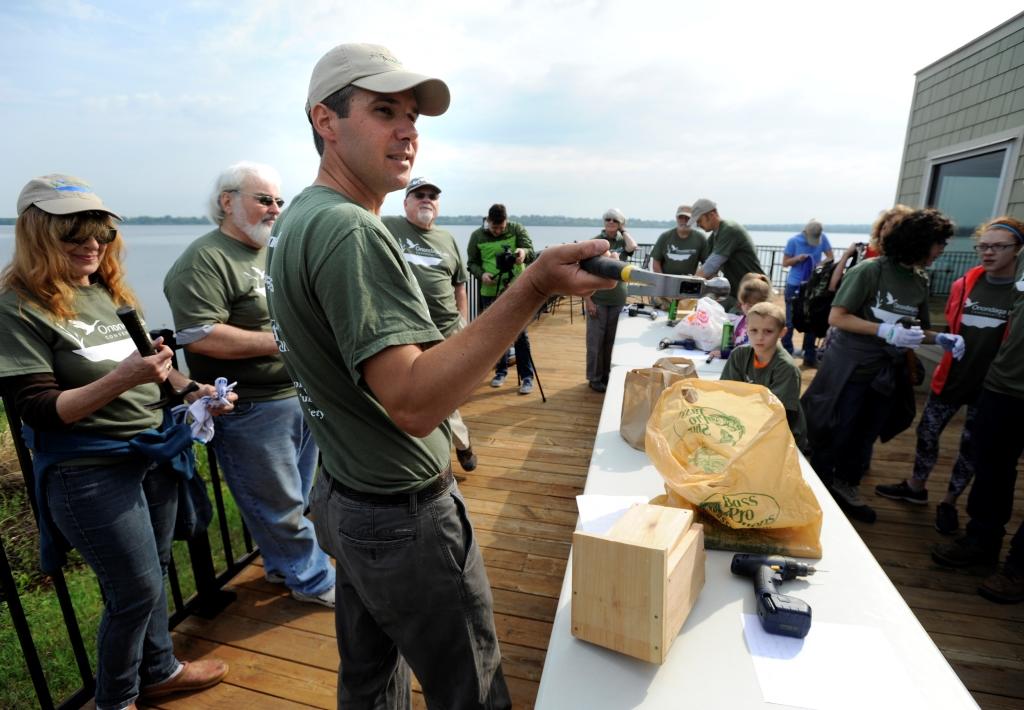 Participants gather on the deck at the Onondaga Lake Visitors Center to begin building bird nest boxes, or “birdhouses.”
Participants gather on the deck at the Onondaga Lake Visitors Center to begin building bird nest boxes, or “birdhouses.”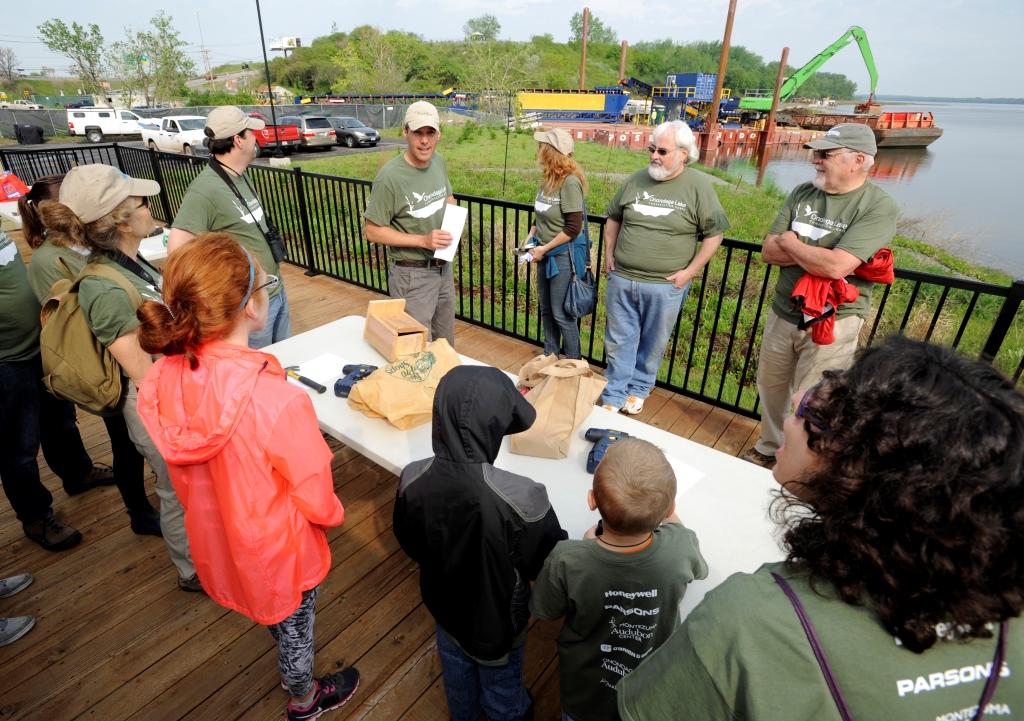 The Onondaga Lake Visitors Center was built on the western shoreline by Honeywell to provide the public with access to the work taking place at Onondaga Lake.
The Onondaga Lake Visitors Center was built on the western shoreline by Honeywell to provide the public with access to the work taking place at Onondaga Lake.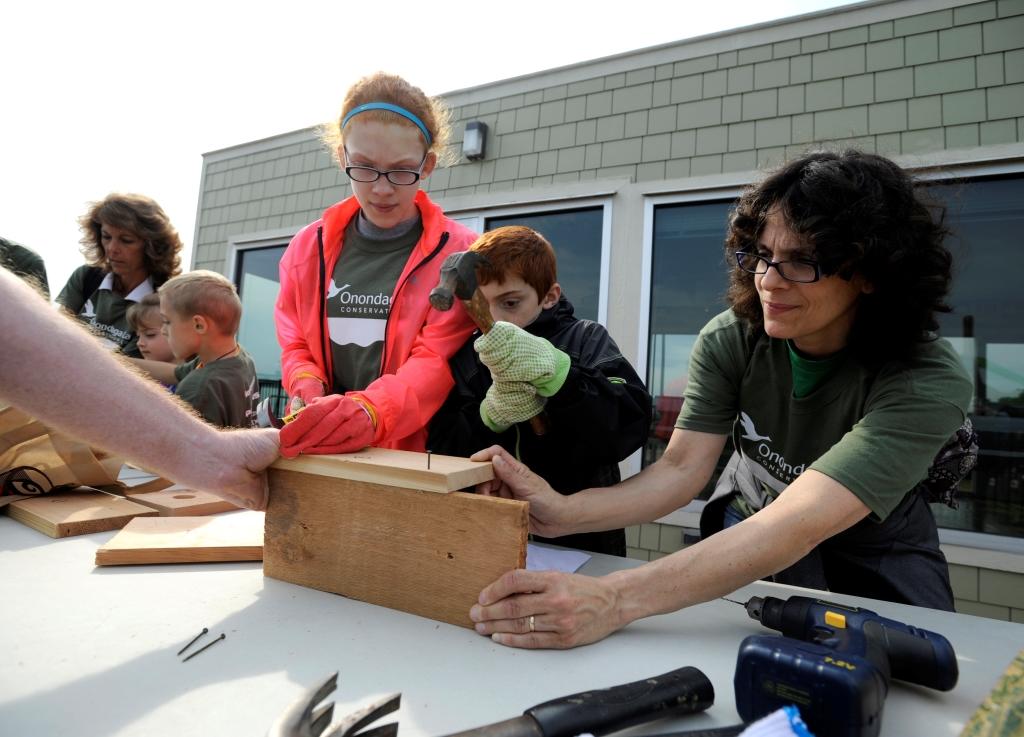 Nathan Bustin, of Clay, hammers a nail into a nest box suitable for Eastern Bluebirds or Tree Swallows while his family stabilizes the boards.
Nathan Bustin, of Clay, hammers a nail into a nest box suitable for Eastern Bluebirds or Tree Swallows while his family stabilizes the boards.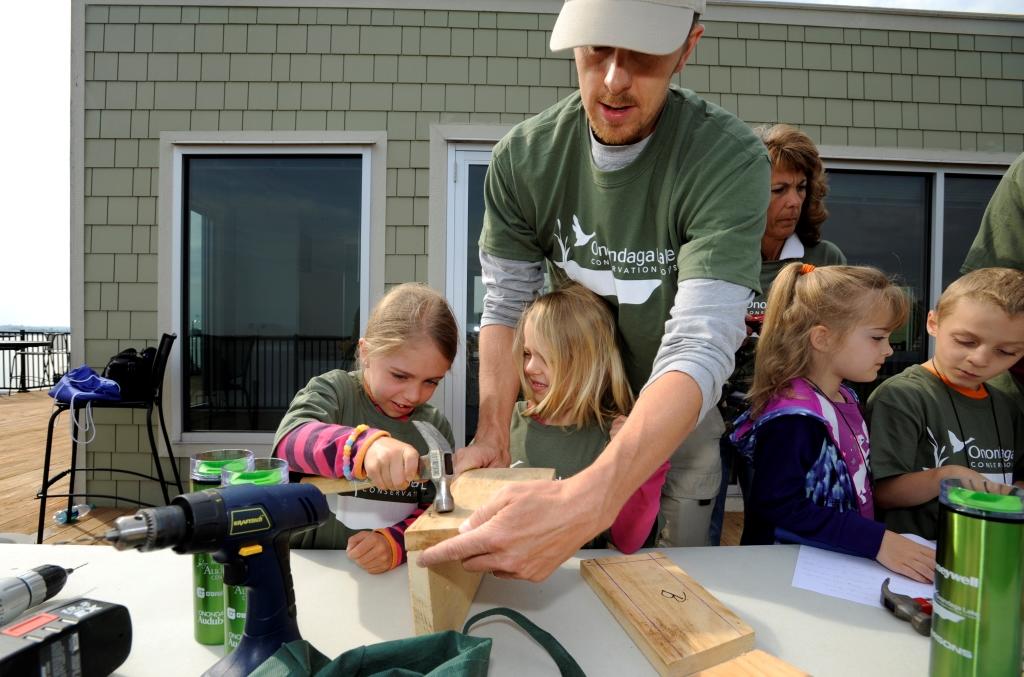 Building in the right dimensions is critical to attracting desired species. Mark Bremer, of Manlius, constructs a bird box with his daughters Sammie (left) and Ali.
Building in the right dimensions is critical to attracting desired species. Mark Bremer, of Manlius, constructs a bird box with his daughters Sammie (left) and Ali.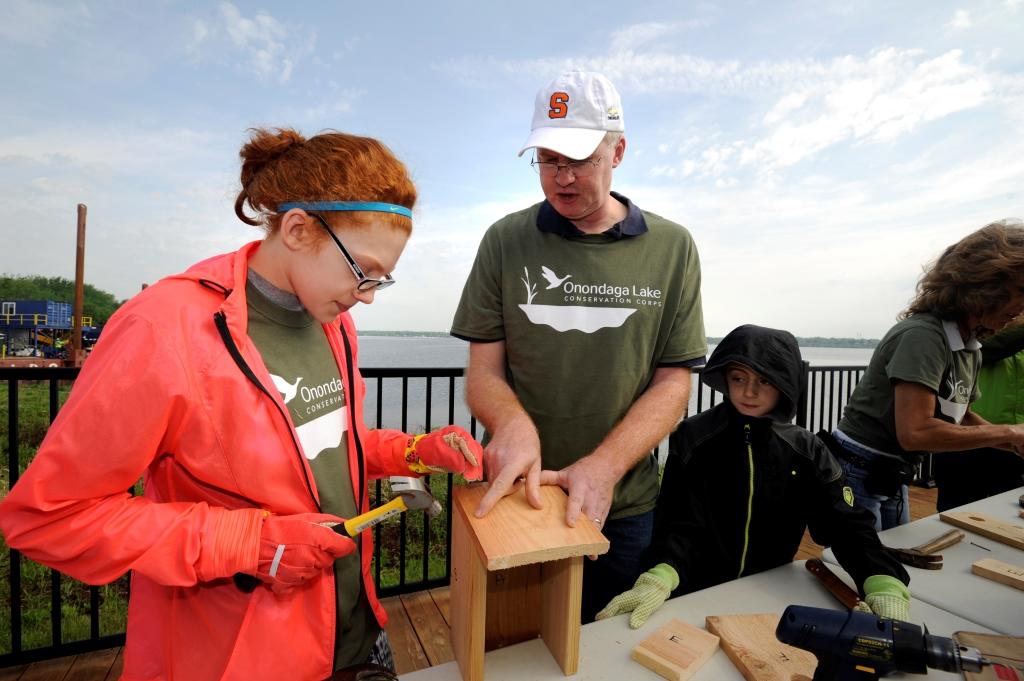 Tree Swallows and Eastern Bluebirds nest in cavities and often face a shortage of suitable nesting spots. Providing breeding boxes assists their reproduction, and in turn survival of the species.
Tree Swallows and Eastern Bluebirds nest in cavities and often face a shortage of suitable nesting spots. Providing breeding boxes assists their reproduction, and in turn survival of the species.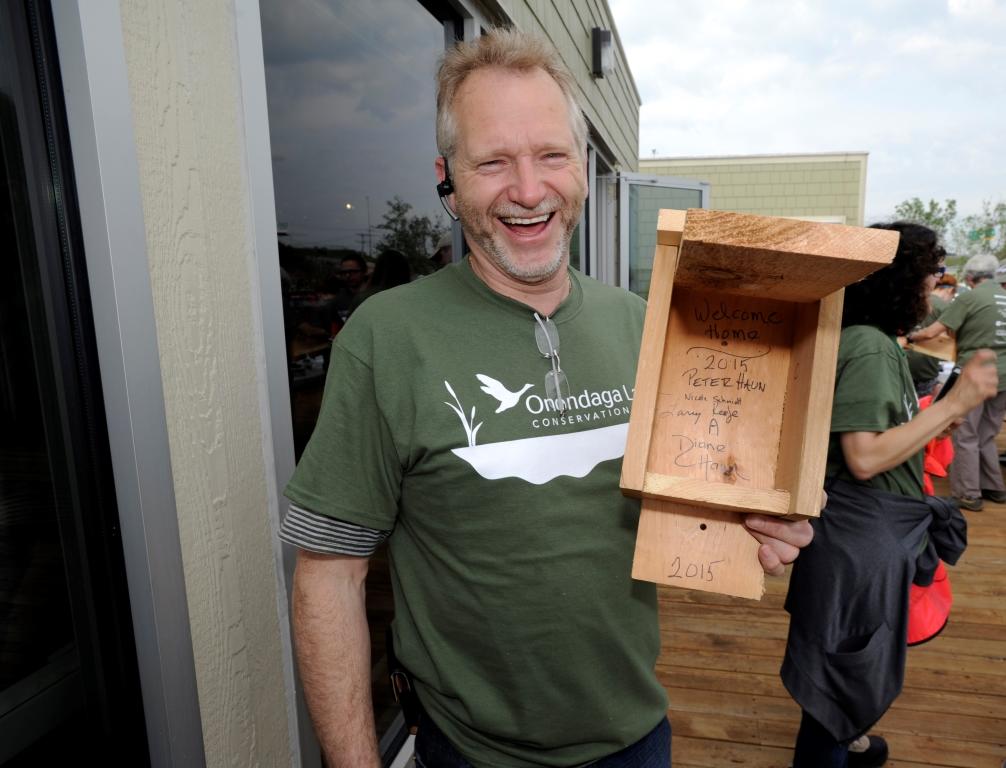 Peter Haun, from Fairmount, displays a box he helped build with a “Welcome Home” message for birds.
Peter Haun, from Fairmount, displays a box he helped build with a “Welcome Home” message for birds.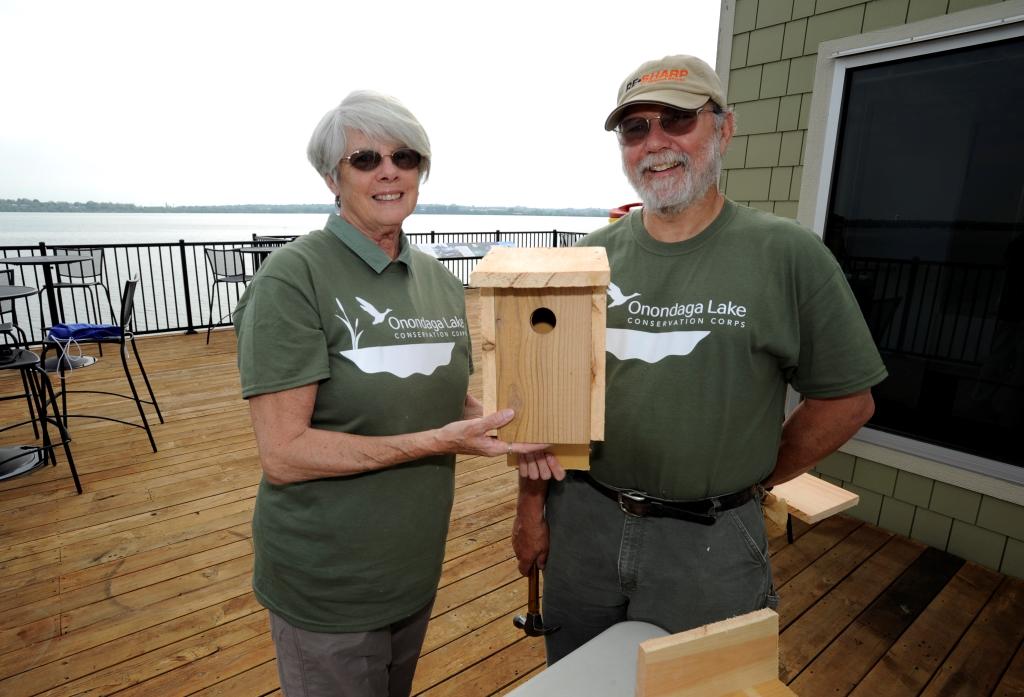 Onondaga Lake Conservation Corps volunteers Cheryl and Robert Belle, from Plainville, with the Tree Swallow box they assembled. Tree Swallows prefer to nest in a open area such as near wetlands or a lake.
Onondaga Lake Conservation Corps volunteers Cheryl and Robert Belle, from Plainville, with the Tree Swallow box they assembled. Tree Swallows prefer to nest in a open area such as near wetlands or a lake.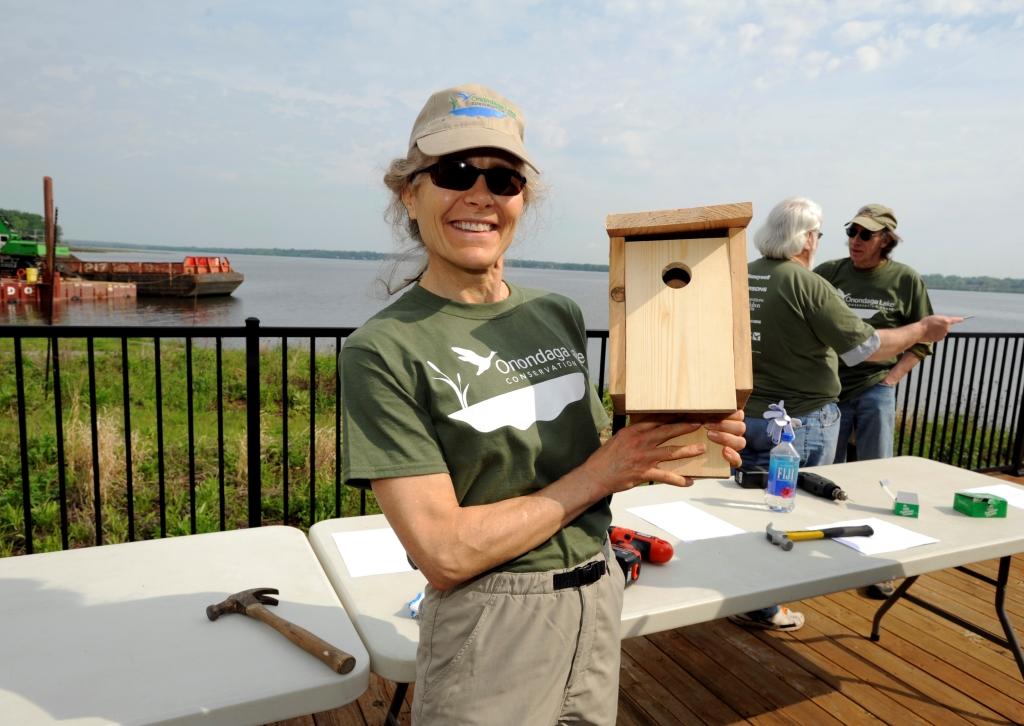 Onondaga Audubon member and Corps volunteer Ruth Florey with a breeding box to be installed along the shoreline.
Onondaga Audubon member and Corps volunteer Ruth Florey with a breeding box to be installed along the shoreline.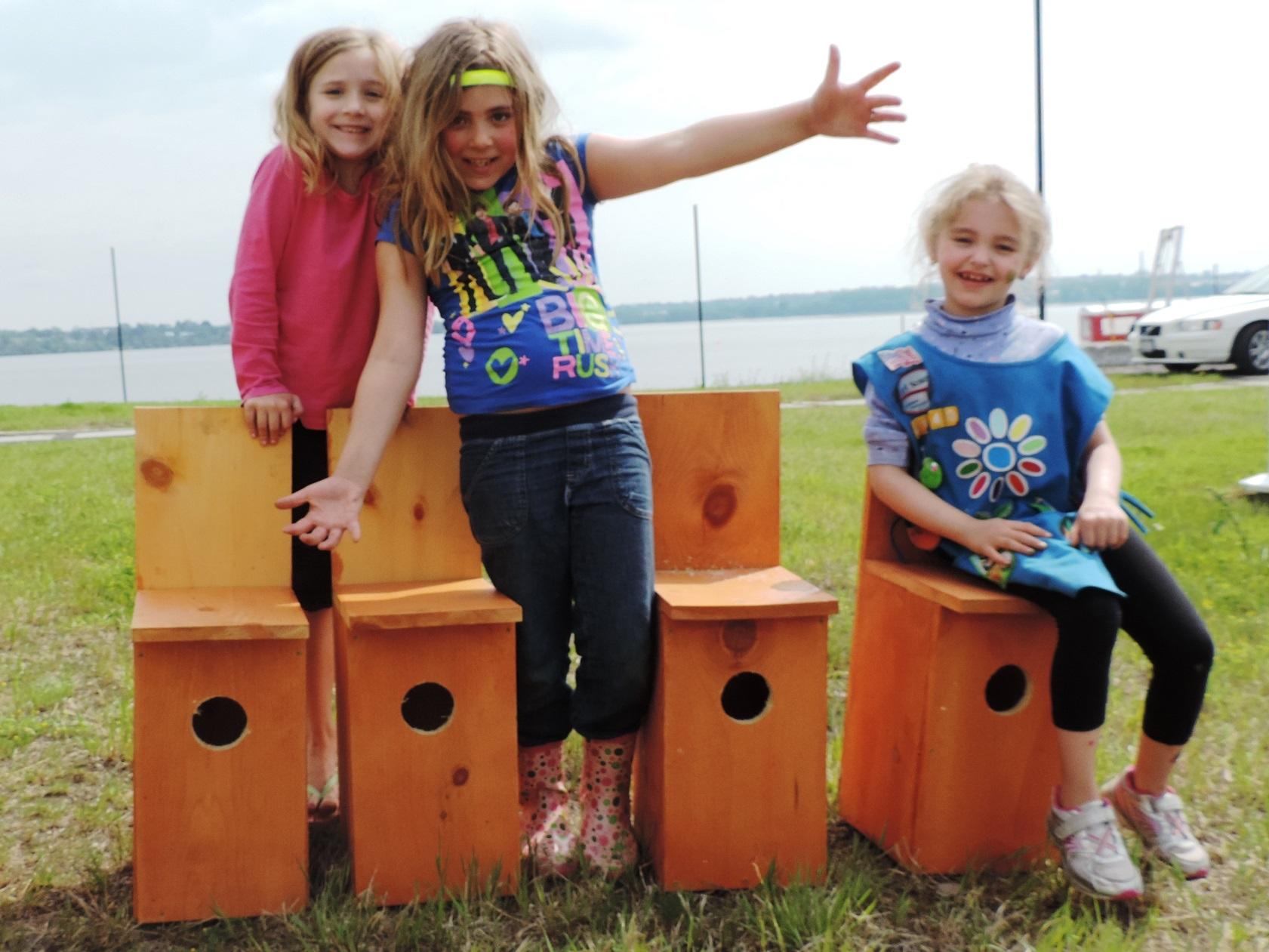 Members of Girl Scout Daisy Troop 41140 from North Rose built larger nest boxes for American kestrels, North America’s smallest falcon.
Members of Girl Scout Daisy Troop 41140 from North Rose built larger nest boxes for American kestrels, North America’s smallest falcon.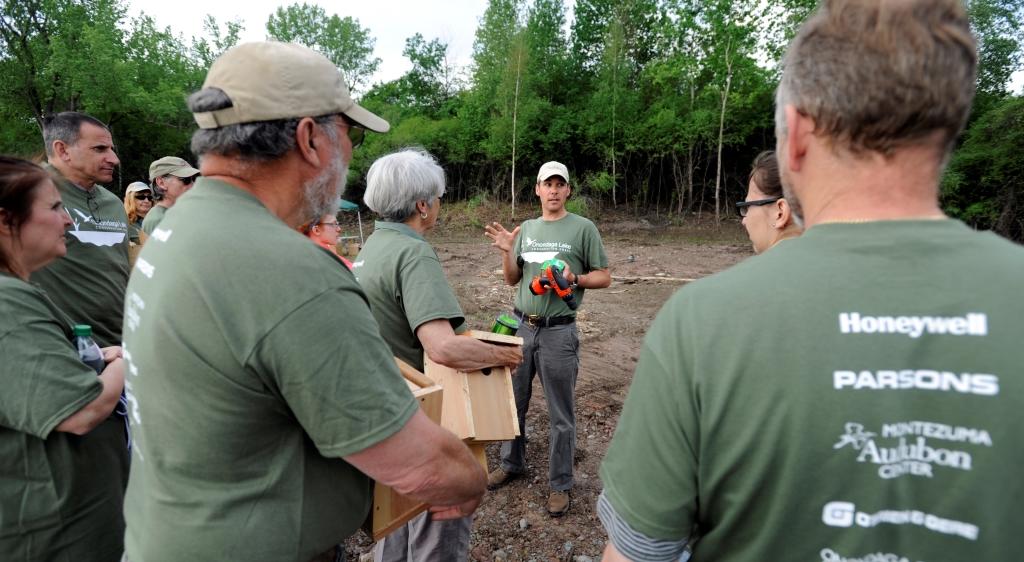 Center Director Chris Lajewski of the Montezuma Audubon Center explains important features of successful nest box installation, such as height off the ground and spacing.
Center Director Chris Lajewski of the Montezuma Audubon Center explains important features of successful nest box installation, such as height off the ground and spacing.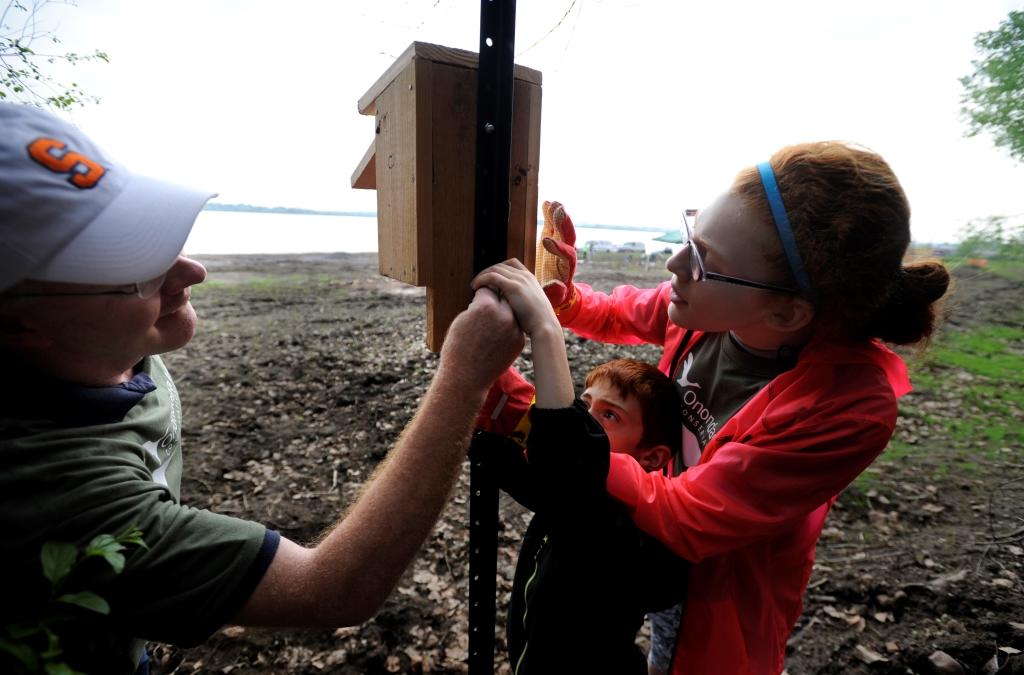 Abby Bustin (right) works on fastening a nest box to a pole with her brother Nathan and father Cary.
Abby Bustin (right) works on fastening a nest box to a pole with her brother Nathan and father Cary.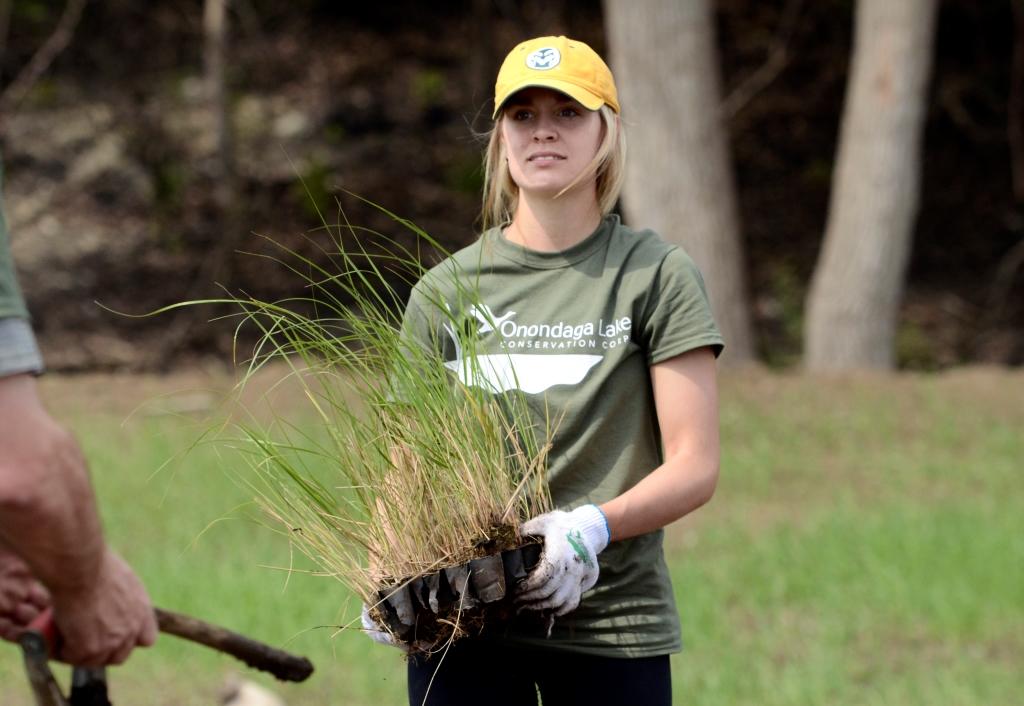 Volunteers also planted native species along the western shoreline, including soft rush, swamp milkweed, New England aster, fox sedge, and prairie cordgrass (seen here).
Volunteers also planted native species along the western shoreline, including soft rush, swamp milkweed, New England aster, fox sedge, and prairie cordgrass (seen here).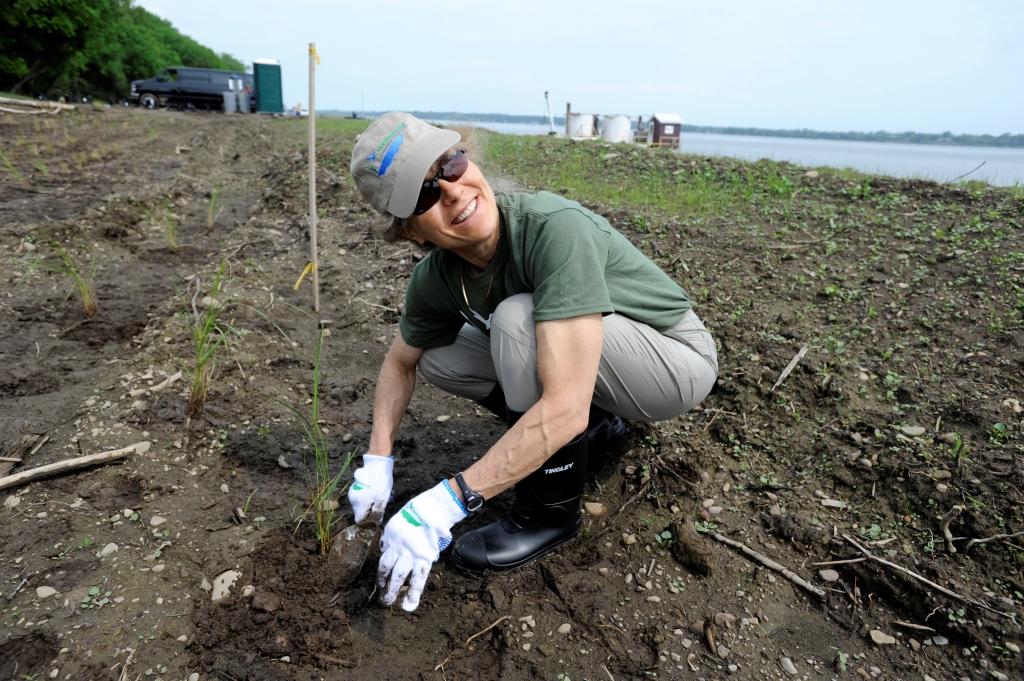 Twenty acres along the western shoreline will be transformed into new wetlands and improved habitat for wildlife.
Twenty acres along the western shoreline will be transformed into new wetlands and improved habitat for wildlife.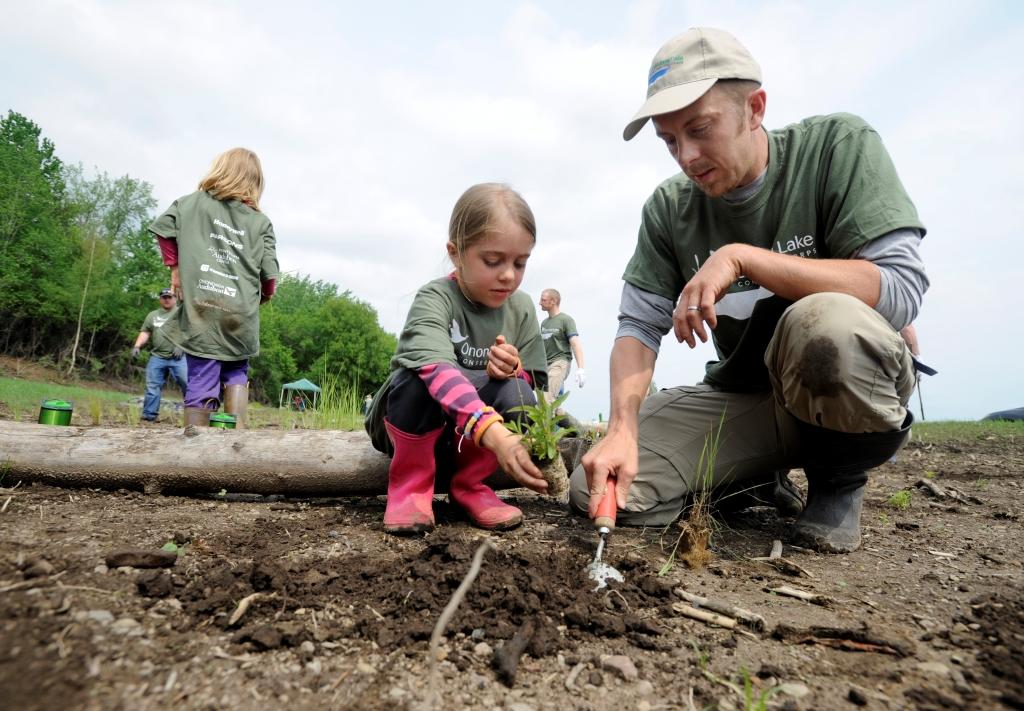 New England aster, being planted here, blooms late in summer with purple flowers attractive to bumblebees and butterflies.
New England aster, being planted here, blooms late in summer with purple flowers attractive to bumblebees and butterflies.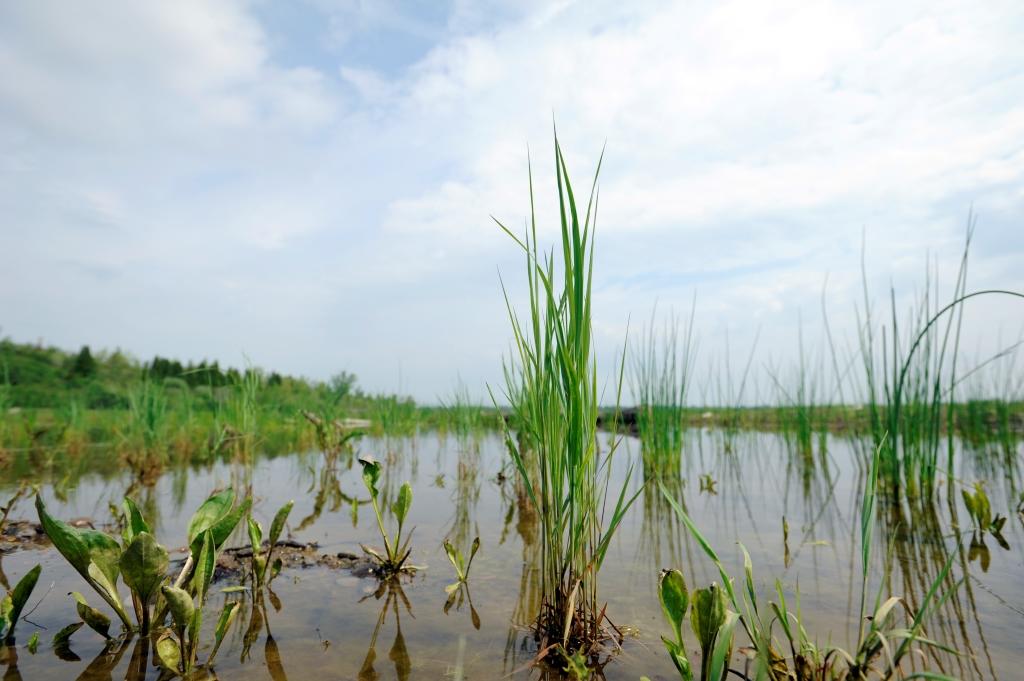 To date more than 323,000 native grasses, shrubs and trees have been planted. In July 2014, Conservation Corps members helped plant this wetland area along Onondaga Lake’s western shoreline.
To date more than 323,000 native grasses, shrubs and trees have been planted. In July 2014, Conservation Corps members helped plant this wetland area along Onondaga Lake’s western shoreline.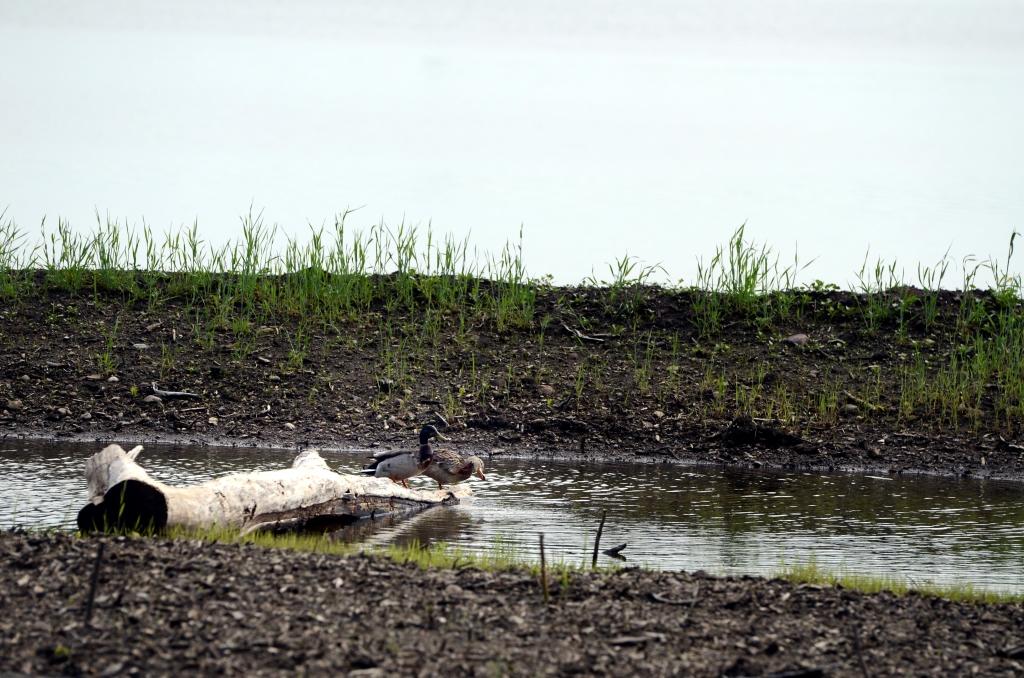 100 species of native freshwater marsh, grassland and woodland plant species will support aquatic habitat for amphibians, reptiles and birds, such as this pair of Mallards on a log near the new planting area.
100 species of native freshwater marsh, grassland and woodland plant species will support aquatic habitat for amphibians, reptiles and birds, such as this pair of Mallards on a log near the new planting area.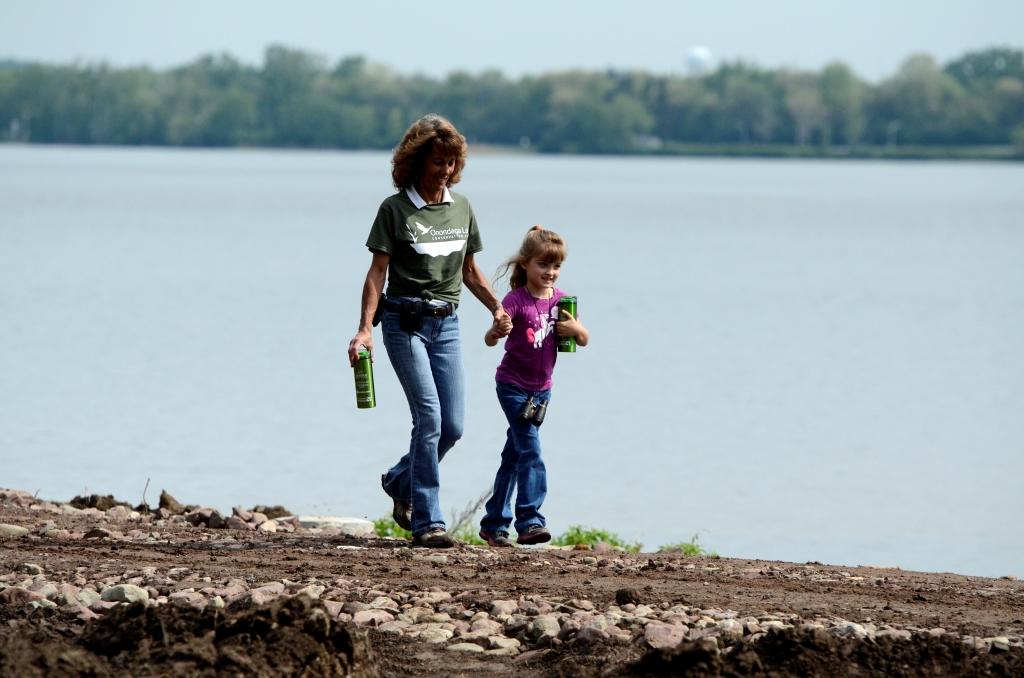 Karen Cahill and her daughter, Grace, walk along Onondaga Lake.
Karen Cahill and her daughter, Grace, walk along Onondaga Lake.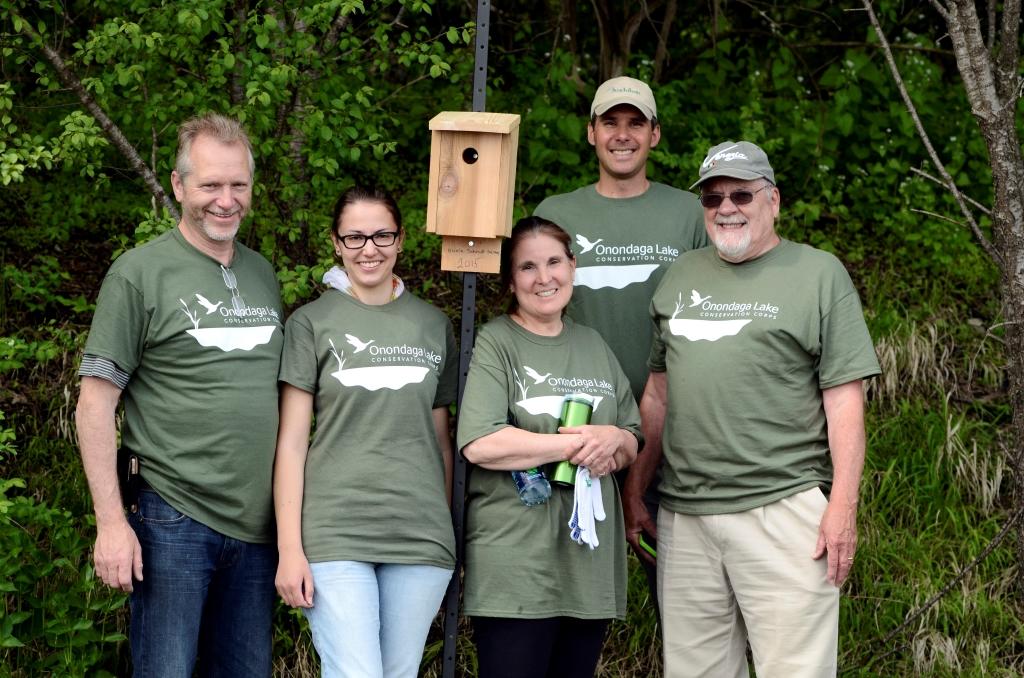 Onondaga Lake Conservation Corps volunteers (from left) Peter Haun, Nicole Schmidt, Diane Haun, Chris Lajewski and Lawrence Keefe.
Onondaga Lake Conservation Corps volunteers (from left) Peter Haun, Nicole Schmidt, Diane Haun, Chris Lajewski and Lawrence Keefe.1 of 19
-
July 2014
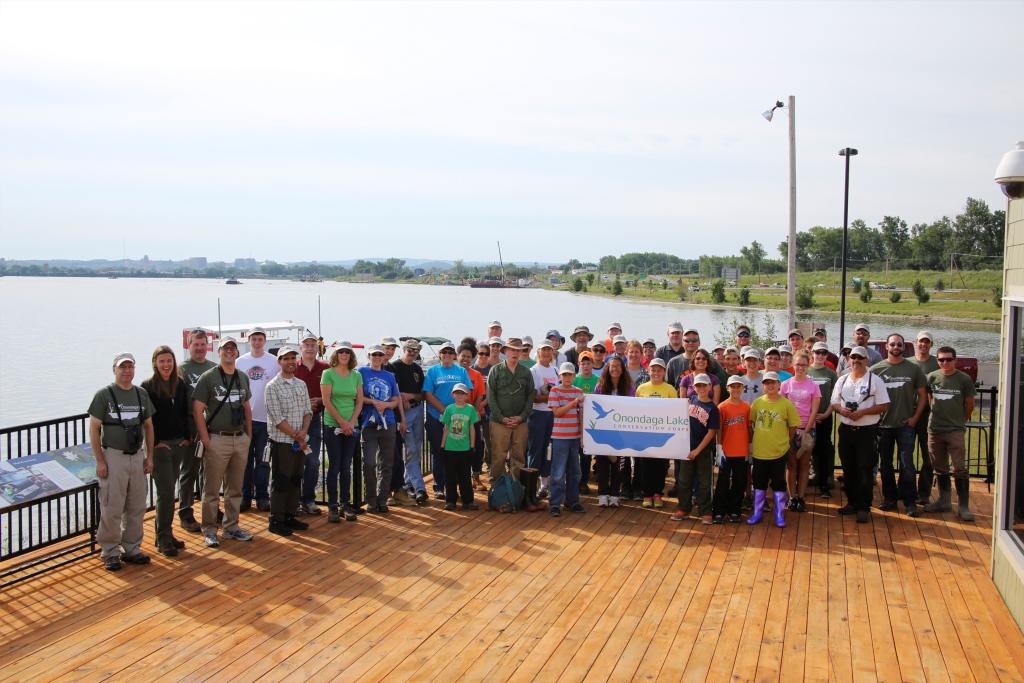 Fifty-five volunteers gathered Saturday, July 19, for the eighth Onondaga Lake Conservation Corps event. The Corps is now two years old; its inaugural event was held July 2012.
Fifty-five volunteers gathered Saturday, July 19, for the eighth Onondaga Lake Conservation Corps event. The Corps is now two years old; its inaugural event was held July 2012.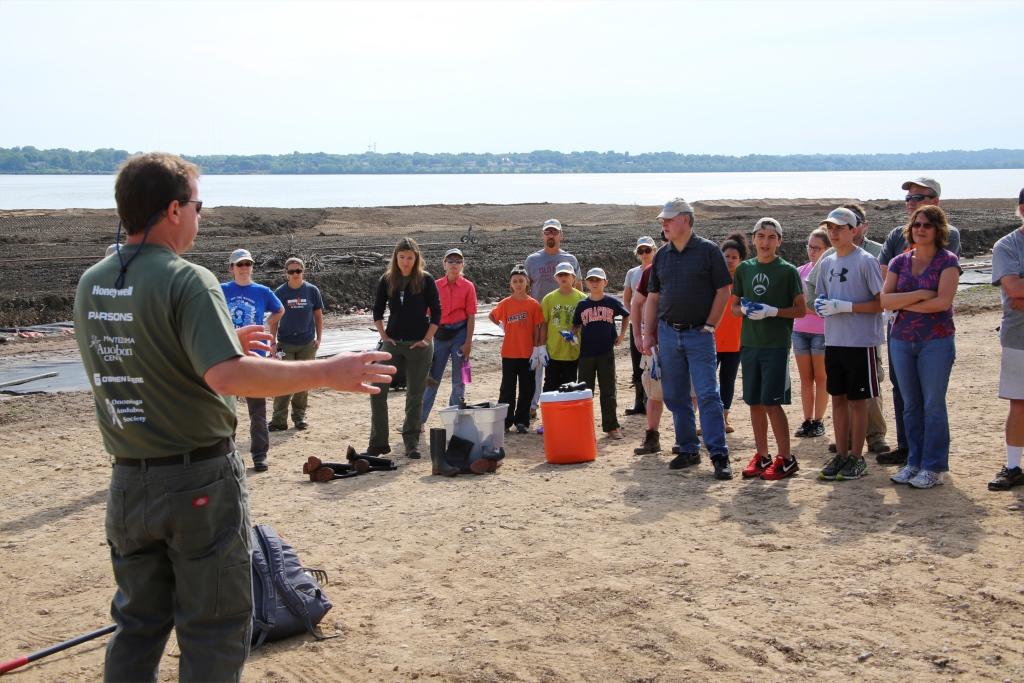 Steve Mooney, managing scientist at O’Brien & Gere and Corps volunteer, briefs a group of attendees before they begin planting along the Onondaga Lake shoreline.
Steve Mooney, managing scientist at O’Brien & Gere and Corps volunteer, briefs a group of attendees before they begin planting along the Onondaga Lake shoreline. Volunteers carry native grasses – prairie cordgrass (left), fox sedge (center), and path rush (far right) - to the planting area. Prairie cordgrass was once one of the most common plant species on the western shoreline.
Volunteers carry native grasses – prairie cordgrass (left), fox sedge (center), and path rush (far right) - to the planting area. Prairie cordgrass was once one of the most common plant species on the western shoreline.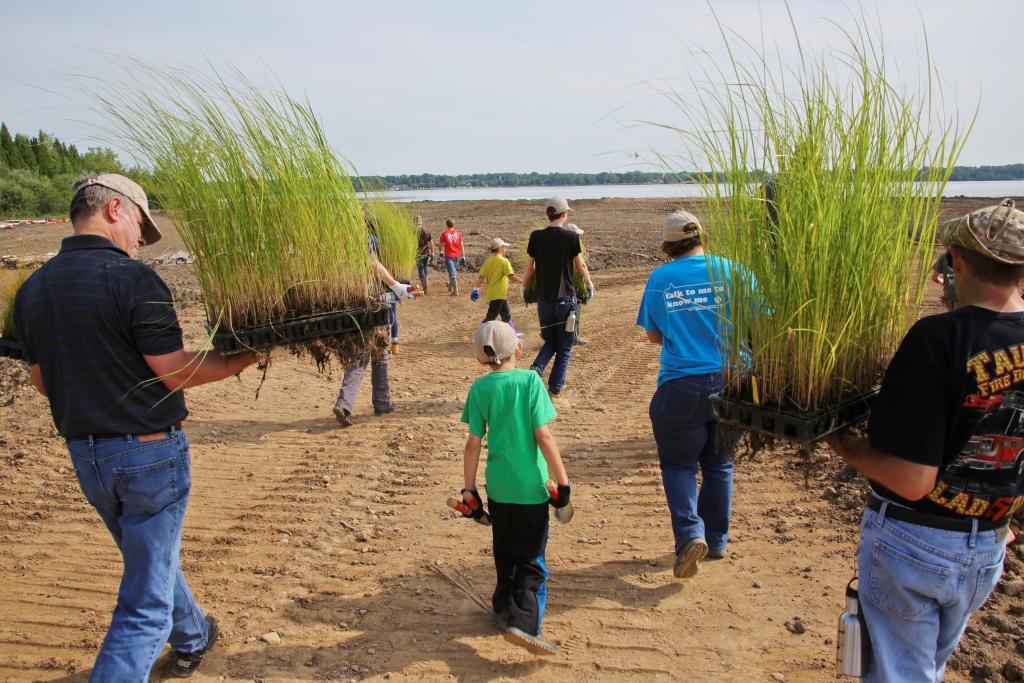 Up to 10 acres of wetlands will be created along Onondaga Lake’s western shoreline. The wetlands will support fish, amphibians, reptiles and birds, including migrating waterfowl.
Up to 10 acres of wetlands will be created along Onondaga Lake’s western shoreline. The wetlands will support fish, amphibians, reptiles and birds, including migrating waterfowl.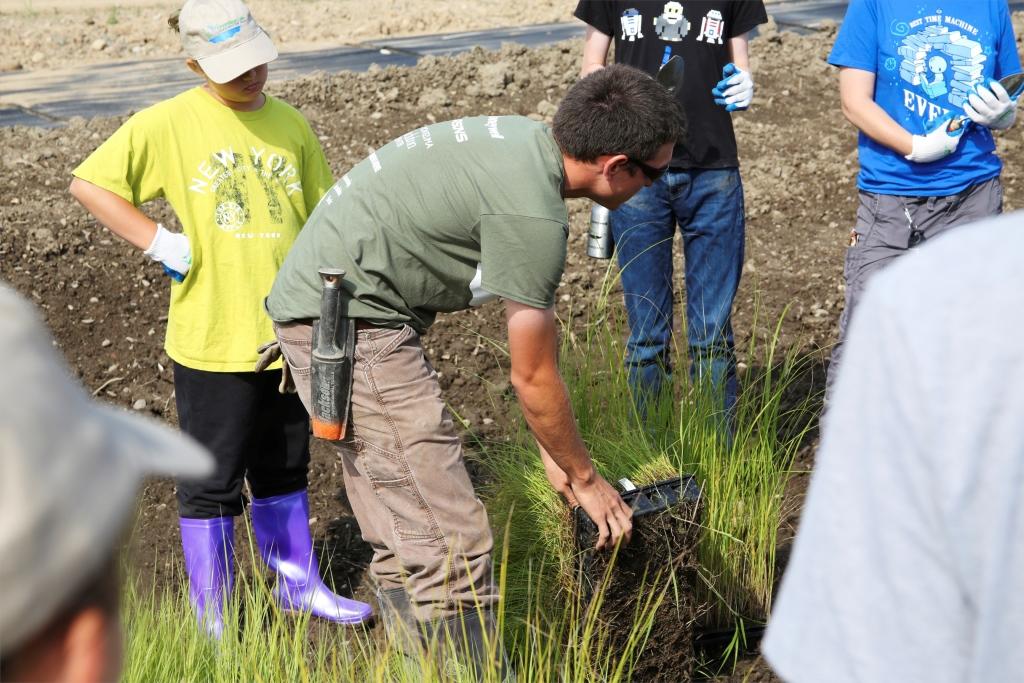 Keith Cardinali, scientist at O’Brien & Gere, demonstrates how to carefully remove individual prairie cordgrass plants, or “plugs,” from trays.
Keith Cardinali, scientist at O’Brien & Gere, demonstrates how to carefully remove individual prairie cordgrass plants, or “plugs,” from trays.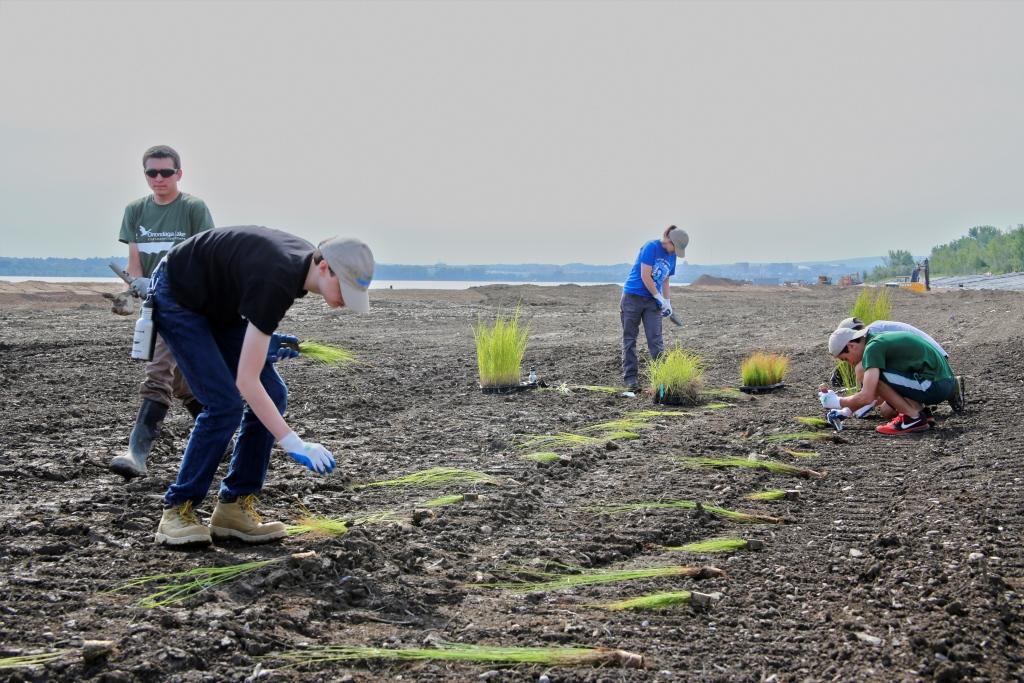 Volunteers lay out the young plants for proper spacing, in order to best establish the new habitat. The area will later be flooded with water to create the wetland.
Volunteers lay out the young plants for proper spacing, in order to best establish the new habitat. The area will later be flooded with water to create the wetland.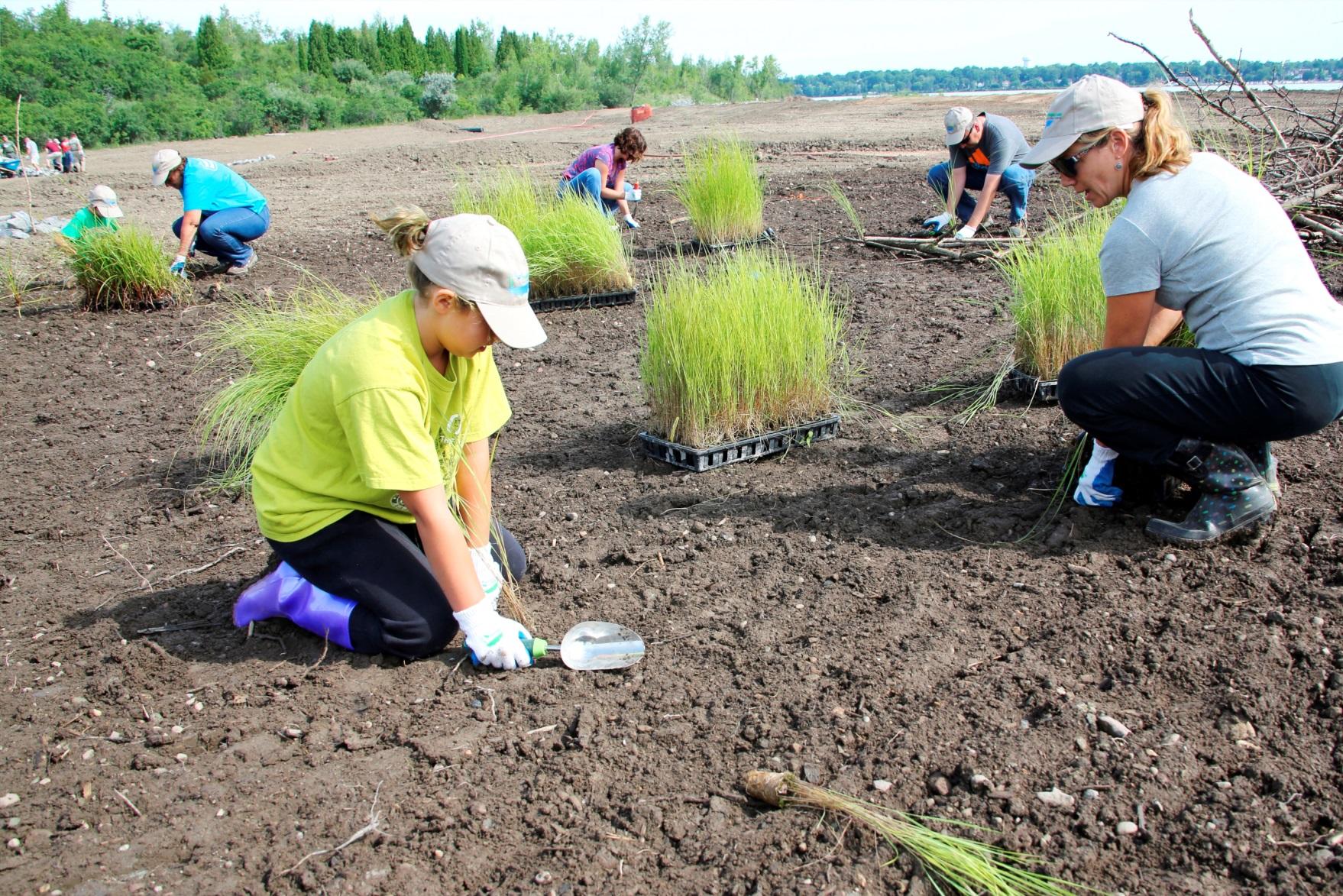 Julie Biondolillo (right) and her daughter Mara, from Pennellville, NY, choose the perfect spot to plant bluejoint grass.
Julie Biondolillo (right) and her daughter Mara, from Pennellville, NY, choose the perfect spot to plant bluejoint grass.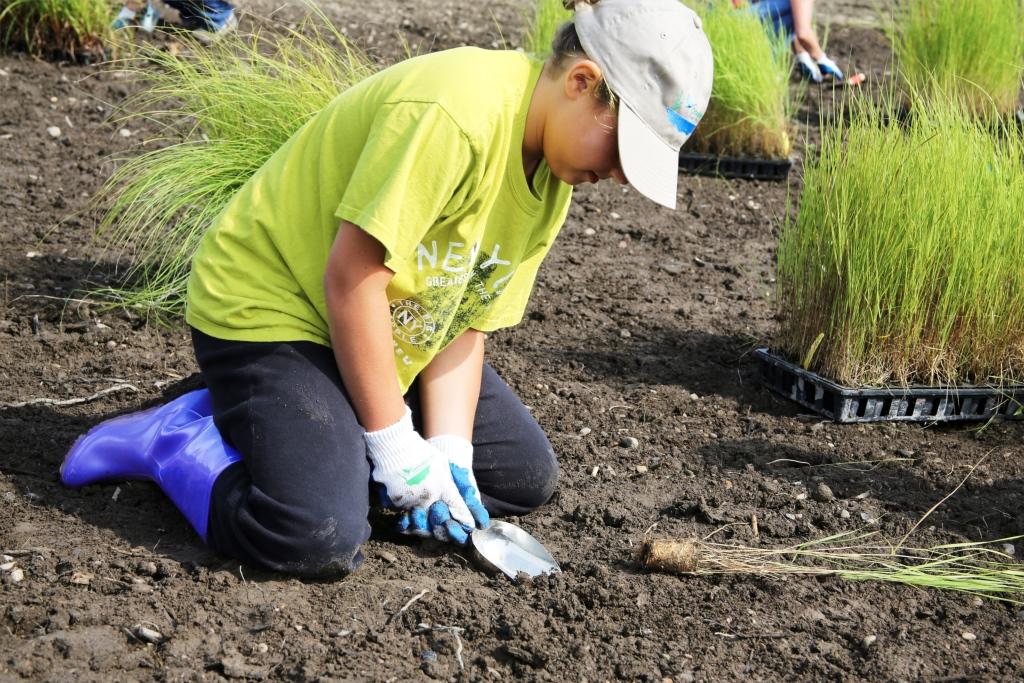 The hands-on activities offered by Onondaga Lake Conservation Corps are enjoyed by all ages as participants learn about the Onondaga Lake watershed.
The hands-on activities offered by Onondaga Lake Conservation Corps are enjoyed by all ages as participants learn about the Onondaga Lake watershed.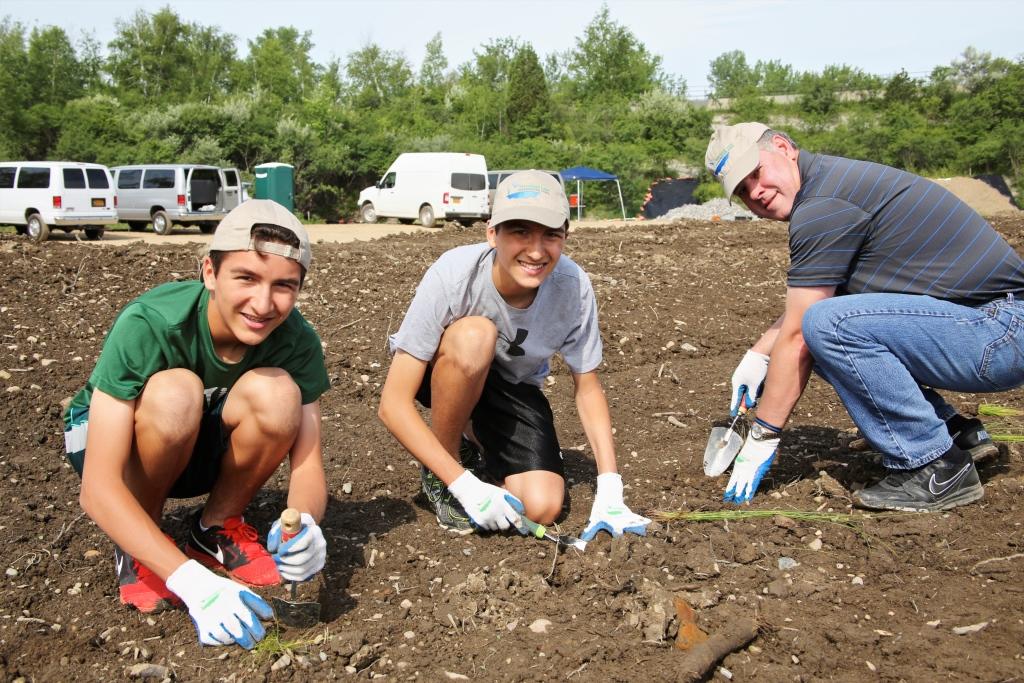 Onondaga Lake is showing remarkable signs of recovery. Twins Jonathan (left) and Brandon Formoza, along with Brian Kurish, will remember being part of the beginning of the western shoreline’s transformation into productive habitat.
Onondaga Lake is showing remarkable signs of recovery. Twins Jonathan (left) and Brandon Formoza, along with Brian Kurish, will remember being part of the beginning of the western shoreline’s transformation into productive habitat.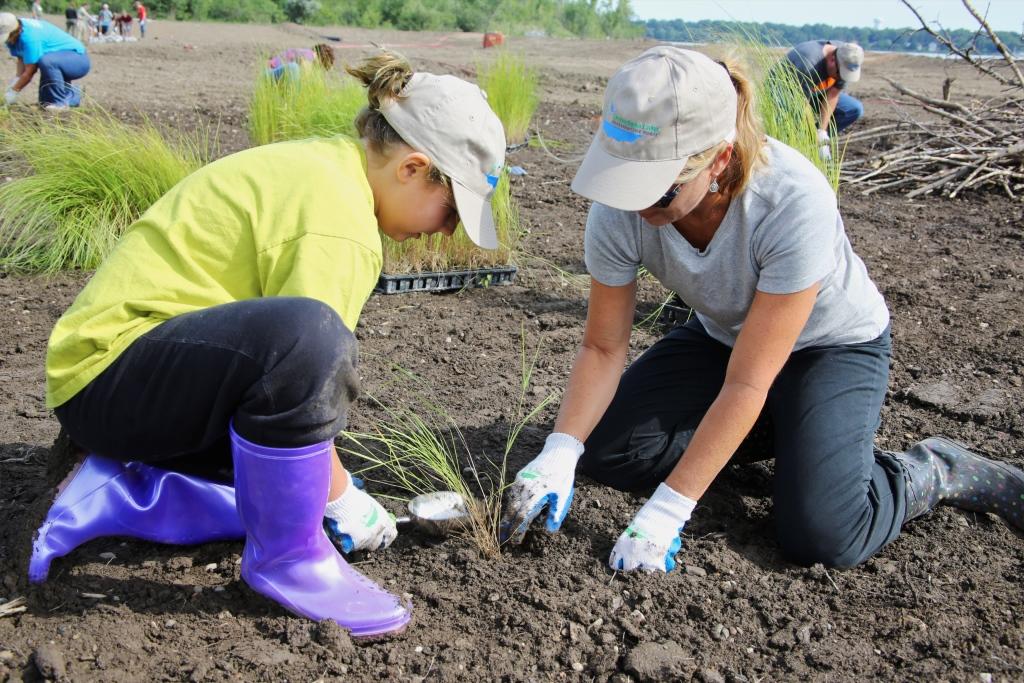 Altogether one hundred native freshwater marsh, grassland, and woodland plant species will be planted in shoreline wetlands to create a healthy aquatic ecosystem.
Altogether one hundred native freshwater marsh, grassland, and woodland plant species will be planted in shoreline wetlands to create a healthy aquatic ecosystem.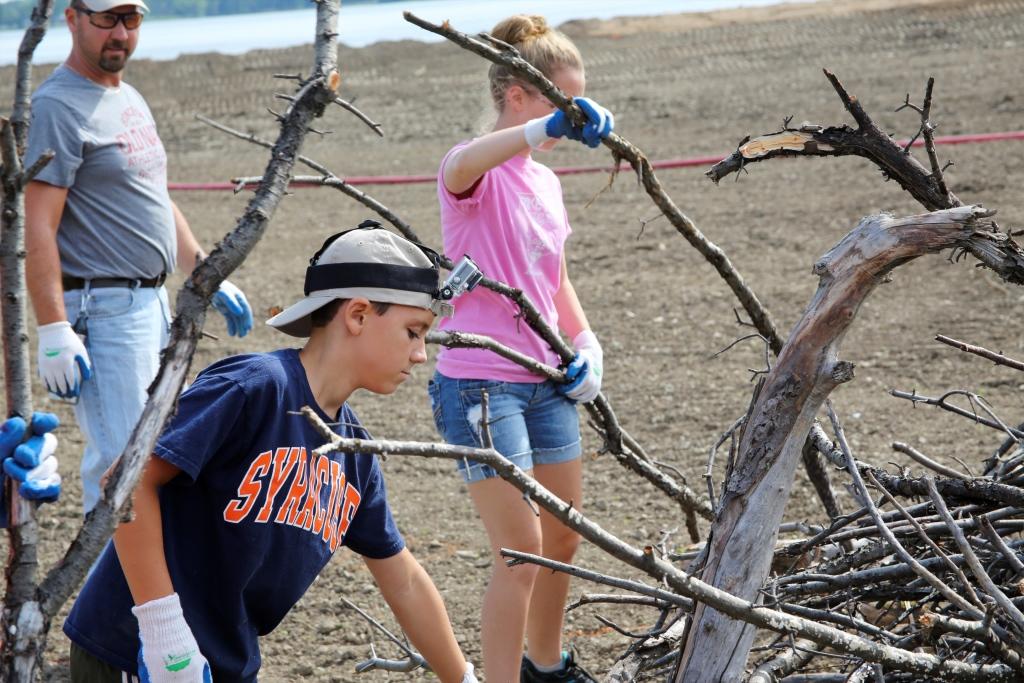 Brush piles provide immediate habitat for a variety of small mammals, amphibians and birds, as cover from harsh weather and extreme temperatures, safety in open areas, and locations to safely nest.
Brush piles provide immediate habitat for a variety of small mammals, amphibians and birds, as cover from harsh weather and extreme temperatures, safety in open areas, and locations to safely nest.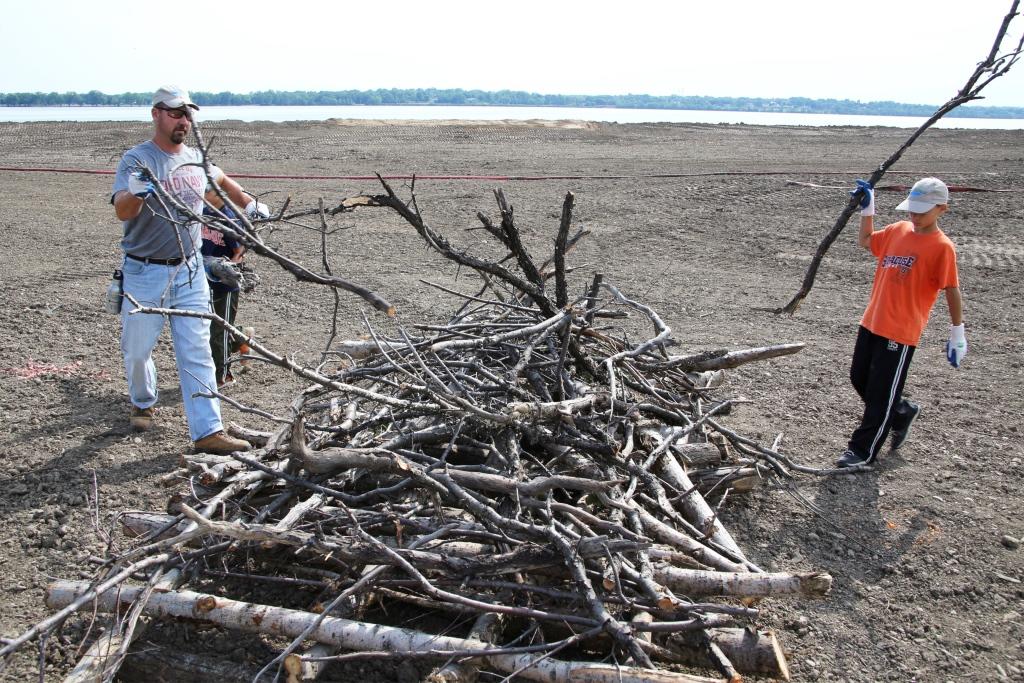 Brayden (right) and his dad Matt Biondolillo build a brush pile near the wetland area. Brush piles are built in a stable arrangement, with heavier pieces forming the foundation near the bottom, and adequate spacing between branches.
Brayden (right) and his dad Matt Biondolillo build a brush pile near the wetland area. Brush piles are built in a stable arrangement, with heavier pieces forming the foundation near the bottom, and adequate spacing between branches.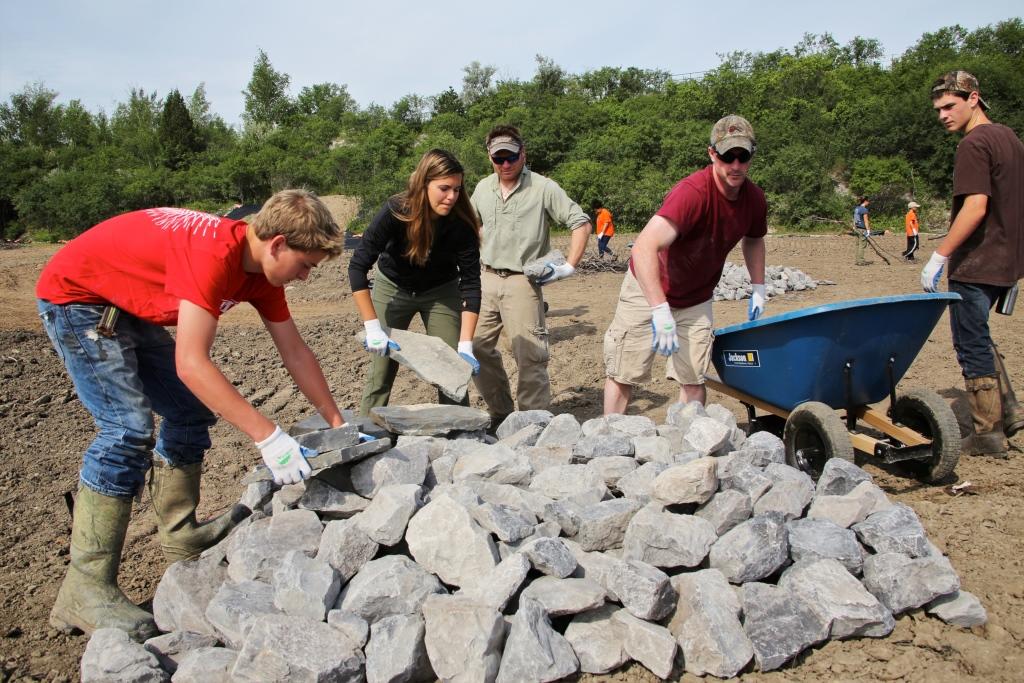 Natalia Cagide Elmer (center), environmental engineer at Parsons, works with other Corps volunteers to build a rock pile to support reptiles and small mammals. Smaller animals in turn serve as food sources for larger animals and birds.
Natalia Cagide Elmer (center), environmental engineer at Parsons, works with other Corps volunteers to build a rock pile to support reptiles and small mammals. Smaller animals in turn serve as food sources for larger animals and birds.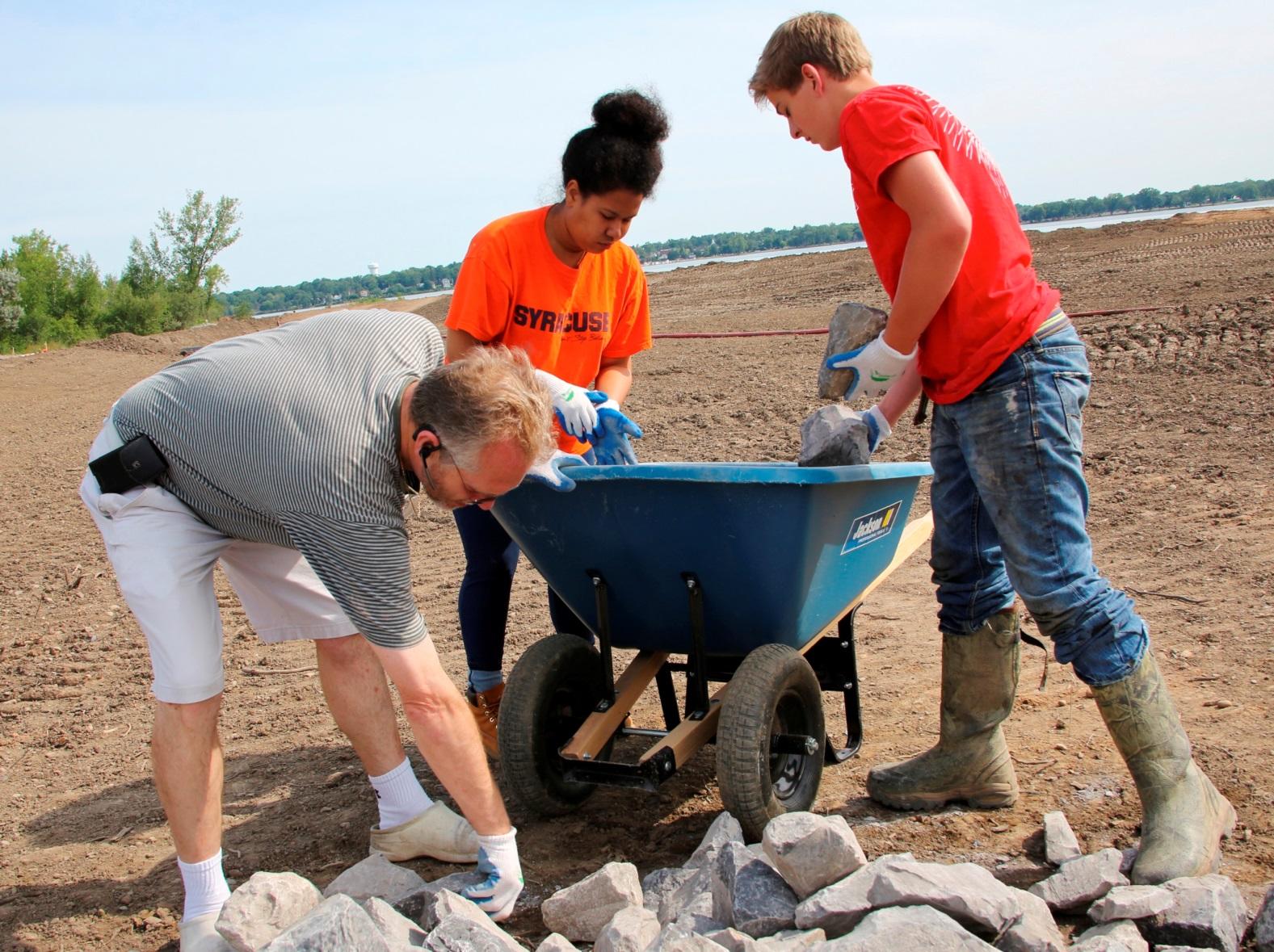 Peter Haun (left) from Camillus, Patrina Bailey (center), a Syracuse University engineering student, and Matthew Goetzmann from Skaneateles, place rocks by hand to form a stable structure.
Peter Haun (left) from Camillus, Patrina Bailey (center), a Syracuse University engineering student, and Matthew Goetzmann from Skaneateles, place rocks by hand to form a stable structure.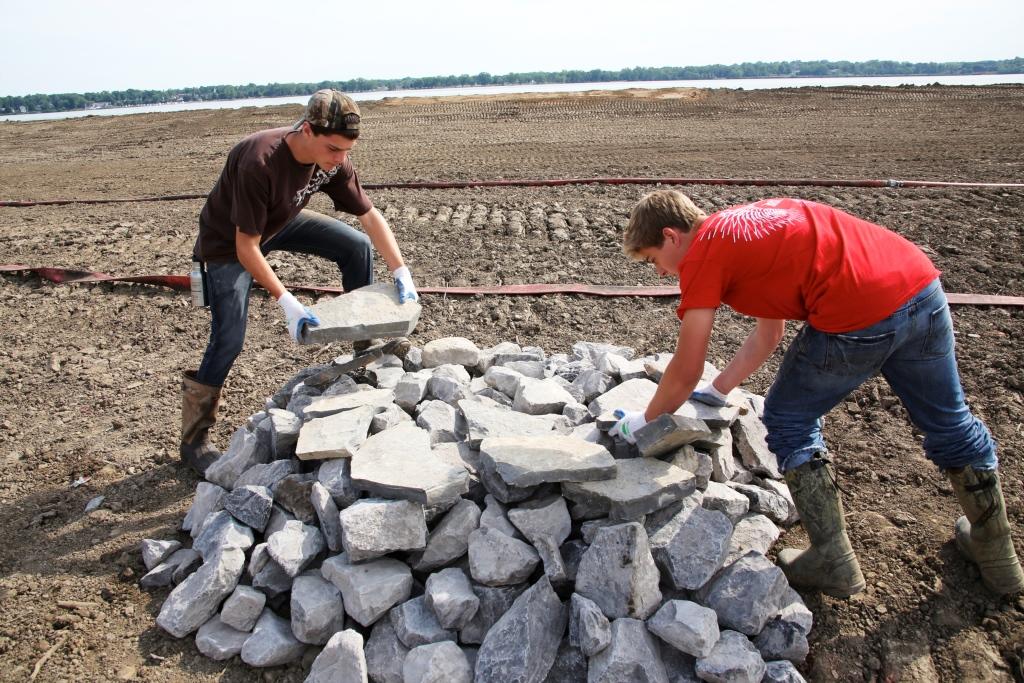 The flat rocks on top of this rock pile will provide turtles and snakes surfaces to bask in the sun and warm themselves.
The flat rocks on top of this rock pile will provide turtles and snakes surfaces to bask in the sun and warm themselves.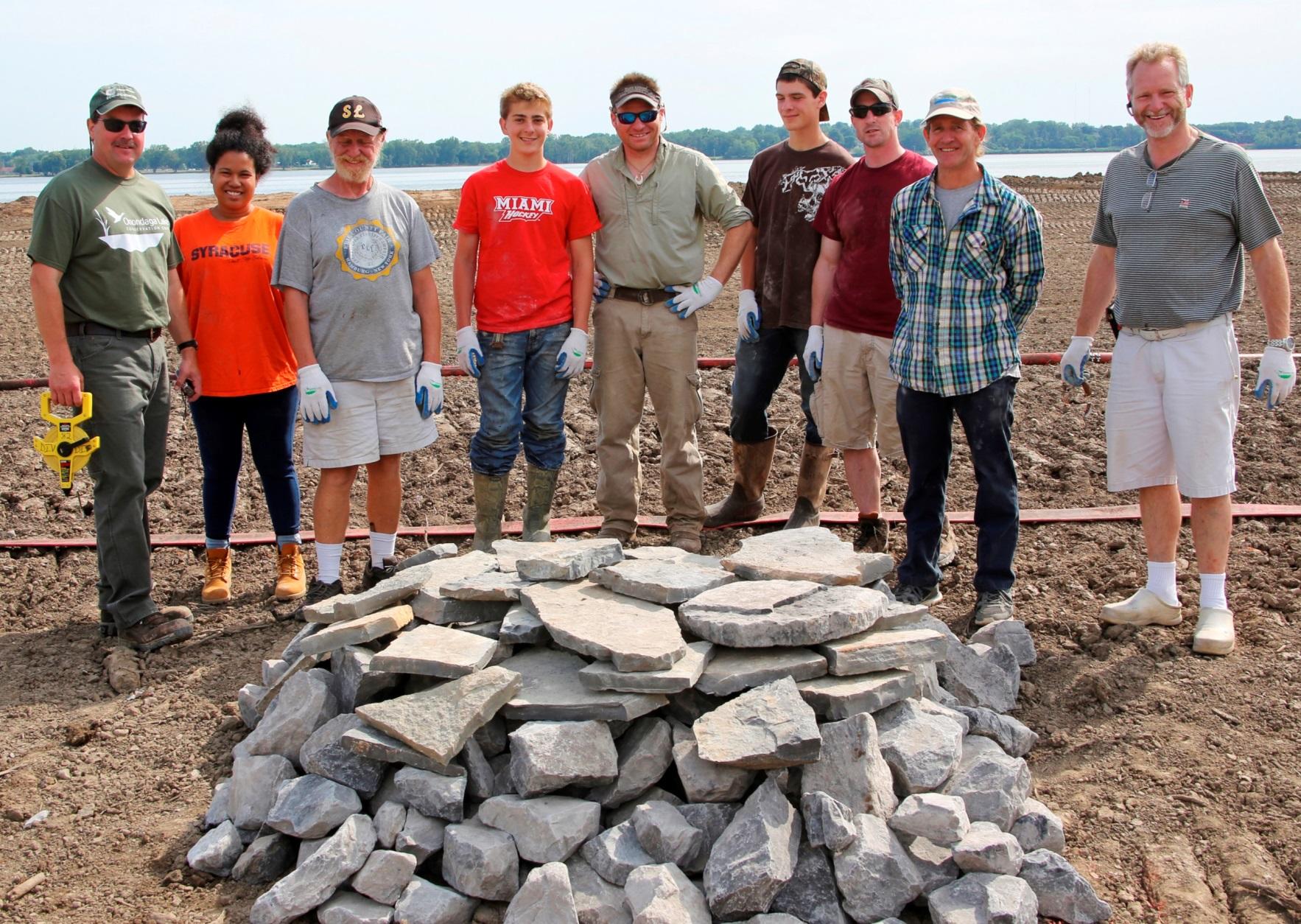 The day’s activities will help restore a healthy Onondaga Lake ecosystem and sustain the lake’s value as an Important Bird Area.
The day’s activities will help restore a healthy Onondaga Lake ecosystem and sustain the lake’s value as an Important Bird Area.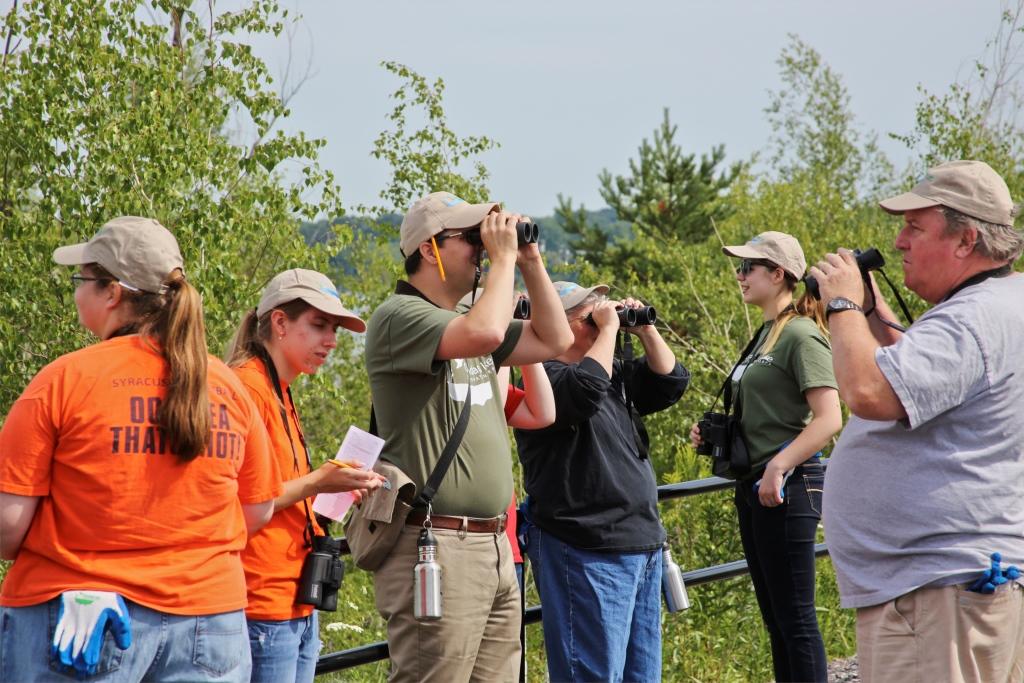 Volunteers rotate through several activities. With help from Audubon, 41 species of birds are recorded, including wood duck, killdeer, downy woodpecker, and American goldfinch, to name a few.
Volunteers rotate through several activities. With help from Audubon, 41 species of birds are recorded, including wood duck, killdeer, downy woodpecker, and American goldfinch, to name a few.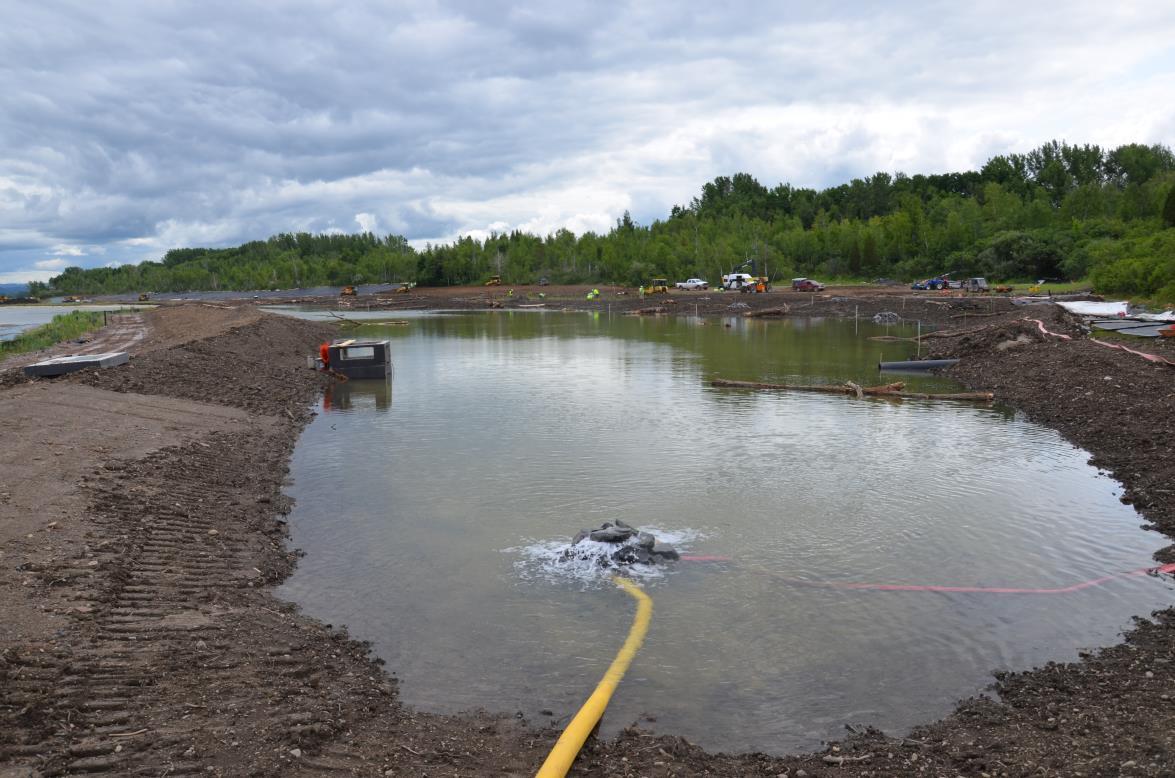 A week after the Corps event, rain and pumped water begin to fill the new wetland along Onondaga Lake’s western shoreline. The area planted by Corps volunteers is in the background.
A week after the Corps event, rain and pumped water begin to fill the new wetland along Onondaga Lake’s western shoreline. The area planted by Corps volunteers is in the background.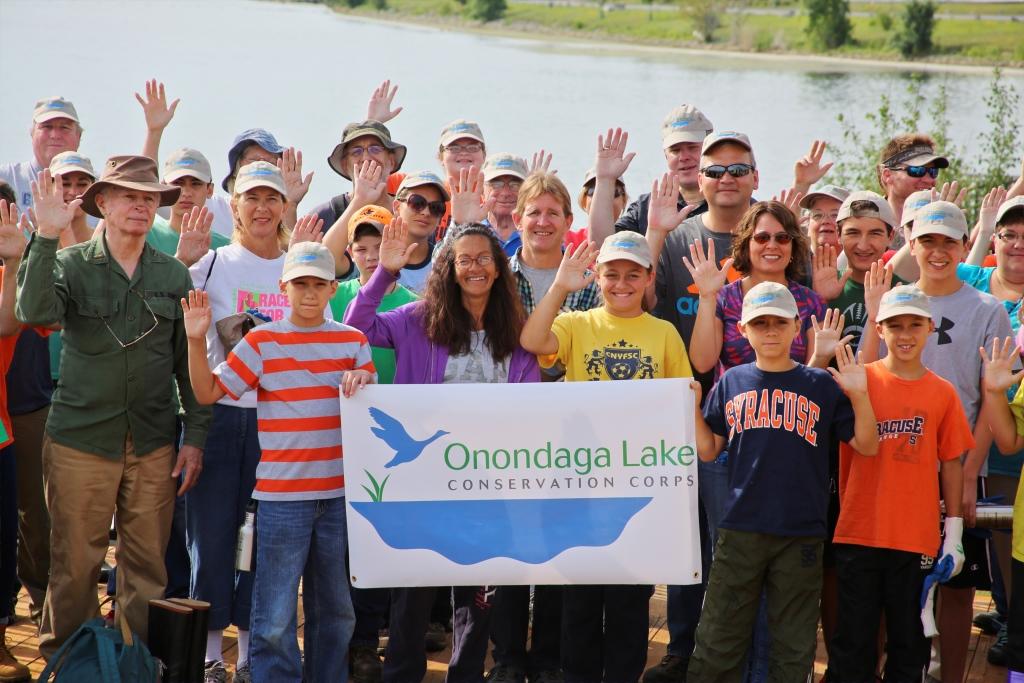 Corps members regroup Saturday, July 19, at the Onondaga Lake Visitors Center, where they share outcomes and pledge “to protect and conserve the natural resources of Onondaga Lake.”
Corps members regroup Saturday, July 19, at the Onondaga Lake Visitors Center, where they share outcomes and pledge “to protect and conserve the natural resources of Onondaga Lake.”1 of 19
Water Chestnut Removal
-
August 2016
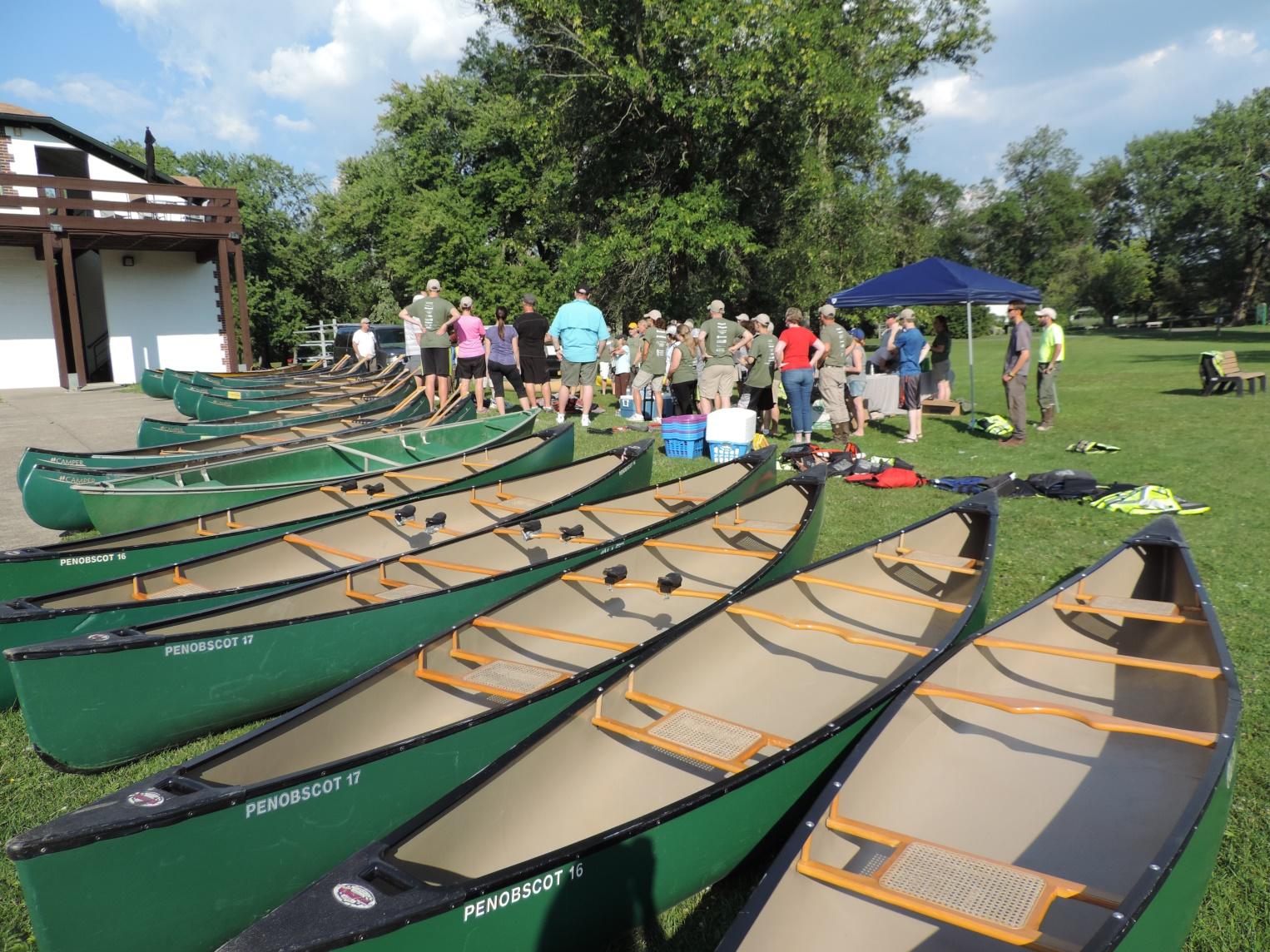 Participants gather at the second annual Onondaga Lake Conservation Corps water chestnut removal event on Thursday evening, August 4.
Participants gather at the second annual Onondaga Lake Conservation Corps water chestnut removal event on Thursday evening, August 4.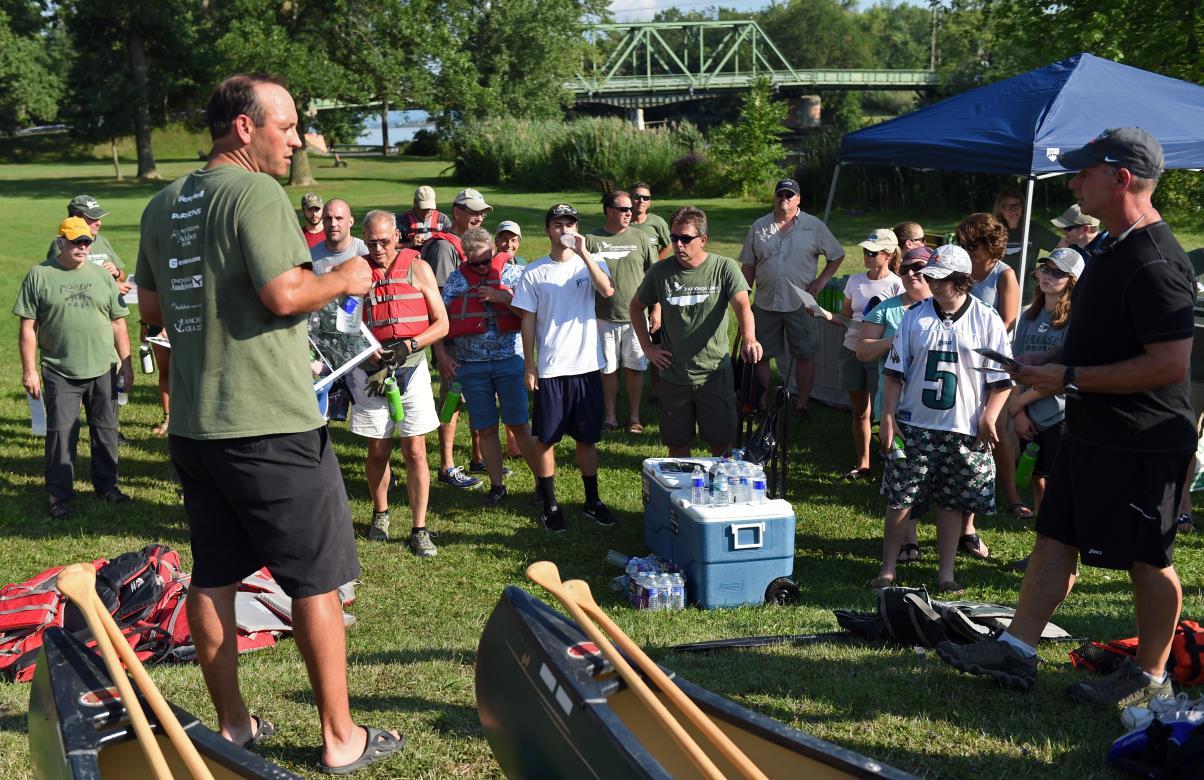 Tim Johnson (left), Senior Managing Scientist at Anchor QEA, welcomes volunteers and orients them to the evening’s action plan.
Tim Johnson (left), Senior Managing Scientist at Anchor QEA, welcomes volunteers and orients them to the evening’s action plan.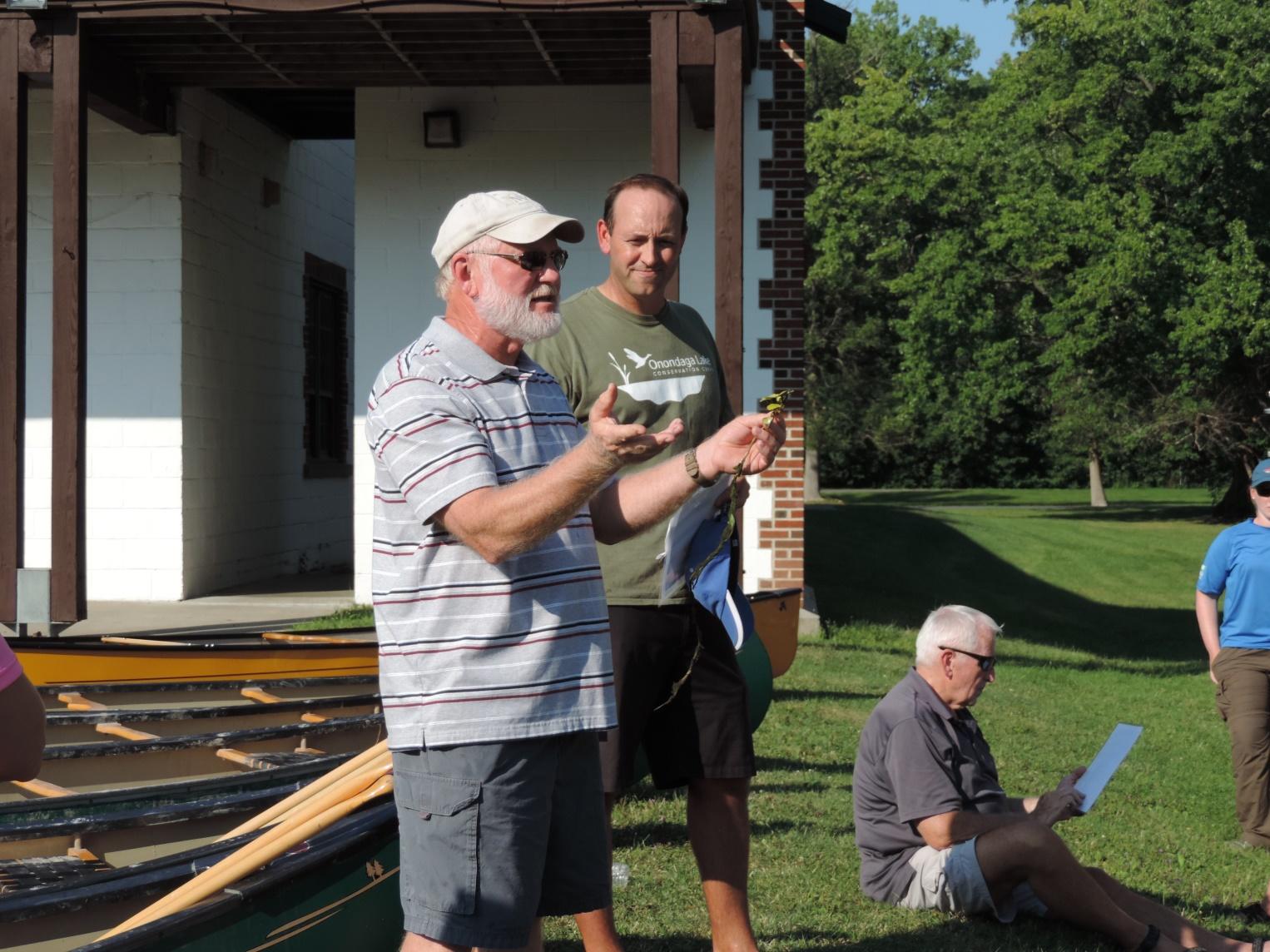 Joe McMullen (left), habitat expert with OBG, shows volunteers a sample water chestnut plant (Trapa natans). Waterproof cards with information about the invasive plant are distributed.
Joe McMullen (left), habitat expert with OBG, shows volunteers a sample water chestnut plant (Trapa natans). Waterproof cards with information about the invasive plant are distributed.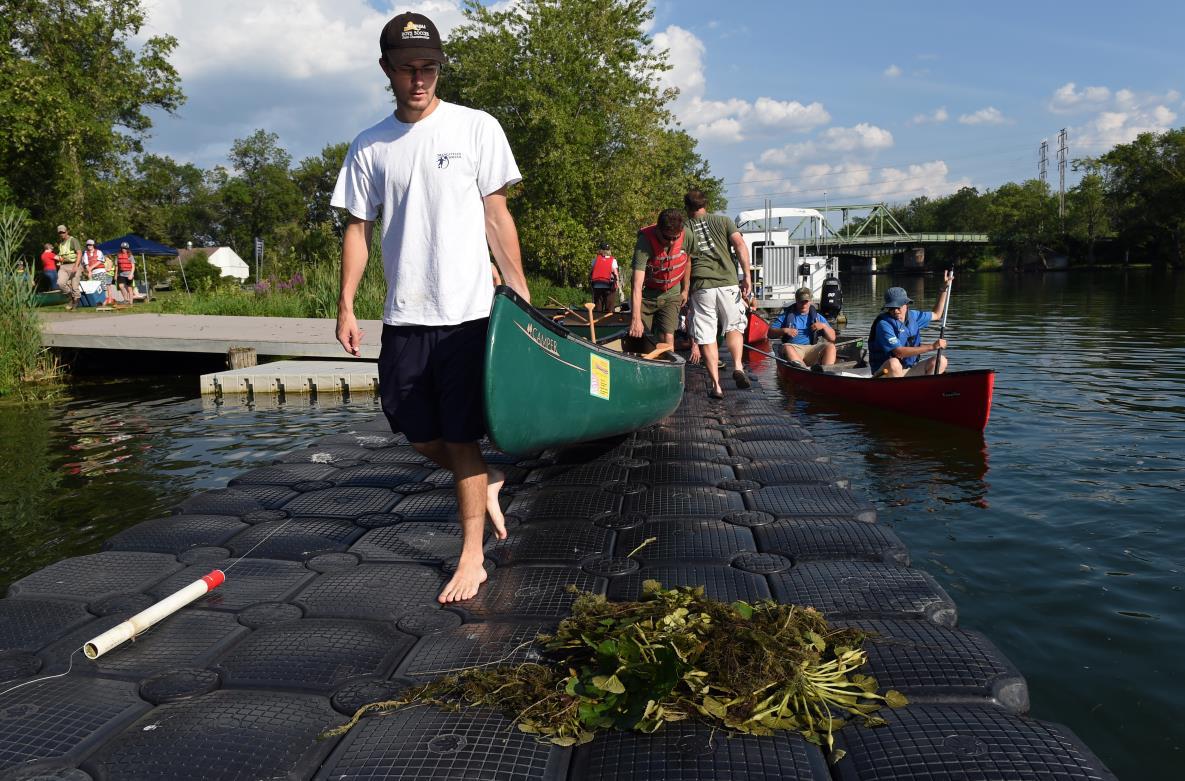 Nick Glaza (left) and his father Ed, of Skaneateles, carry their canoe out to launch, passing by sample water chestnut plants on the dock.
Nick Glaza (left) and his father Ed, of Skaneateles, carry their canoe out to launch, passing by sample water chestnut plants on the dock.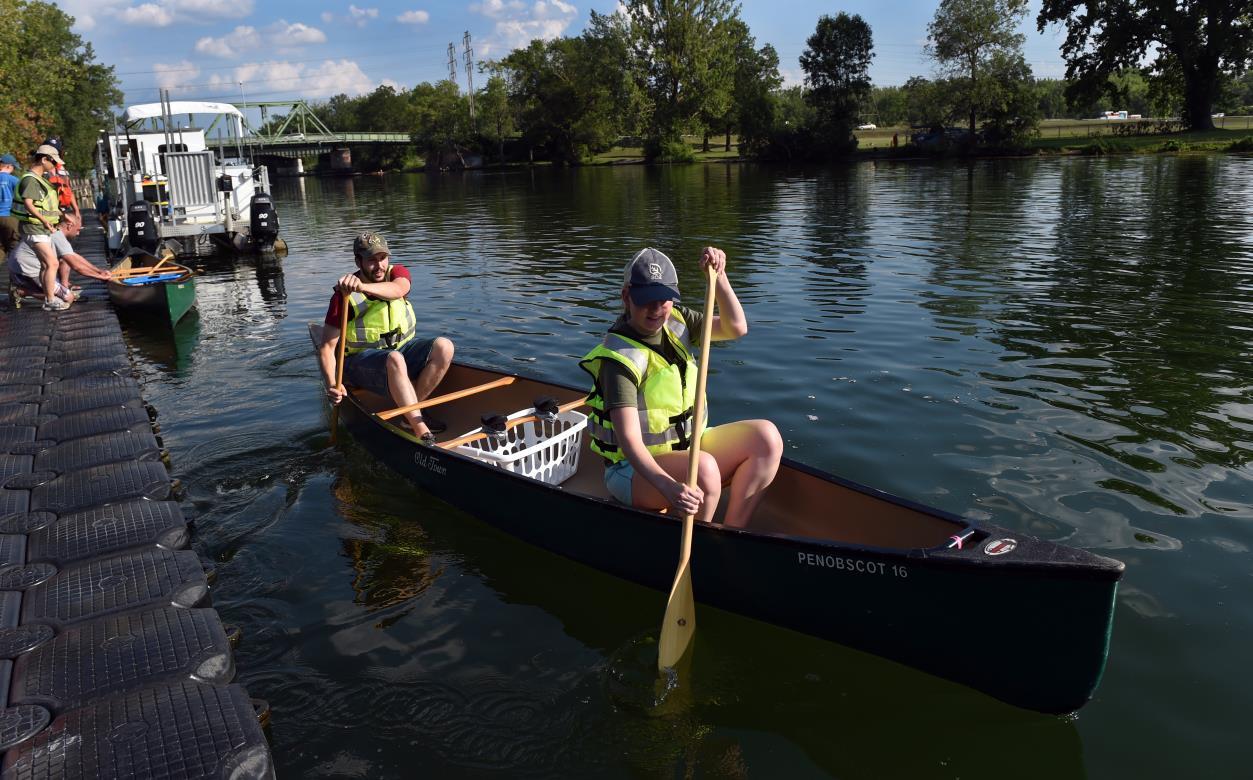 Rick Betty and Cari Brazie, from Brewerton, push off to head down Seneca River where most of the water chestnut will be pulled.
Rick Betty and Cari Brazie, from Brewerton, push off to head down Seneca River where most of the water chestnut will be pulled.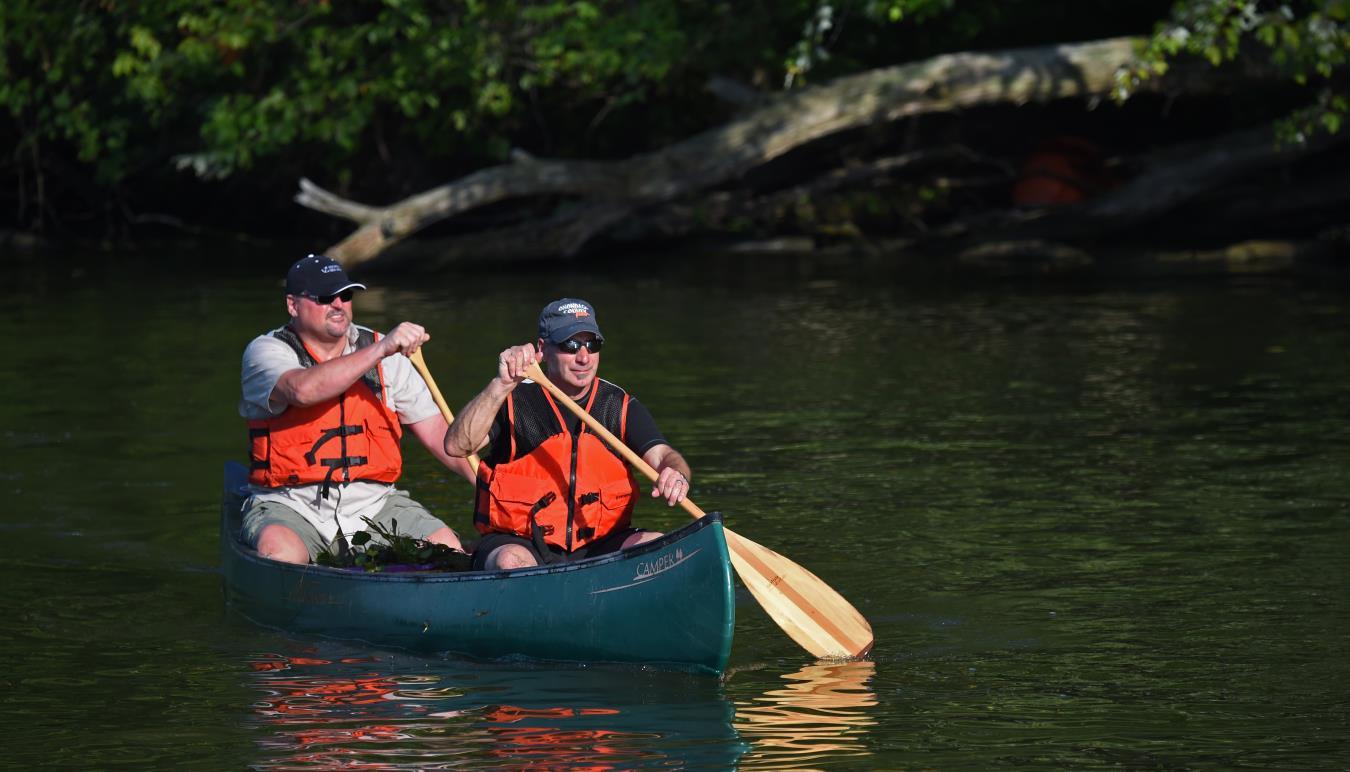 Jim Rhea (left), Principal Engineer and Partner at Anchor QEA, and Dave Fergot, Deputy Commissioner of Onondaga County Parks, continue down Seneca River in search of more water chestnut.
Jim Rhea (left), Principal Engineer and Partner at Anchor QEA, and Dave Fergot, Deputy Commissioner of Onondaga County Parks, continue down Seneca River in search of more water chestnut.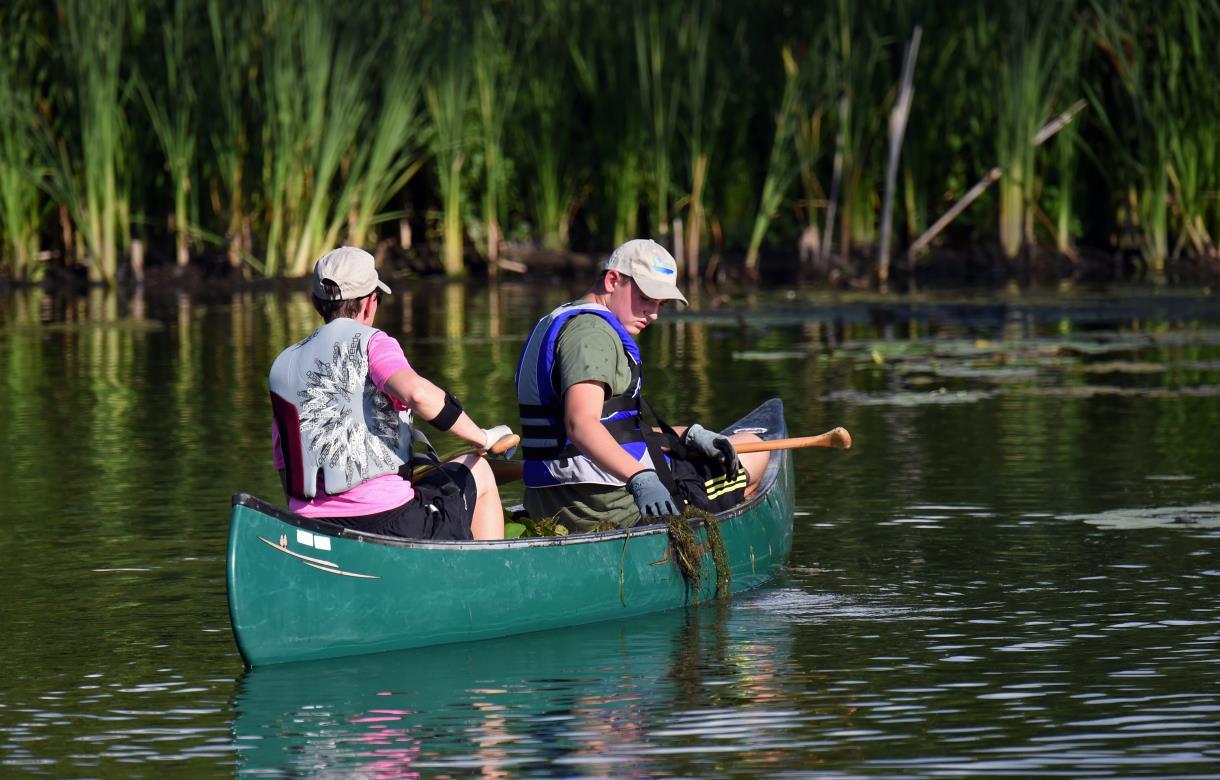 Anita Freezman and son Ian (right), from Syracuse, keep an eye out for stray water chestnut plants near shore.
Anita Freezman and son Ian (right), from Syracuse, keep an eye out for stray water chestnut plants near shore.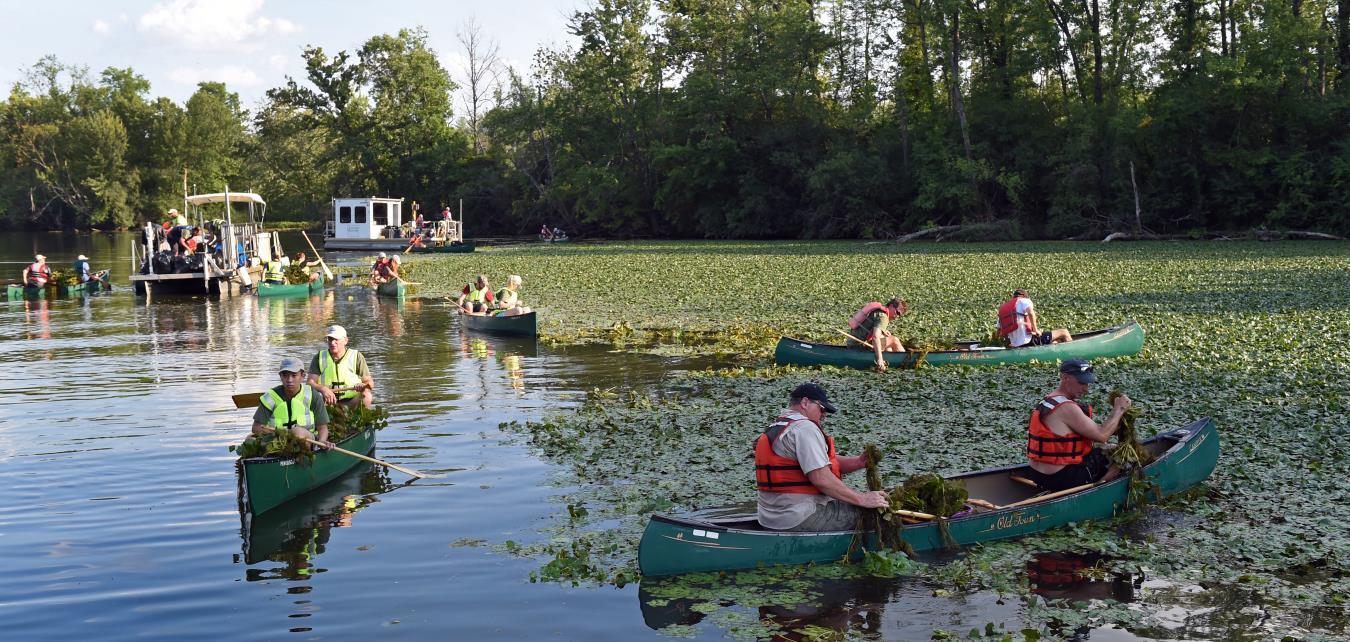 Past Klein Island participants find an area filled with a thick mat of water chestnut plants.
Past Klein Island participants find an area filled with a thick mat of water chestnut plants.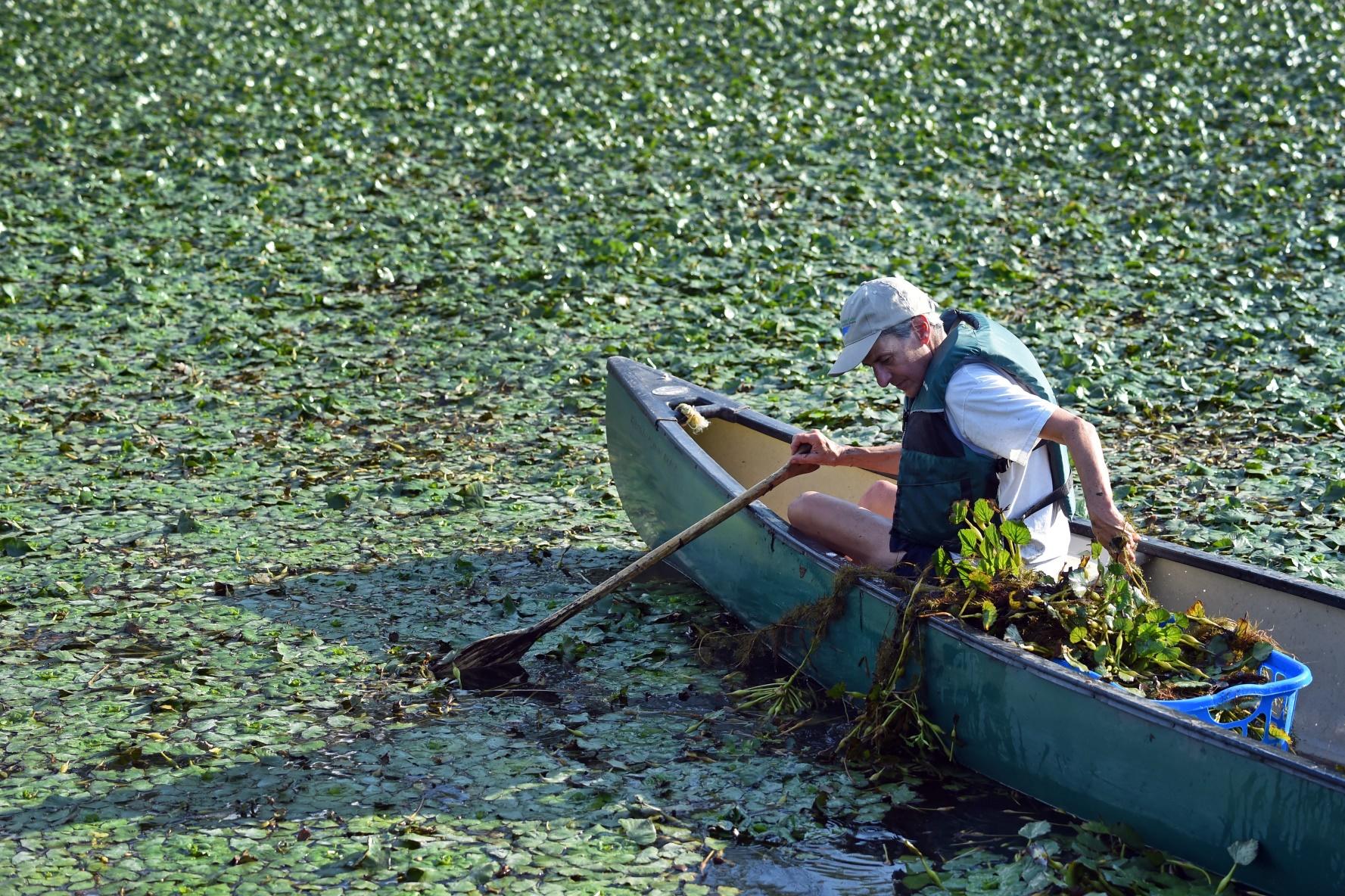 Water chestnut can grow into a canopy that blocks light below and chokes out aquatic vegetation, resulting in lower dissolved oxygen necessary for fish to survive.
Water chestnut can grow into a canopy that blocks light below and chokes out aquatic vegetation, resulting in lower dissolved oxygen necessary for fish to survive.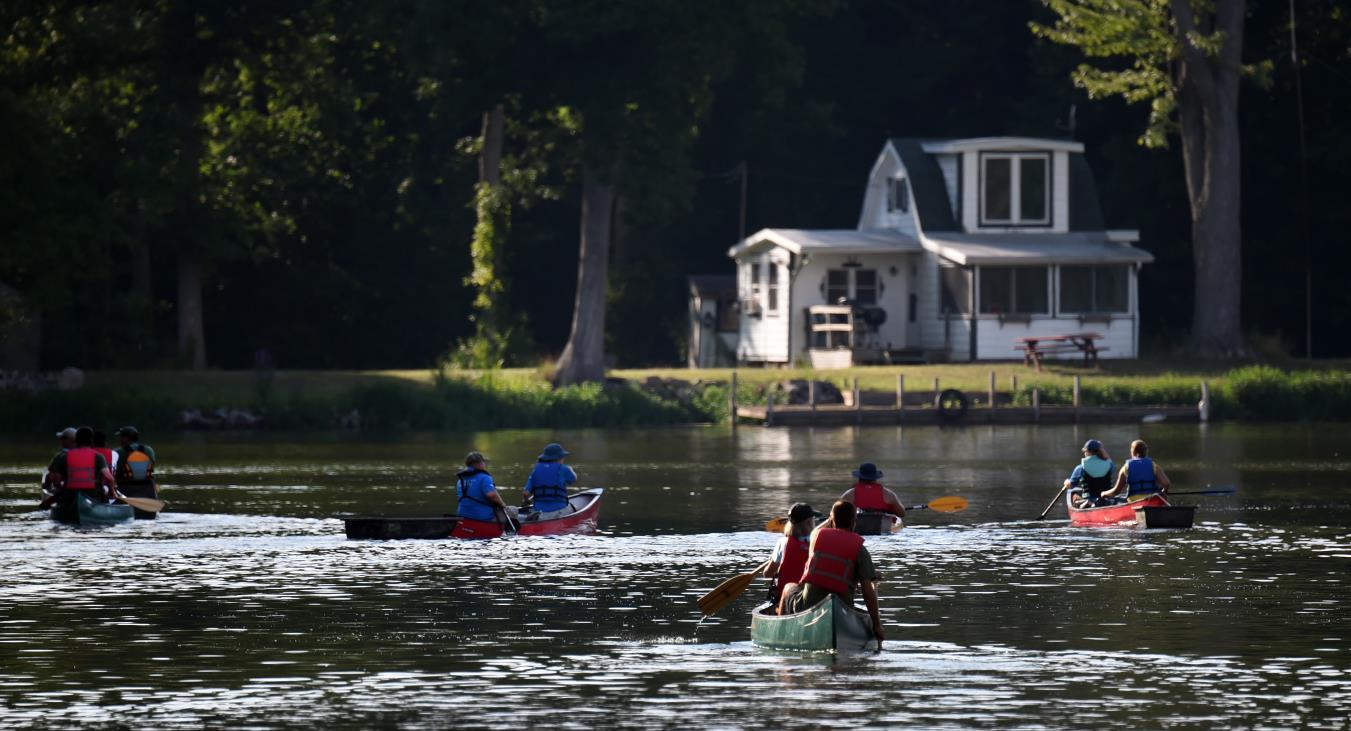 Removing invasive species also opens up waterways for improved recreational use.
Removing invasive species also opens up waterways for improved recreational use.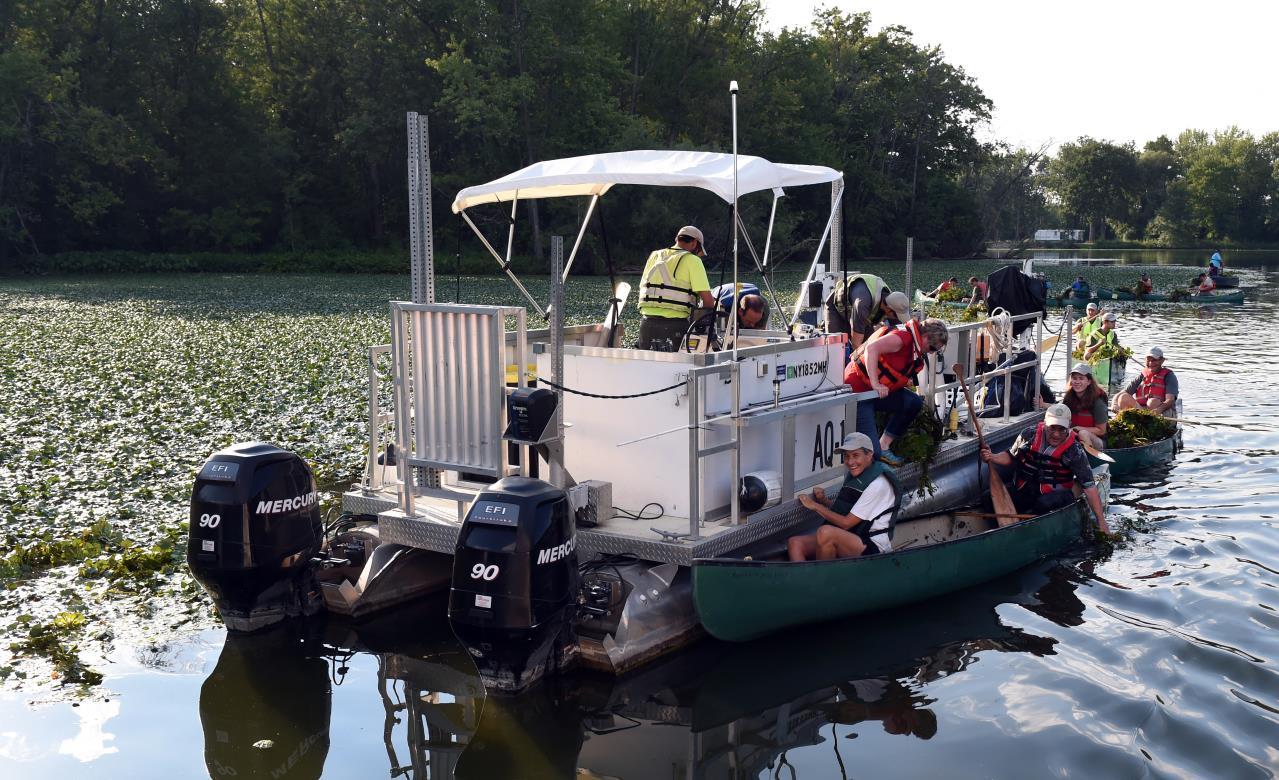 Canoeists unload water chestnut to a support boat operated by Onondaga Lake Conservation Corps corporate partner Anchor QEA.
Canoeists unload water chestnut to a support boat operated by Onondaga Lake Conservation Corps corporate partner Anchor QEA.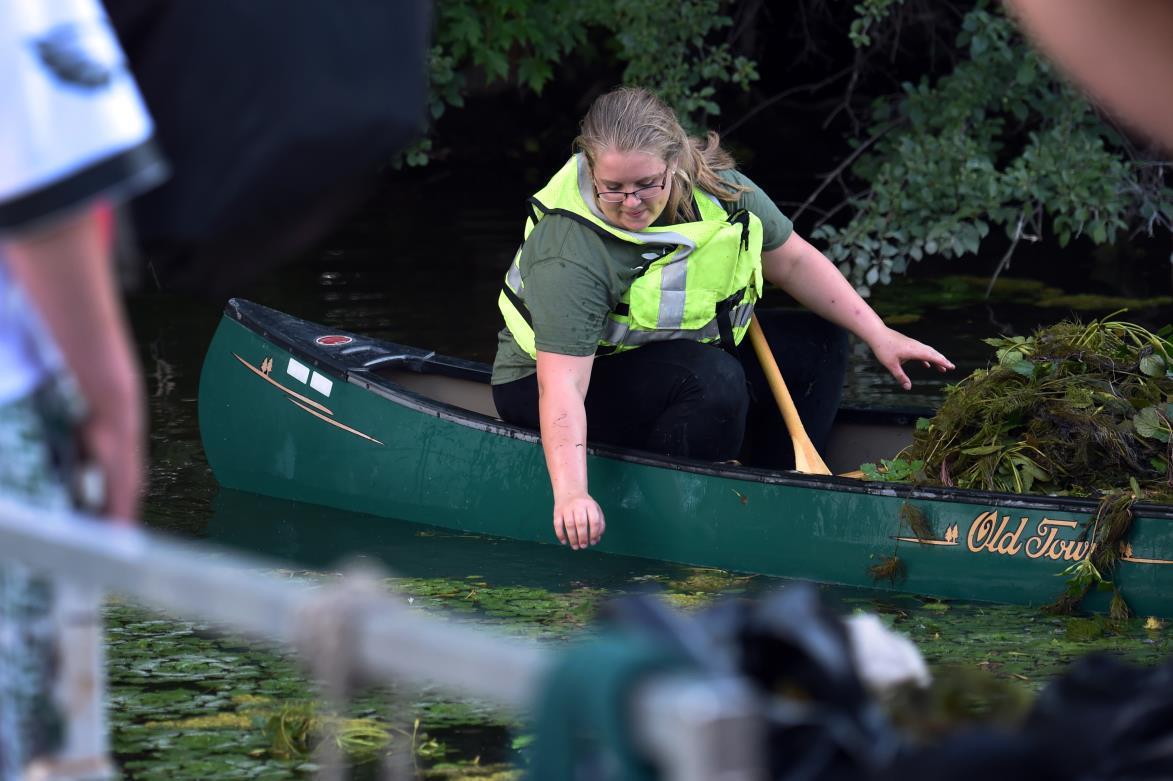 Rose Boerschlein from Ontario, NY, reaches to remove a water chestnut plant. Removing by hand is relatively easy, and is a safe and effective method for controlling the invasive plant.
Rose Boerschlein from Ontario, NY, reaches to remove a water chestnut plant. Removing by hand is relatively easy, and is a safe and effective method for controlling the invasive plant.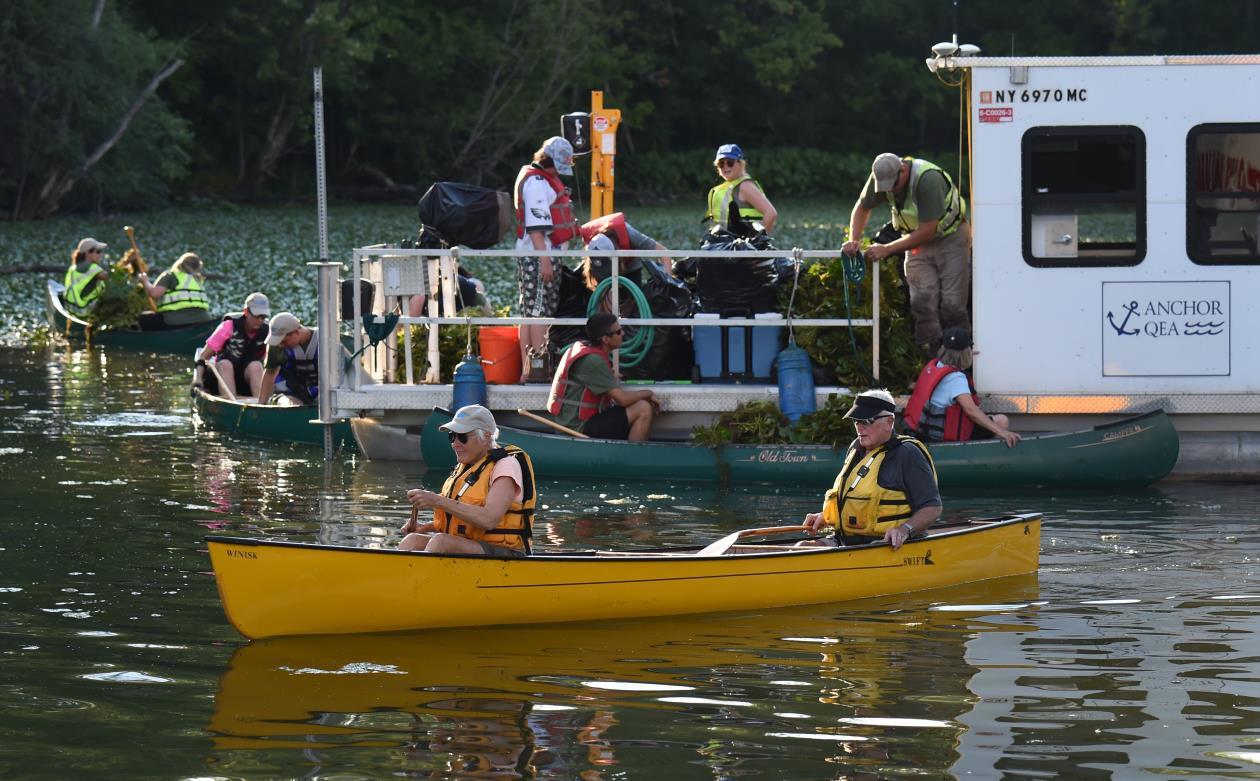 Nancy and Walt Shepard (foreground), from Fayetteville, head back for another load of plants. Some participants brought their own canoes and kayaks to help.
Nancy and Walt Shepard (foreground), from Fayetteville, head back for another load of plants. Some participants brought their own canoes and kayaks to help.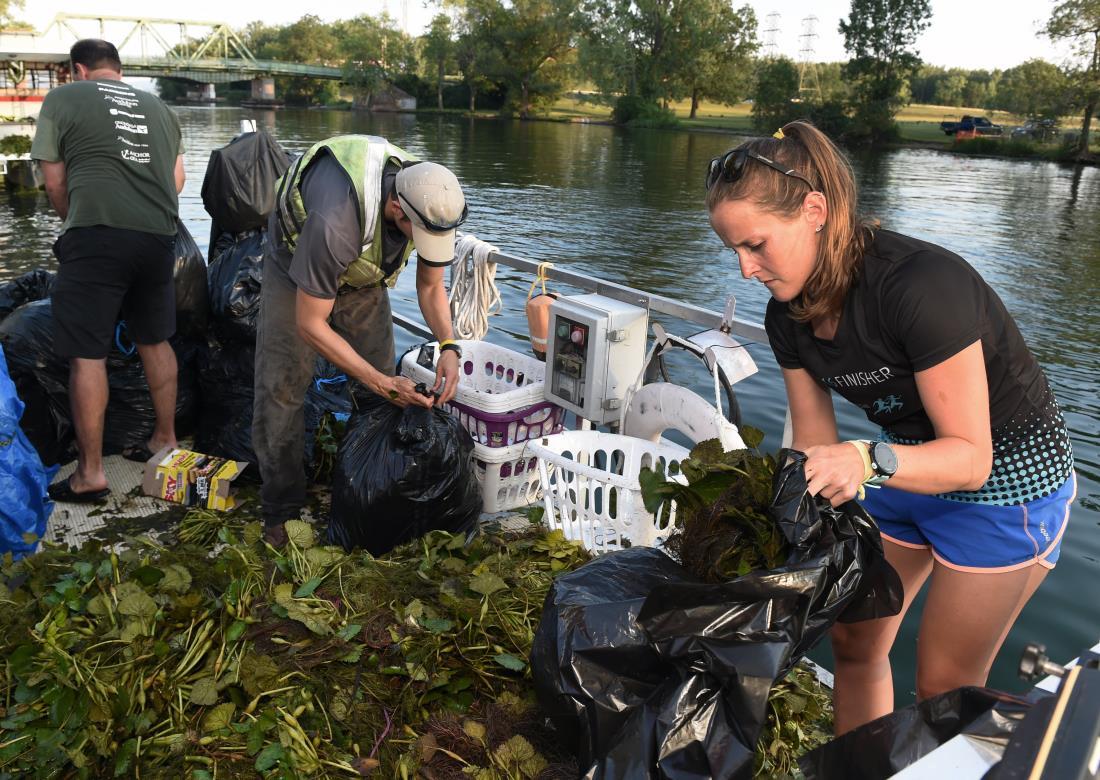 Water chestnut must be bagged for disposal or composted long term away from water bodies. Seeds can survive for years.
Water chestnut must be bagged for disposal or composted long term away from water bodies. Seeds can survive for years.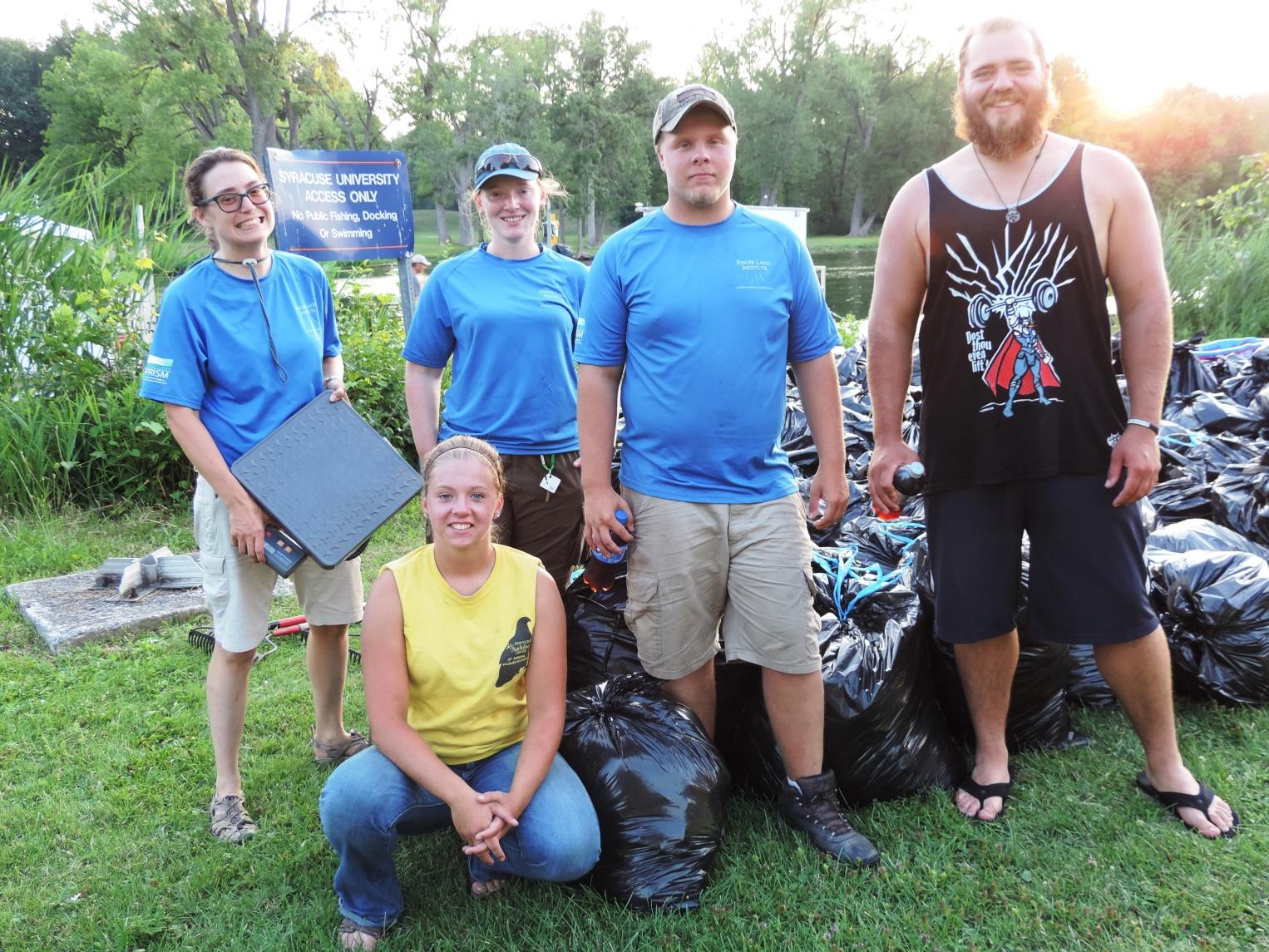 Members of Finger Lakes PRISM, the Partnership for Regional Invasive Species Management, took part in the water chestnut pull. Michelle Henry, left, holds a scale used to weigh bags of water chestnut.
Members of Finger Lakes PRISM, the Partnership for Regional Invasive Species Management, took part in the water chestnut pull. Michelle Henry, left, holds a scale used to weigh bags of water chestnut.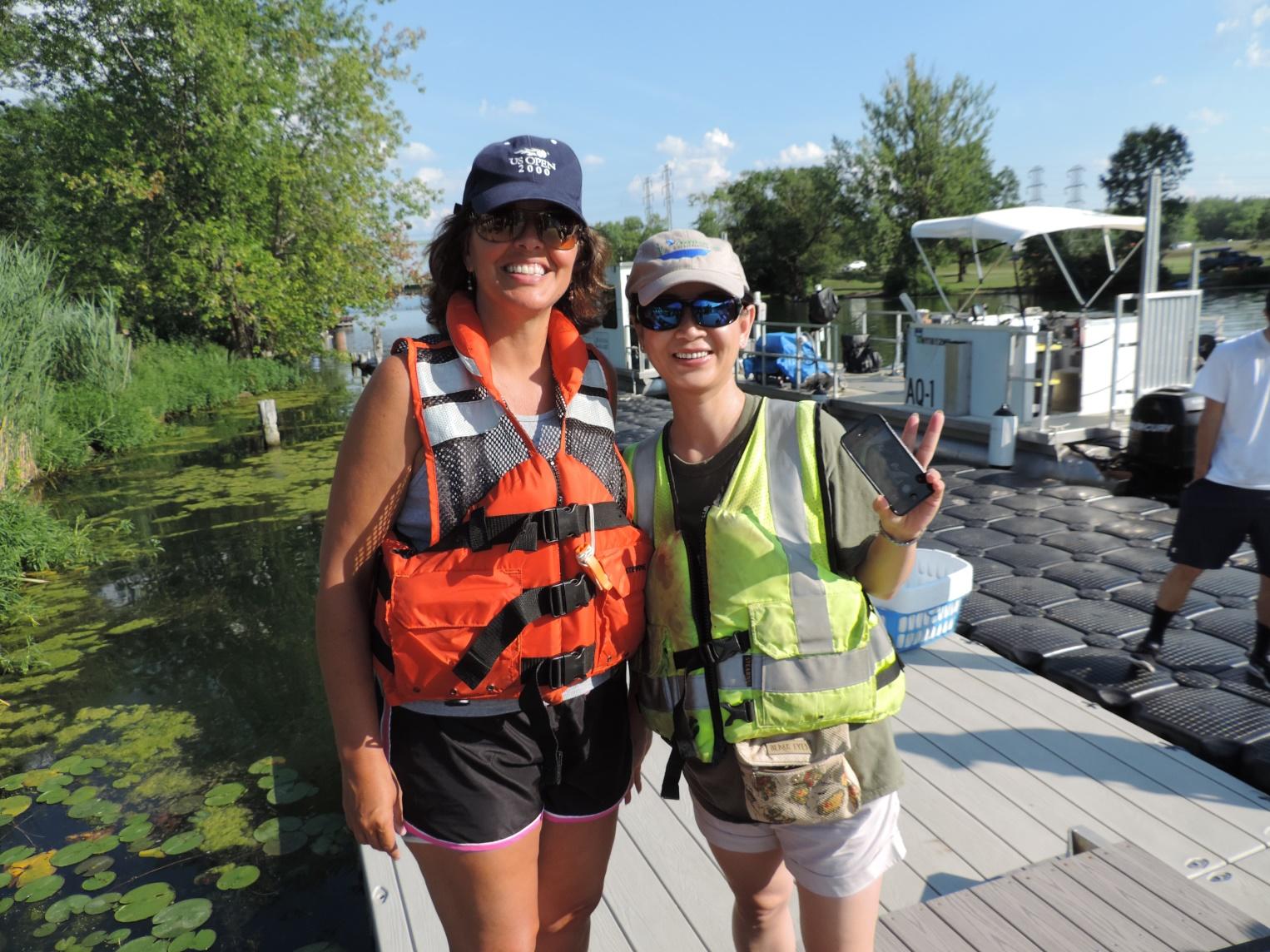 Diane Mantooth (left), a first-time Corps volunteer from Clay, and Lisa Wang, a returning volunteer from Fayetteville, enjoyed working together on a stewardship project that helps our local waterways.
Diane Mantooth (left), a first-time Corps volunteer from Clay, and Lisa Wang, a returning volunteer from Fayetteville, enjoyed working together on a stewardship project that helps our local waterways.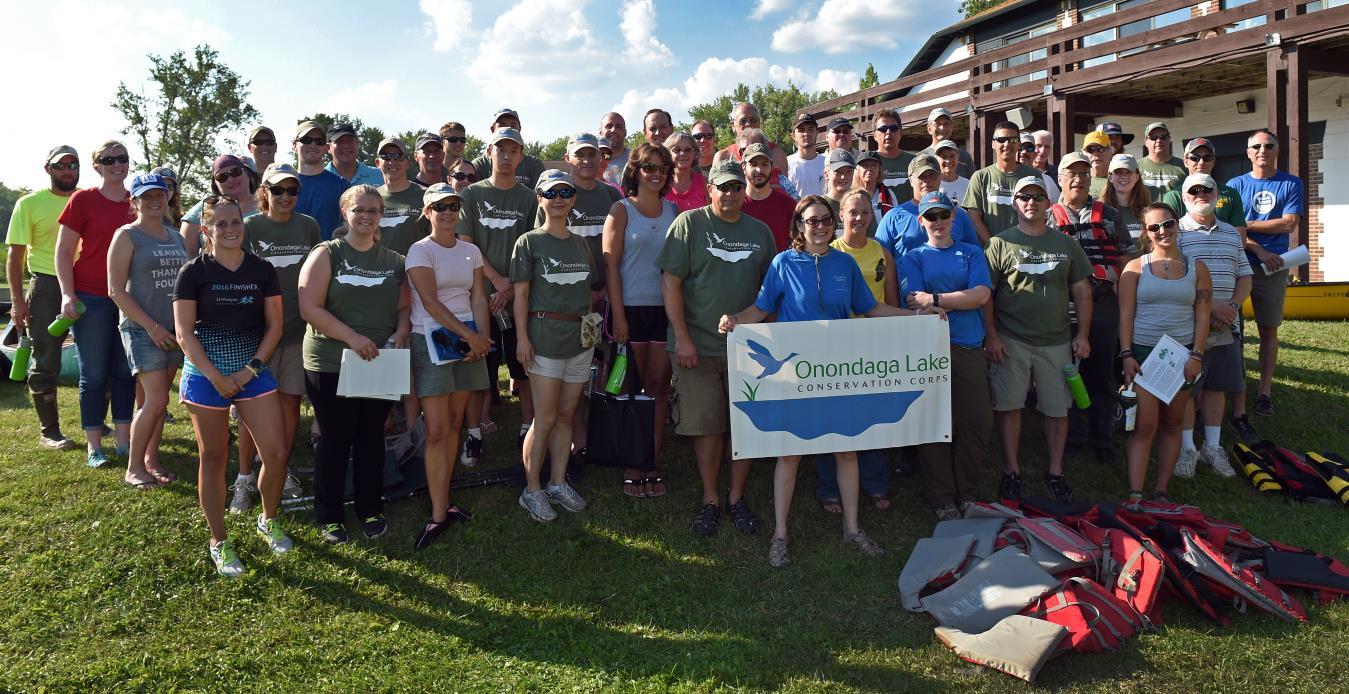 Fifty-eight volunteers came out Thursday evening to have a hand in removing invasive water chestnut. Approximately 5000 pounds of plants were collected from Onondaga Lake and Seneca River.
Fifty-eight volunteers came out Thursday evening to have a hand in removing invasive water chestnut. Approximately 5000 pounds of plants were collected from Onondaga Lake and Seneca River.1 of 17
-
August 2015
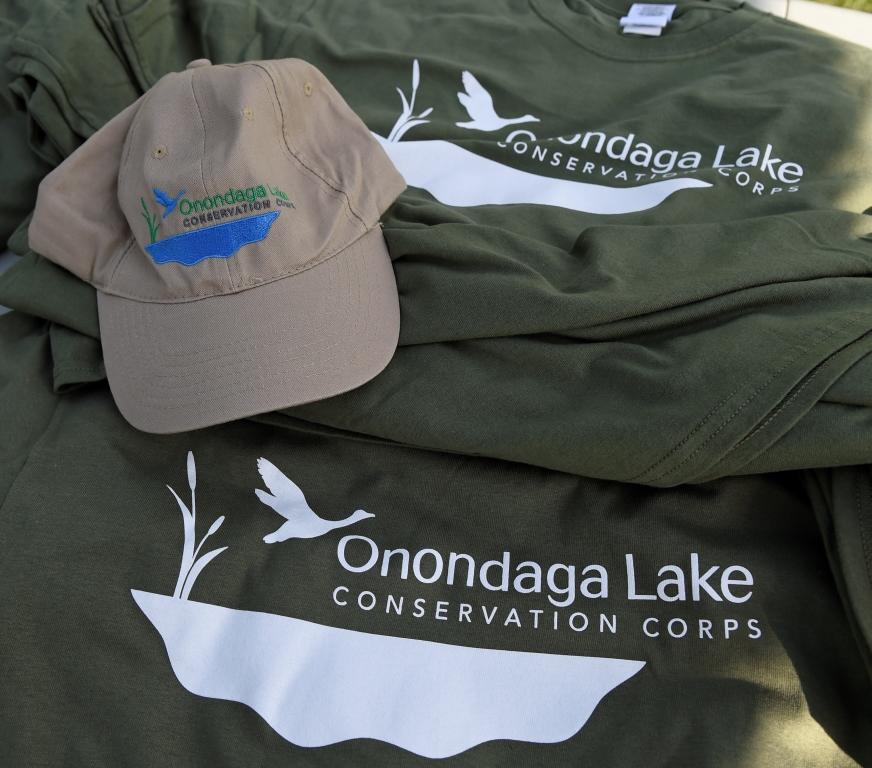 Onondaga Lake Conservation Corps seeks to inspire future stewards of Onondaga Lake and its watershed through a hands-on, experience-based program.
Onondaga Lake Conservation Corps seeks to inspire future stewards of Onondaga Lake and its watershed through a hands-on, experience-based program.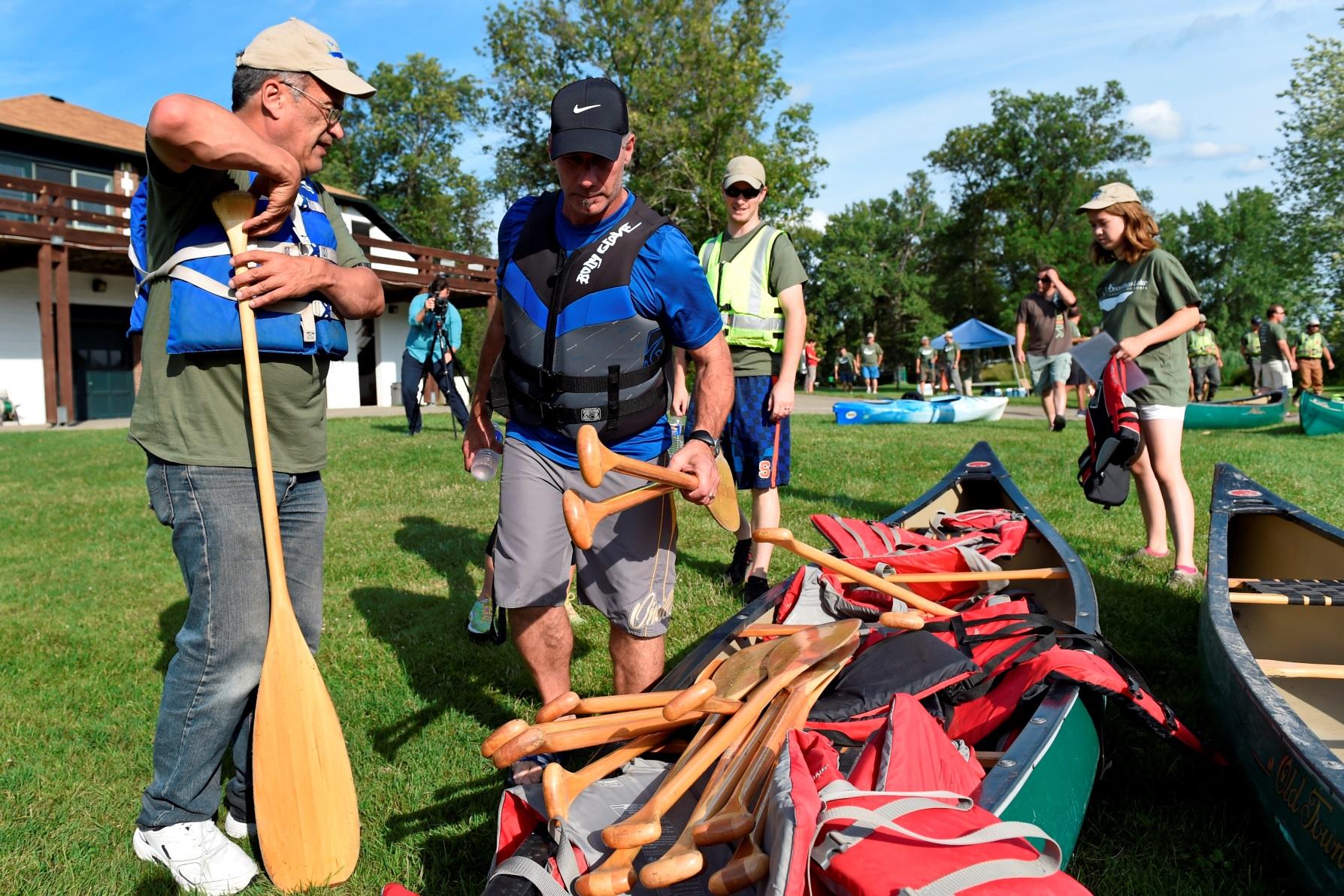 Volunteers collect equipment near the Syracuse Chargers Boathouse.
Volunteers collect equipment near the Syracuse Chargers Boathouse.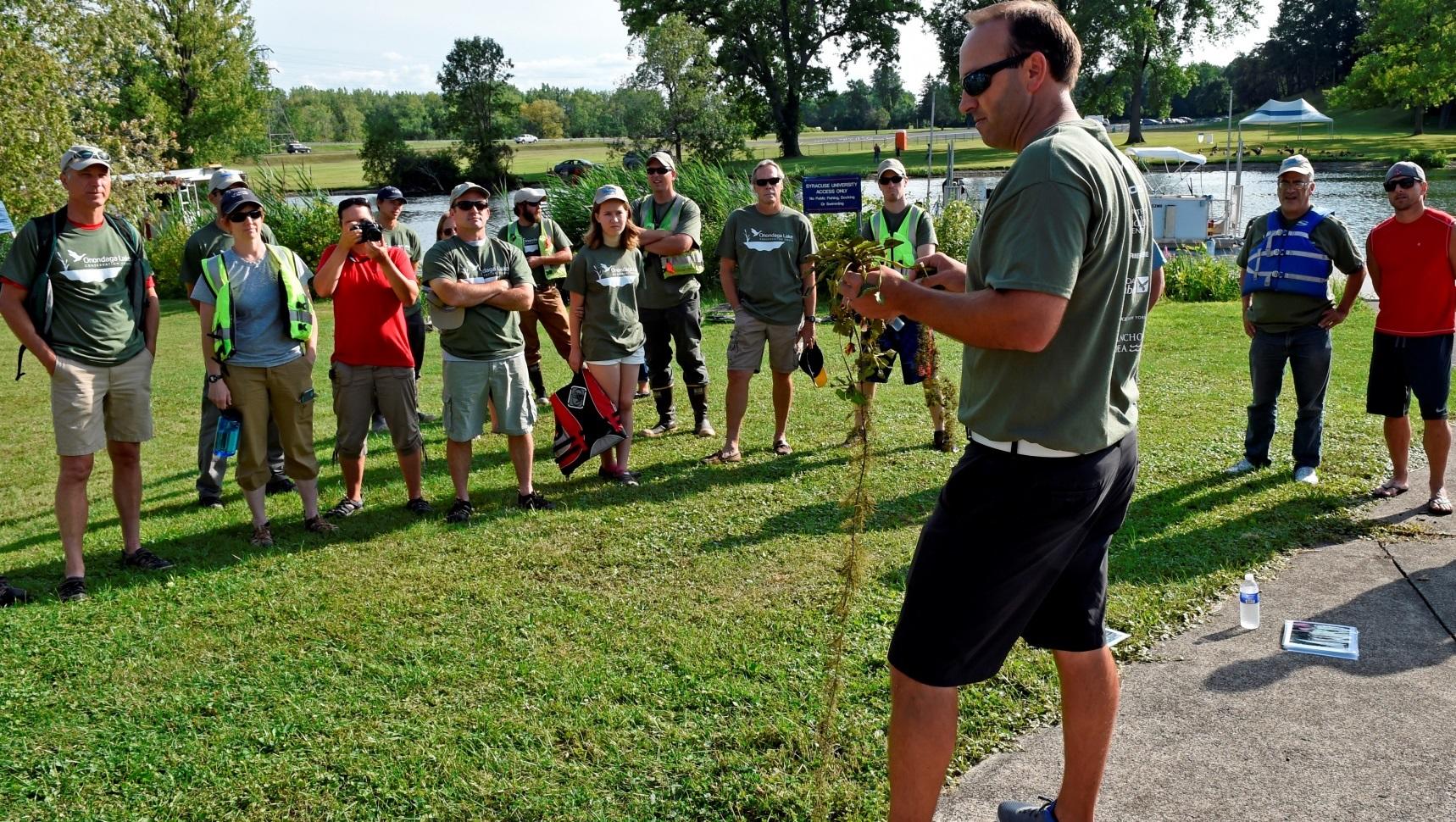 Tim Johnson, Senior Managing Scientist at Anchor QEA, shows volunteers how to identify European water chestnut.
Tim Johnson, Senior Managing Scientist at Anchor QEA, shows volunteers how to identify European water chestnut.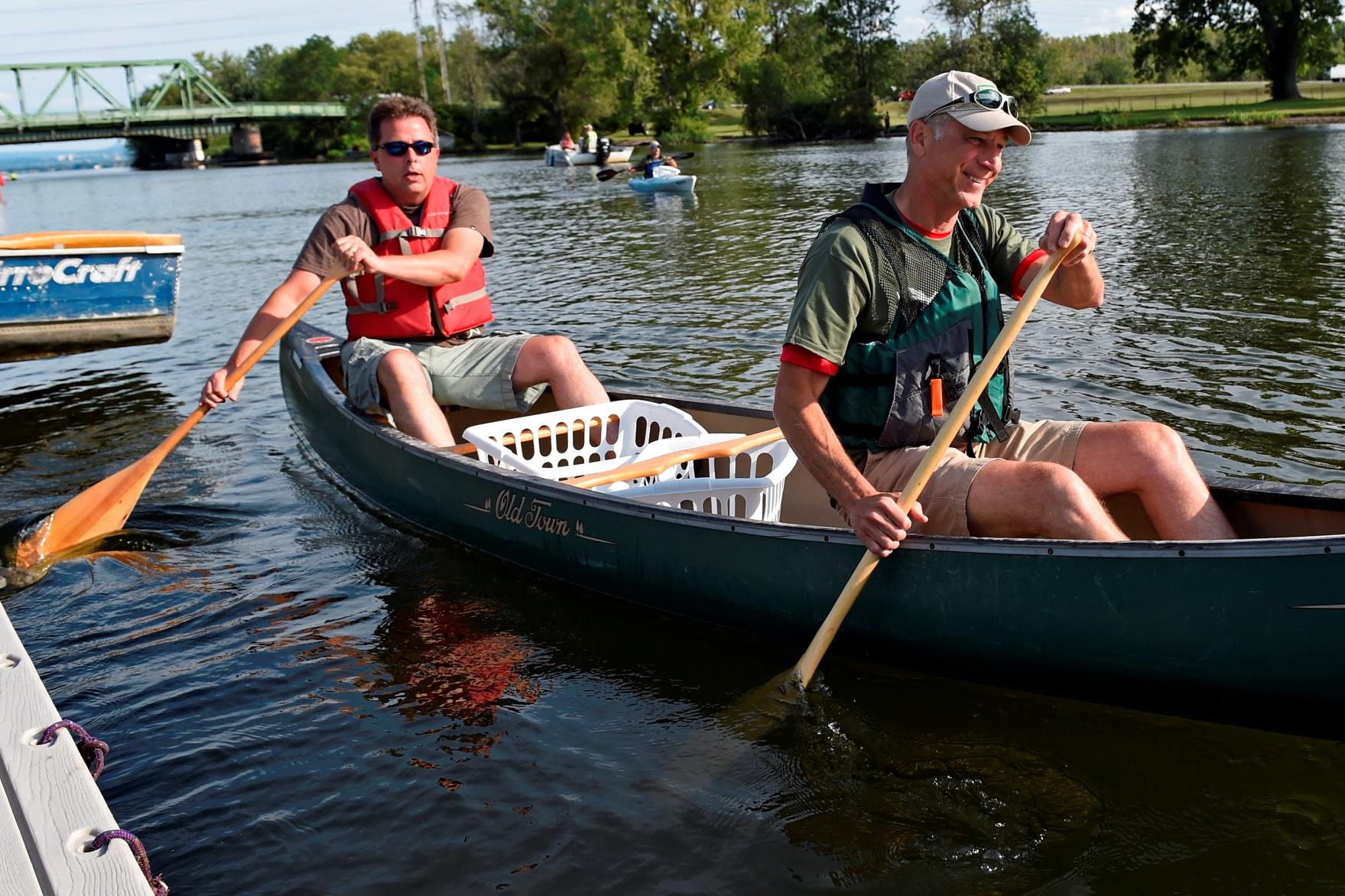 Ed Glaza (left), Senior Project Manager at Parsons, and John McAuliffe, Honeywell Syracuse Program Director, push off from the dock.
Ed Glaza (left), Senior Project Manager at Parsons, and John McAuliffe, Honeywell Syracuse Program Director, push off from the dock.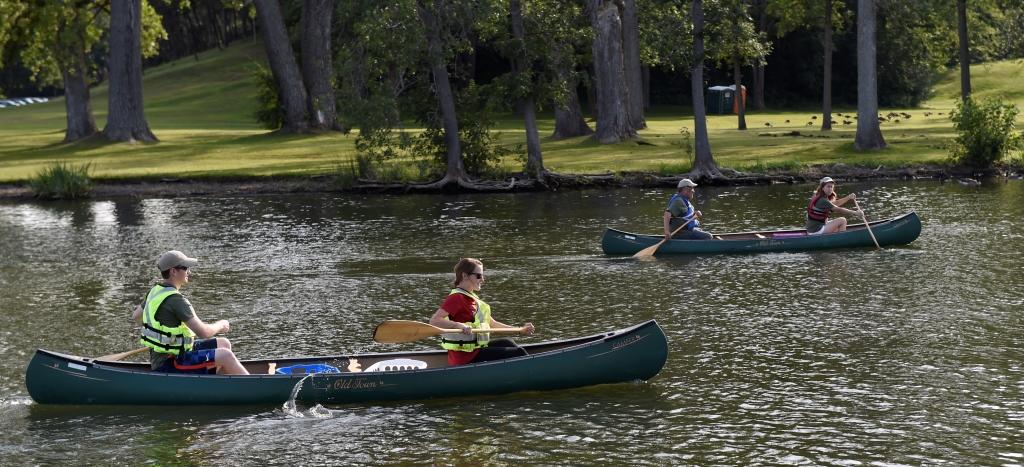 Volunteers fan out along the shoreline of Seneca River from the mouth of Onondaga Lake to Klein Island.
Volunteers fan out along the shoreline of Seneca River from the mouth of Onondaga Lake to Klein Island.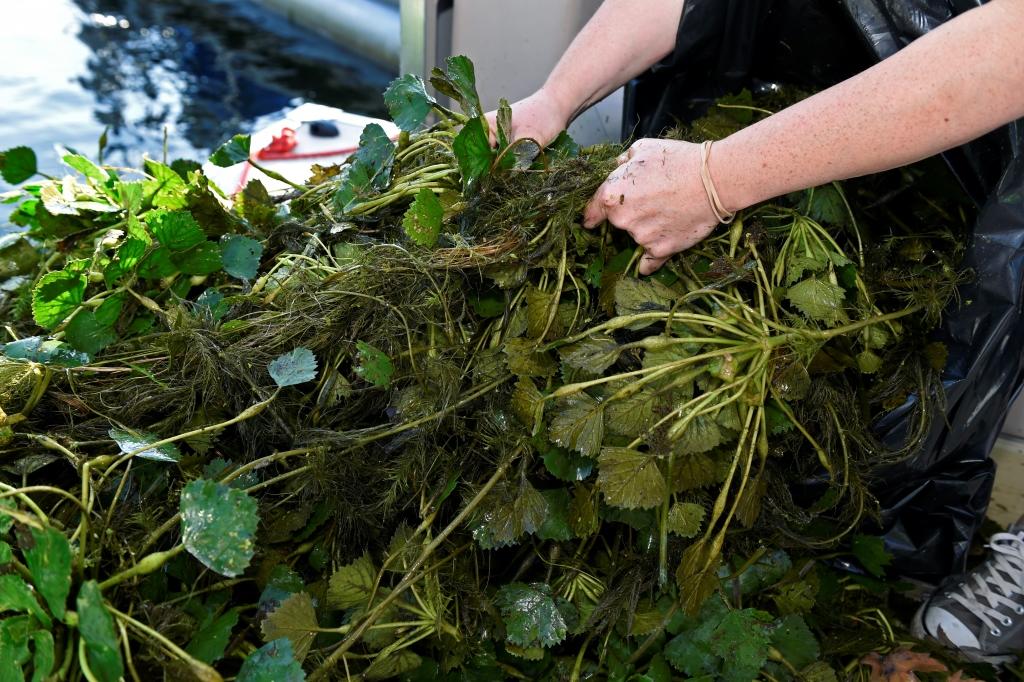 European water chestnut (Trapa natans) was introduced into northeastern U.S. waterways in the 1800s. Dense mats reduce oxygen in the surrounding habitat for fish and choke out other native species.
European water chestnut (Trapa natans) was introduced into northeastern U.S. waterways in the 1800s. Dense mats reduce oxygen in the surrounding habitat for fish and choke out other native species.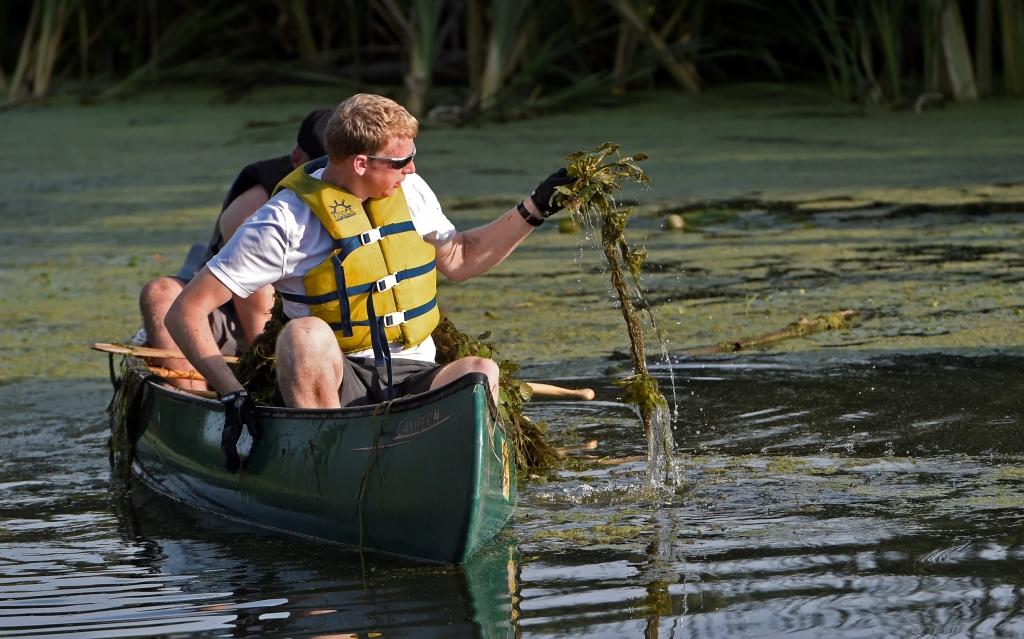 Water chestnut can also clog waterways and shoreline aquatic habitat important for fish, birds and other wildlife.
Water chestnut can also clog waterways and shoreline aquatic habitat important for fish, birds and other wildlife.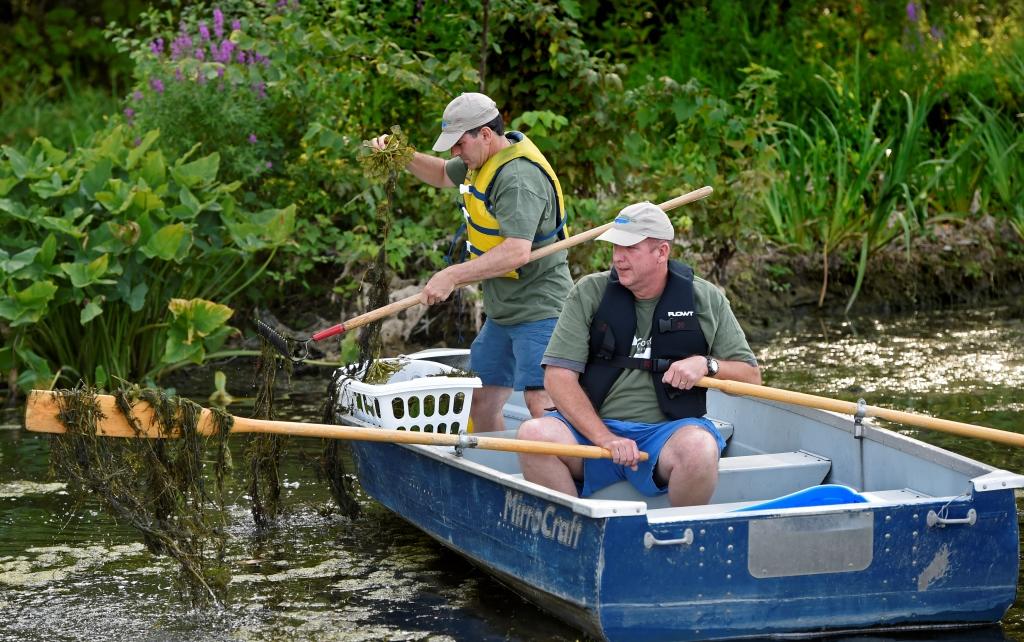 Removing water chestnut allows for greater biodiversity, contributing to a healthier ecosystem.
Removing water chestnut allows for greater biodiversity, contributing to a healthier ecosystem.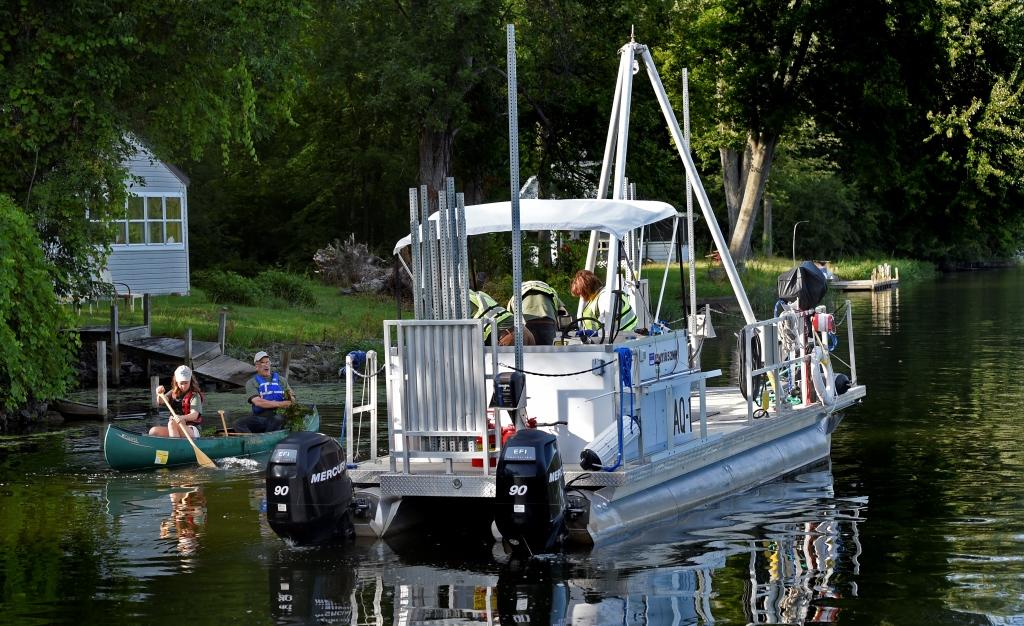 Several larger boats, such as this vessel belonging to Anchor QEA, circulated among volunteers, picking up loads of water chestnut.
Several larger boats, such as this vessel belonging to Anchor QEA, circulated among volunteers, picking up loads of water chestnut.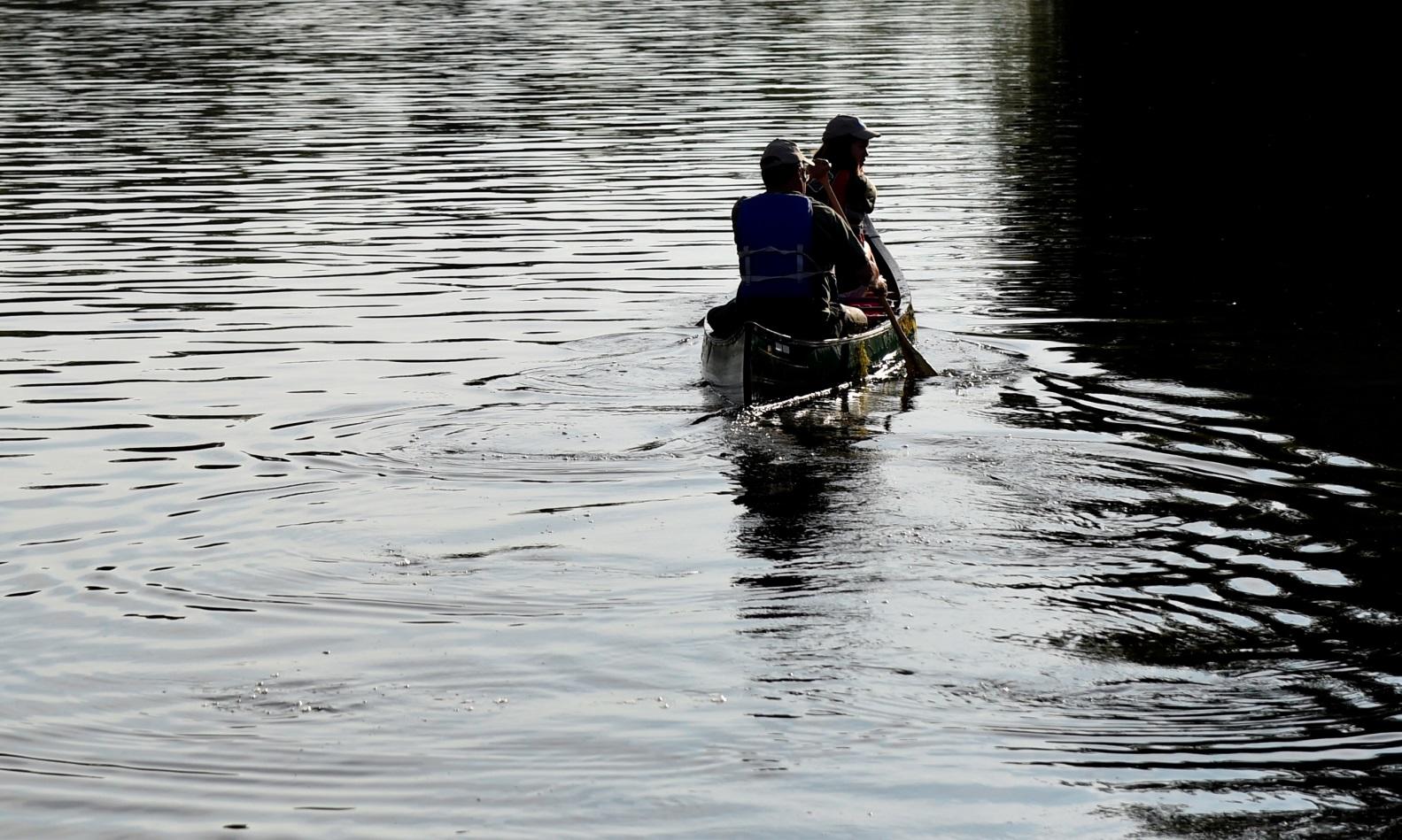 Removing invasive species is an important aspect of stewardship of Onondaga Lake and its watershed.
Removing invasive species is an important aspect of stewardship of Onondaga Lake and its watershed.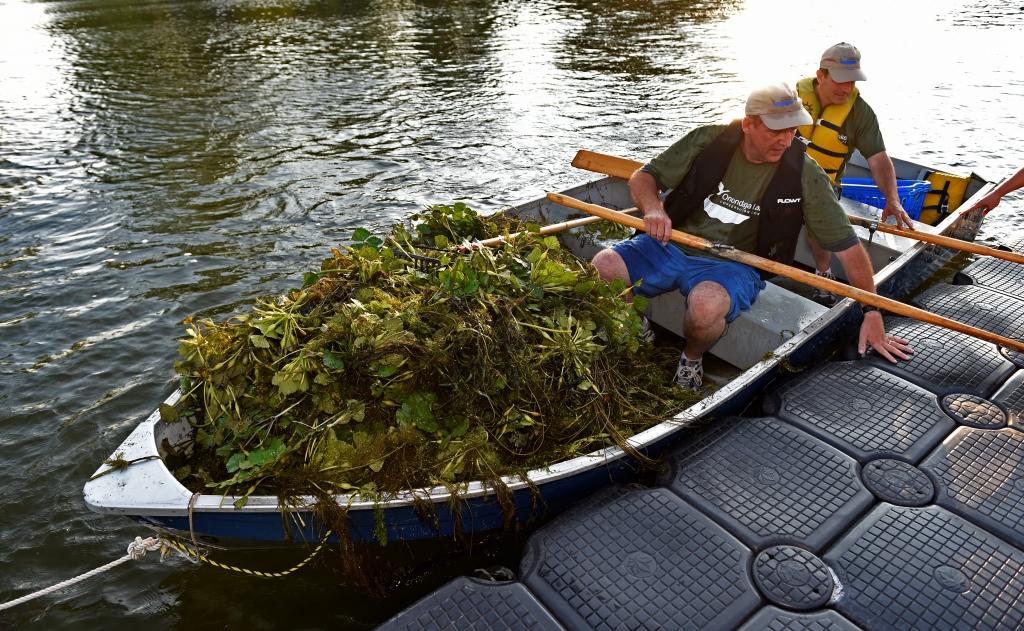 Corps volunteers removed over 2200 pounds – more than 1 ton – of invasive European water chestnut on August 6.
Corps volunteers removed over 2200 pounds – more than 1 ton – of invasive European water chestnut on August 6.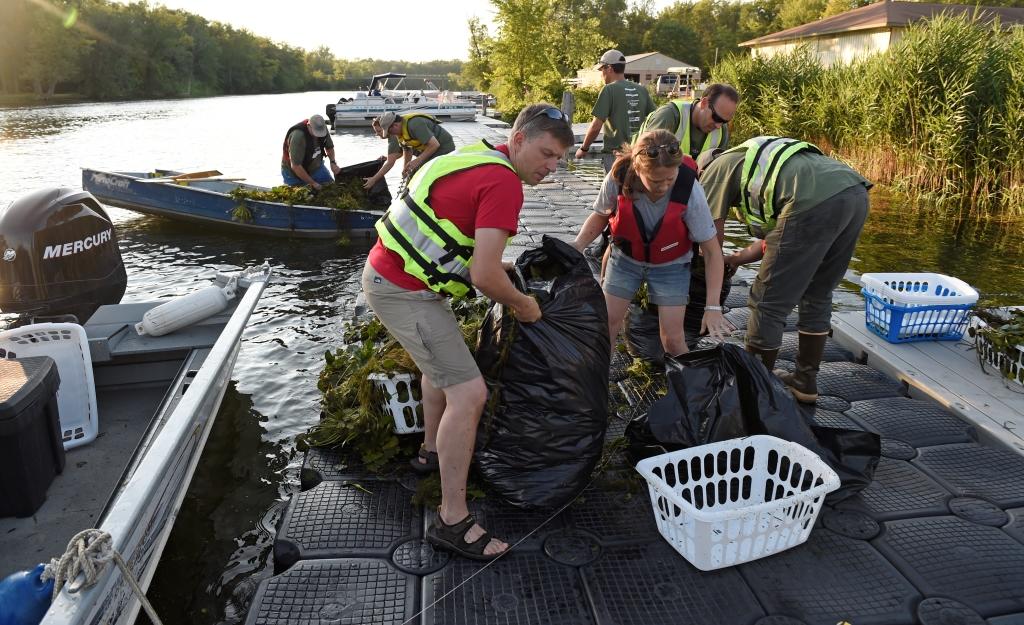 Efforts over the years to remove water chestnut are showing positive results. The Onondaga Lake Conservation Corps is now joining in these efforts.
Efforts over the years to remove water chestnut are showing positive results. The Onondaga Lake Conservation Corps is now joining in these efforts.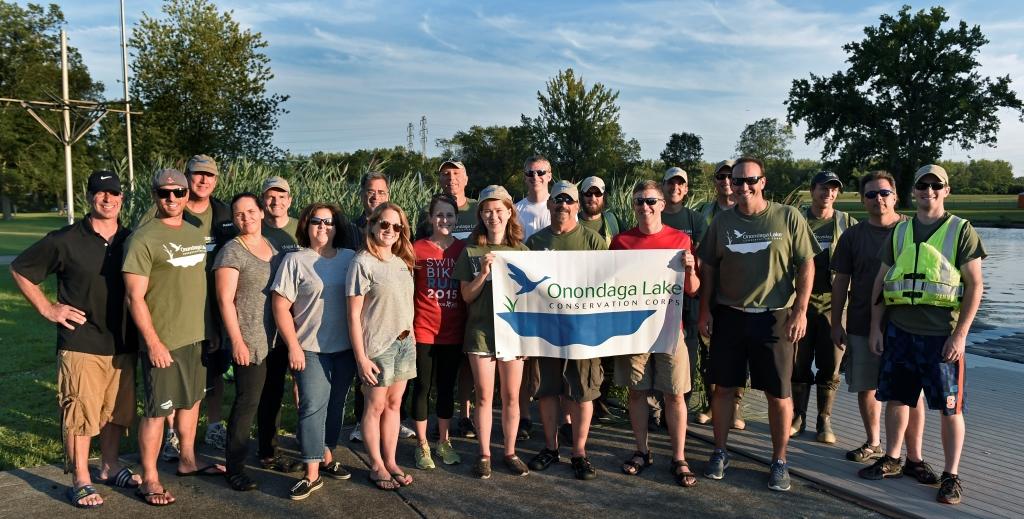 Onondaga Lake Conservation Corps volunteers gathered on a Thursday evening to help protect Onondaga Lake’s biodiversity.
Onondaga Lake Conservation Corps volunteers gathered on a Thursday evening to help protect Onondaga Lake’s biodiversity.1 of 13
Onondaga Lake Bioblitz, September 2014

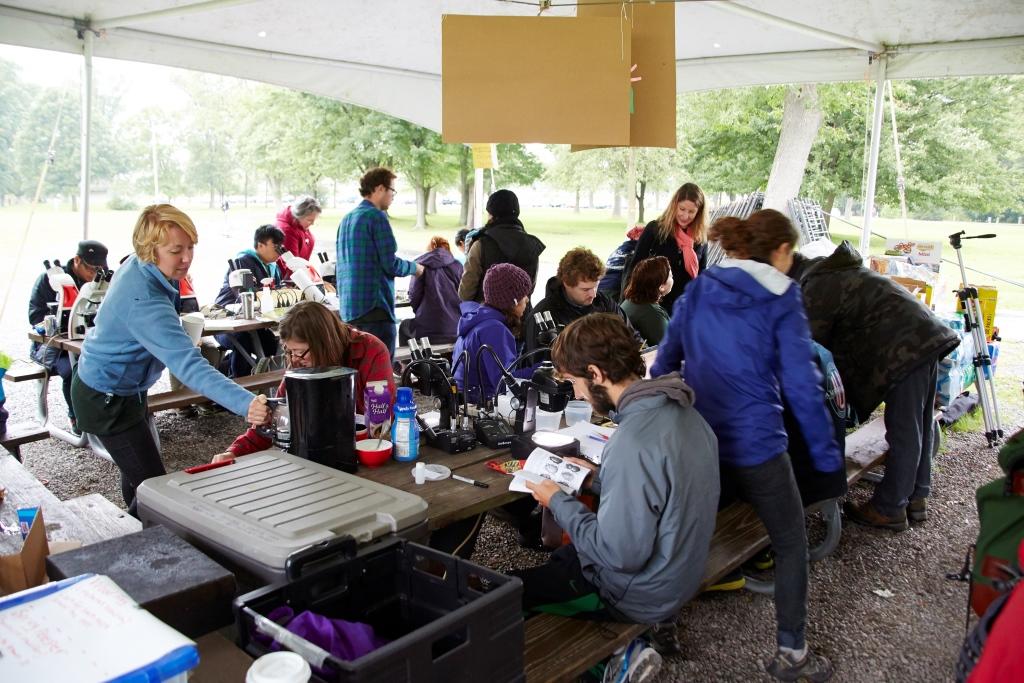
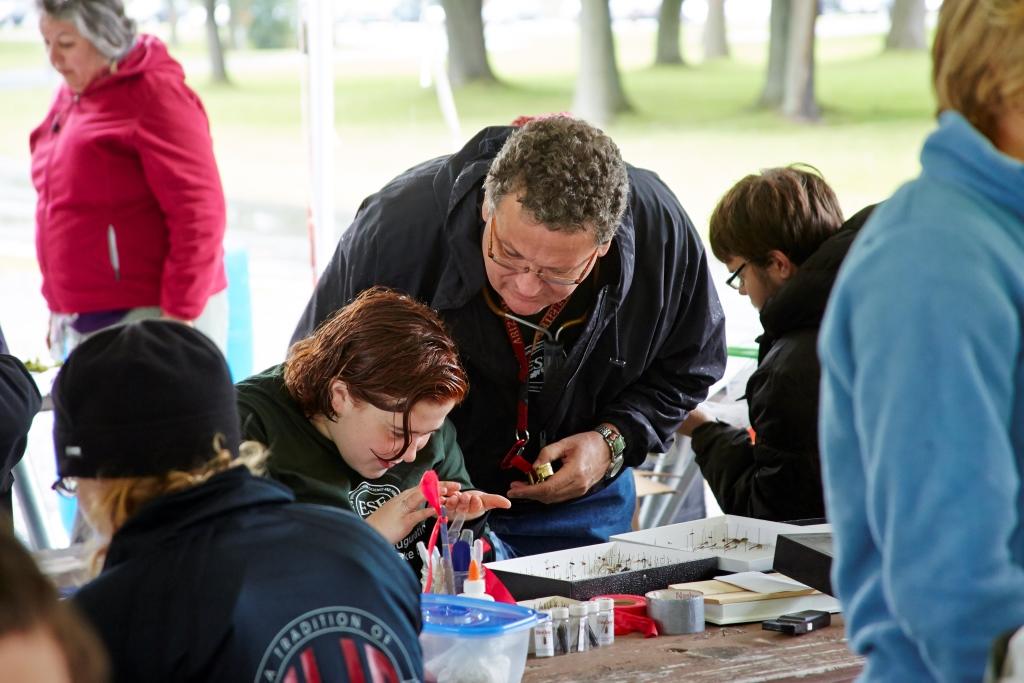
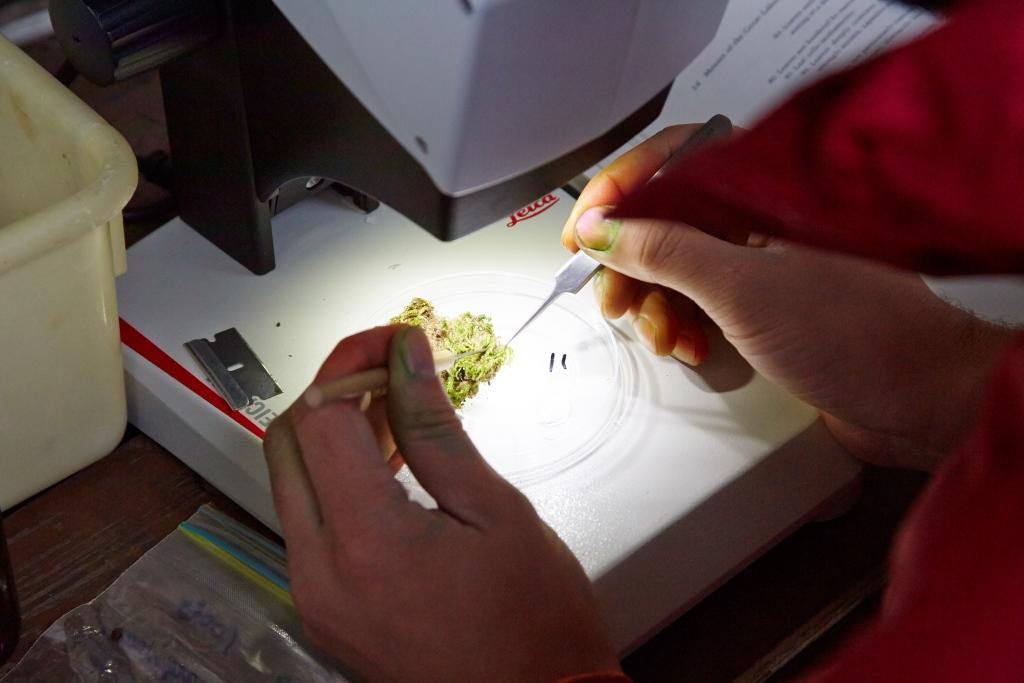

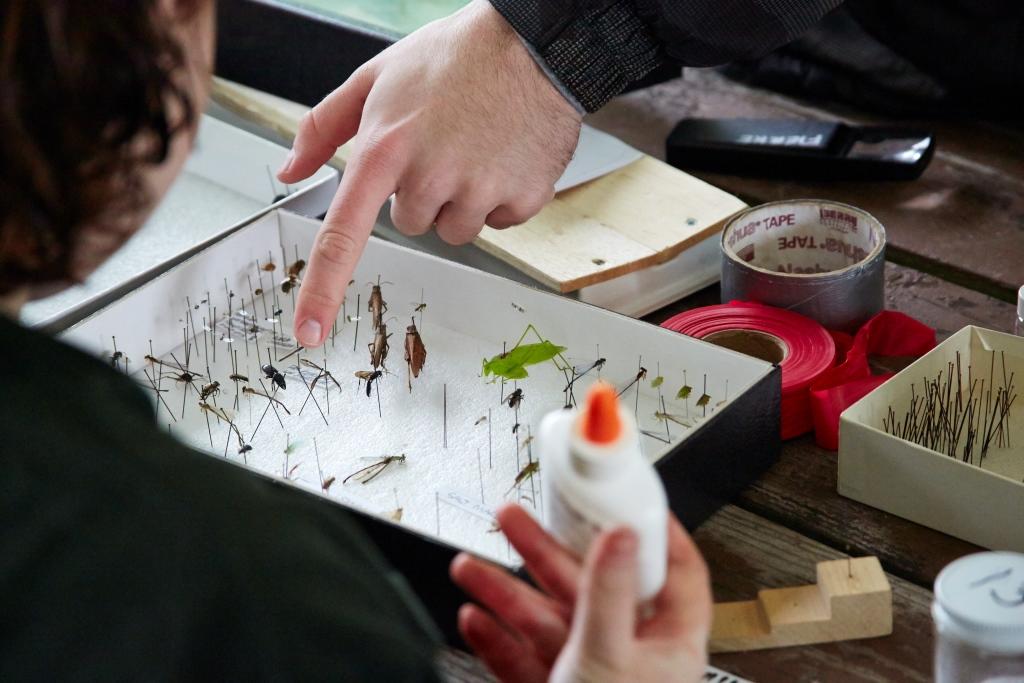
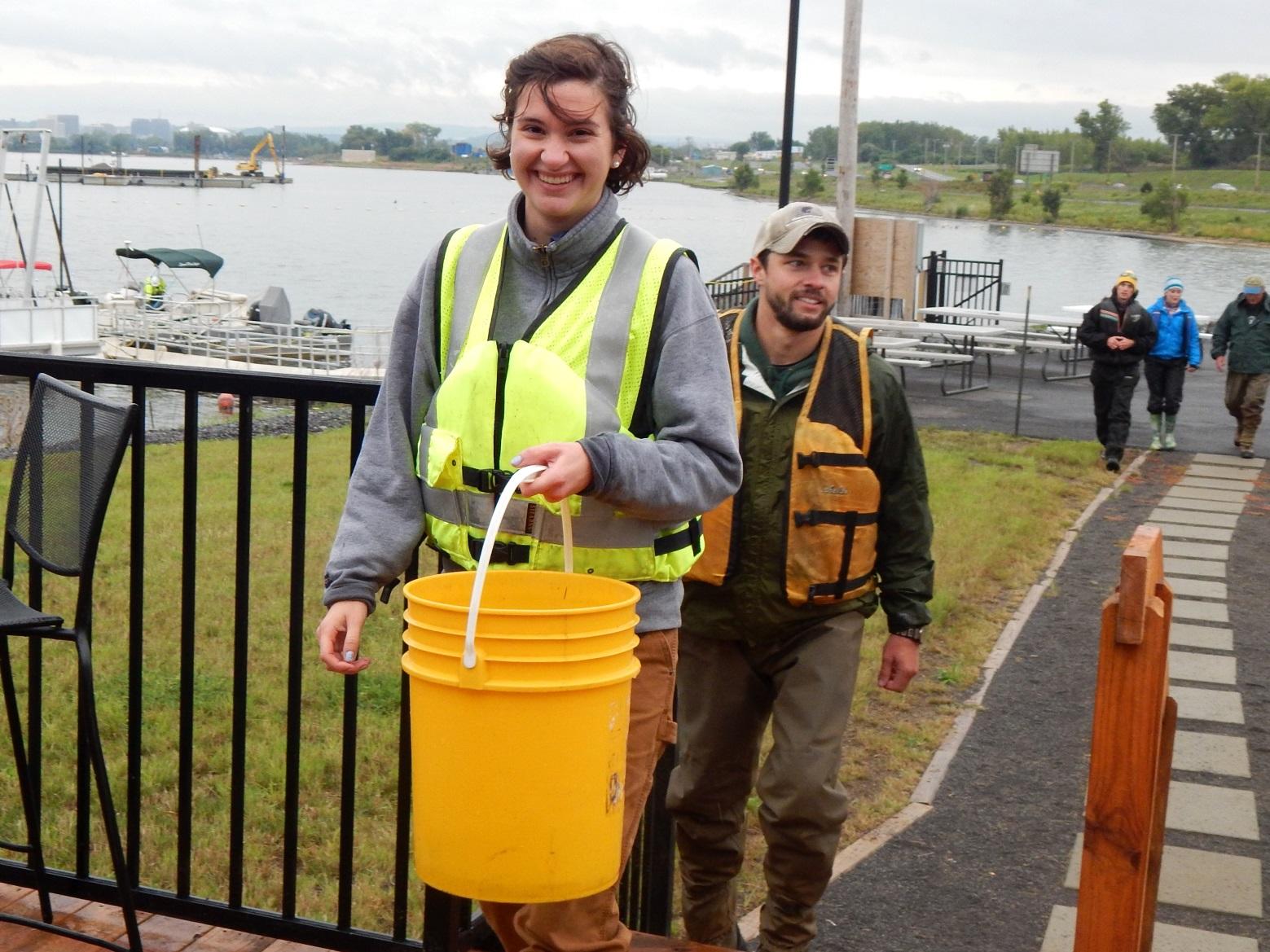
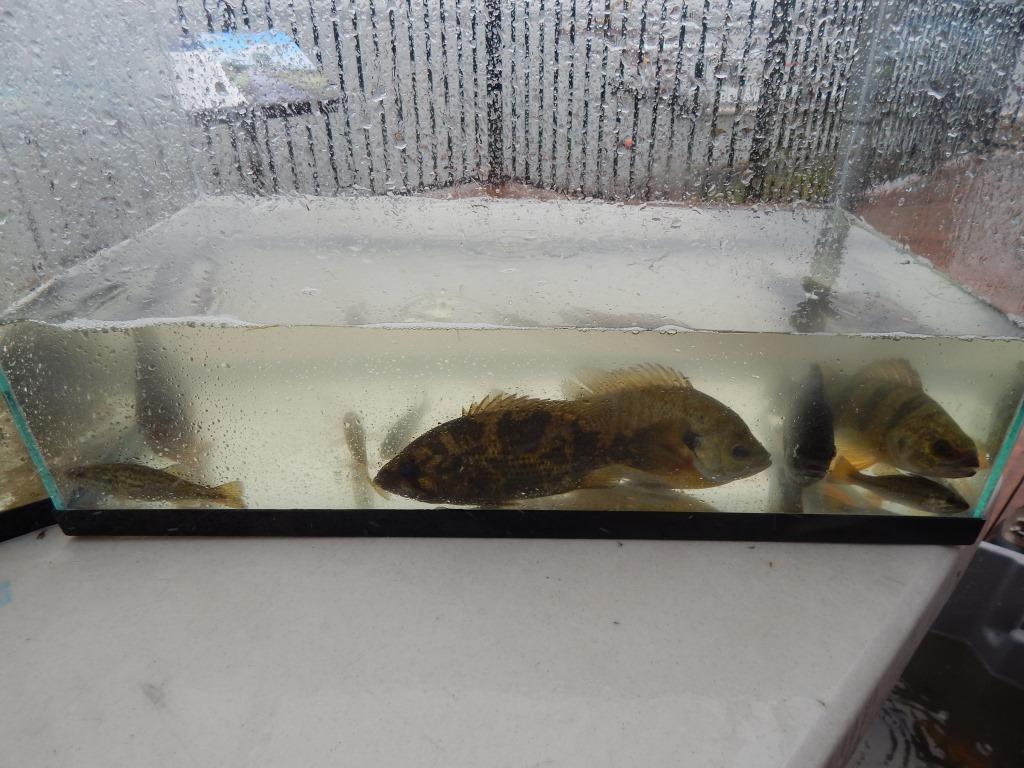
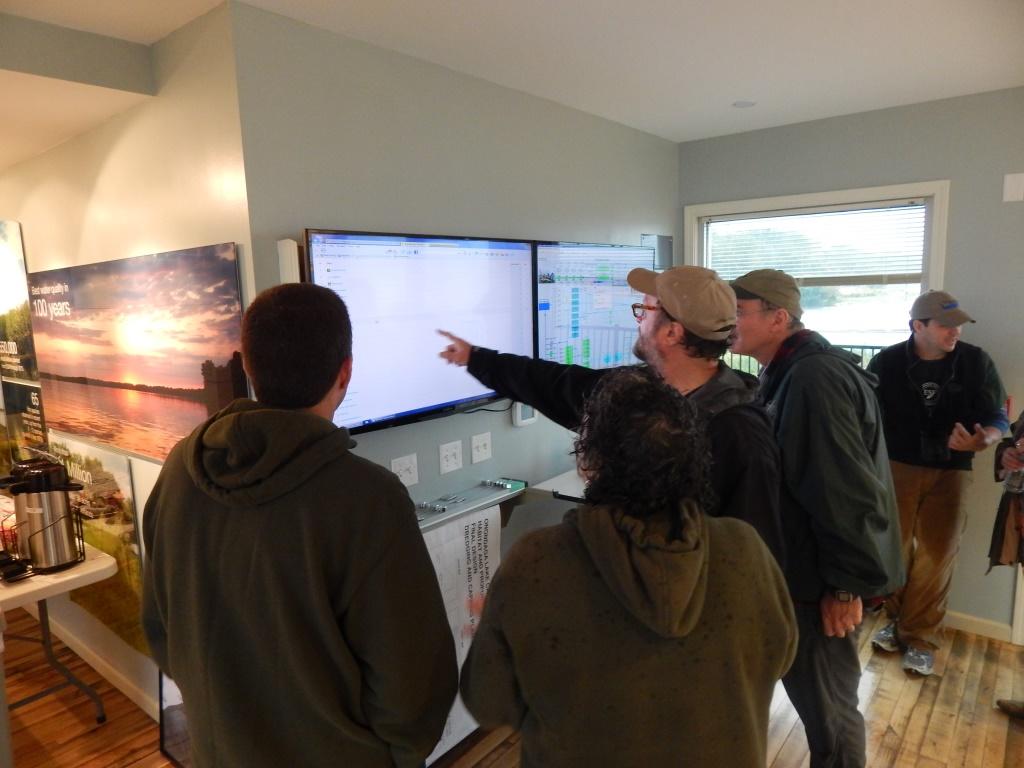
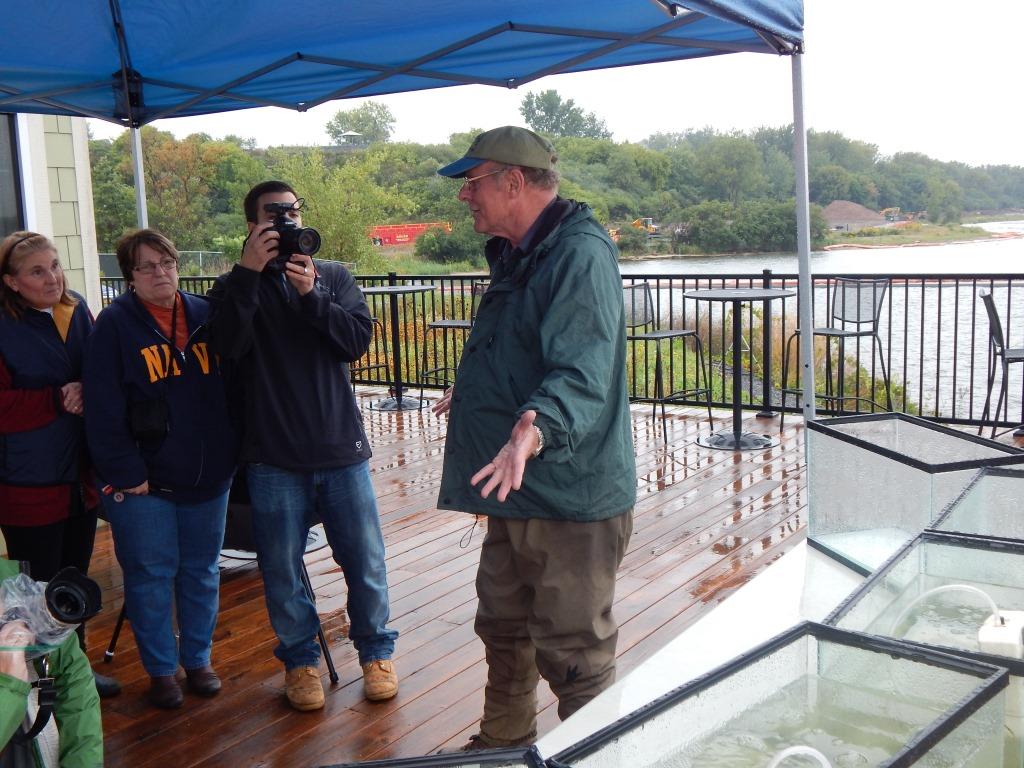
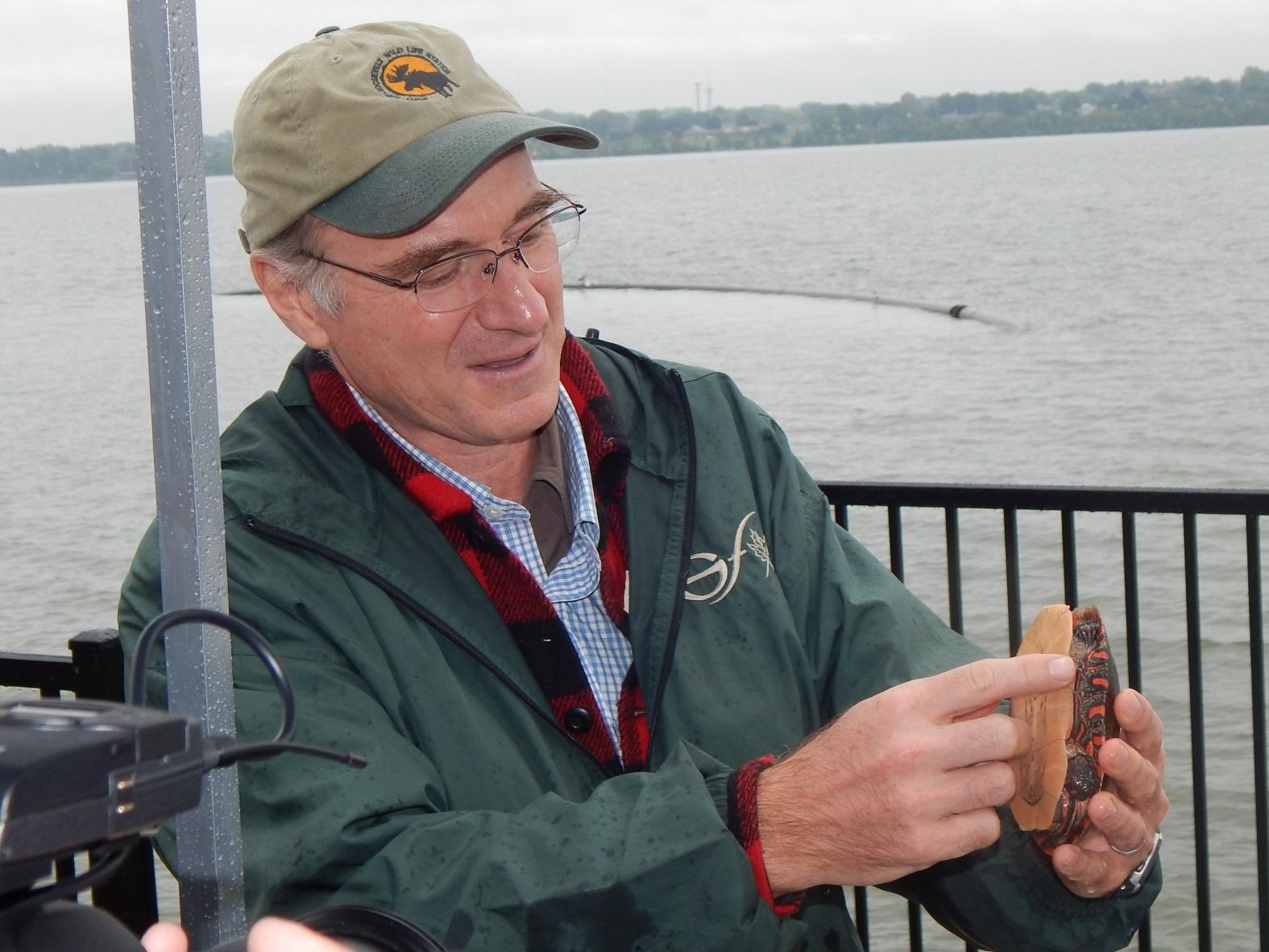
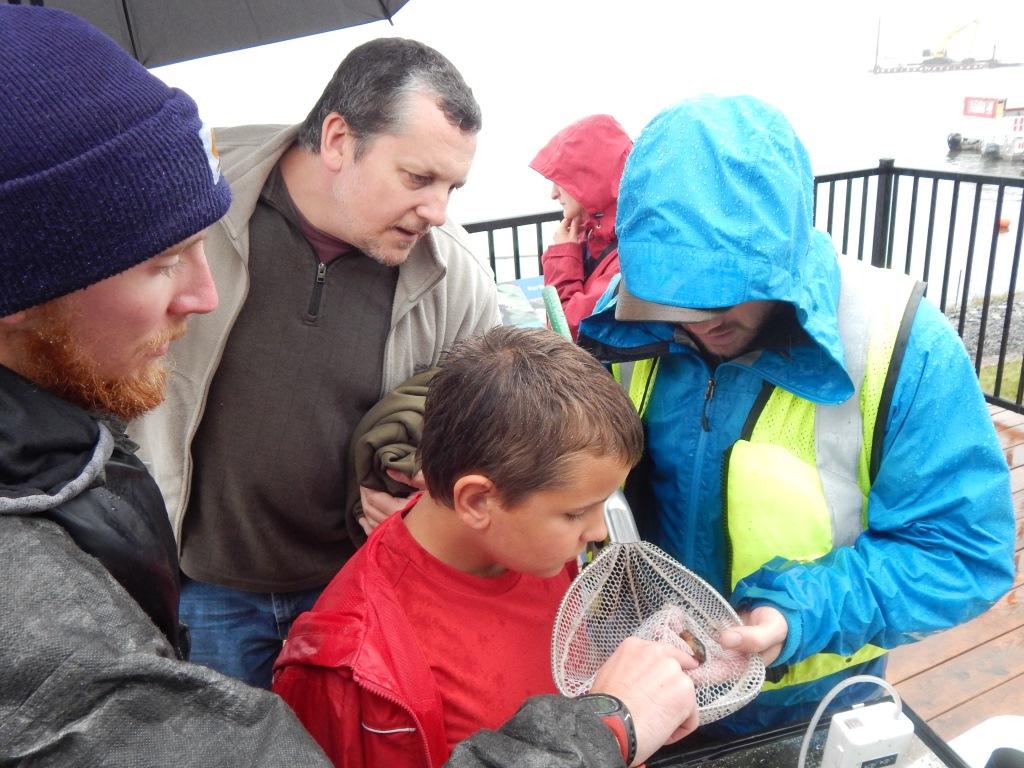
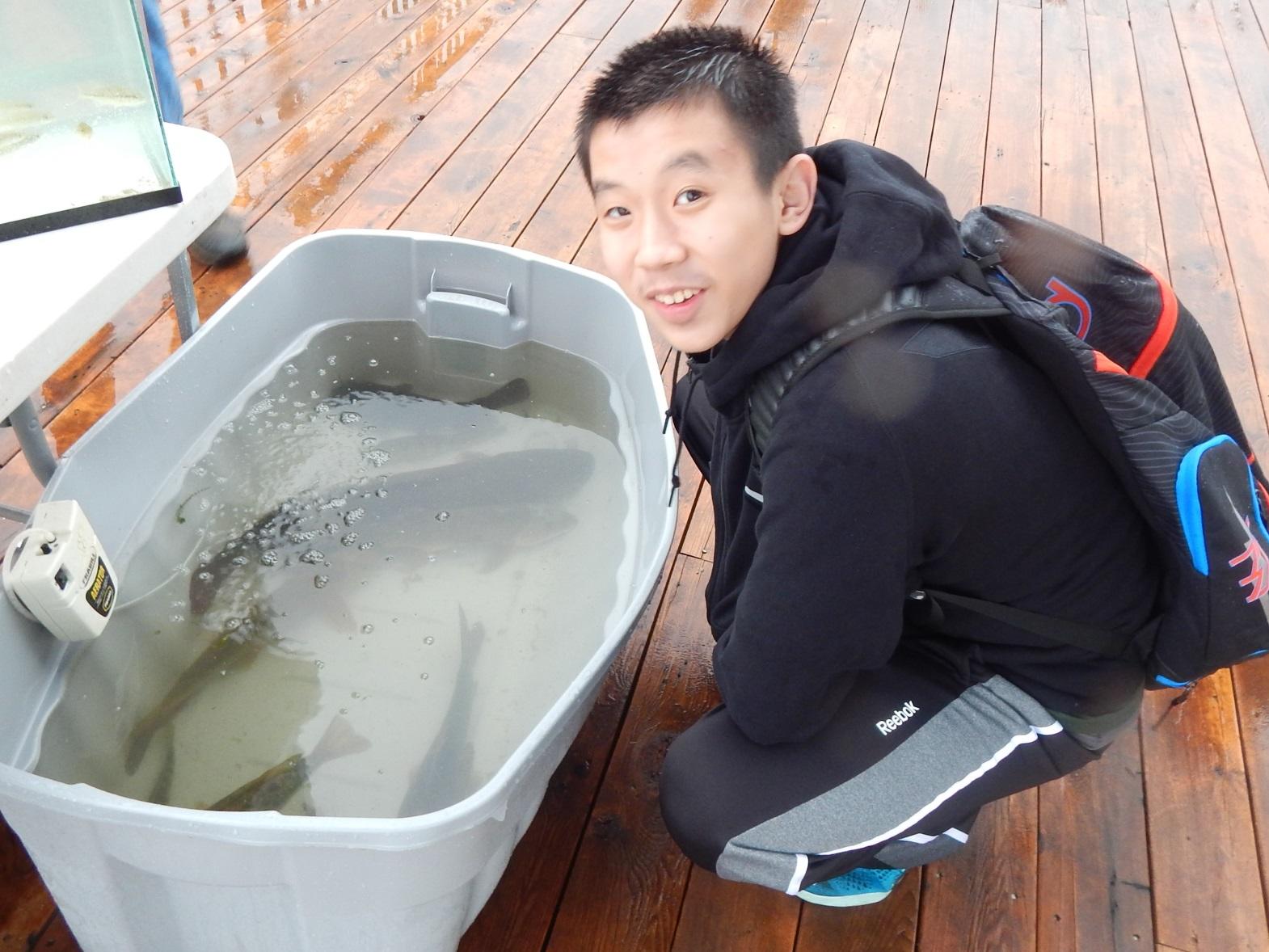
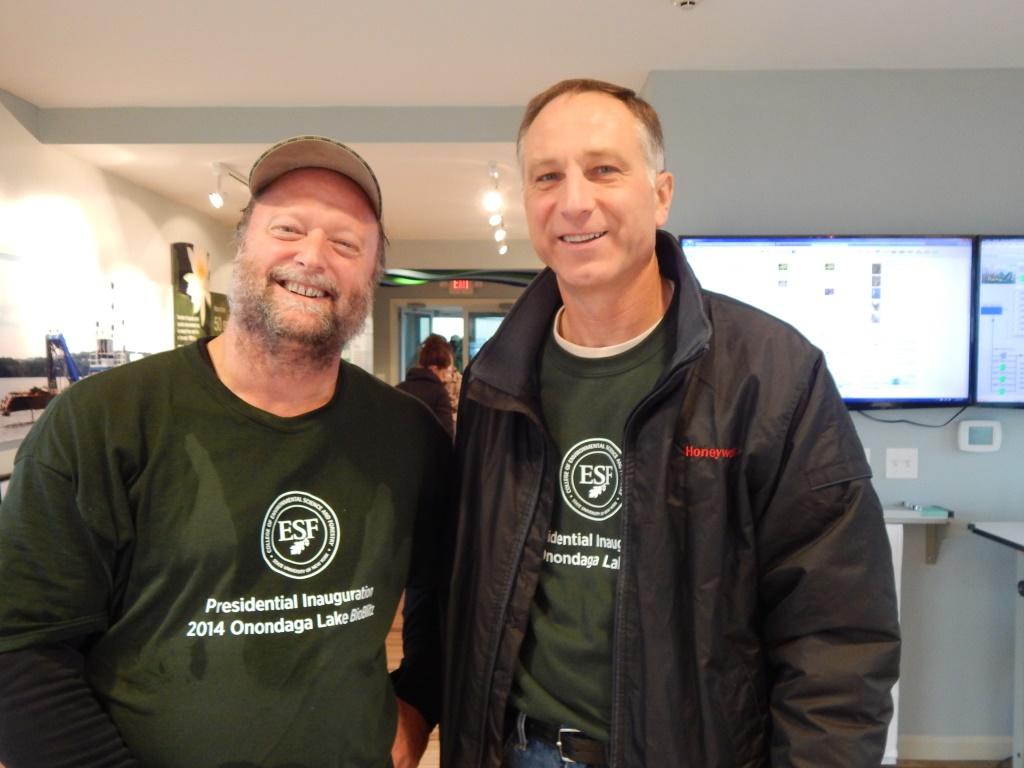
1 of 14
Geddes Brook
-
October 2014
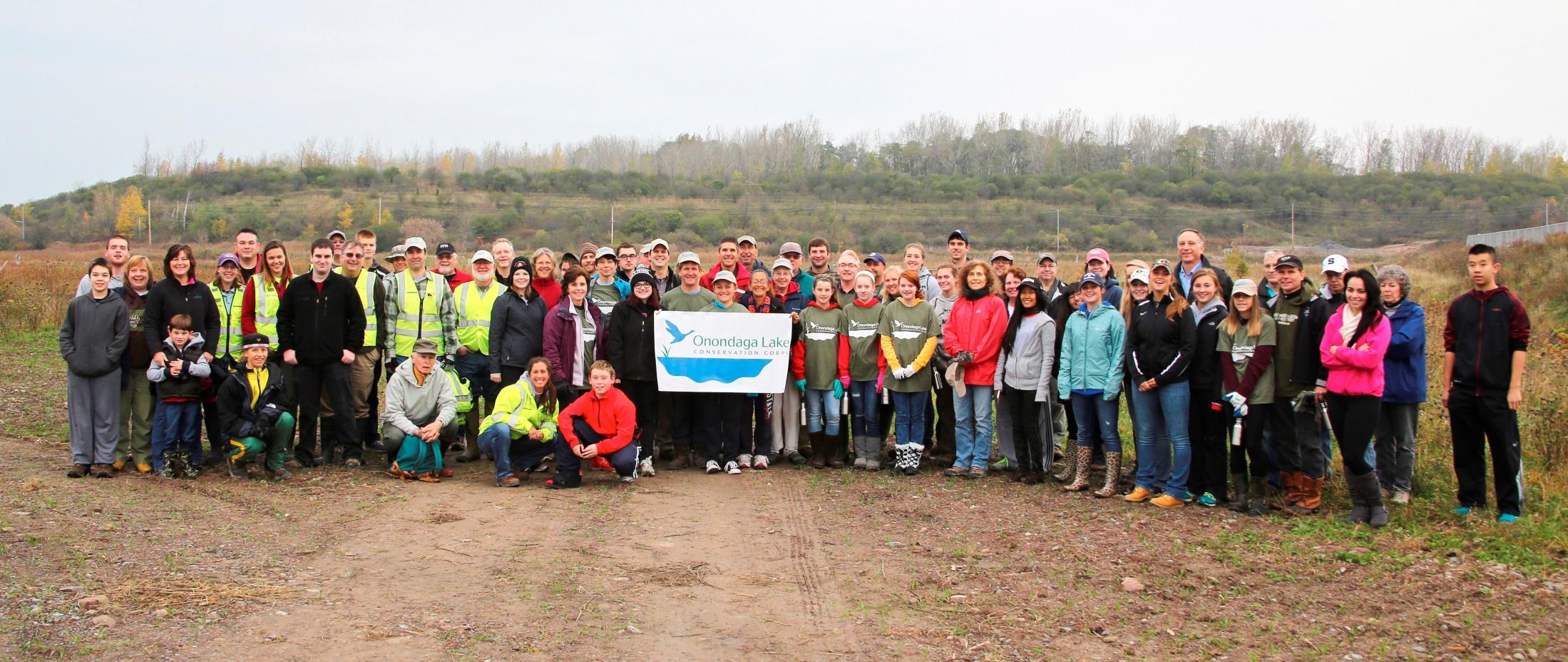 Sixty-eight community volunteers, in addition to experts who gave of their time, participated in the 9th and largest Onondaga Lake Conservation Corps event to date.
Sixty-eight community volunteers, in addition to experts who gave of their time, participated in the 9th and largest Onondaga Lake Conservation Corps event to date.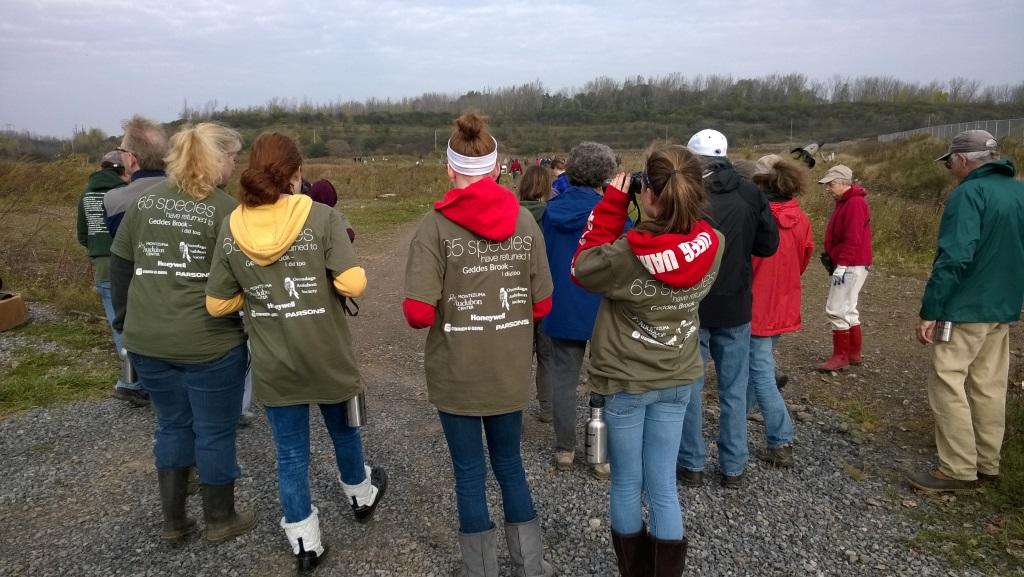 Environmental stewards of all ages fanned out to add more native plants and observe some of the 65 fish and wildlife species now inhabiting the restored Geddes Brook wetlands.
Environmental stewards of all ages fanned out to add more native plants and observe some of the 65 fish and wildlife species now inhabiting the restored Geddes Brook wetlands.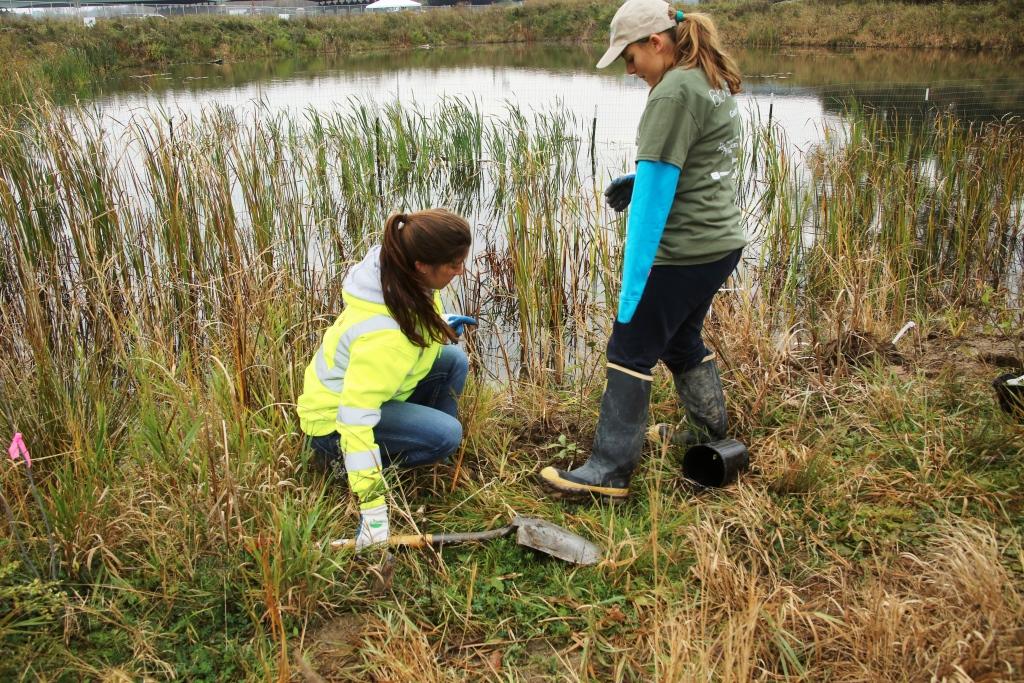 Hailey Higgins (right), with Parsons senior scientist Heather Philip, returned to Geddes Brook wetlands to install more native plants and experience firsthand the habitat development since 2012.
Hailey Higgins (right), with Parsons senior scientist Heather Philip, returned to Geddes Brook wetlands to install more native plants and experience firsthand the habitat development since 2012.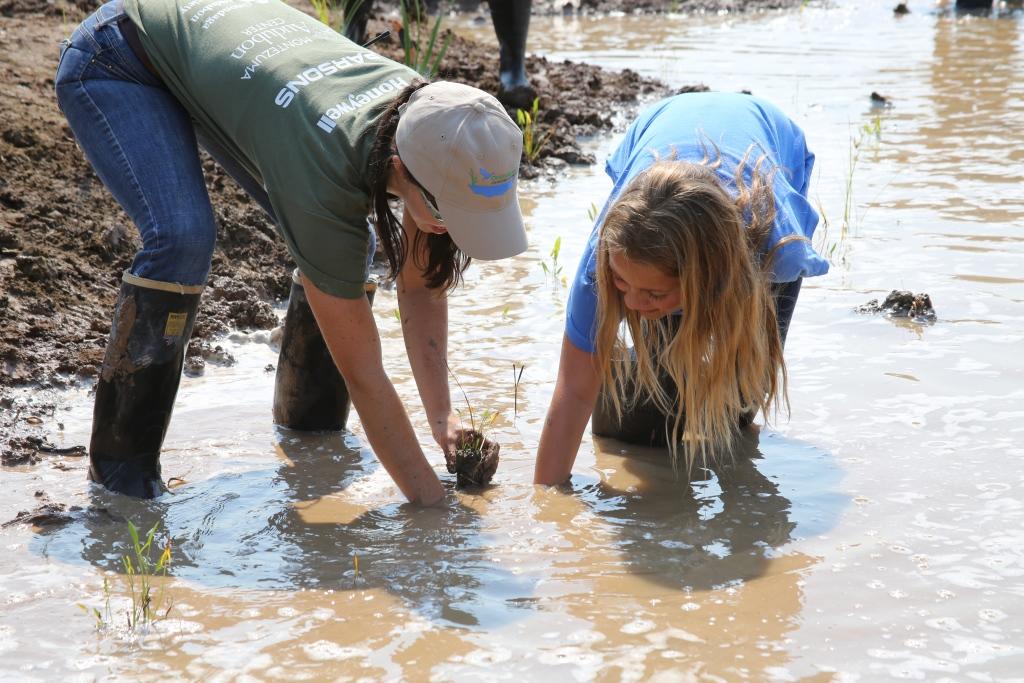 Hailey (right) was present at the inaugural event of the Onondaga Lake Conservation Corps when community volunteers got their hands dirty planting native species, becoming environmental stewards of the Onondaga Lake watershed.
Hailey (right) was present at the inaugural event of the Onondaga Lake Conservation Corps when community volunteers got their hands dirty planting native species, becoming environmental stewards of the Onondaga Lake watershed.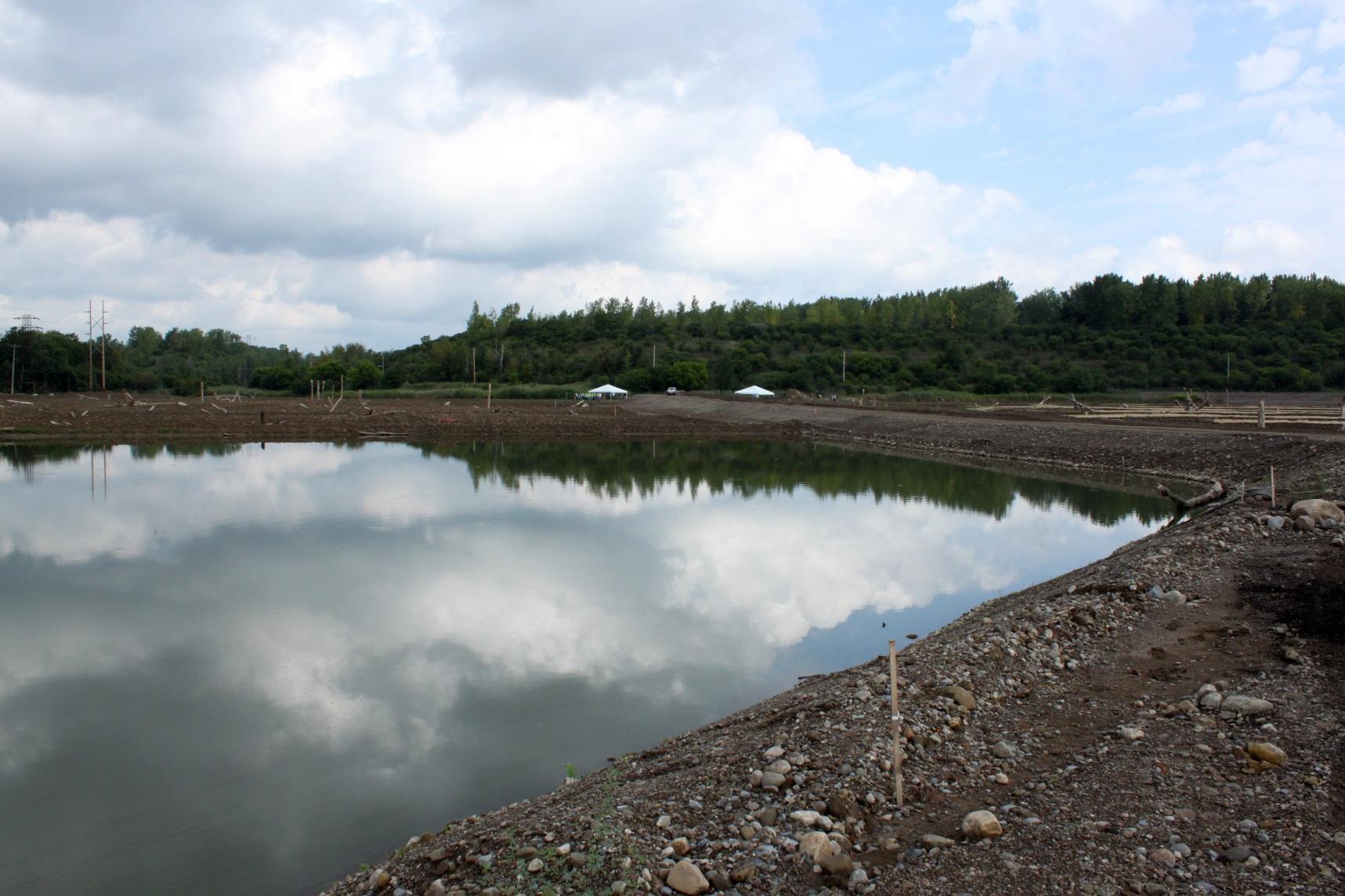 This photo shows Geddes Brook wetlands looking largely barren soon after construction, when one of the first Corps planting events took place (in distance).
This photo shows Geddes Brook wetlands looking largely barren soon after construction, when one of the first Corps planting events took place (in distance).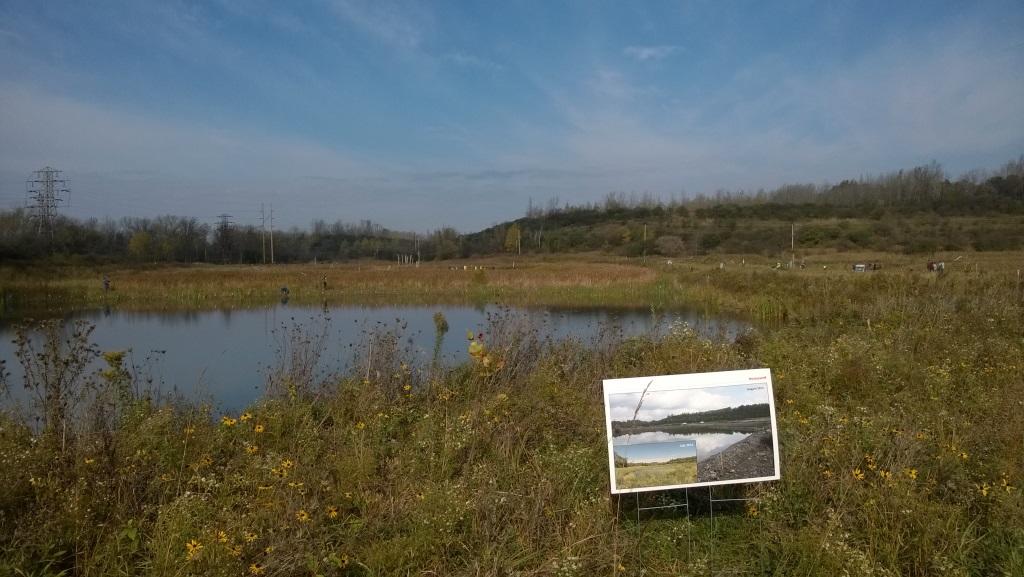 Today Geddes Brook wetlands is a flourishing ecosystem. Posters were placed during the October 2014 event to remind participants how the wetlands appeared just two years ago.
Today Geddes Brook wetlands is a flourishing ecosystem. Posters were placed during the October 2014 event to remind participants how the wetlands appeared just two years ago.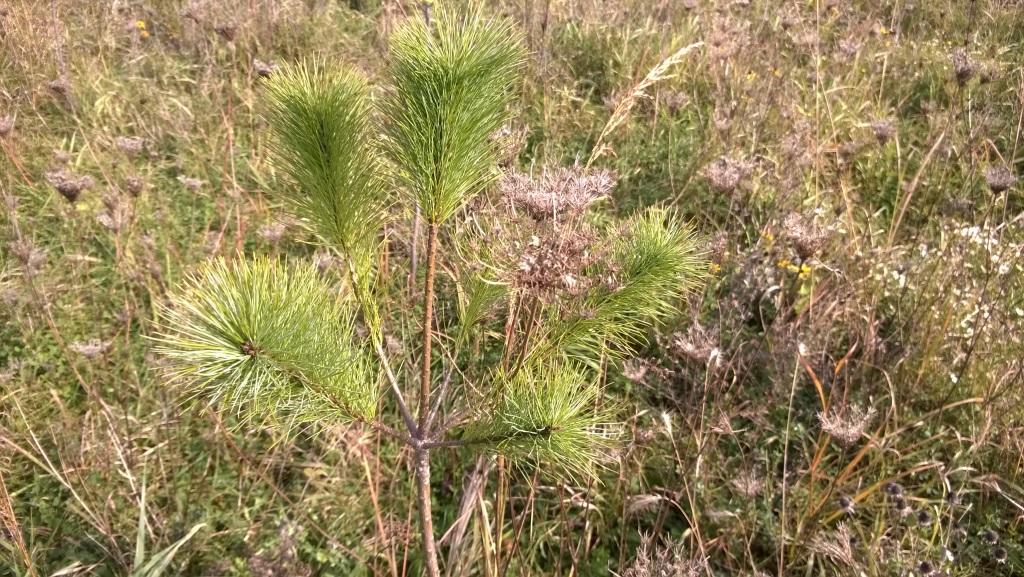 This young white pine and many other native grasses, shrubs and trees previously planted are now thriving in the reestablished Geddes Brook habitat areas.
This young white pine and many other native grasses, shrubs and trees previously planted are now thriving in the reestablished Geddes Brook habitat areas.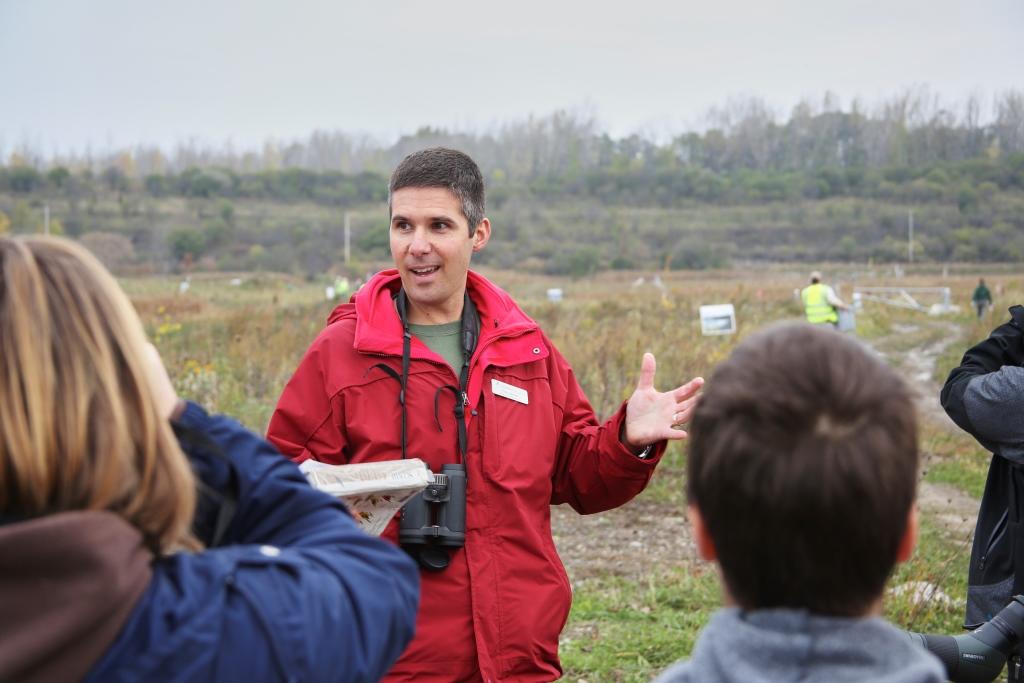 Before embarking on a walk to inventory birds sighted, Montezuma Audubon Center director Chris Lajewski briefs birdwatchers on identifying species.
Before embarking on a walk to inventory birds sighted, Montezuma Audubon Center director Chris Lajewski briefs birdwatchers on identifying species.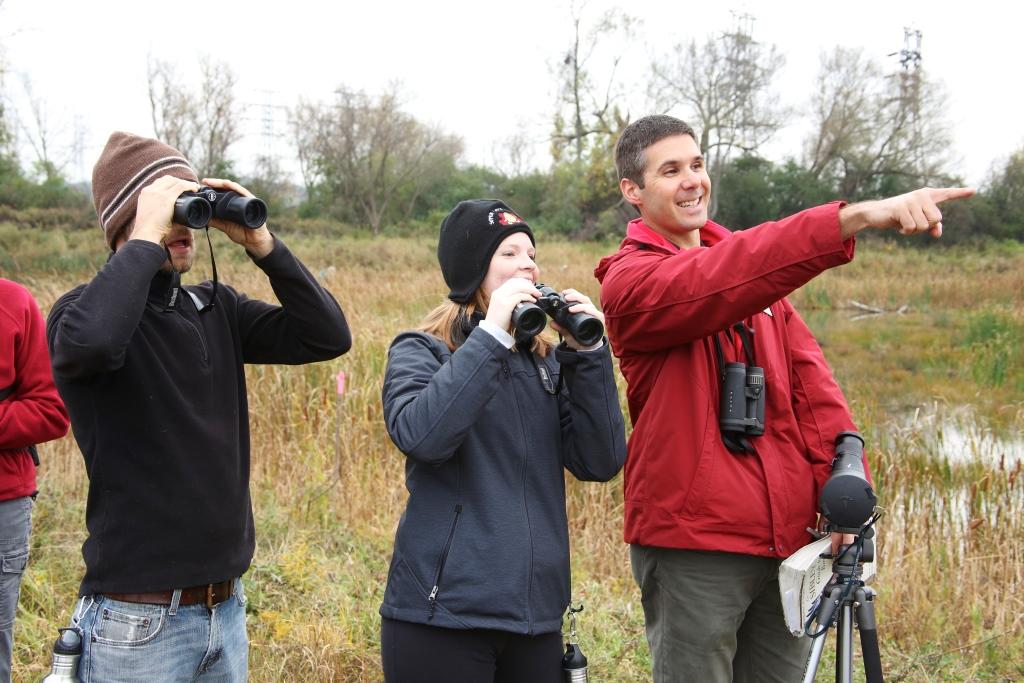 Brian Cocca (left) and Liverpool Middle School math teacher Sara Pieklik (center) spot birds in the field. In total, 28 bird species were observed during the 3-hour event.
Brian Cocca (left) and Liverpool Middle School math teacher Sara Pieklik (center) spot birds in the field. In total, 28 bird species were observed during the 3-hour event.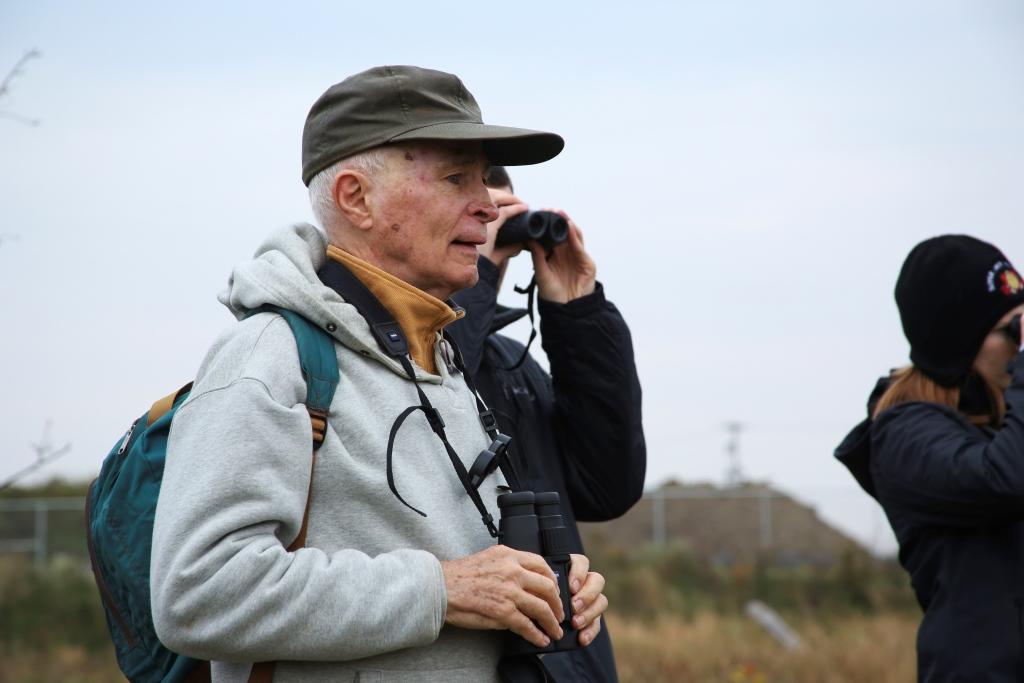 Photo: Richard Askeland of Syracuse has participated in several Corps events. Richard believes Onondaga Lake is an important natural feature of the area, and in order improve it everyone has to do their part.
Photo: Richard Askeland of Syracuse has participated in several Corps events. Richard believes Onondaga Lake is an important natural feature of the area, and in order improve it everyone has to do their part.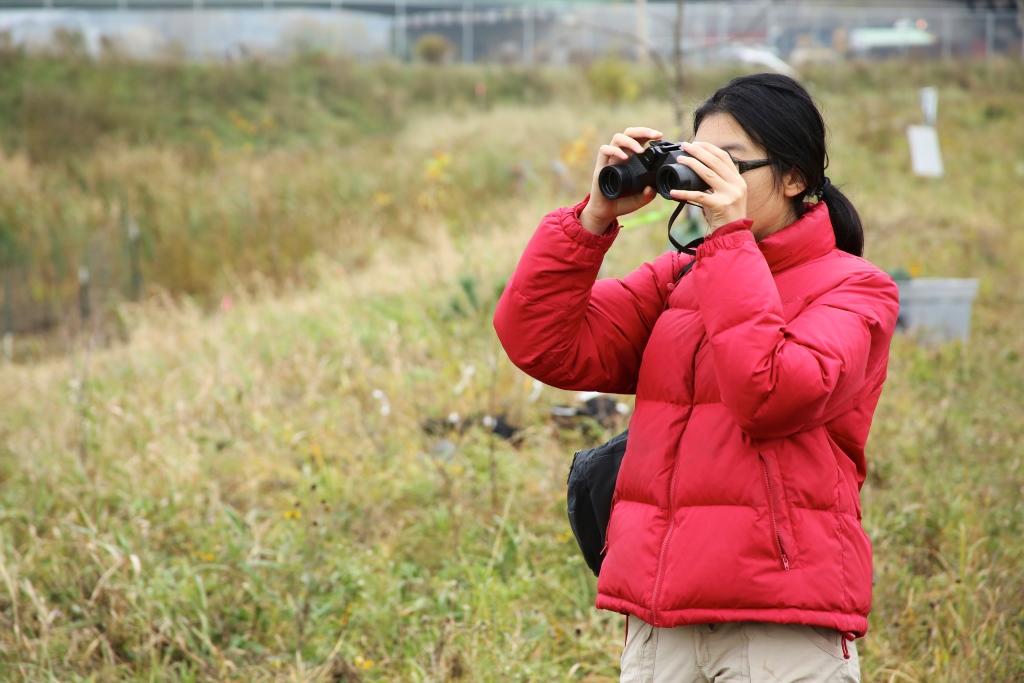 Photo: Wendy Huang, SUNY-ESF student, assists with citizen science monitoring near Geddes Brook, which is part of the Onondaga Lake Important Bird Area.
Photo: Wendy Huang, SUNY-ESF student, assists with citizen science monitoring near Geddes Brook, which is part of the Onondaga Lake Important Bird Area.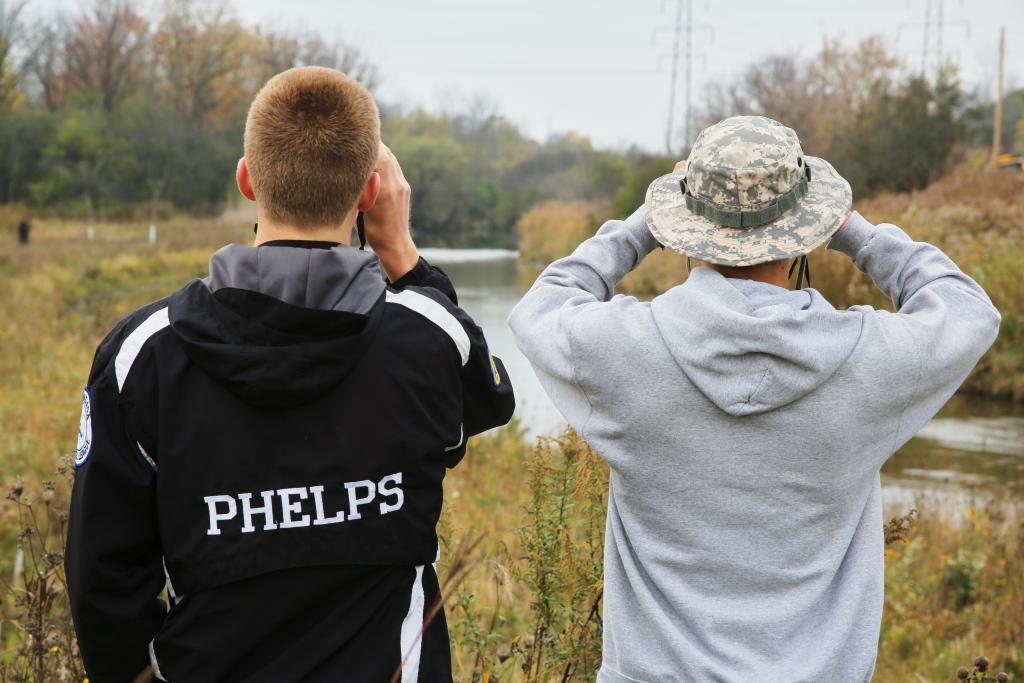 Photo: Brad Phelps and R.J. Herrick of Tully track native birds along Geddes Brook.
Photo: Brad Phelps and R.J. Herrick of Tully track native birds along Geddes Brook.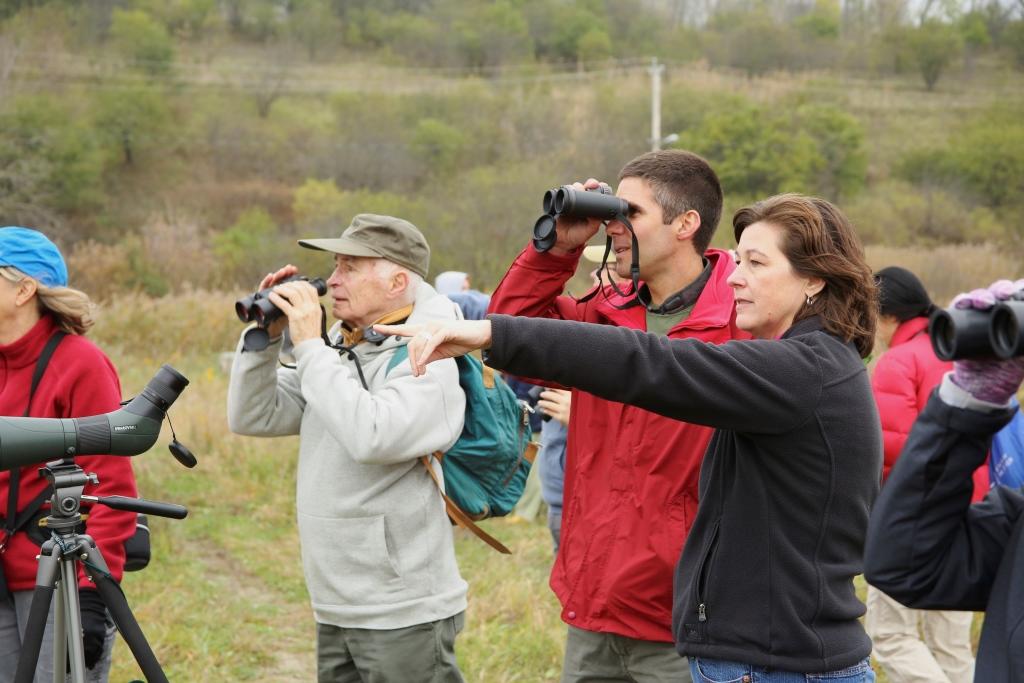 Photo: Erin Crotty (right), executive director of Audubon New York, also participated in the Corps event, noting what is now a diverse wetland providing vital nesting, shelter, and food to several Audubon conservation species.
Photo: Erin Crotty (right), executive director of Audubon New York, also participated in the Corps event, noting what is now a diverse wetland providing vital nesting, shelter, and food to several Audubon conservation species.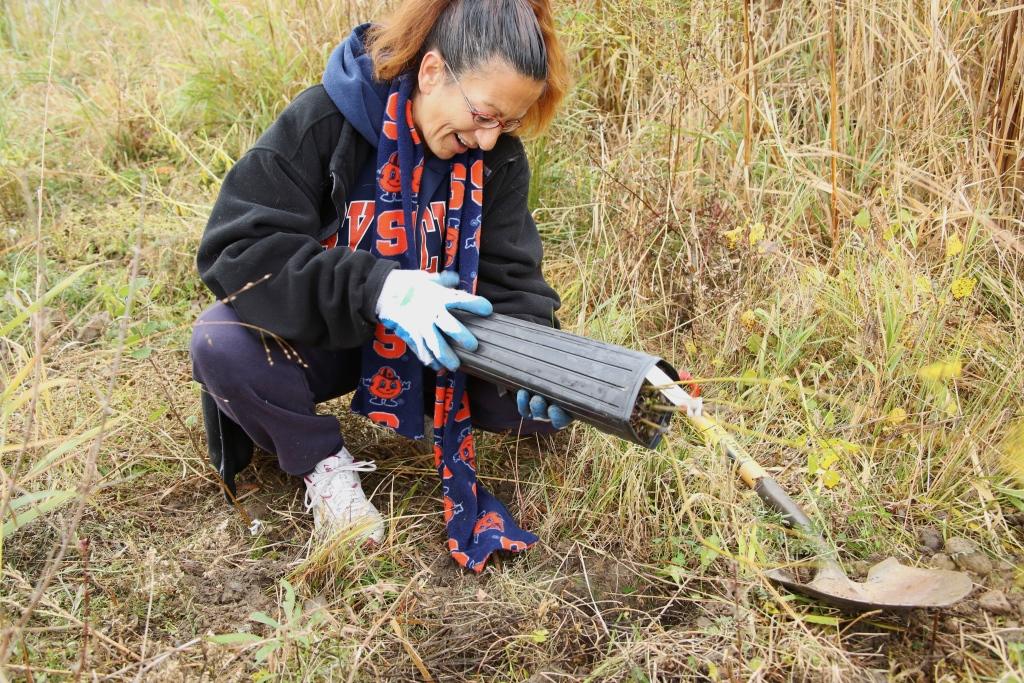 Photo: Margaret DeCarlo of Clay loosens a silky willow tree, a native species, from its pot.
Photo: Margaret DeCarlo of Clay loosens a silky willow tree, a native species, from its pot.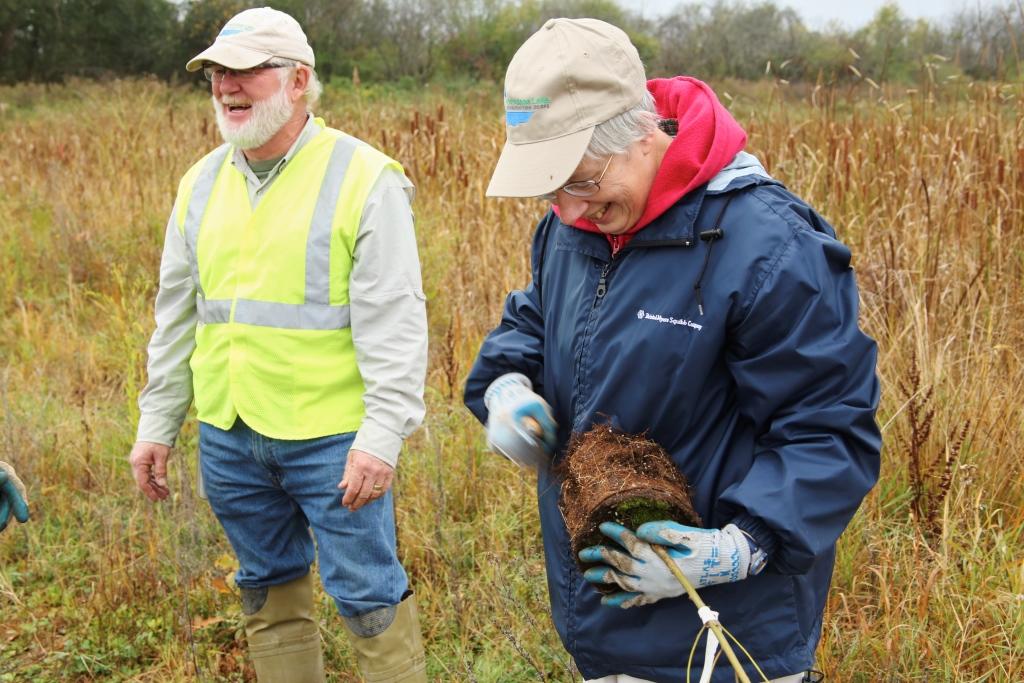 Sue Boettger (right) of Fayetteville roughens the root ball of a black willow before planting.
Sue Boettger (right) of Fayetteville roughens the root ball of a black willow before planting.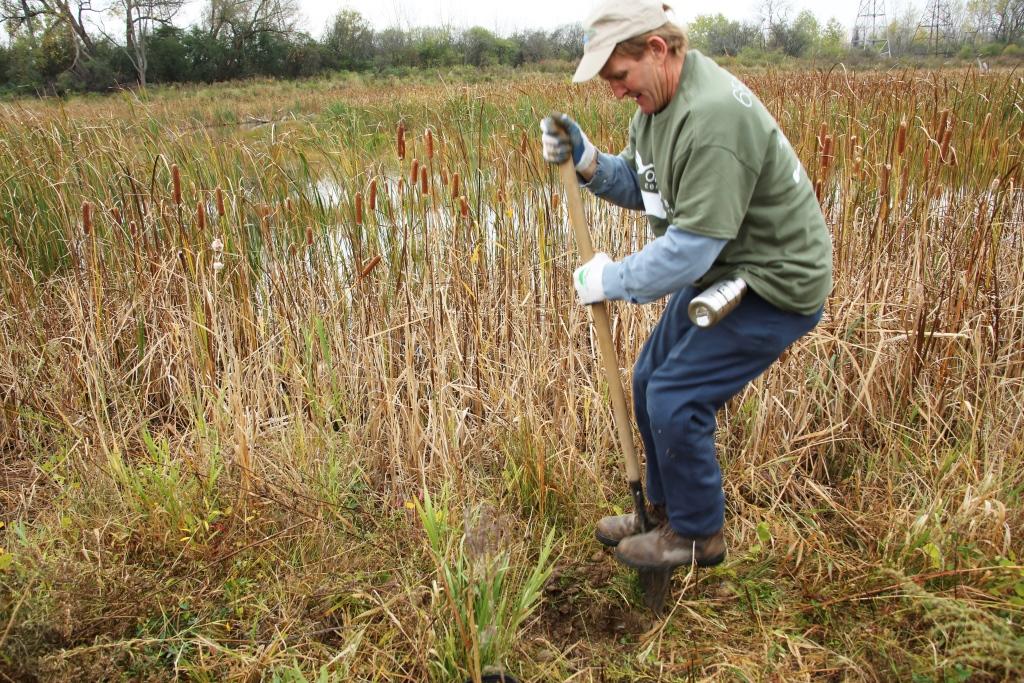 Patrick Higgins of Clay puts his weight behind the effort to plant a new tree in the wetlands.
Patrick Higgins of Clay puts his weight behind the effort to plant a new tree in the wetlands.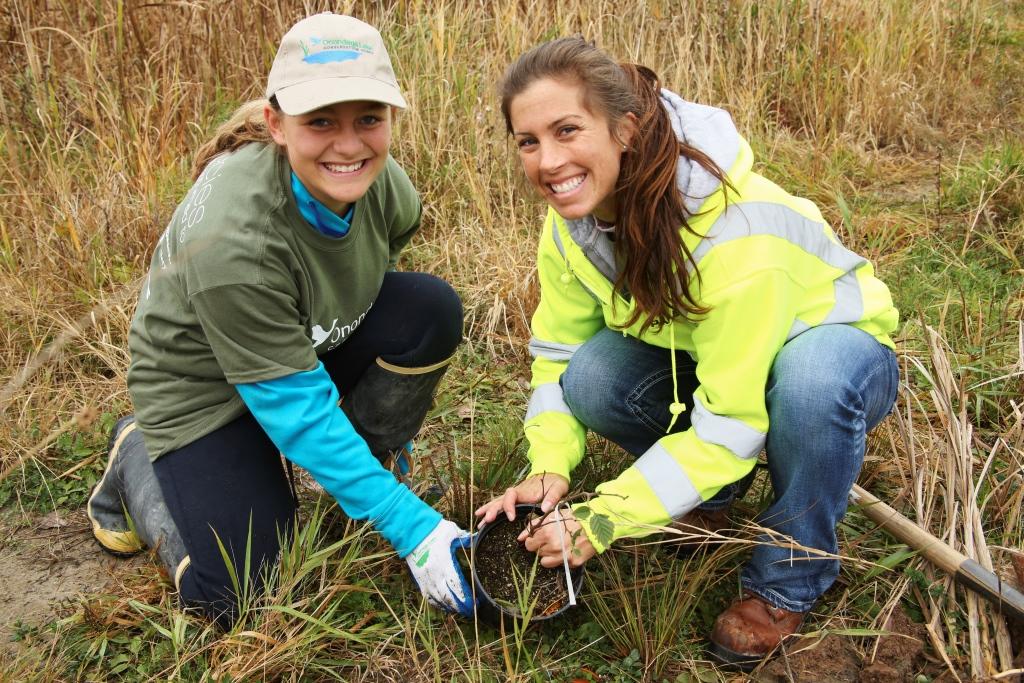 To date, over 500 volunteers have joined grassroots efforts by the Onondaga Lake Conservation Corps to improve habitat for a diverse population of fish, birds, and mammals.
To date, over 500 volunteers have joined grassroots efforts by the Onondaga Lake Conservation Corps to improve habitat for a diverse population of fish, birds, and mammals.1 of 17
-
July 2012
Nine Mile Creek
-
October 2013
 Onondaga Lake Conservation Corps volunteers arrive on a Saturday morning and sign in at the main tent.
Onondaga Lake Conservation Corps volunteers arrive on a Saturday morning and sign in at the main tent.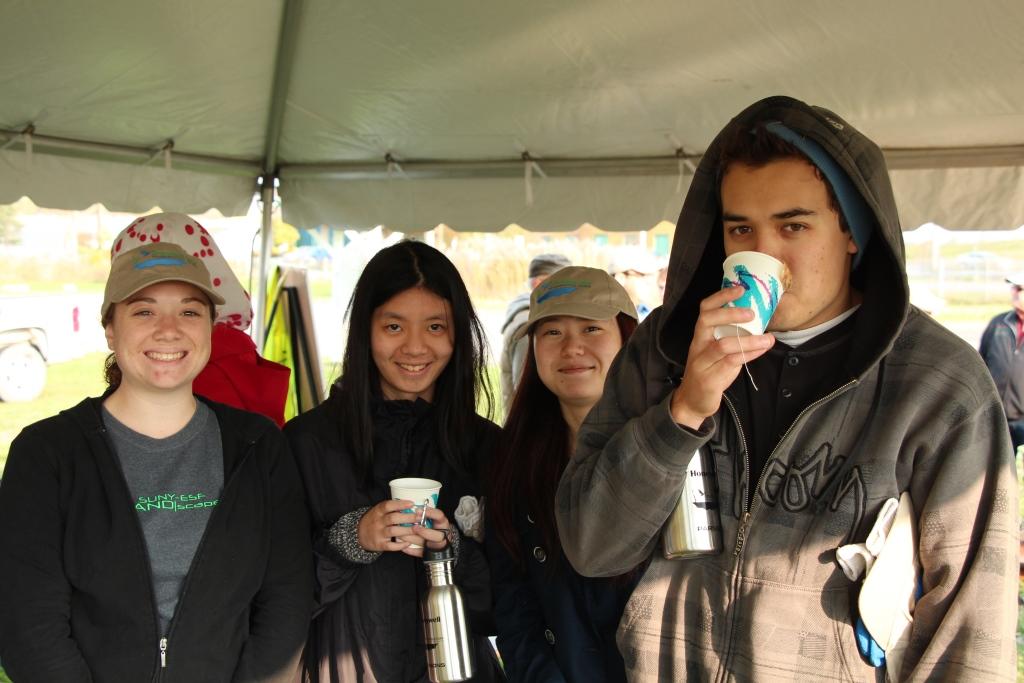 SUNY Environmental Science and Forestry (ESF) landscape architecture students were part of 50 volunteers who helped plant native plants along Nine Mile Creek.
SUNY Environmental Science and Forestry (ESF) landscape architecture students were part of 50 volunteers who helped plant native plants along Nine Mile Creek.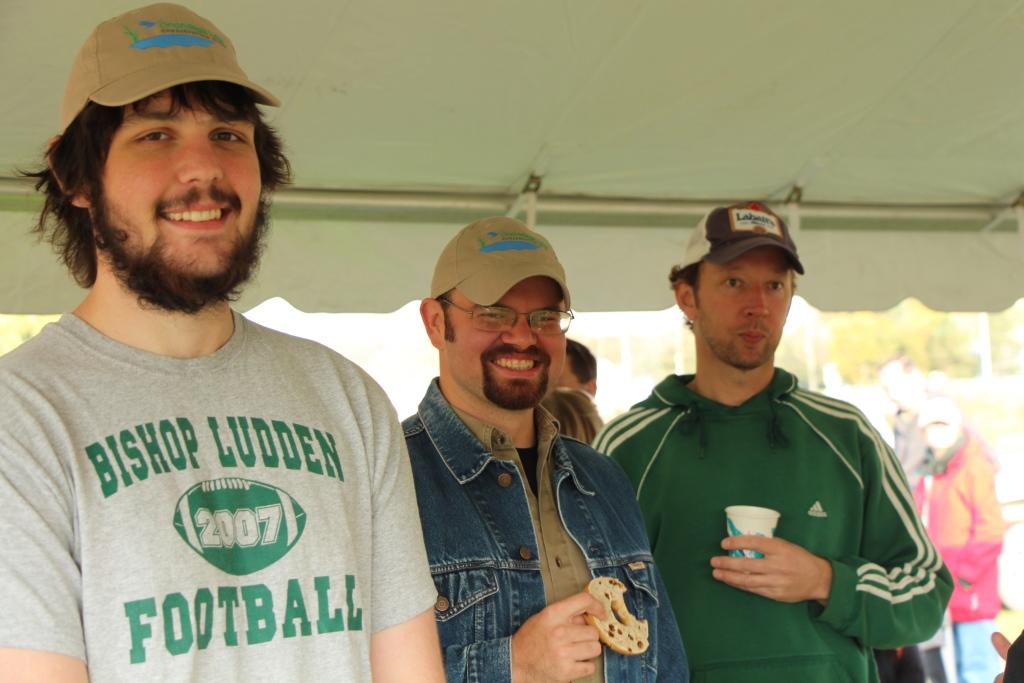 SUNY-ESF students gather before the planting event. SUNY-ESF has worked in partnership with Honeywell to help select native plants for restored wetlands at the LCP site, Geddes Brook, and Nine Mile Creek.
SUNY-ESF students gather before the planting event. SUNY-ESF has worked in partnership with Honeywell to help select native plants for restored wetlands at the LCP site, Geddes Brook, and Nine Mile Creek.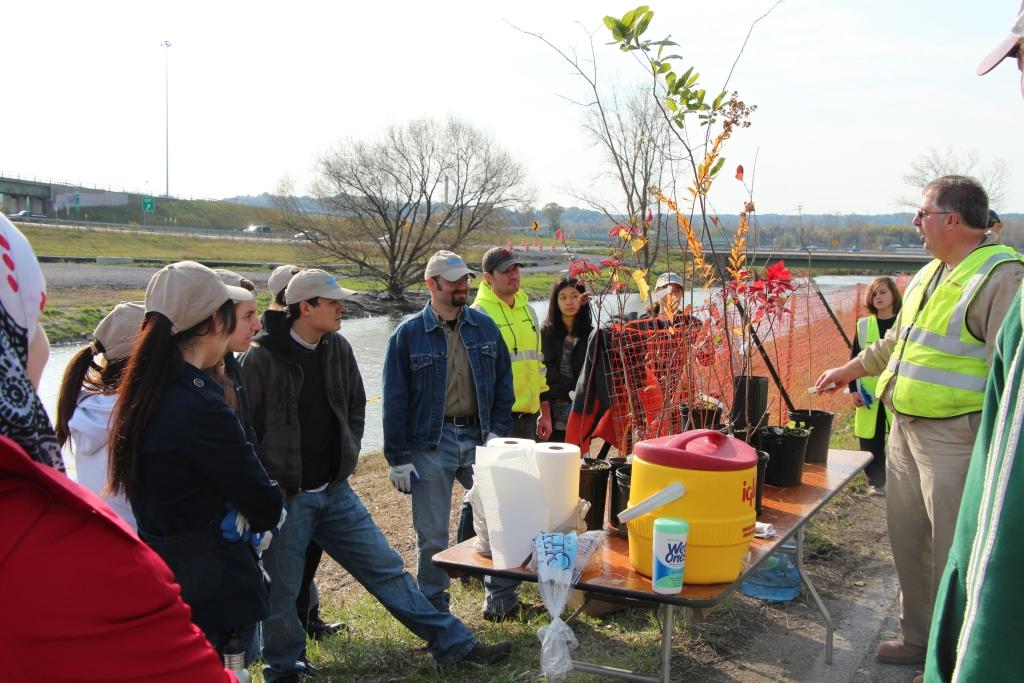 Ray D’Hollander, Parsons environmental engineer and Corps volunteer, shows participants native trees they will help plant.
Ray D’Hollander, Parsons environmental engineer and Corps volunteer, shows participants native trees they will help plant.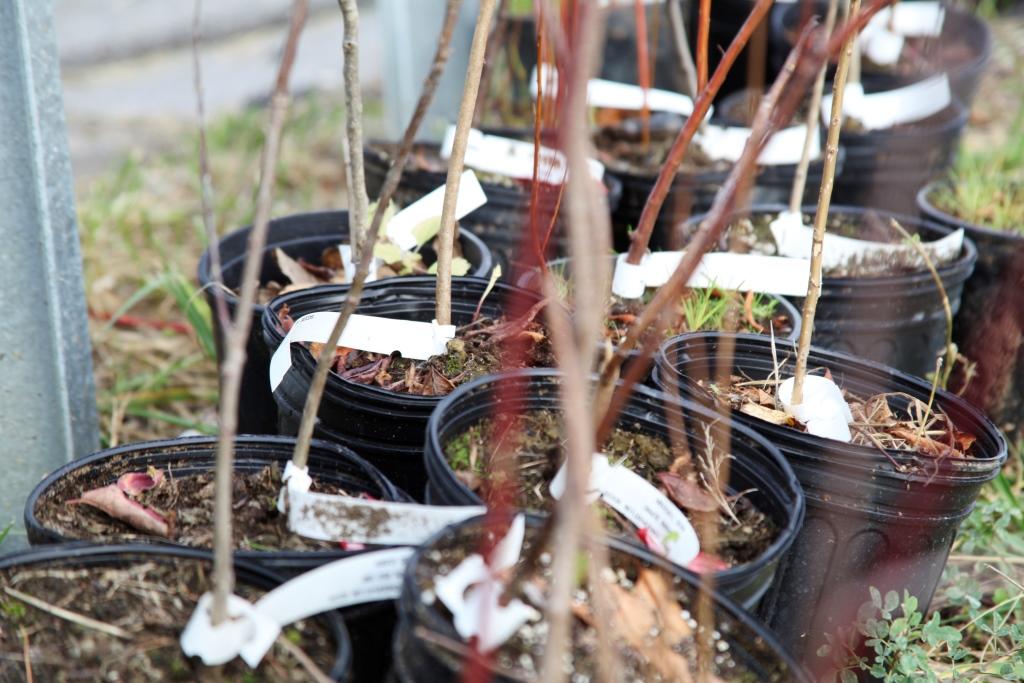 Native, or indigenous, species are very well adapted to local conditions.
Native, or indigenous, species are very well adapted to local conditions.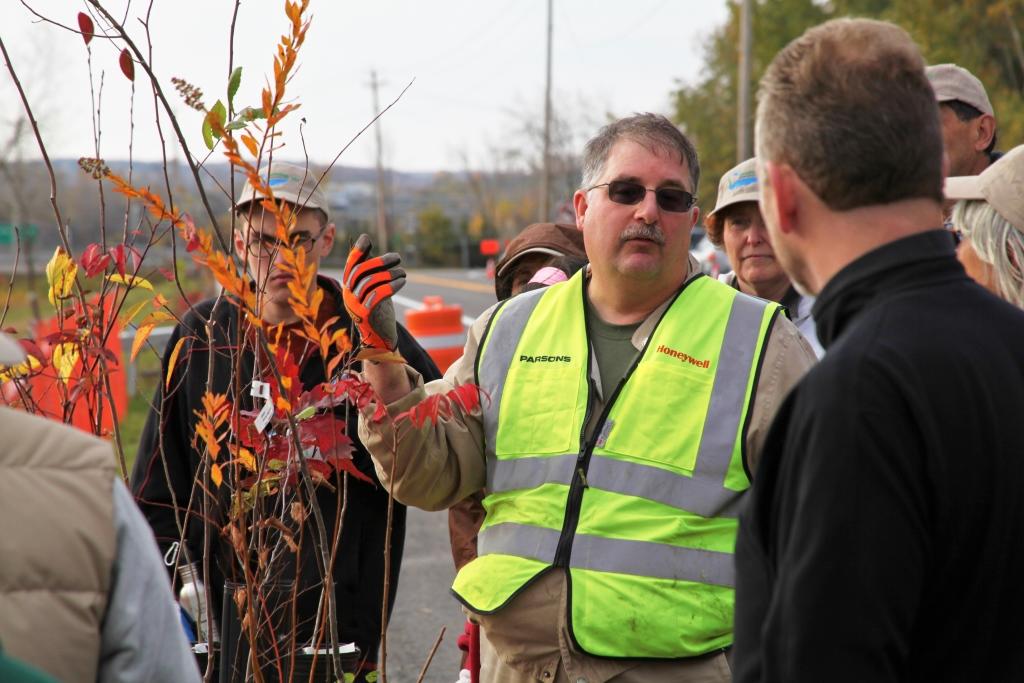 Native plants also provide the best food and habitat for native wildlife.
Native plants also provide the best food and habitat for native wildlife.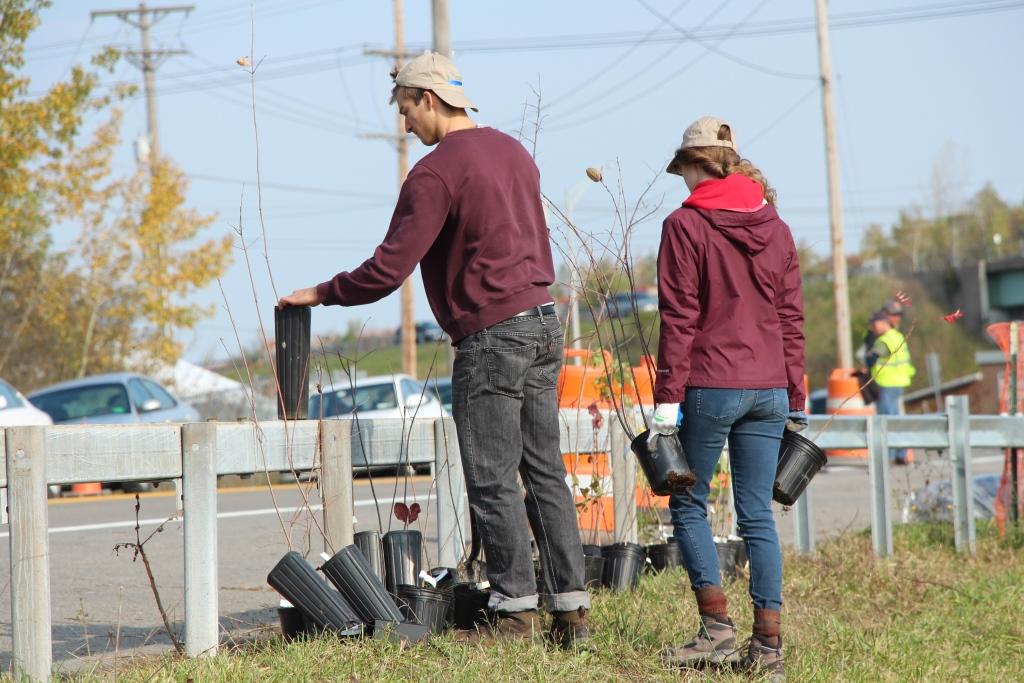 Corps volunteers carry trees and shrubs to the planting area along Nine Mile Creek.
Corps volunteers carry trees and shrubs to the planting area along Nine Mile Creek.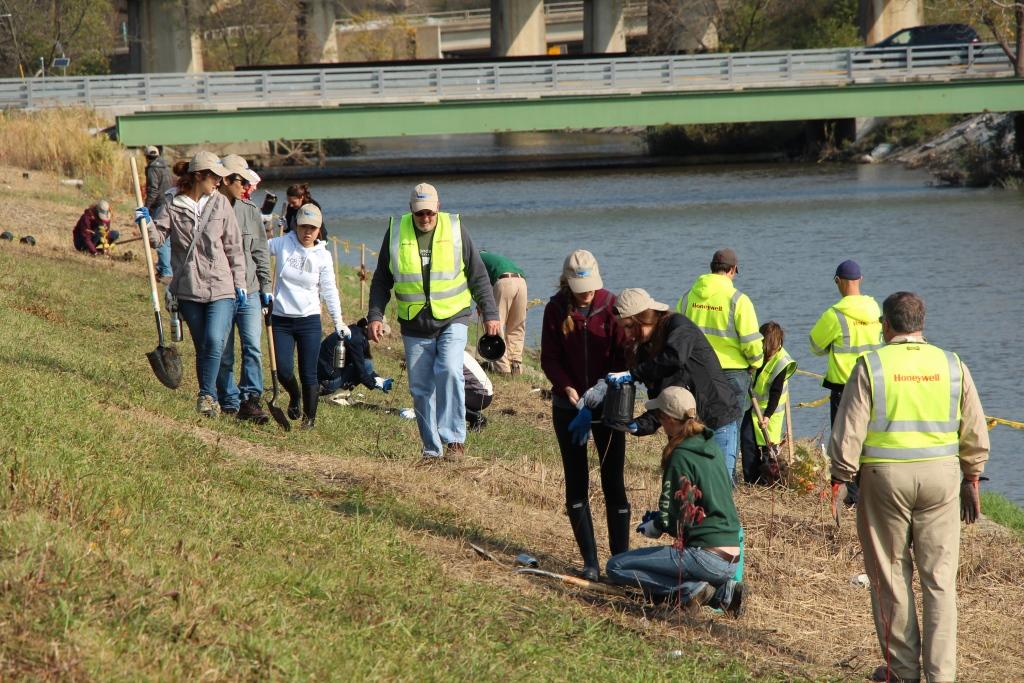 Participants spread out along a section of Nine Mile Creek to place new trees and shrubs.
Participants spread out along a section of Nine Mile Creek to place new trees and shrubs.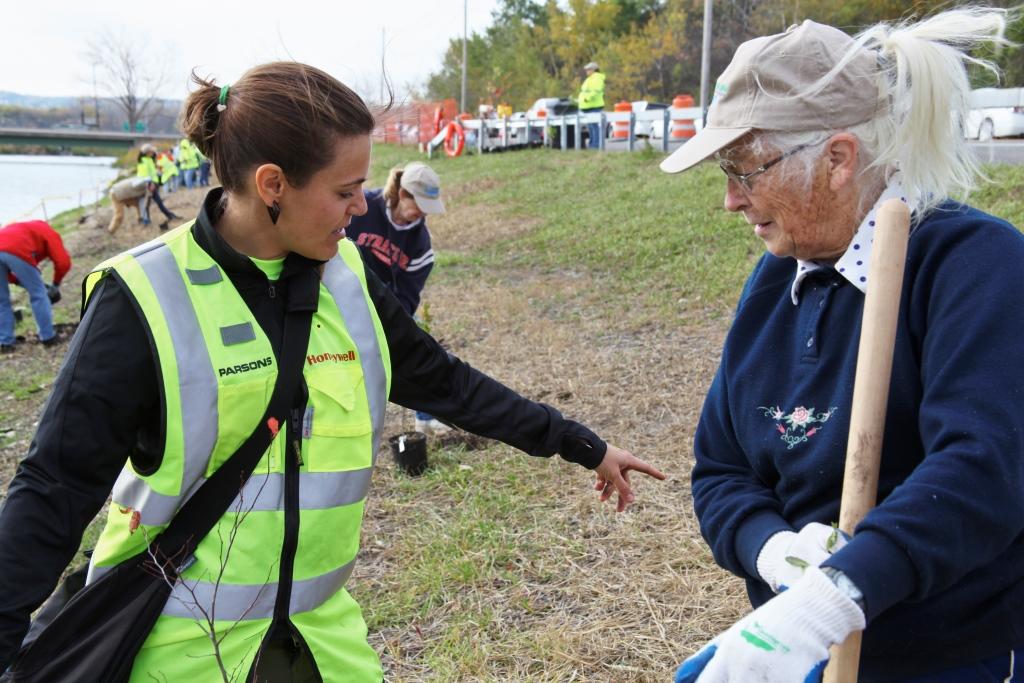 Natalia Cagide, SUNY-ESF teaching assistant and Parsons intern, works with volunteer Barbara Sleight to pick a good spot for a young tree.
Natalia Cagide, SUNY-ESF teaching assistant and Parsons intern, works with volunteer Barbara Sleight to pick a good spot for a young tree.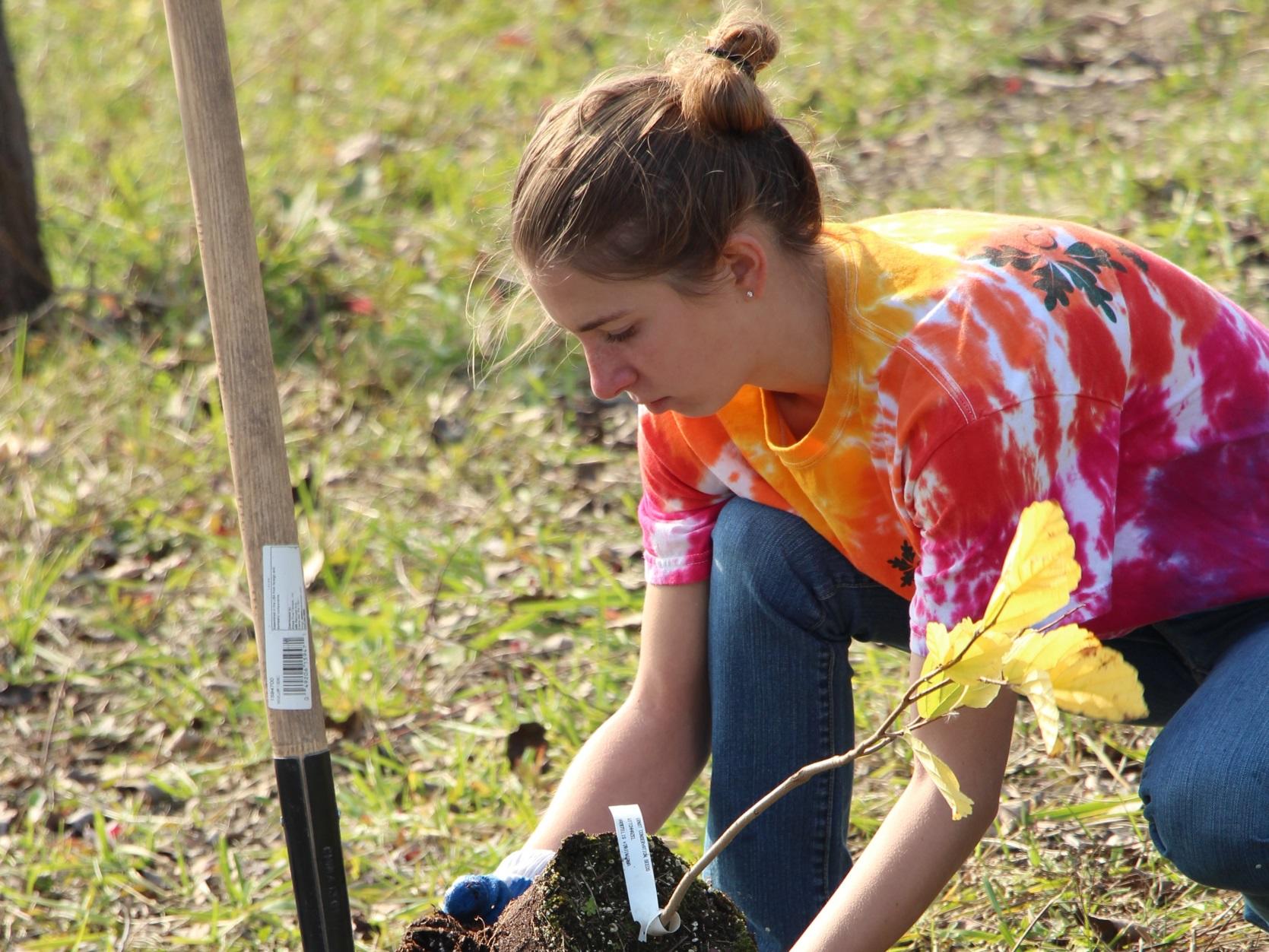 In fall, the air is cooler but the ground is still warm, making it an ideal time to install new plants.
In fall, the air is cooler but the ground is still warm, making it an ideal time to install new plants.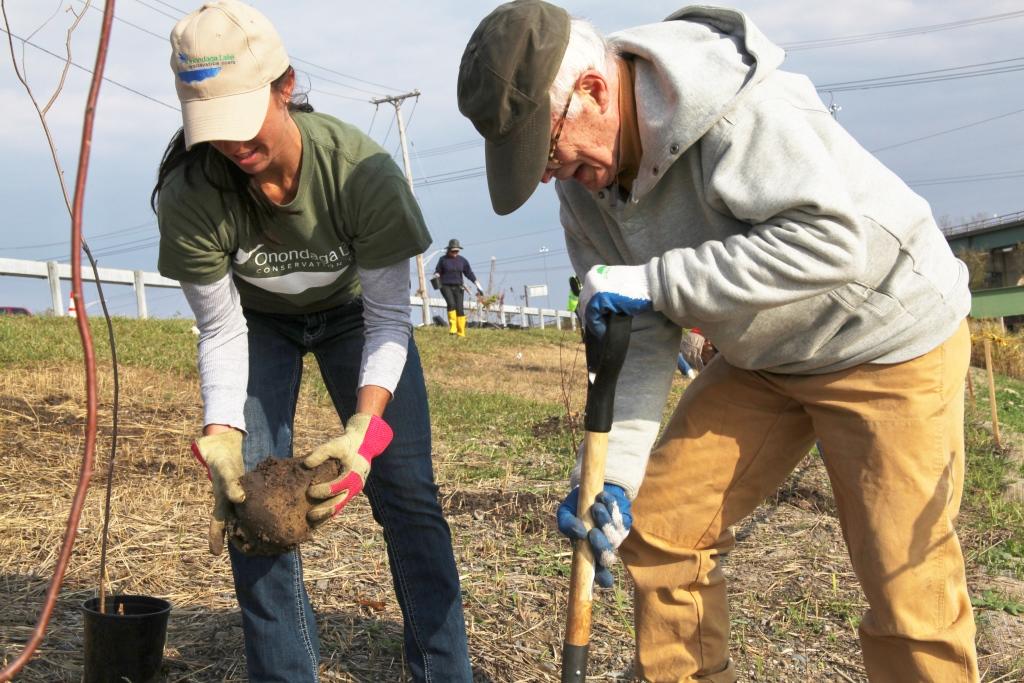 Heather Philip, senior scientist at Parsons, removes a rock while volunteer Richard Askeland digs a hole.
Heather Philip, senior scientist at Parsons, removes a rock while volunteer Richard Askeland digs a hole.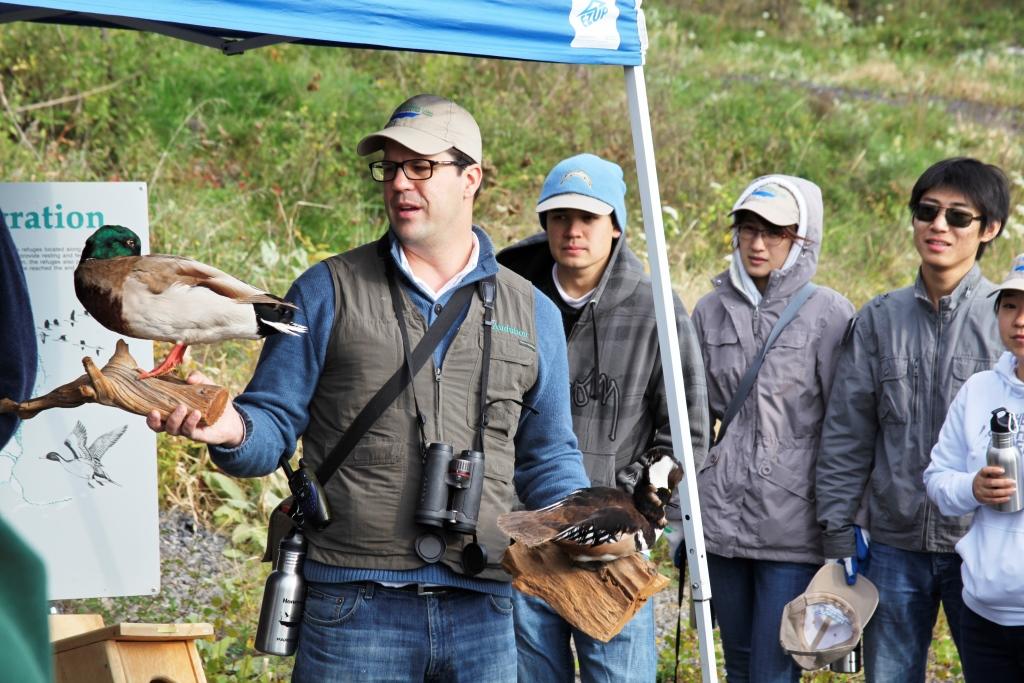 Frank Moses, Onondaga Audubon Society Board Member, describes birds native to the area using mounted specimens.
Frank Moses, Onondaga Audubon Society Board Member, describes birds native to the area using mounted specimens.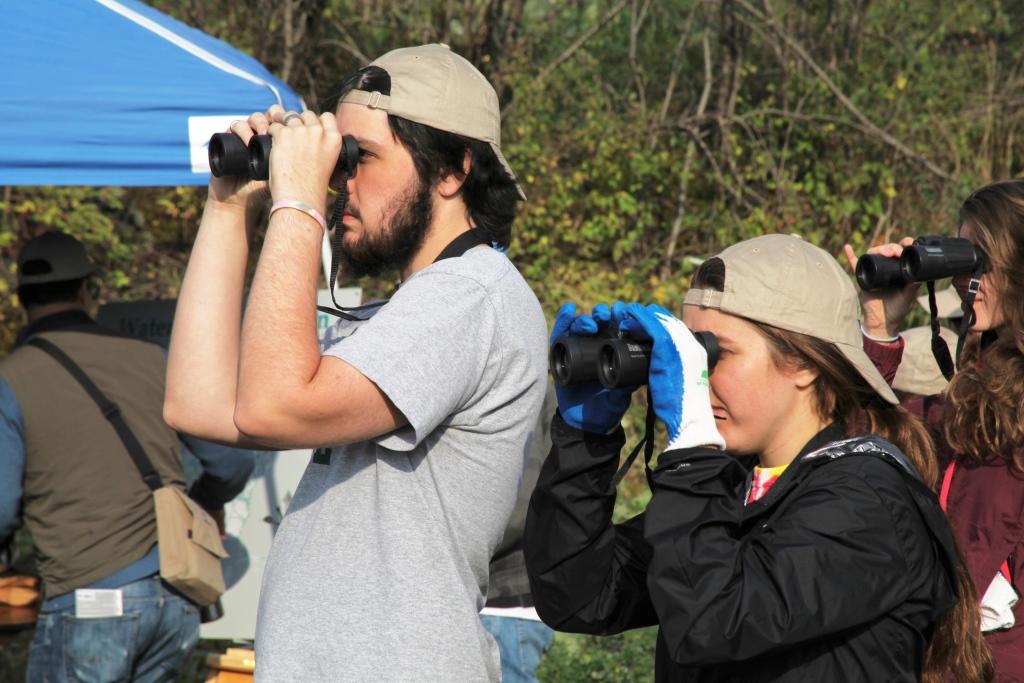 Participants track birds seen in the vicinity.
Participants track birds seen in the vicinity.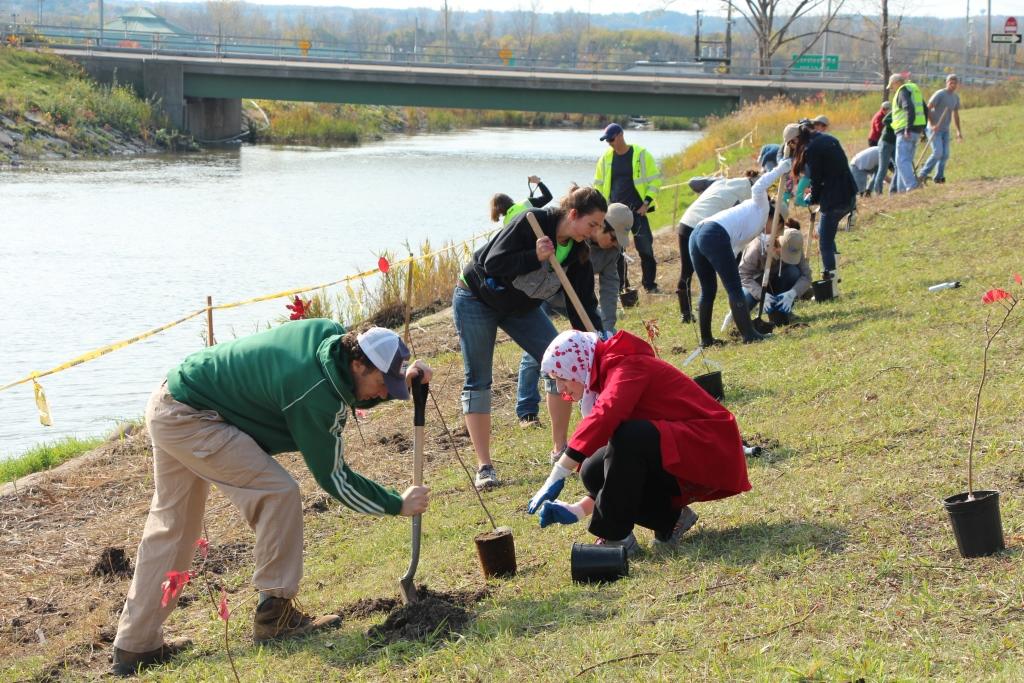 The area planted is not far from the Nine Mile Creek canoe launch, which will reopen in 2014.
The area planted is not far from the Nine Mile Creek canoe launch, which will reopen in 2014.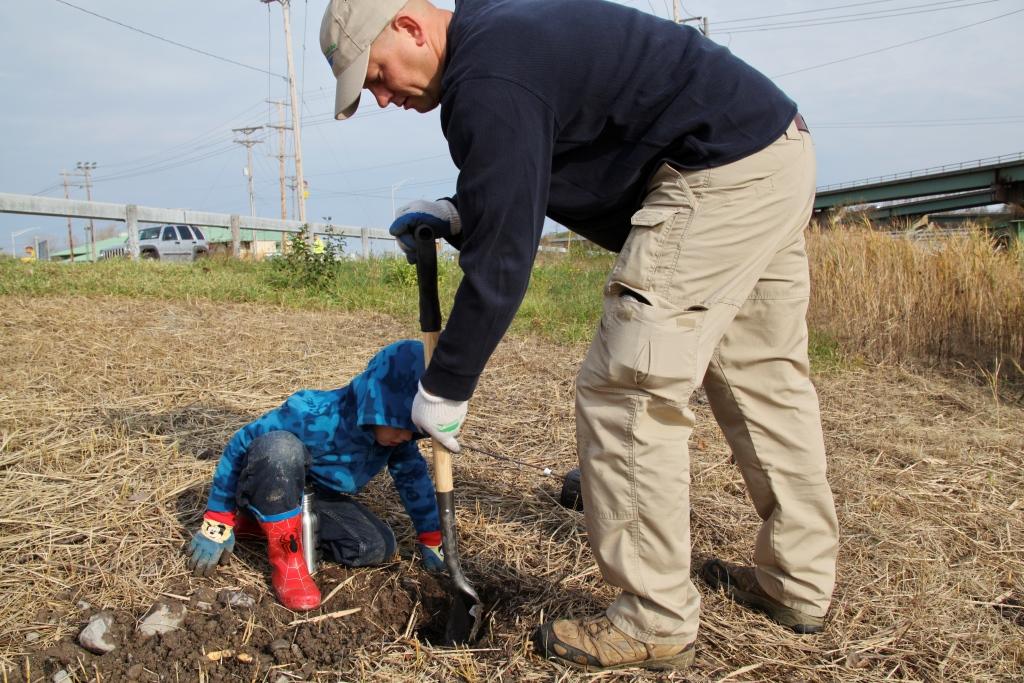 David Amidon, Onondaga Lake Conservation Corps member and 8th grade science teacher at LaFayette Junior-Senior High School, digs with his son Aiden.
David Amidon, Onondaga Lake Conservation Corps member and 8th grade science teacher at LaFayette Junior-Senior High School, digs with his son Aiden.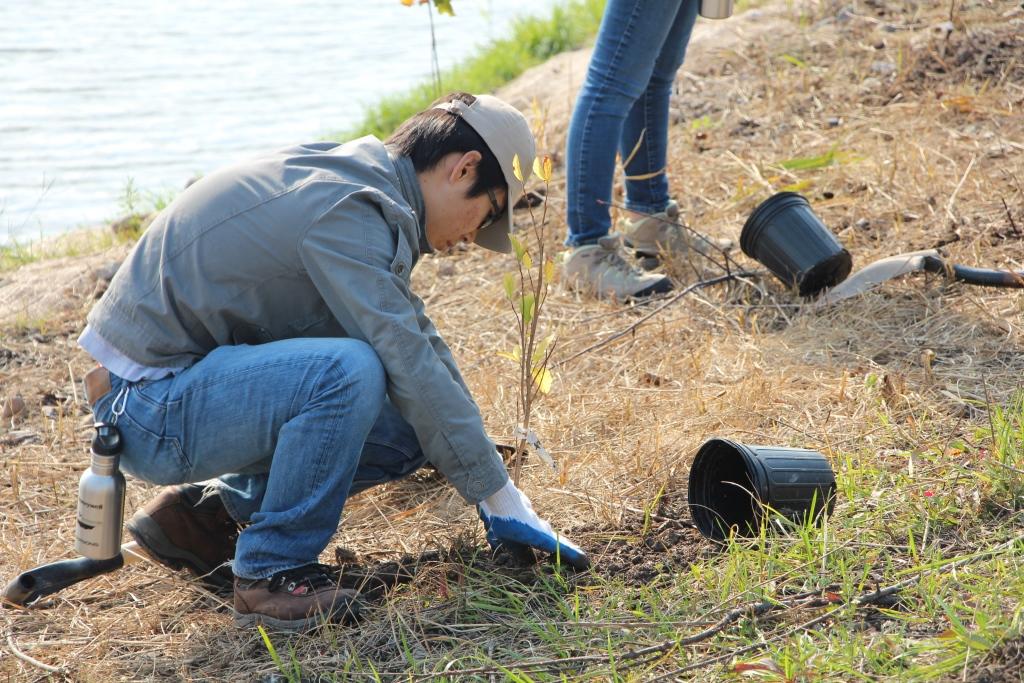 The new plants will have time to become established before going dormant in winter.
The new plants will have time to become established before going dormant in winter.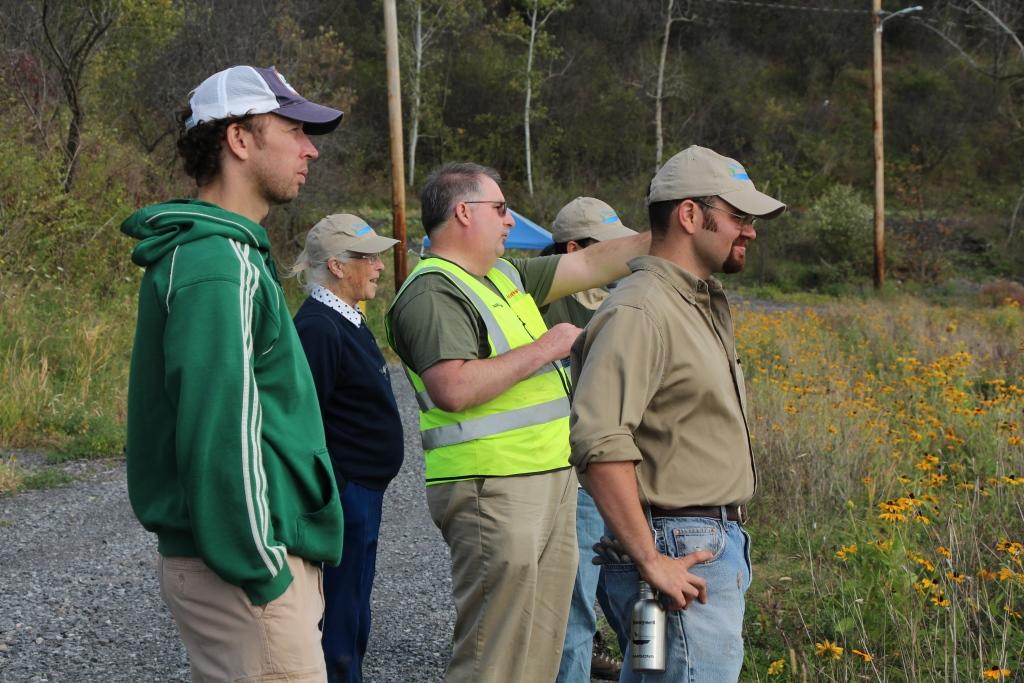 Onondaga Lake Conservation Corps volunteers also view an area of Nine Mile Creek wetlands planted in 2012.
Onondaga Lake Conservation Corps volunteers also view an area of Nine Mile Creek wetlands planted in 2012.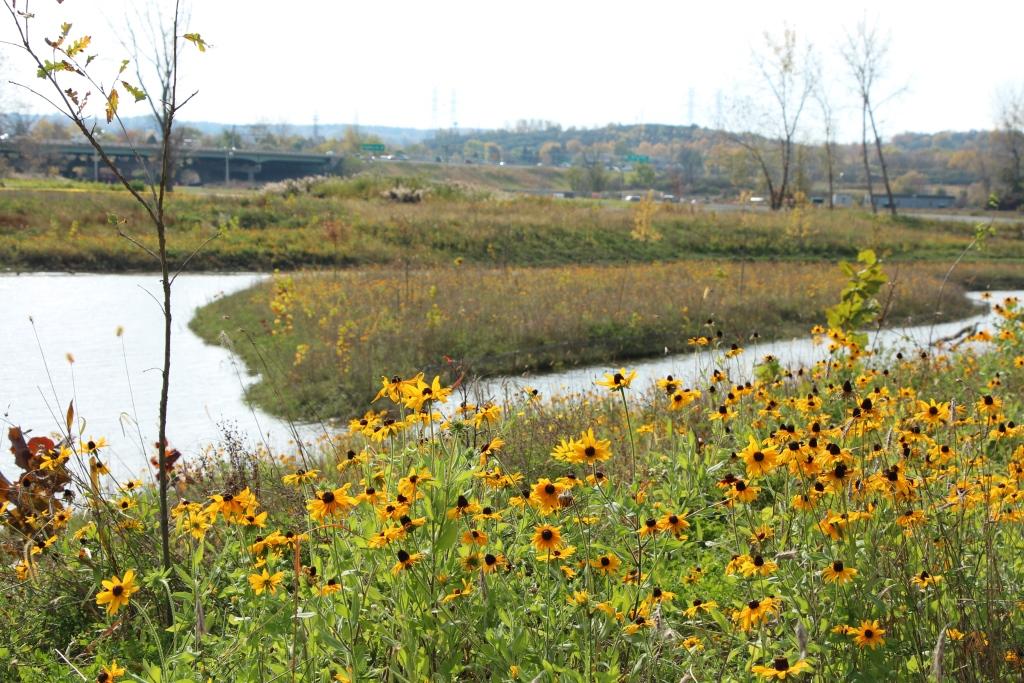 To date, nearly 10 of 30 acres of Nine Mile Creek have been restored.
To date, nearly 10 of 30 acres of Nine Mile Creek have been restored.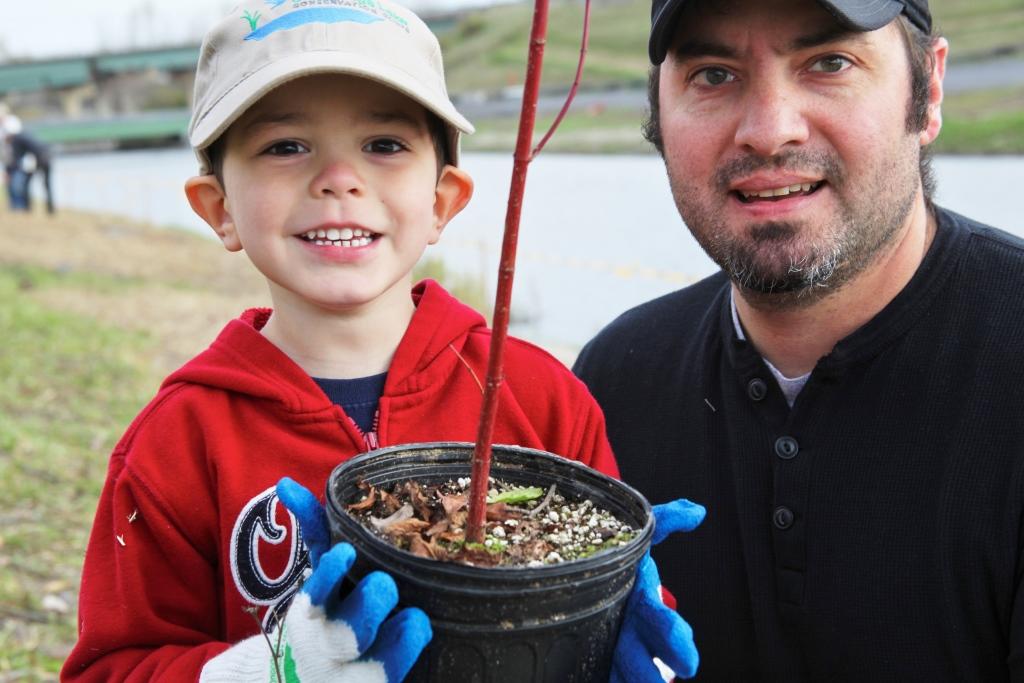 As new plants mature, this young Corps volunteer will be able to look back and remember when he helped plant this tree important to the Onondaga Lake watershed.
As new plants mature, this young Corps volunteer will be able to look back and remember when he helped plant this tree important to the Onondaga Lake watershed.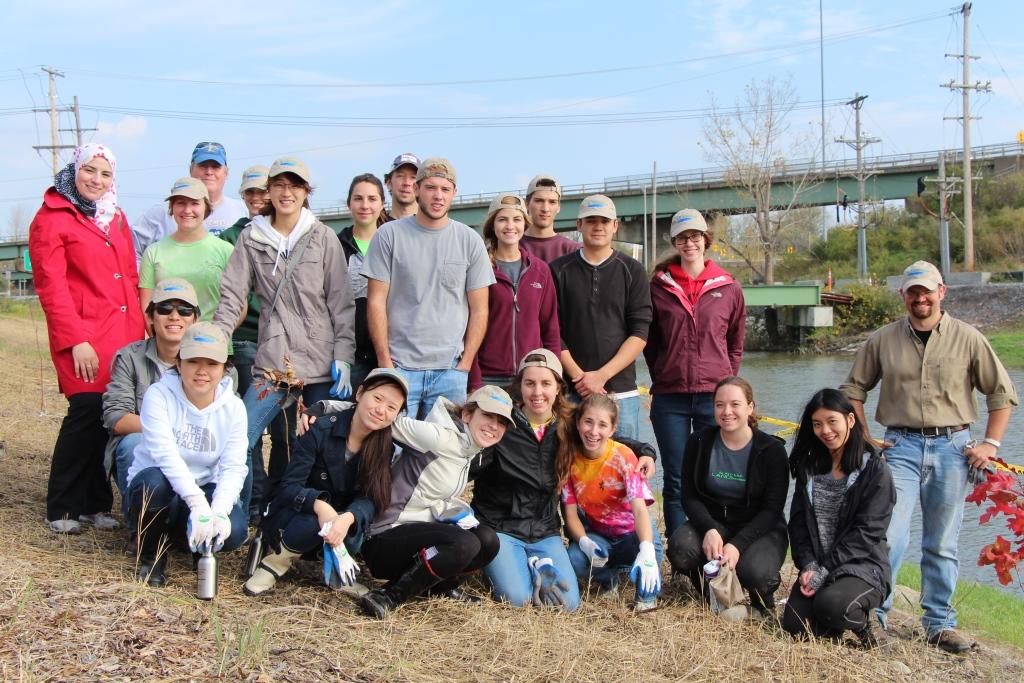 SUNY-ESF student volunteers and environmental stewards now part of the Onondaga Lake Conservation Corps.
SUNY-ESF student volunteers and environmental stewards now part of the Onondaga Lake Conservation Corps.1 of 20
-
August 2012
April 2013, Leadership, Greater Syracuse
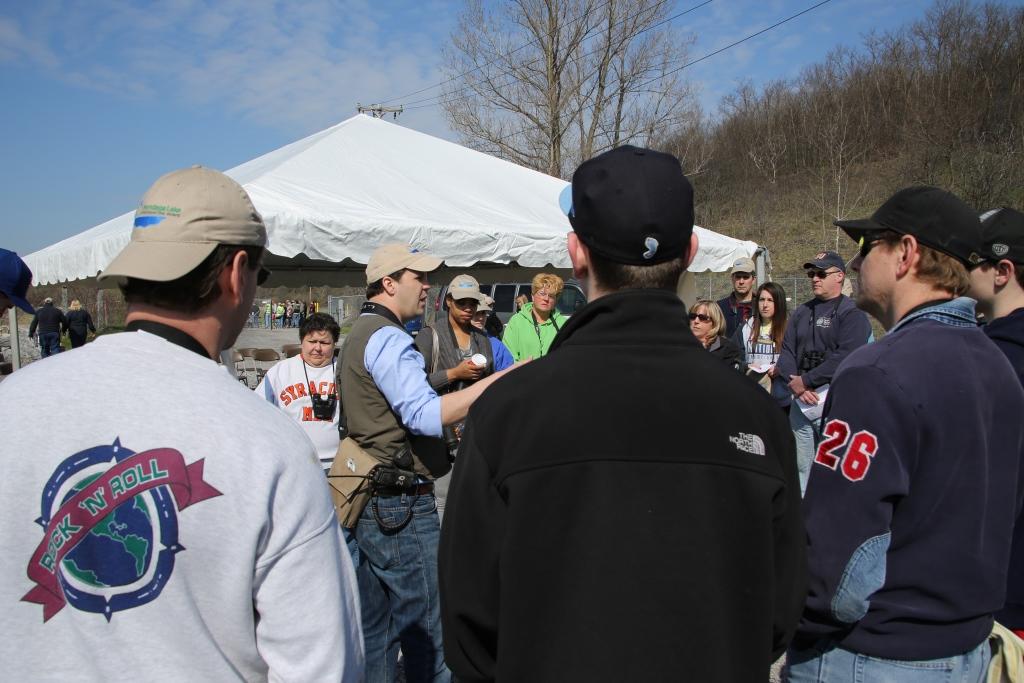
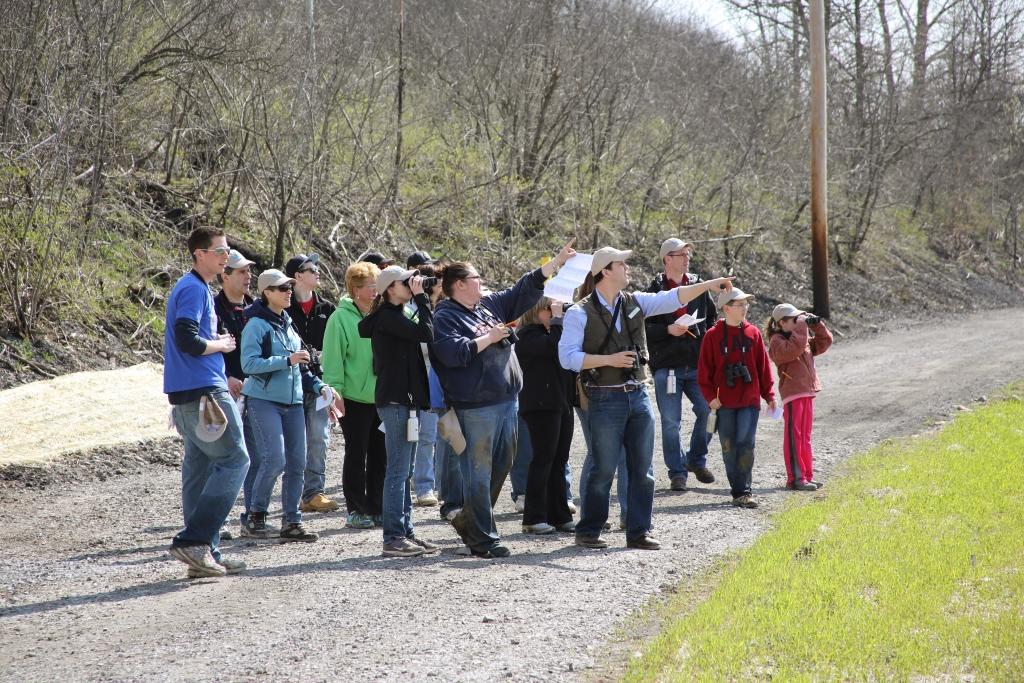
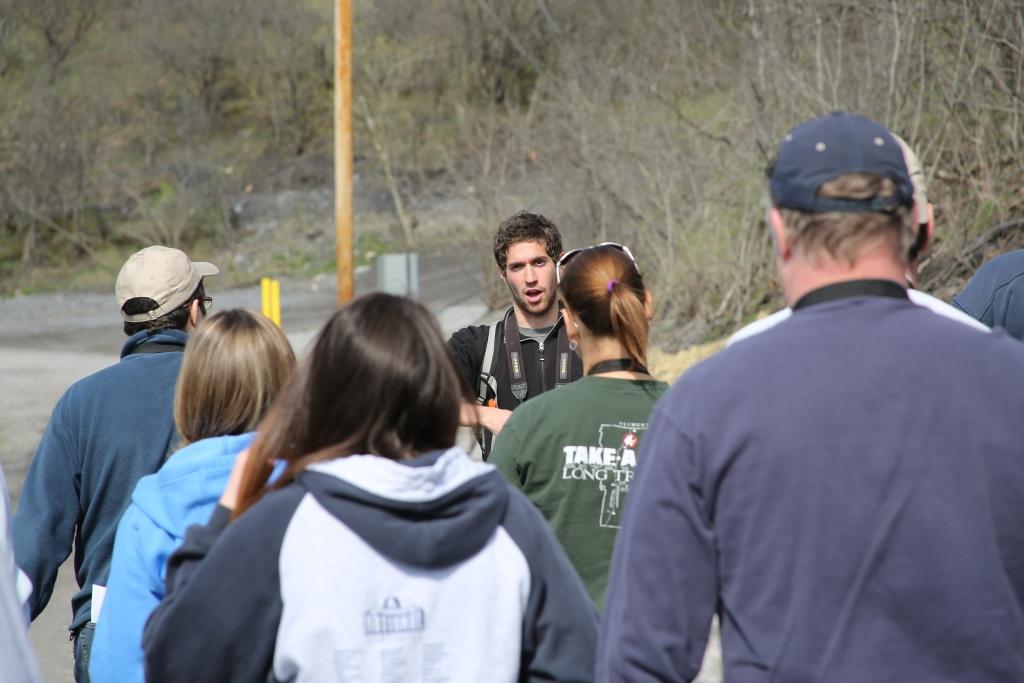
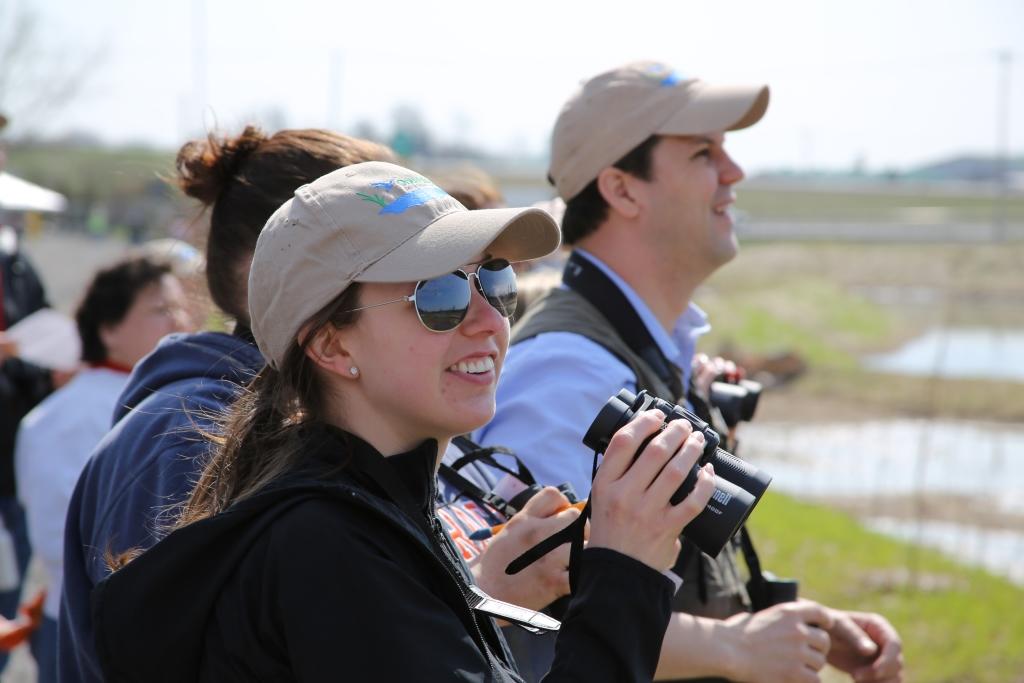
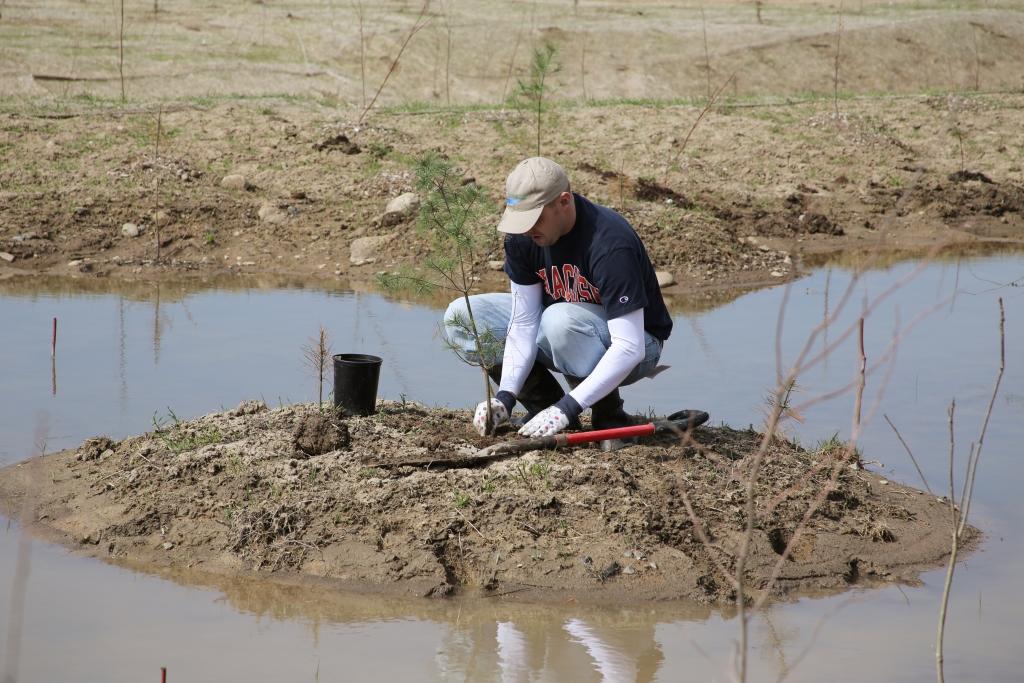
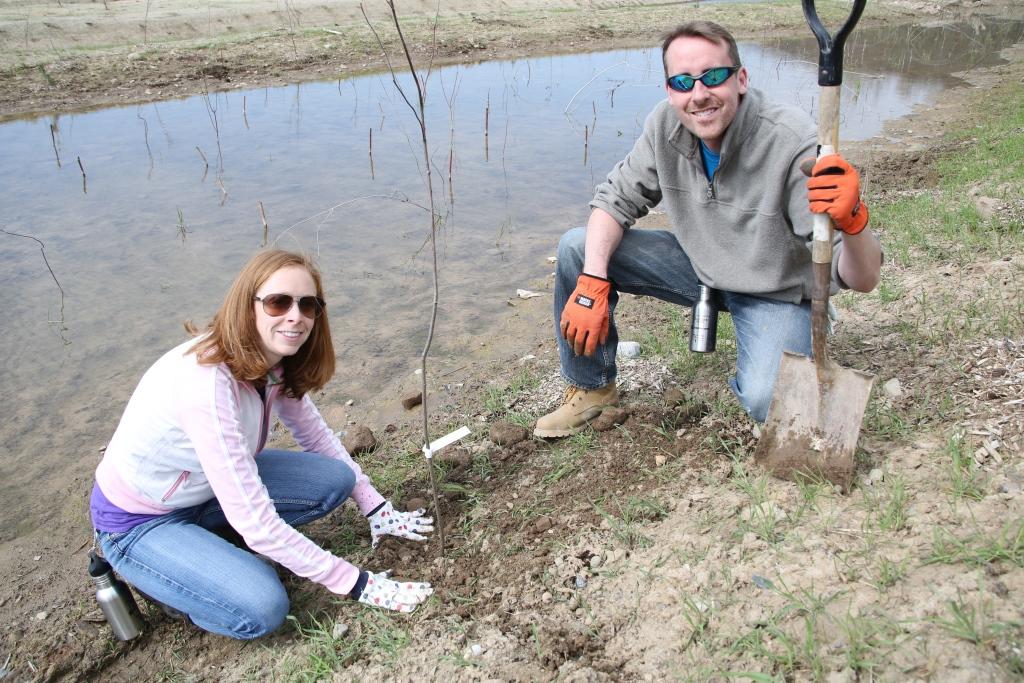
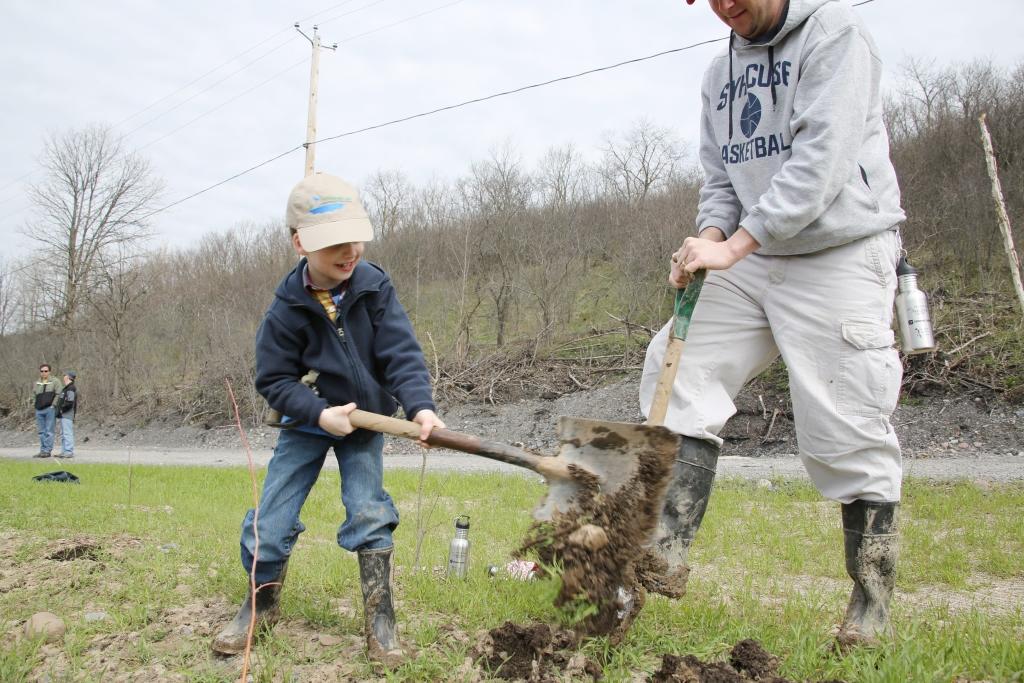
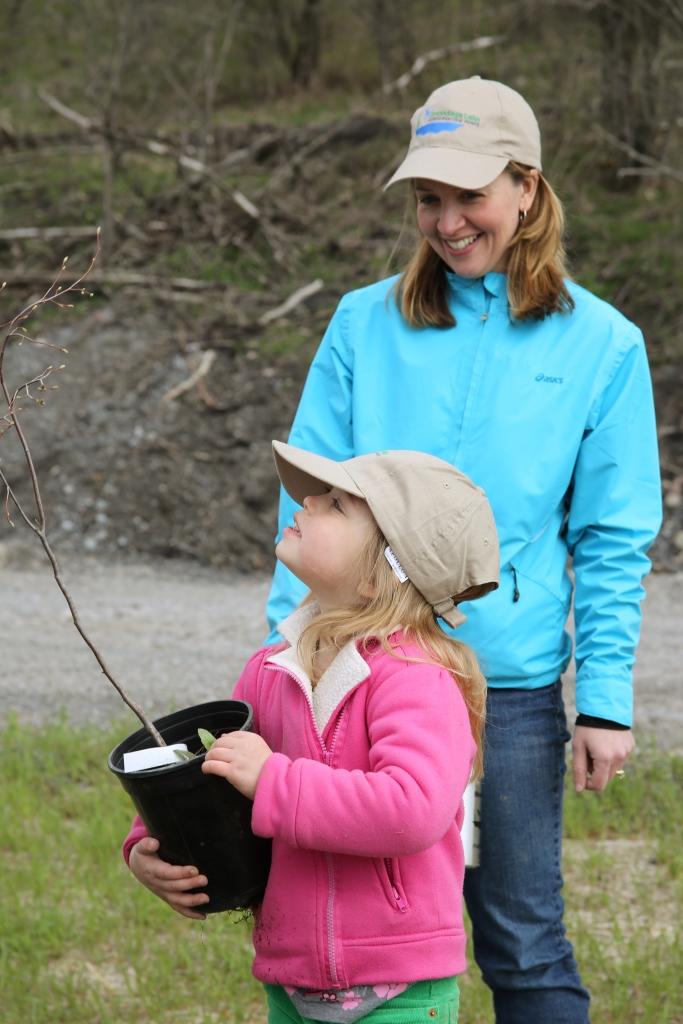
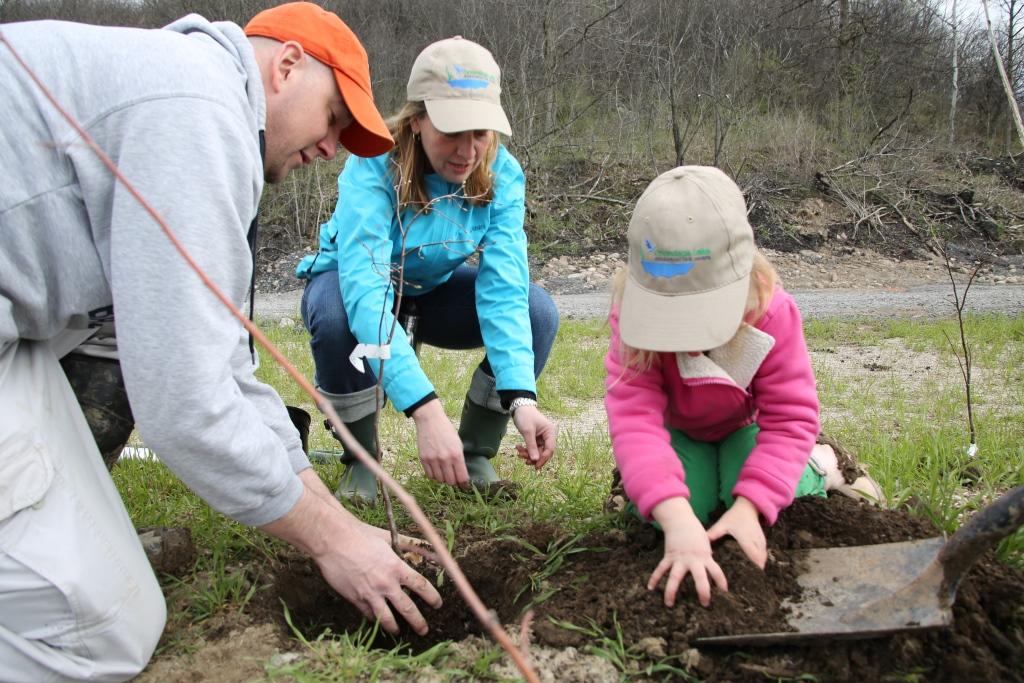
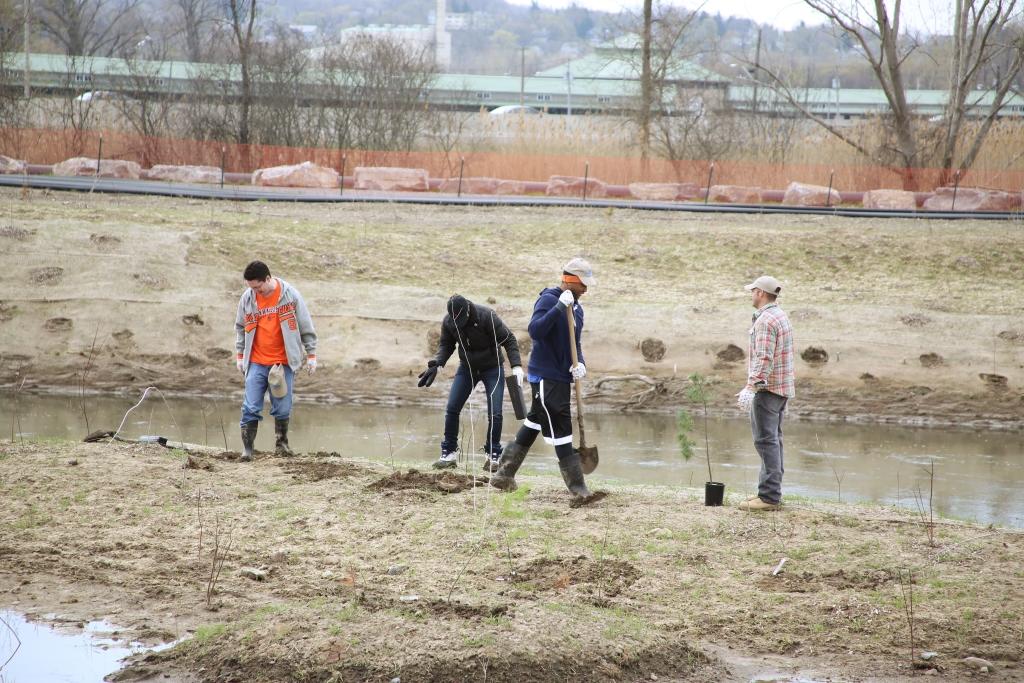
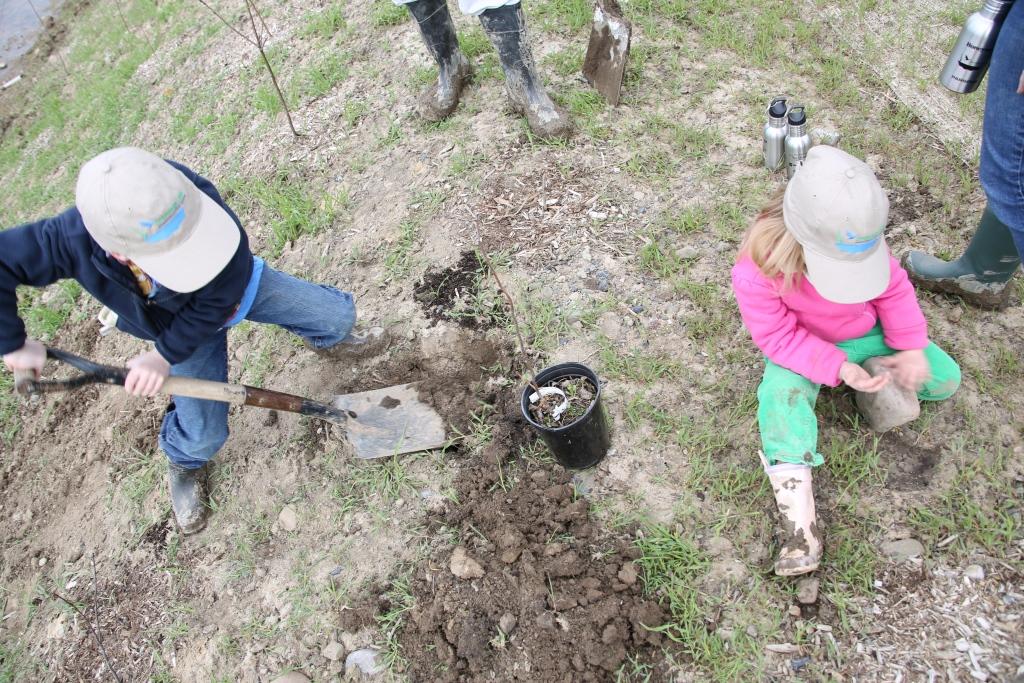
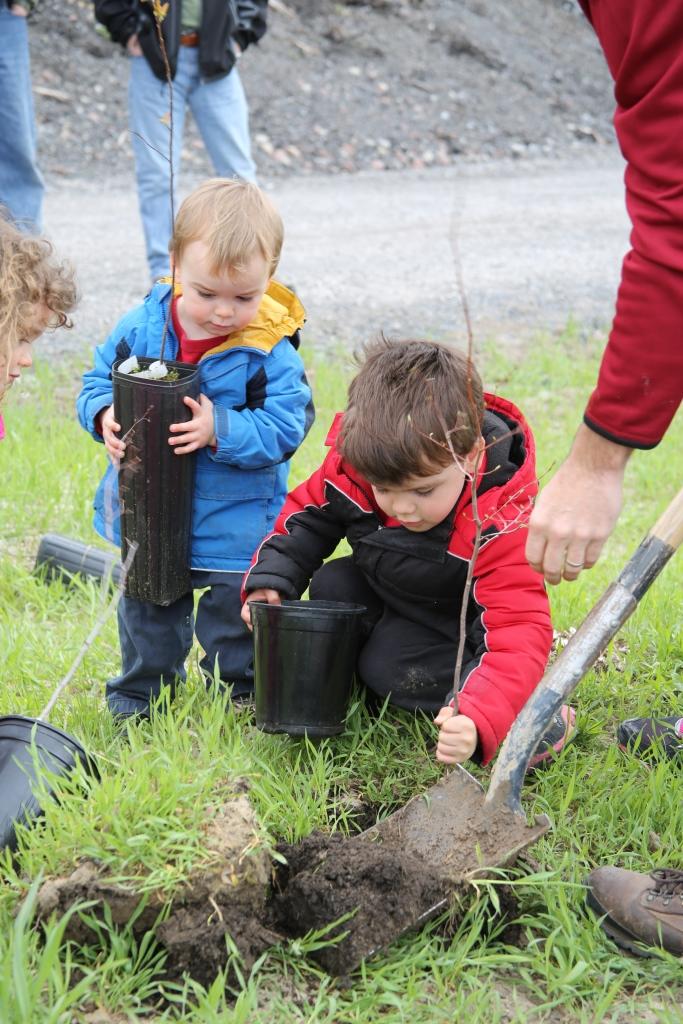
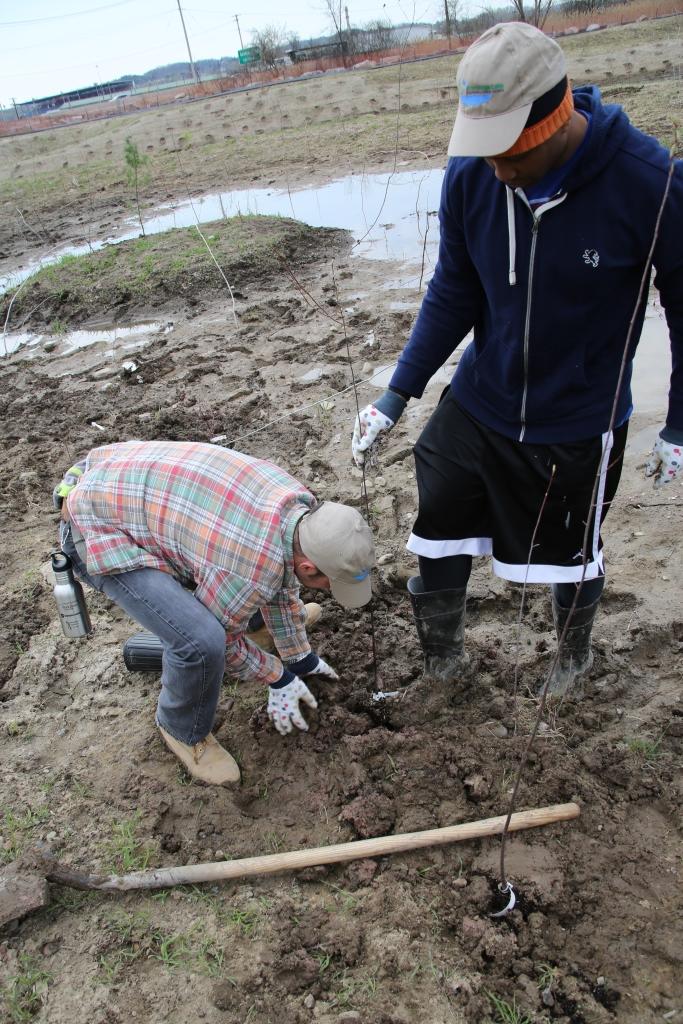
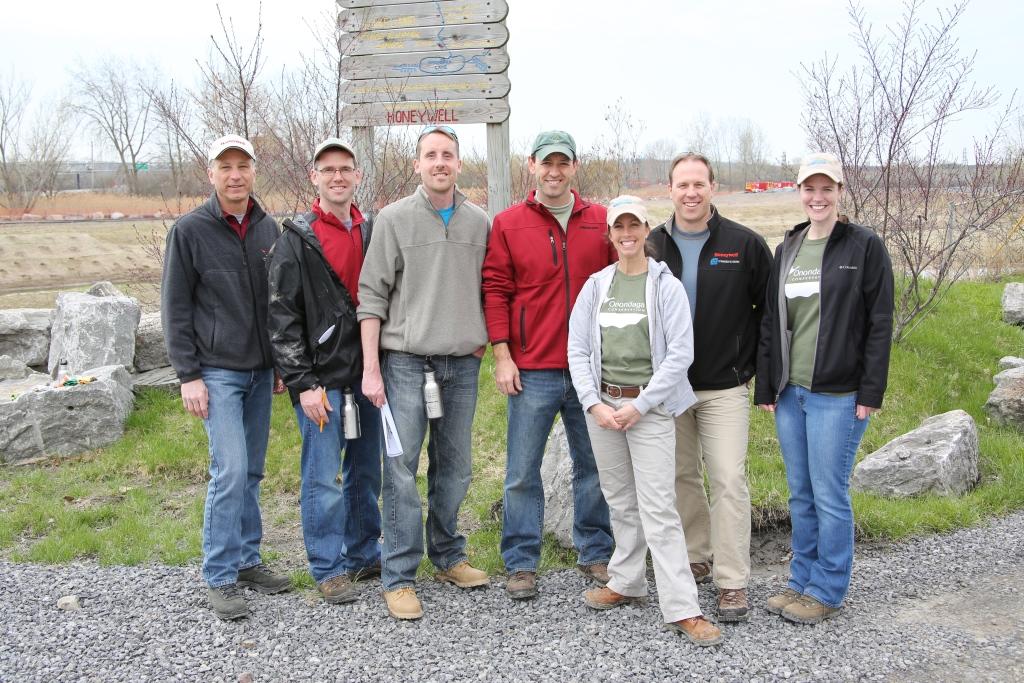
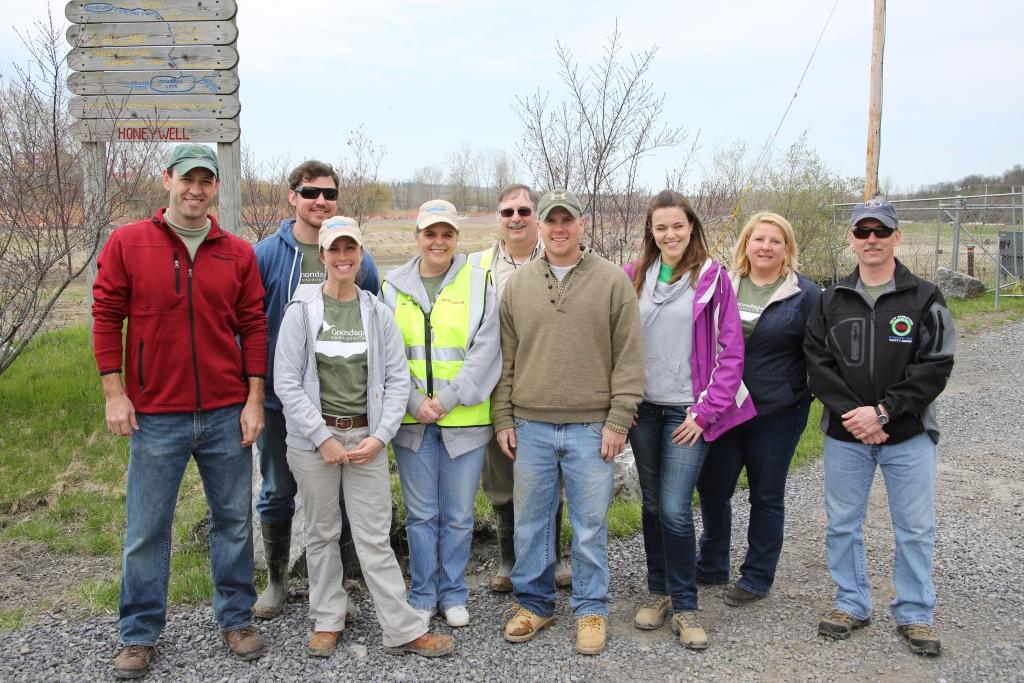
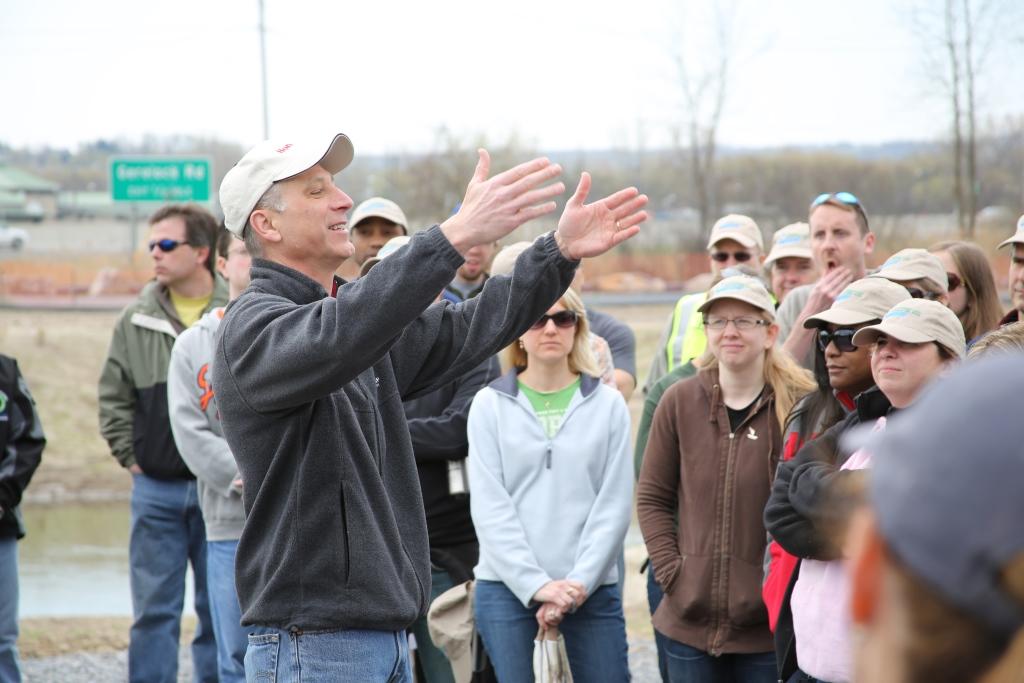
1 of 16
Onondaga Lake Conservation Corps, March 2013
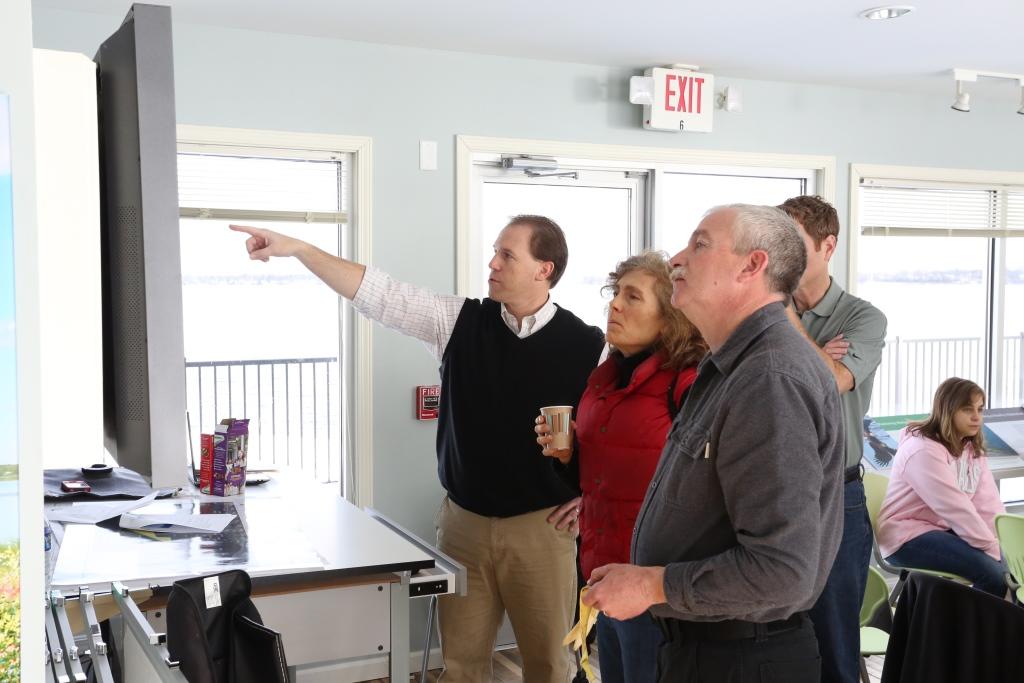
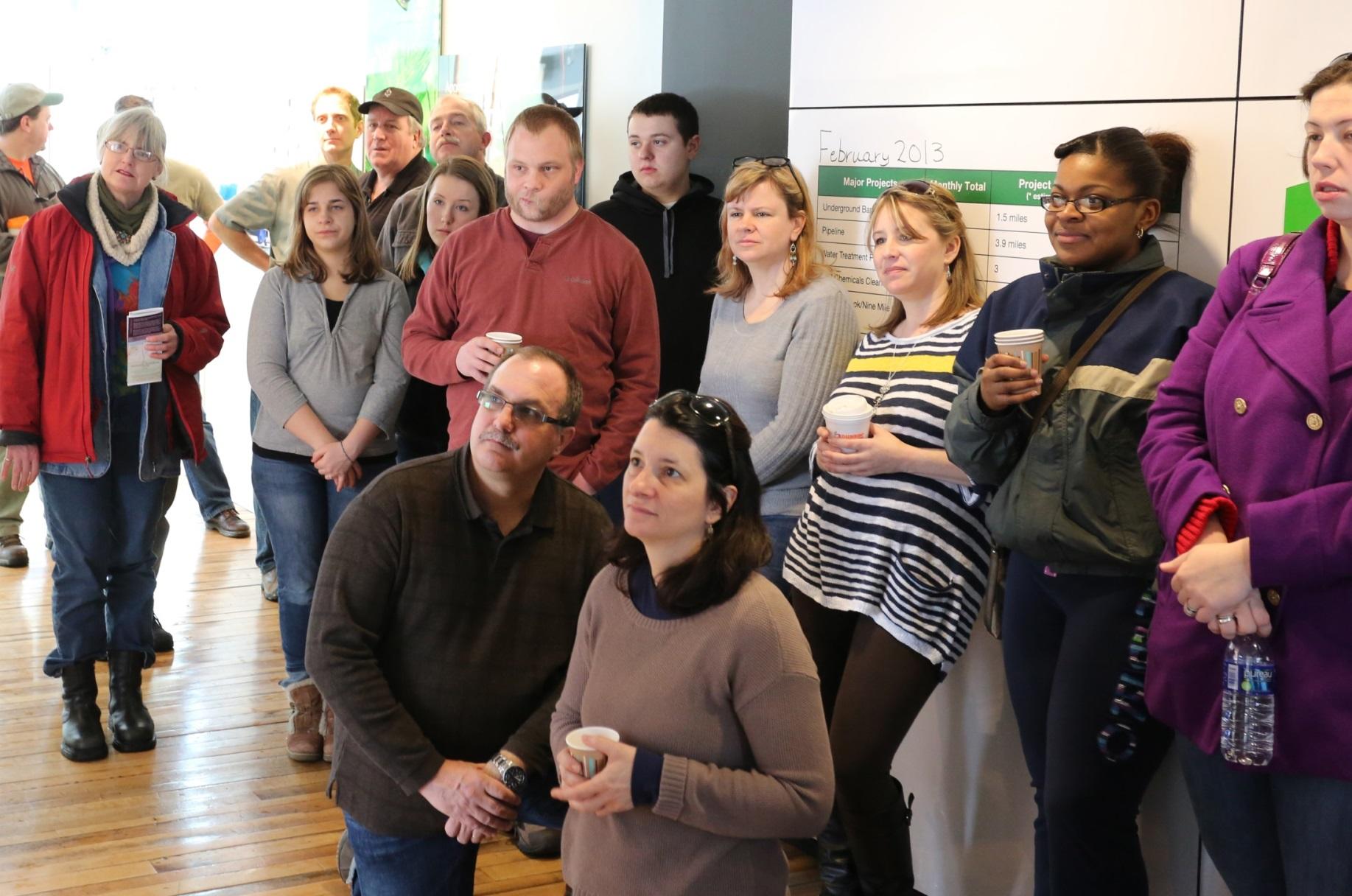
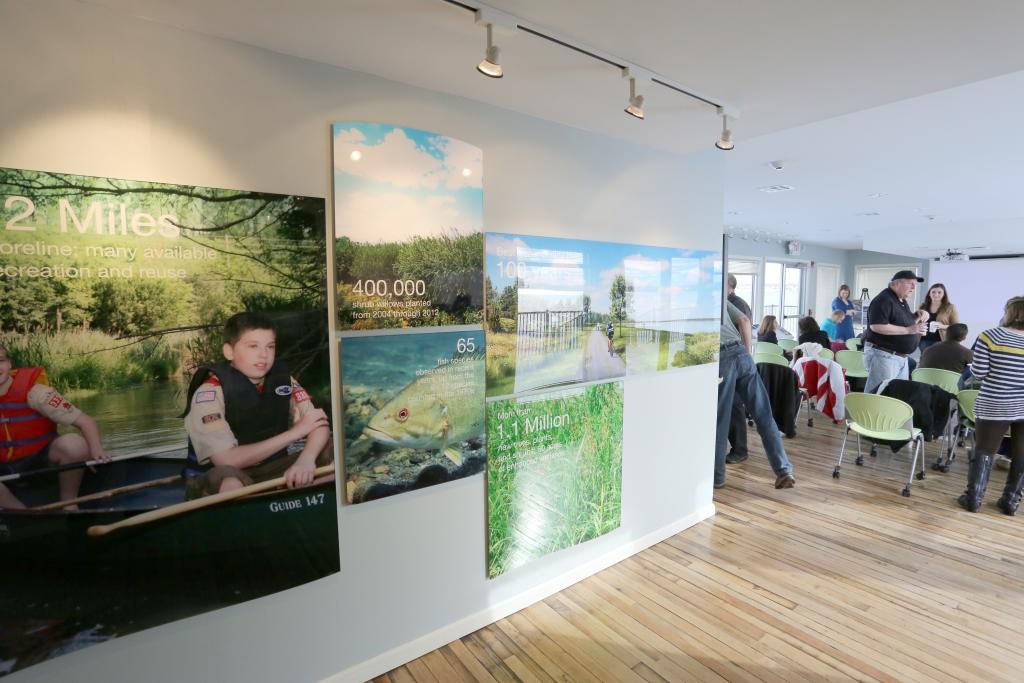
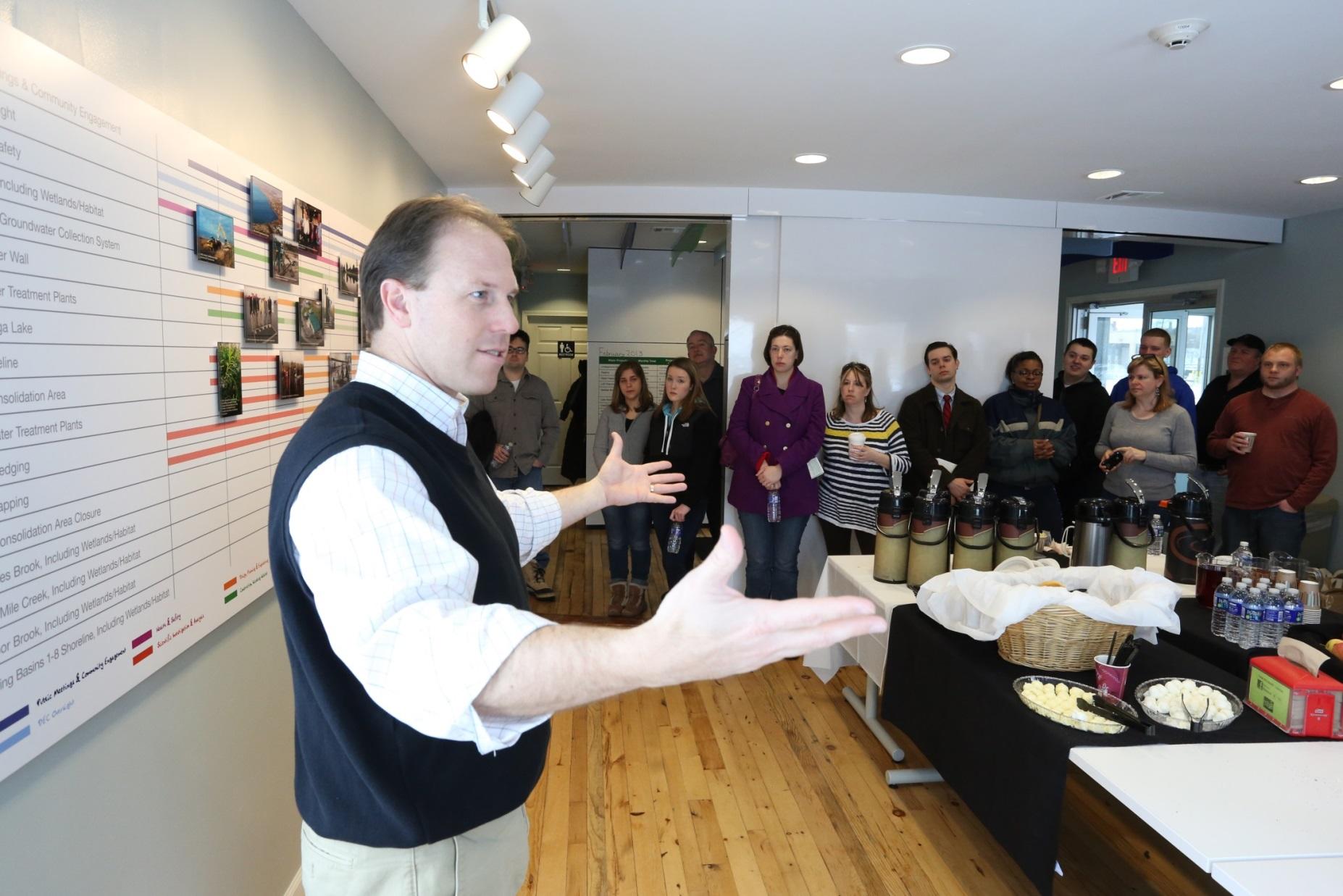
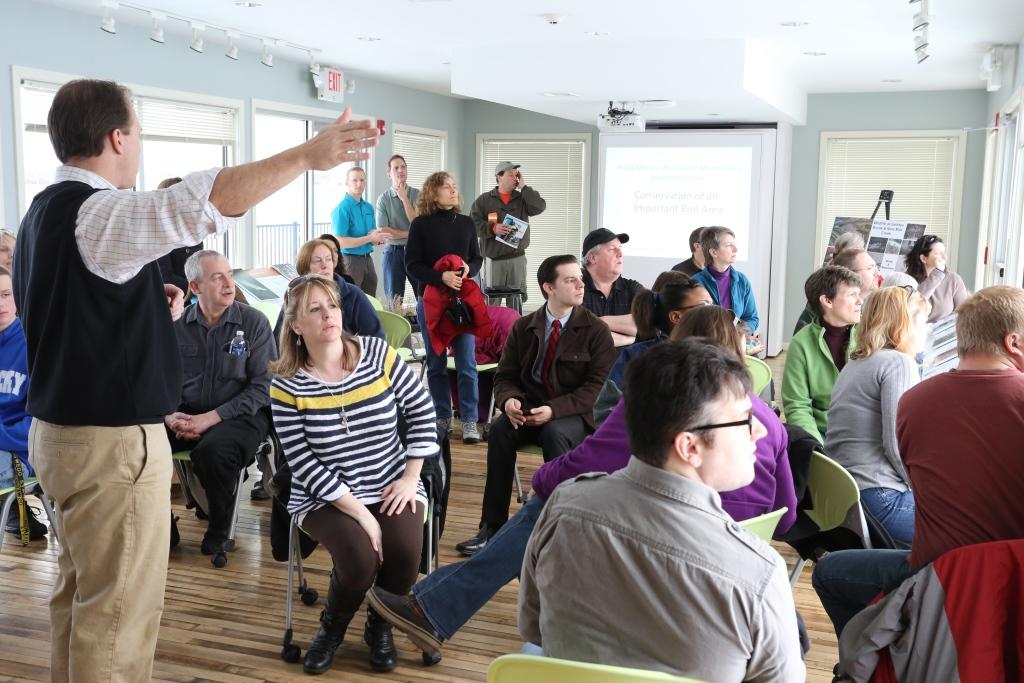
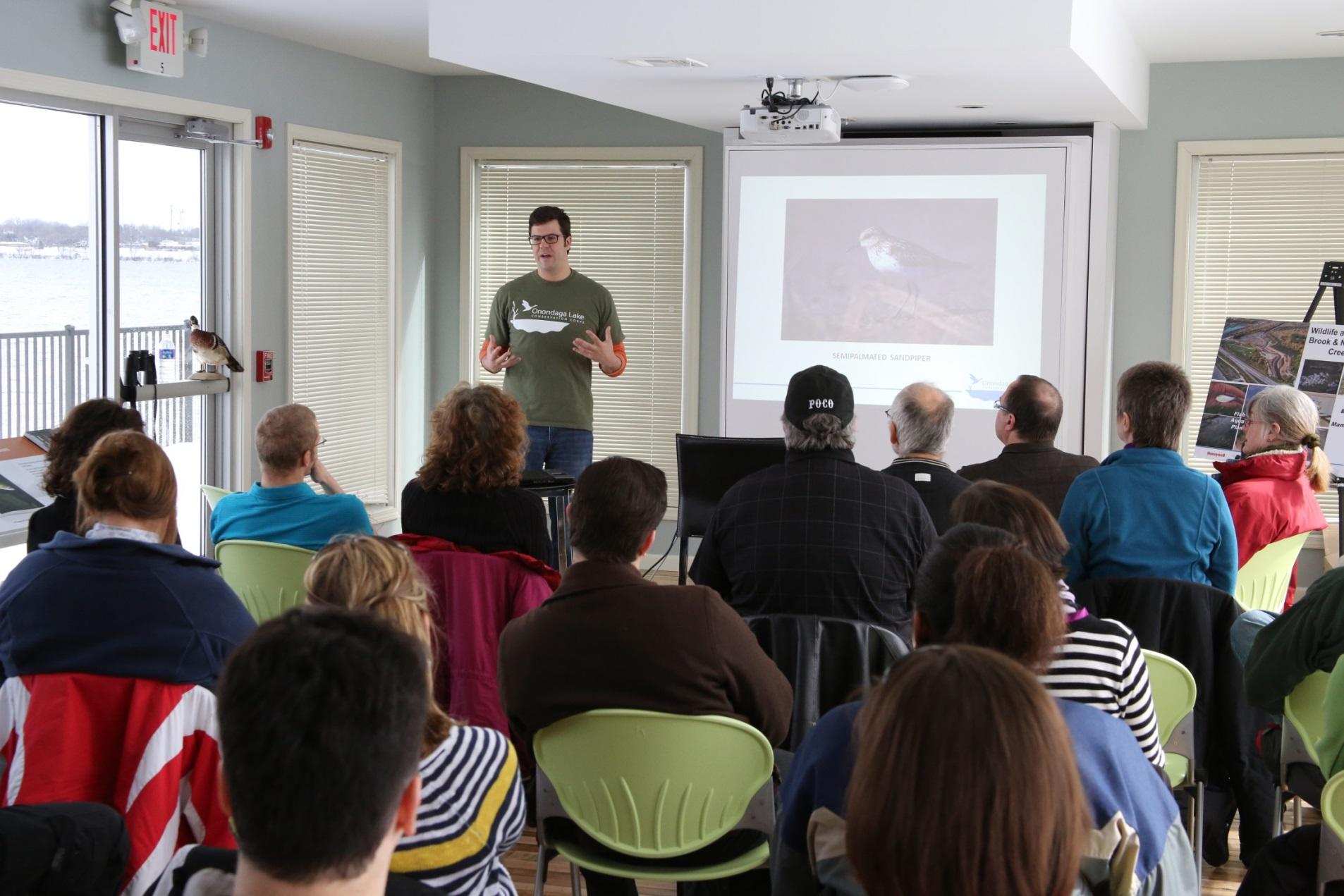
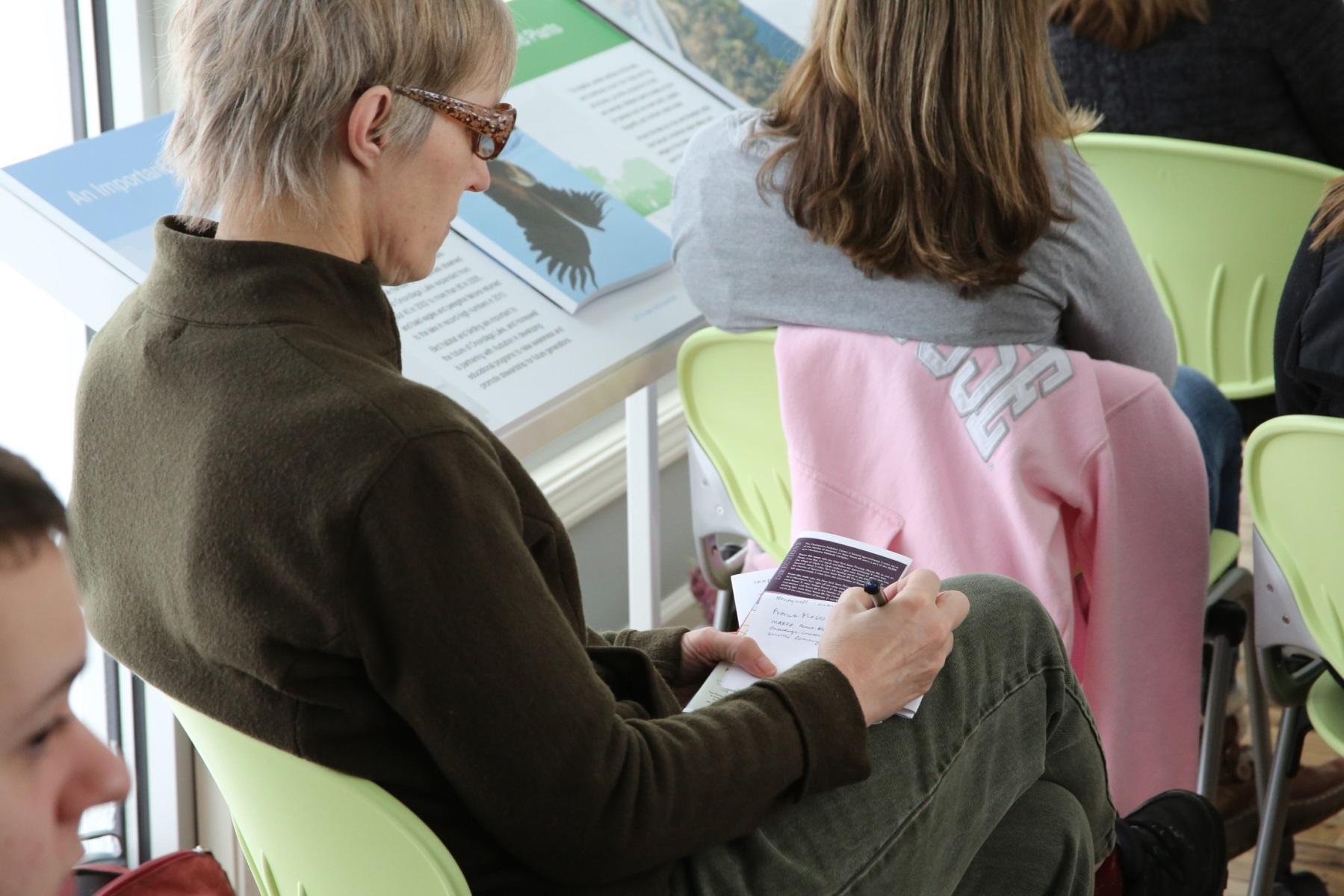
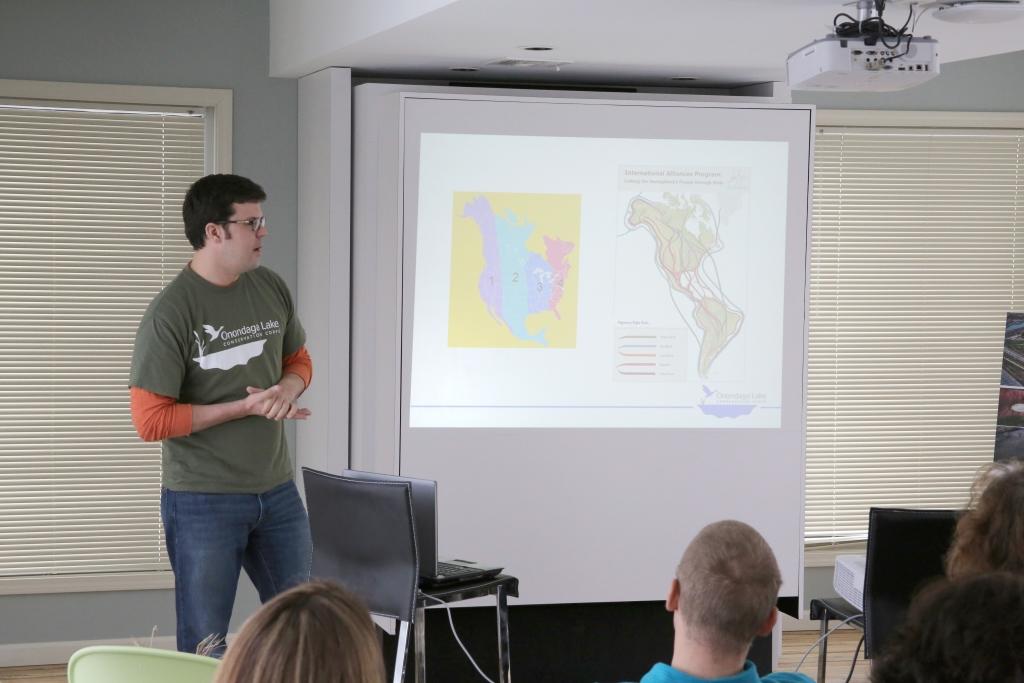
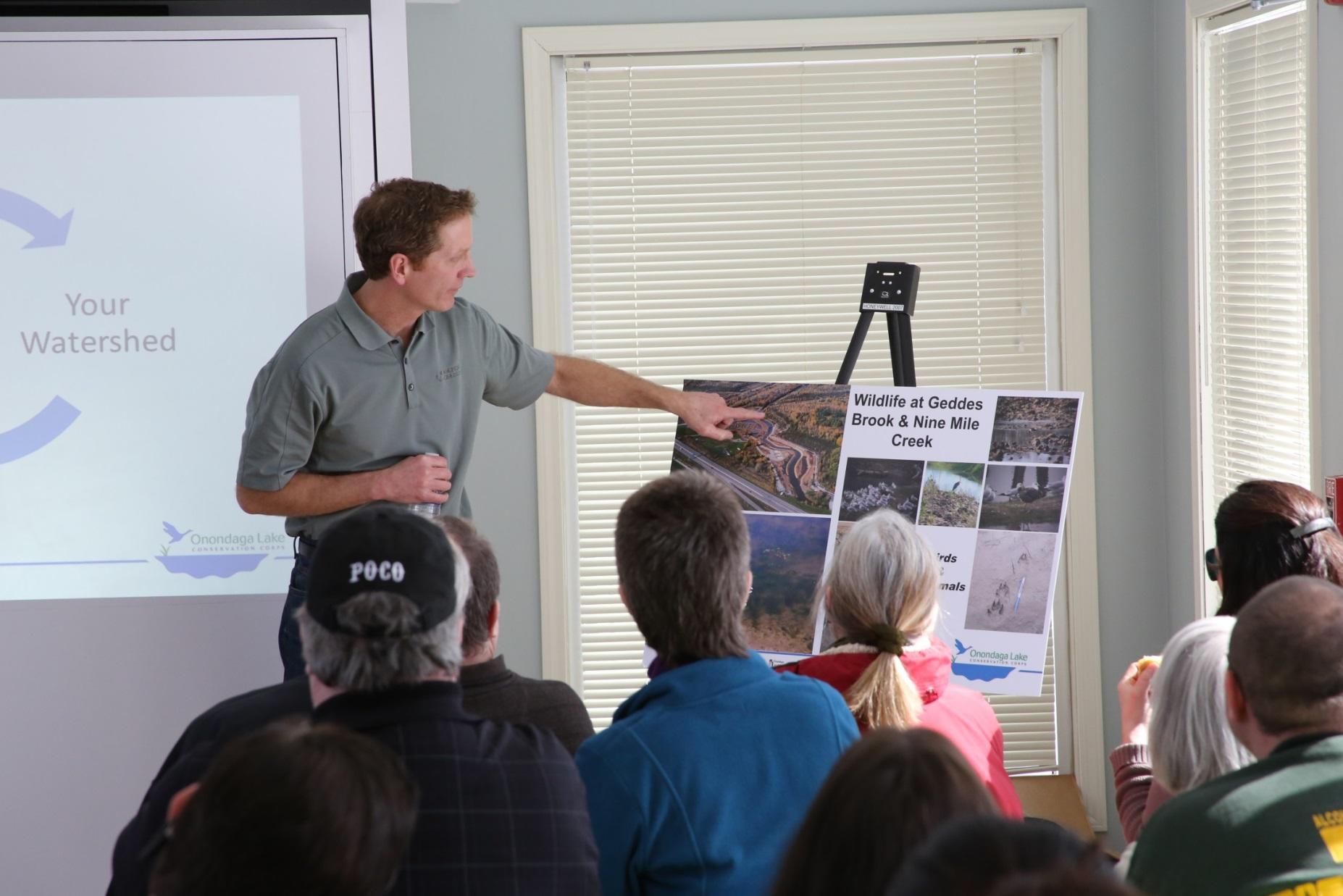
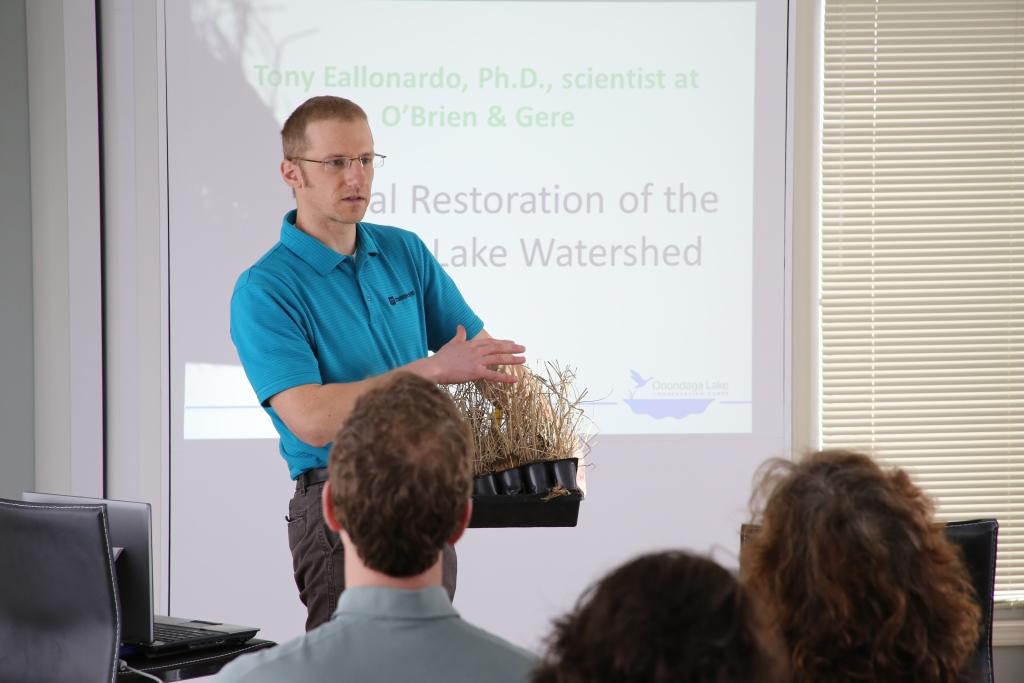
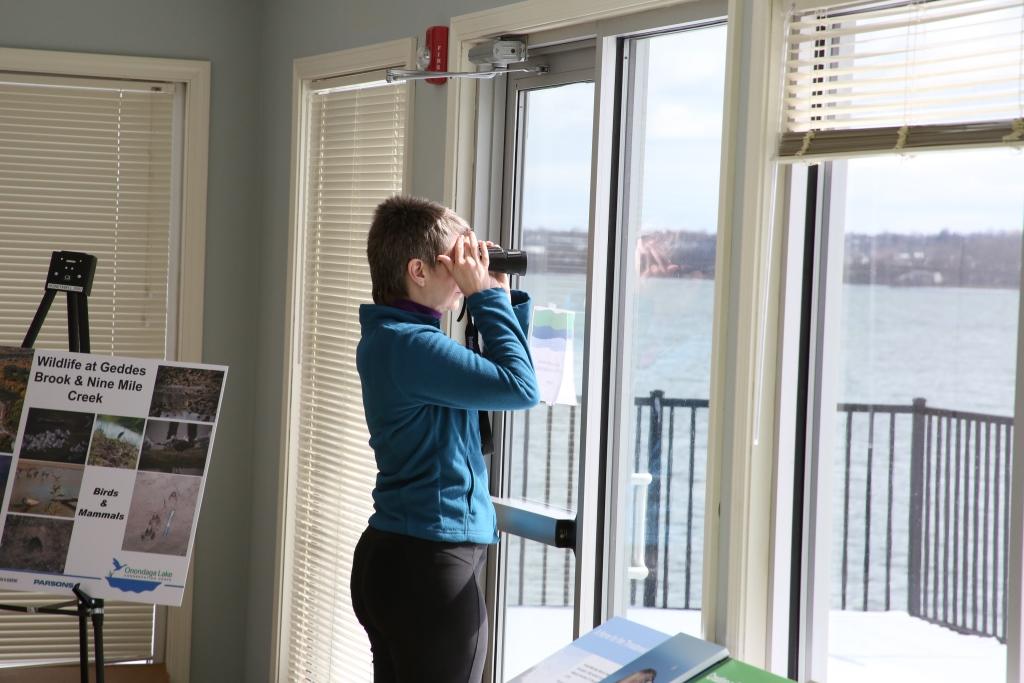
1 of 11
Bryant & Stratton College Volunteer Day, June 2013

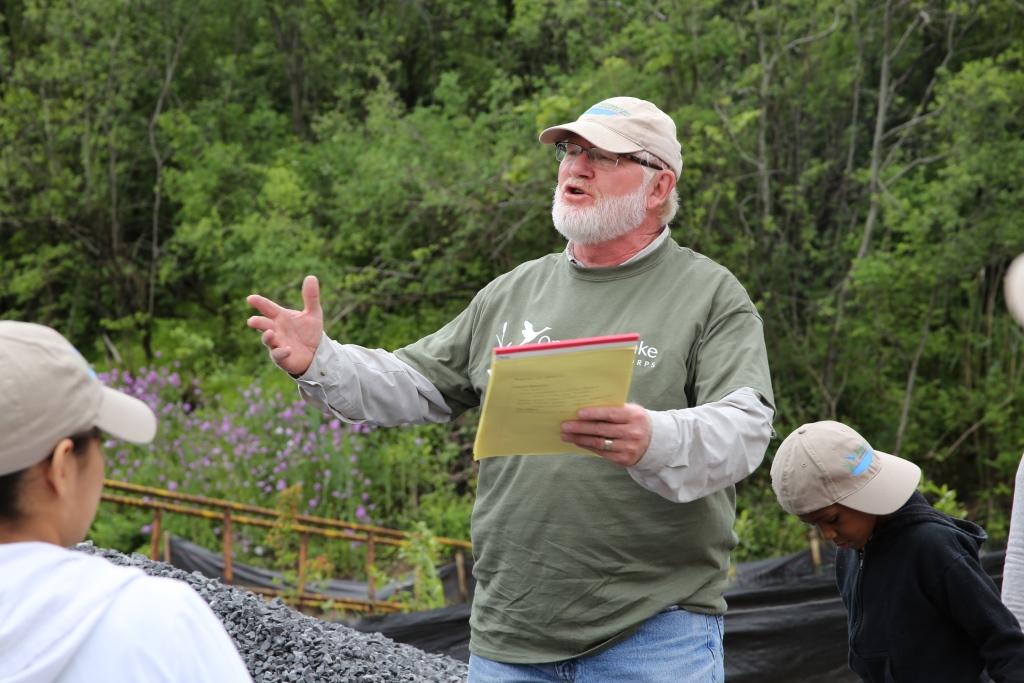
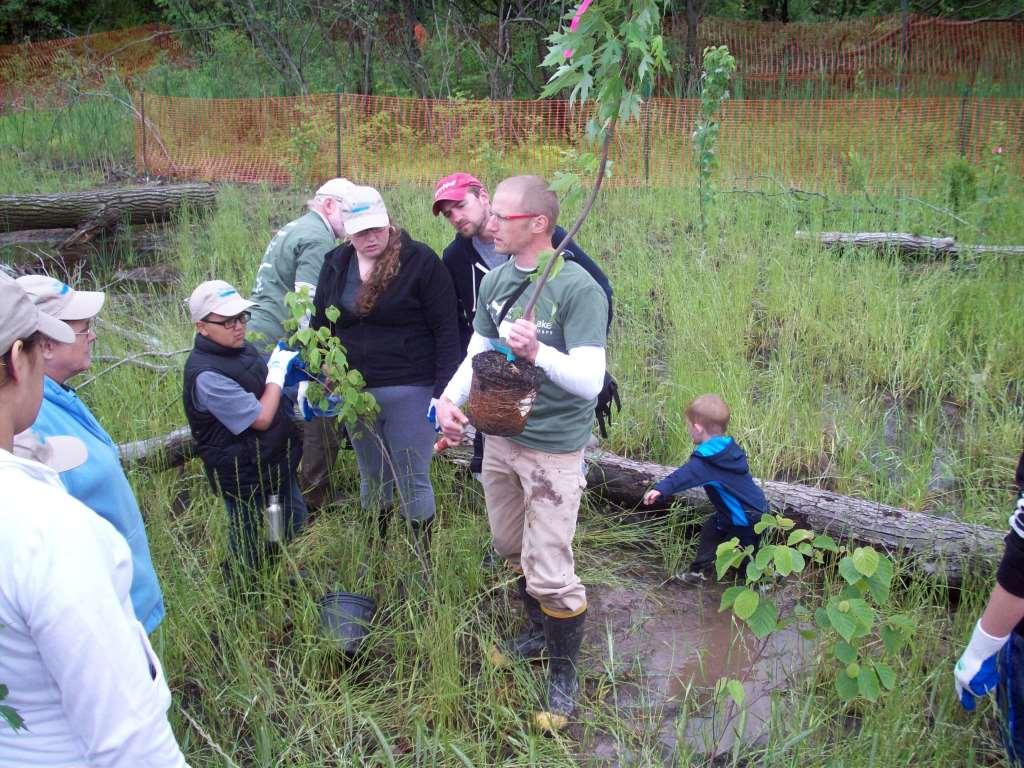
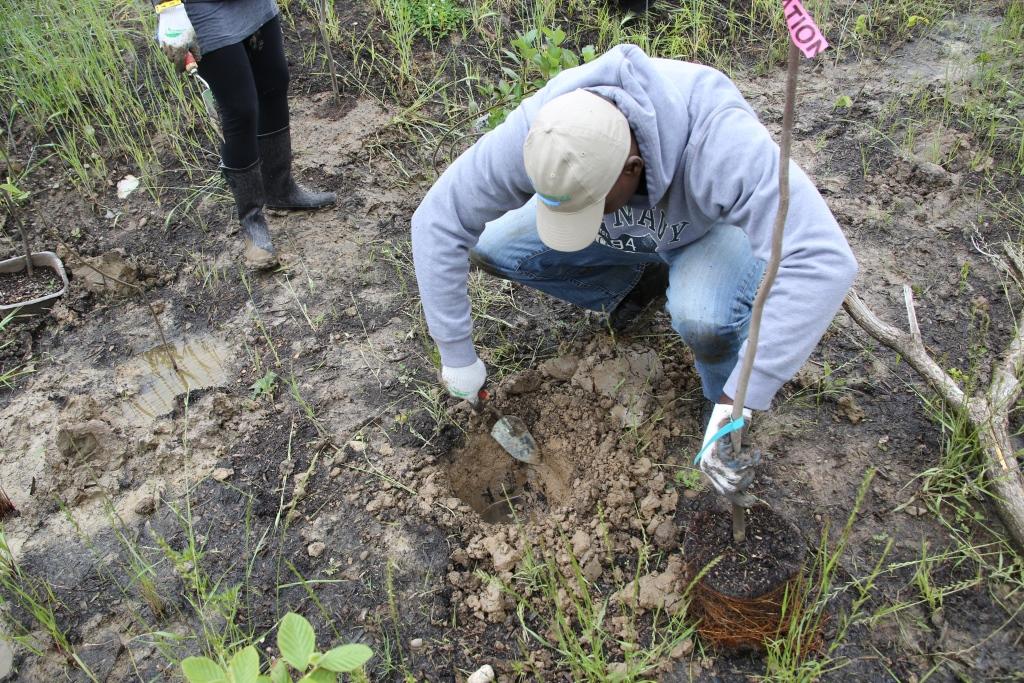
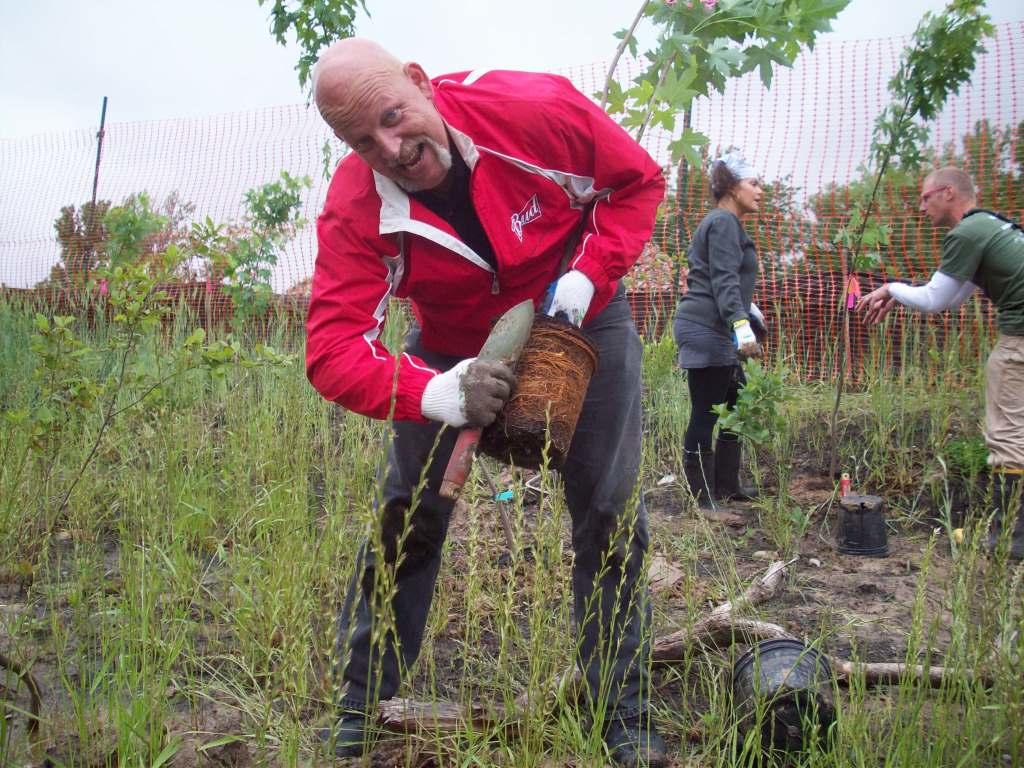
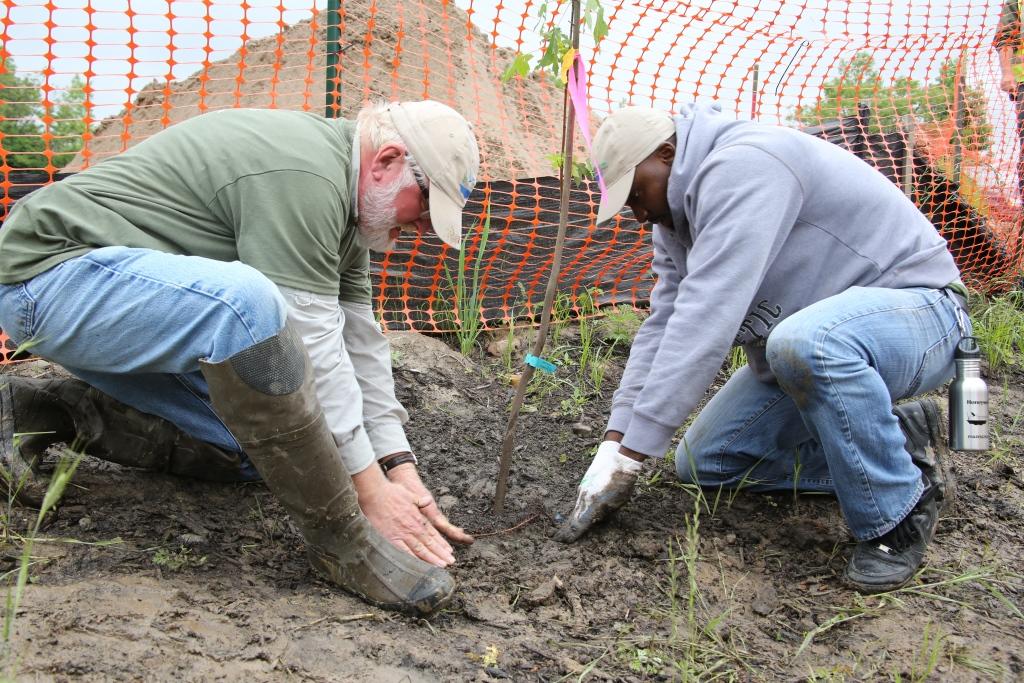
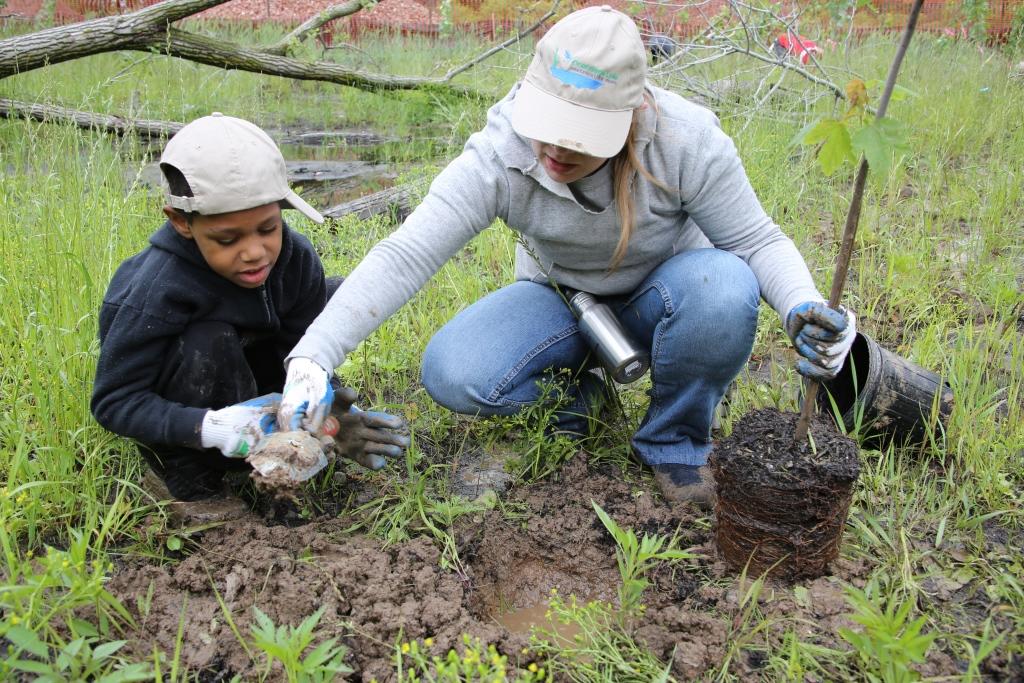
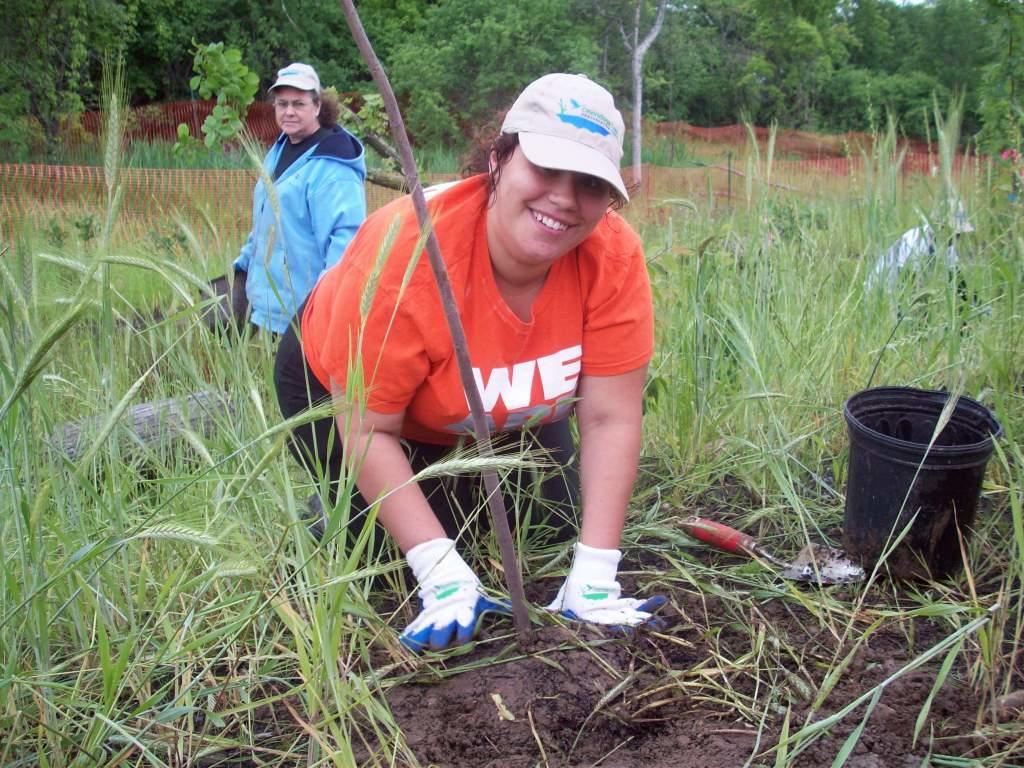
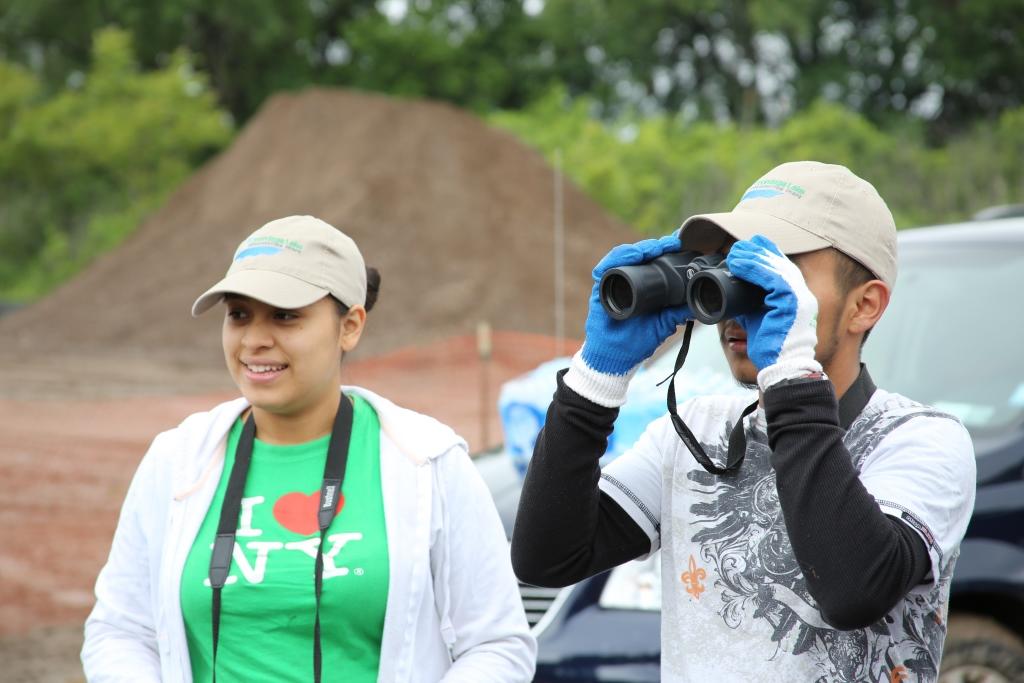
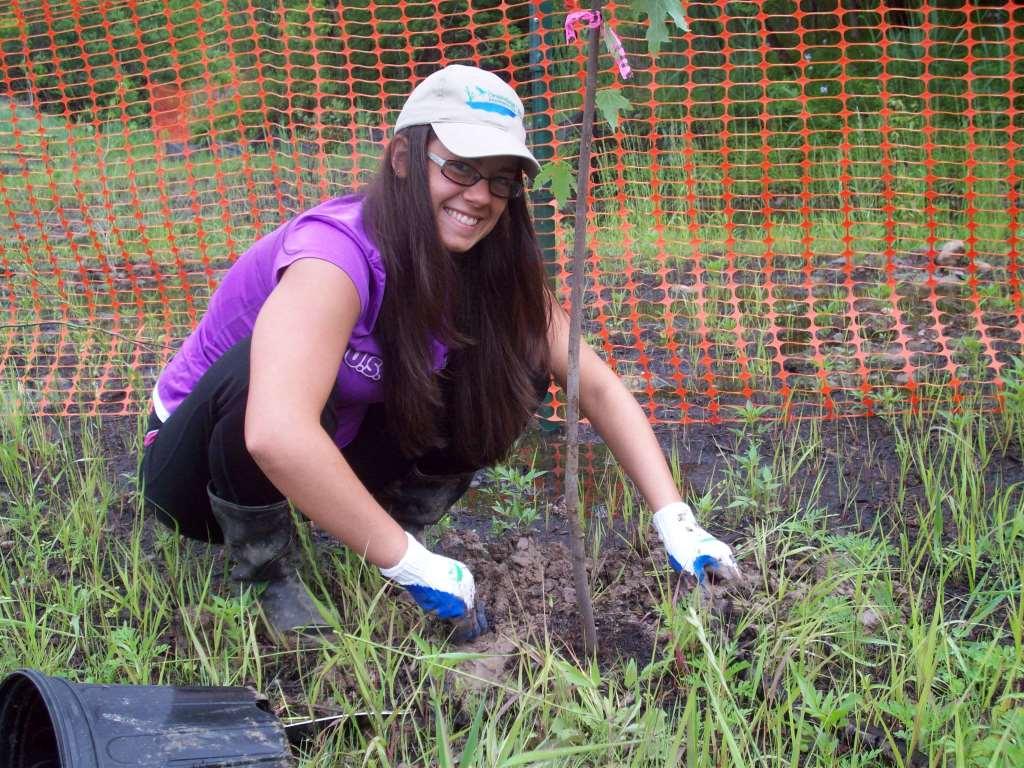
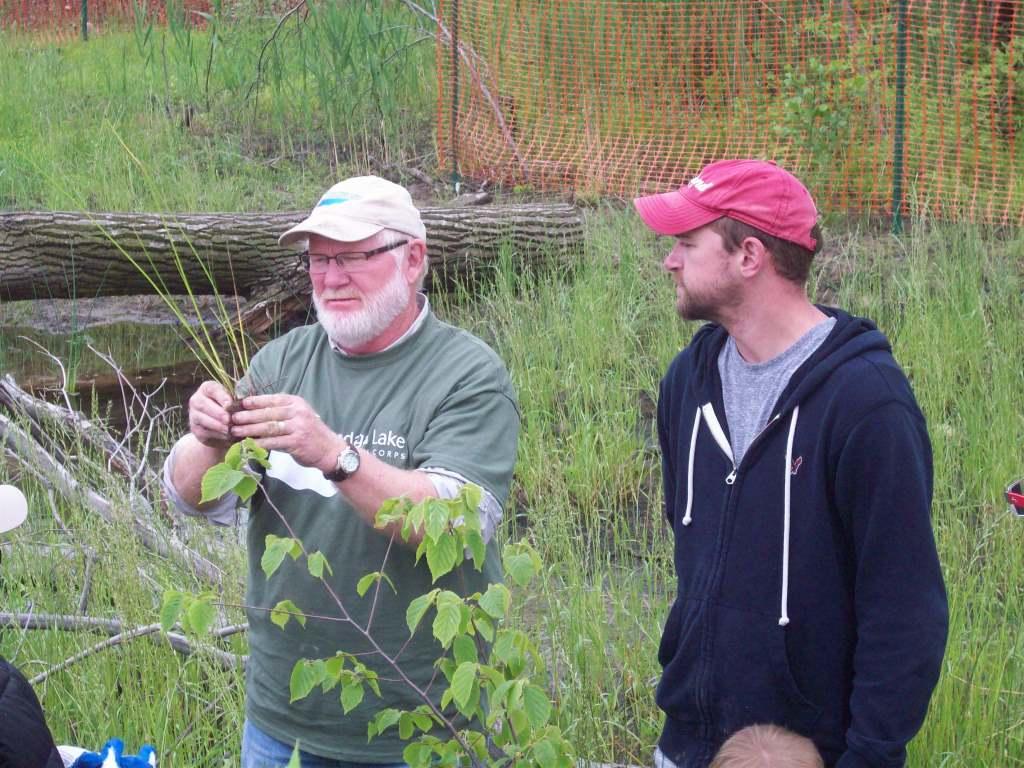
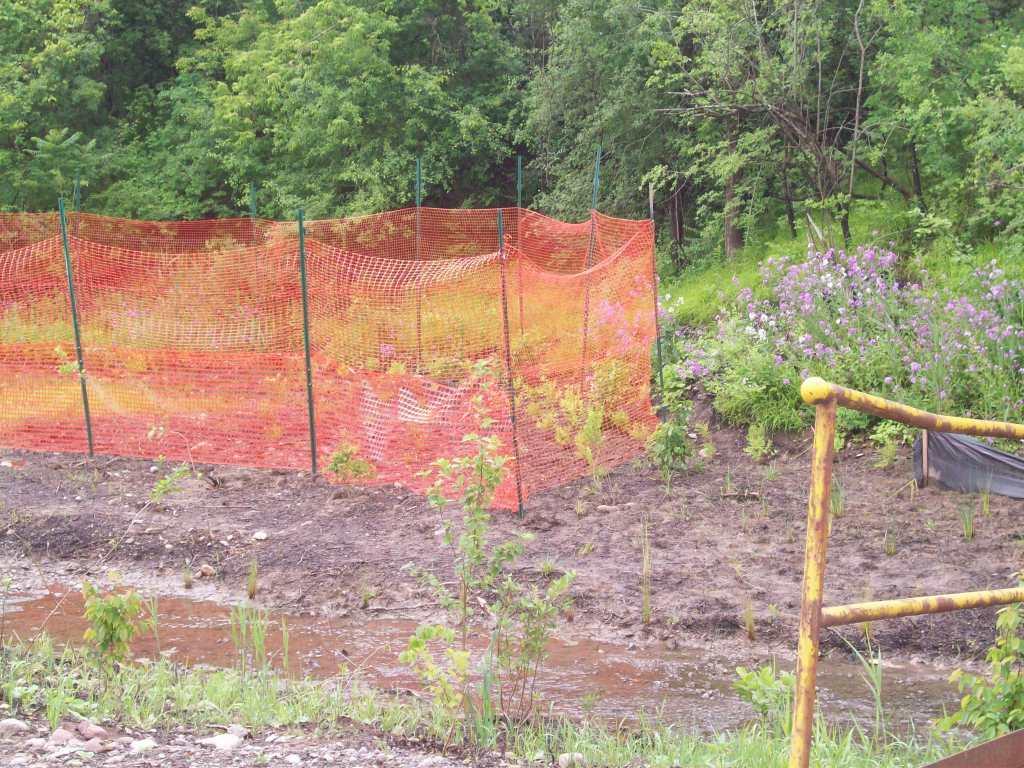
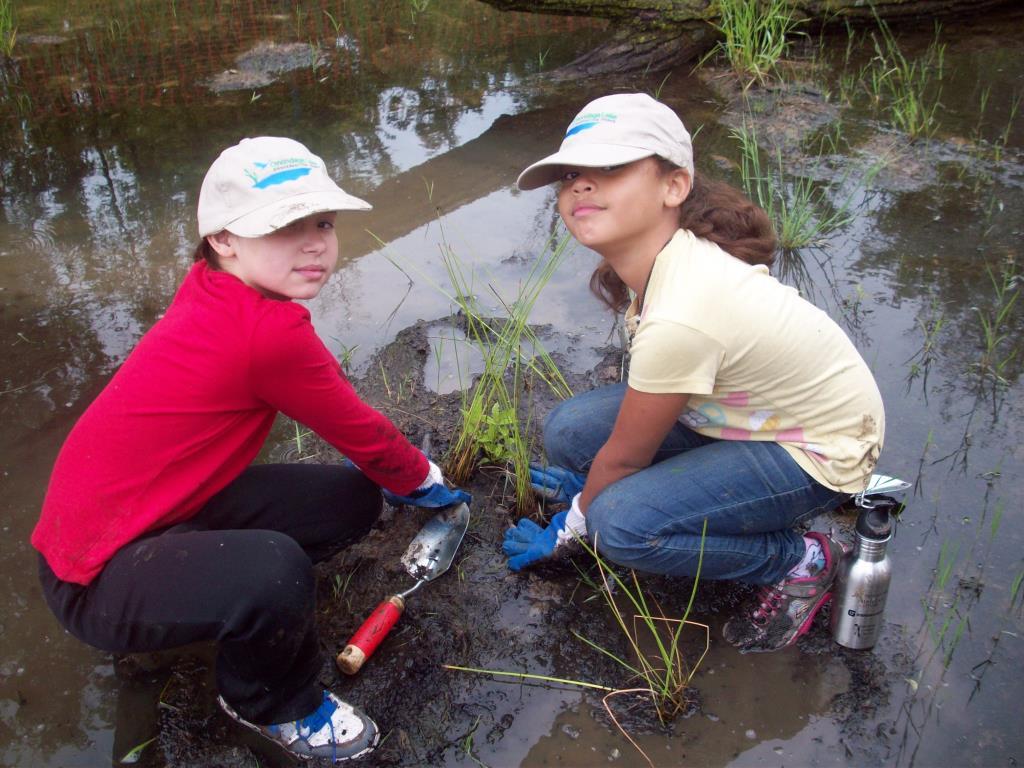
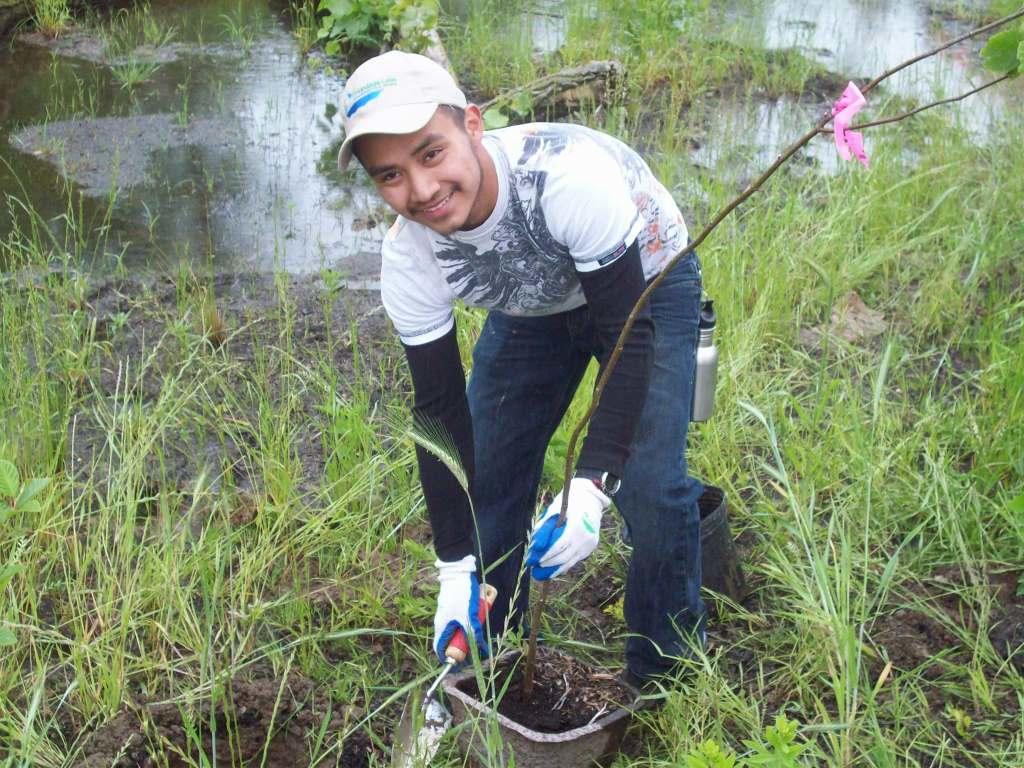
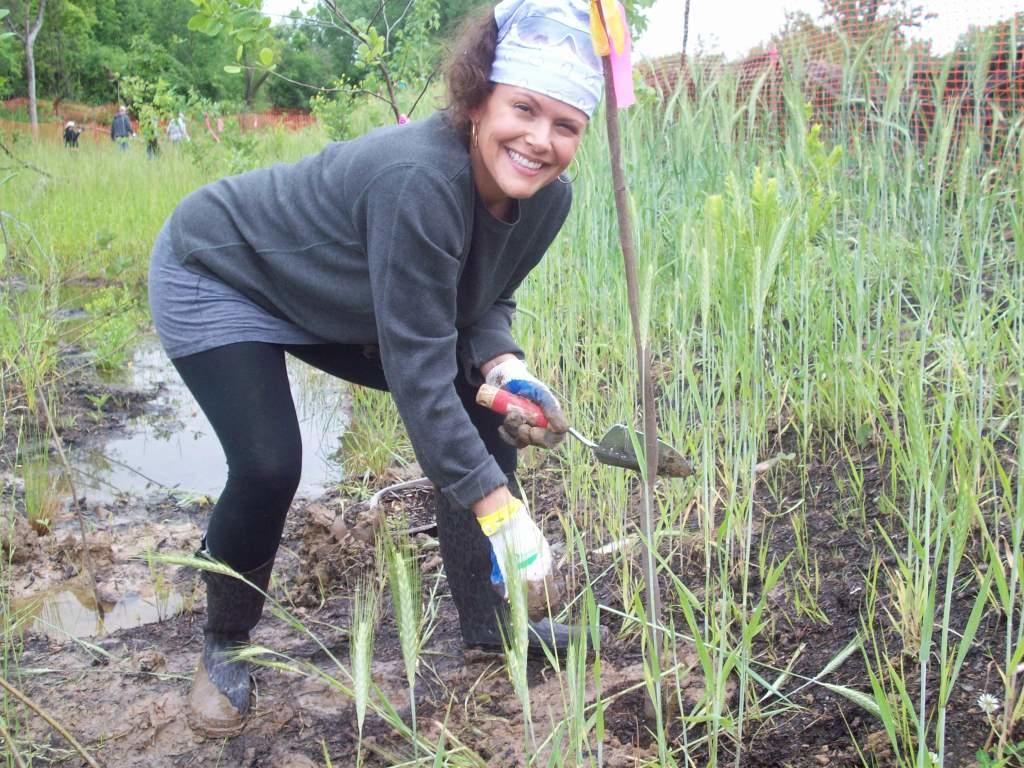
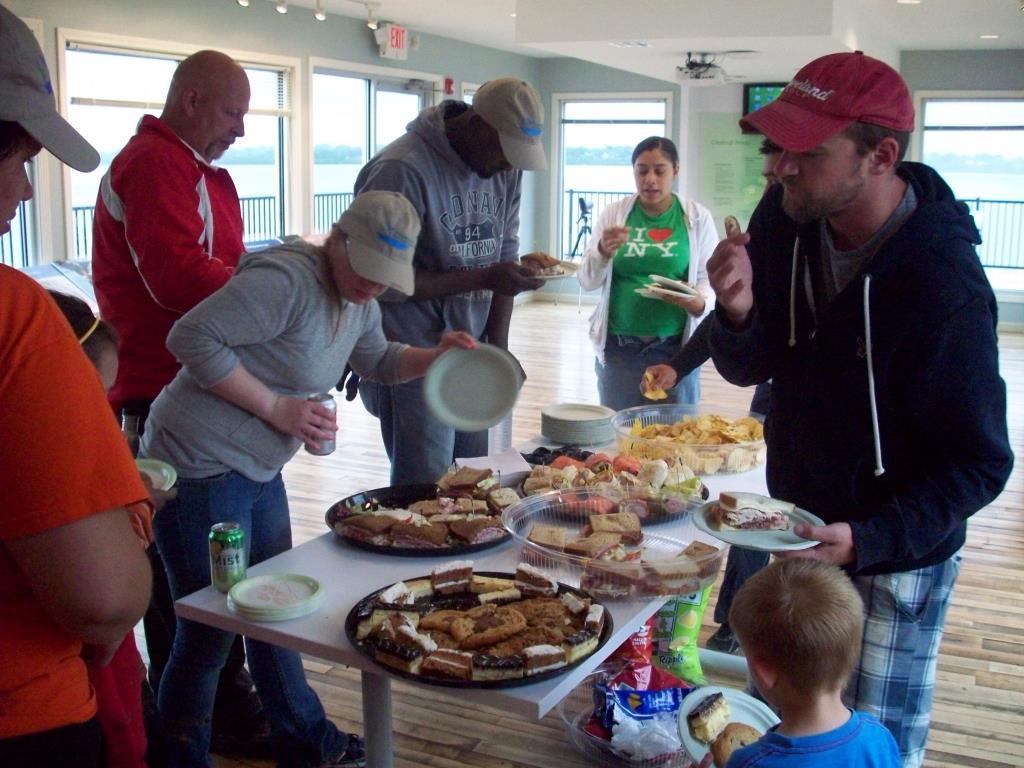
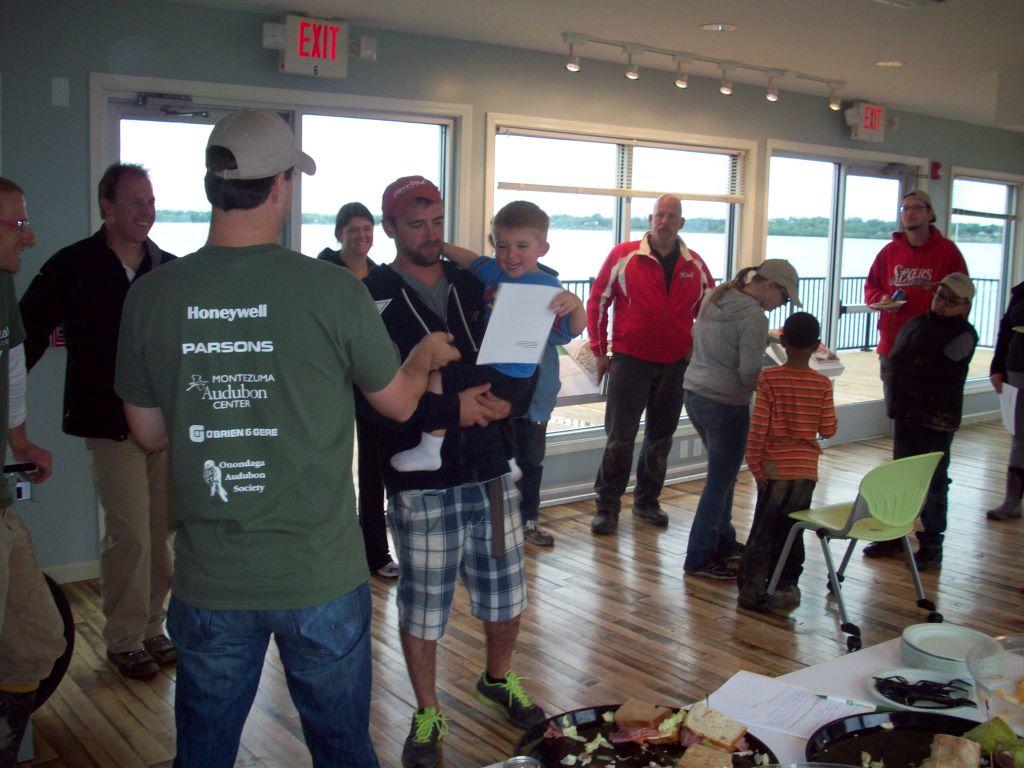
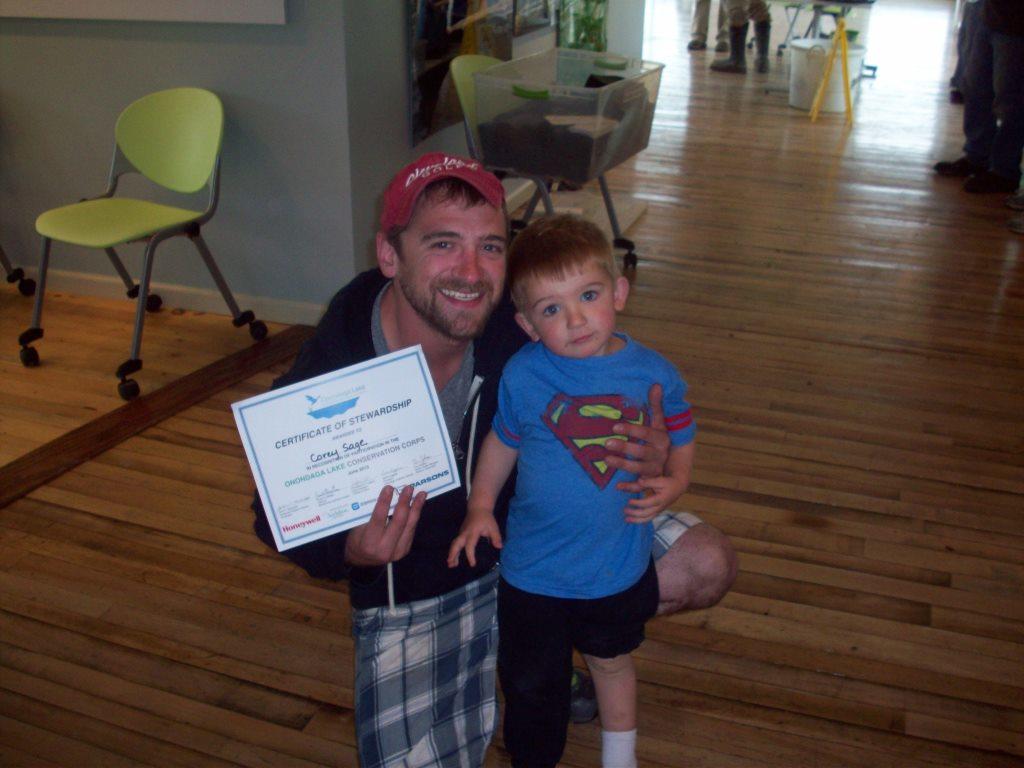
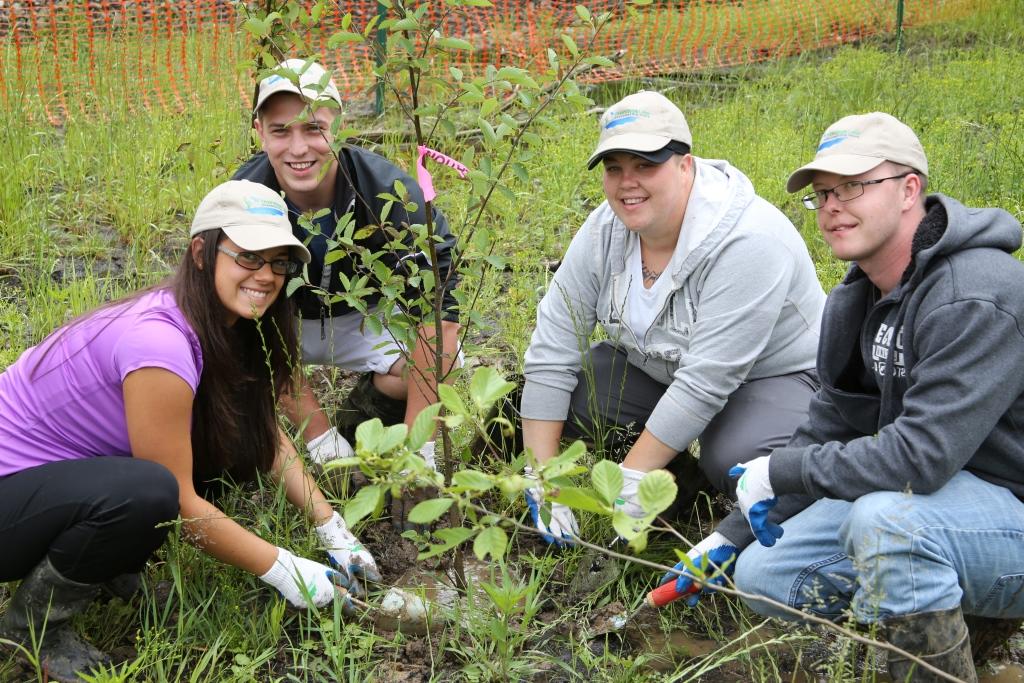
1 of 19
Geddes Brook & Nine Mile Creek, October 2012
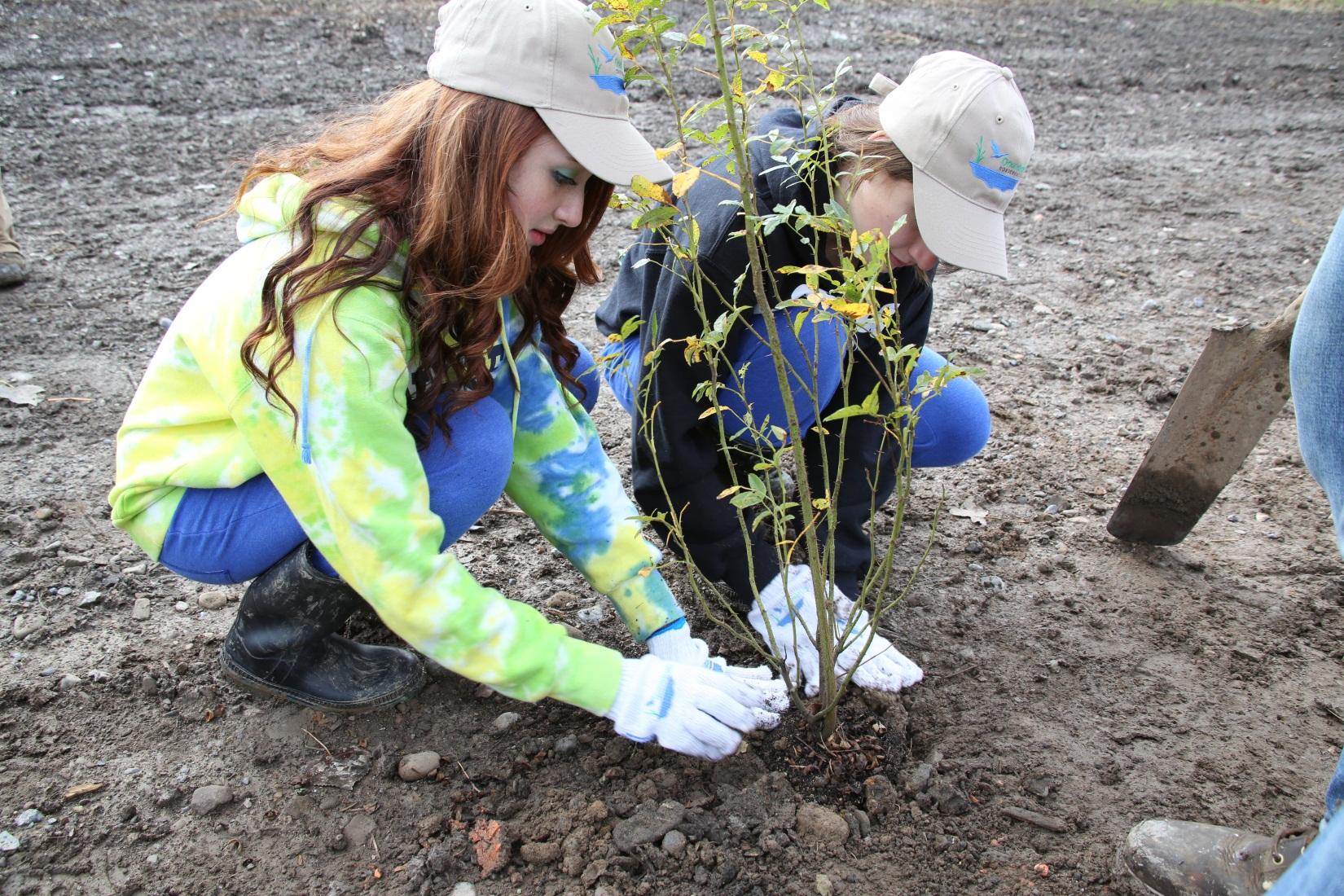
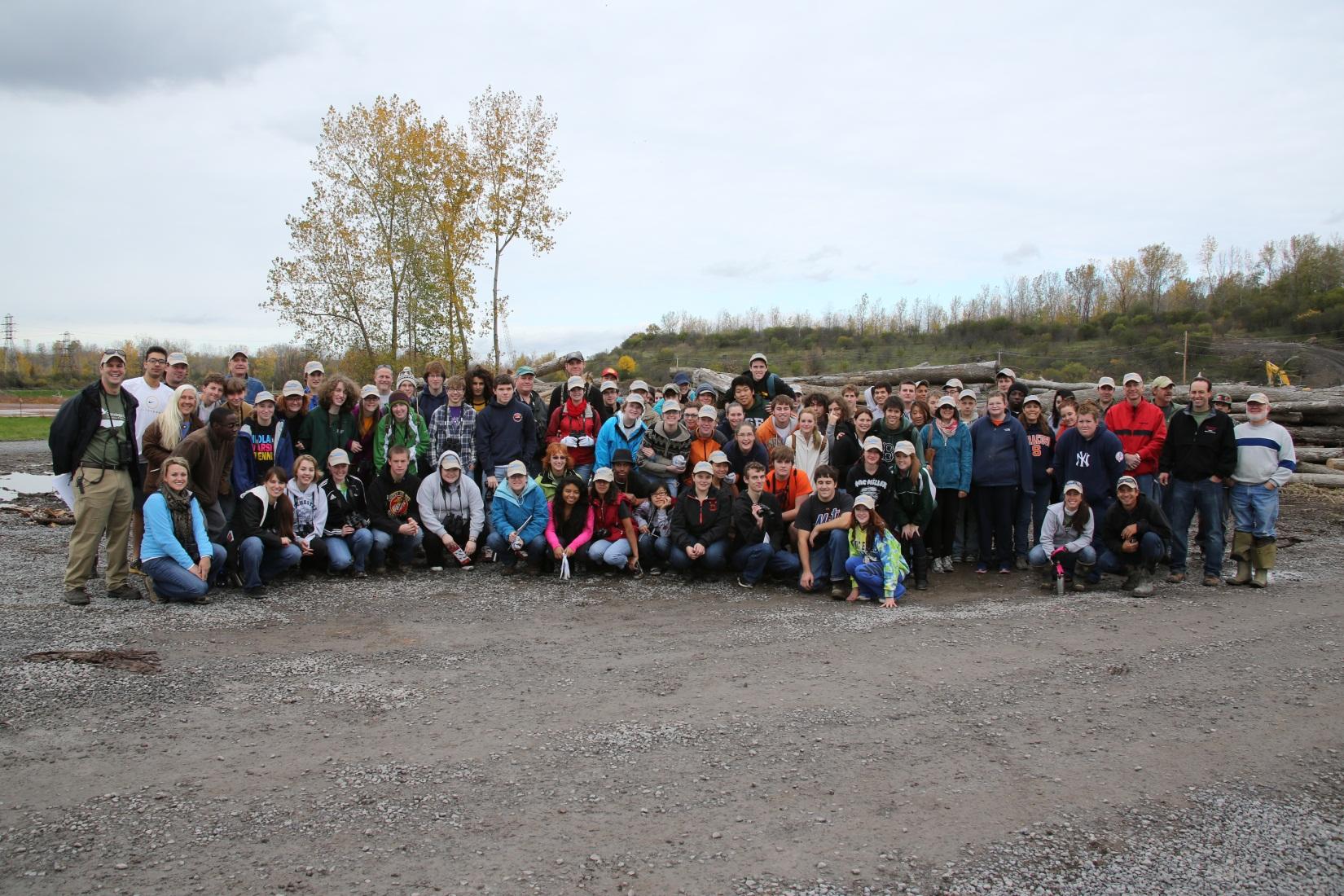
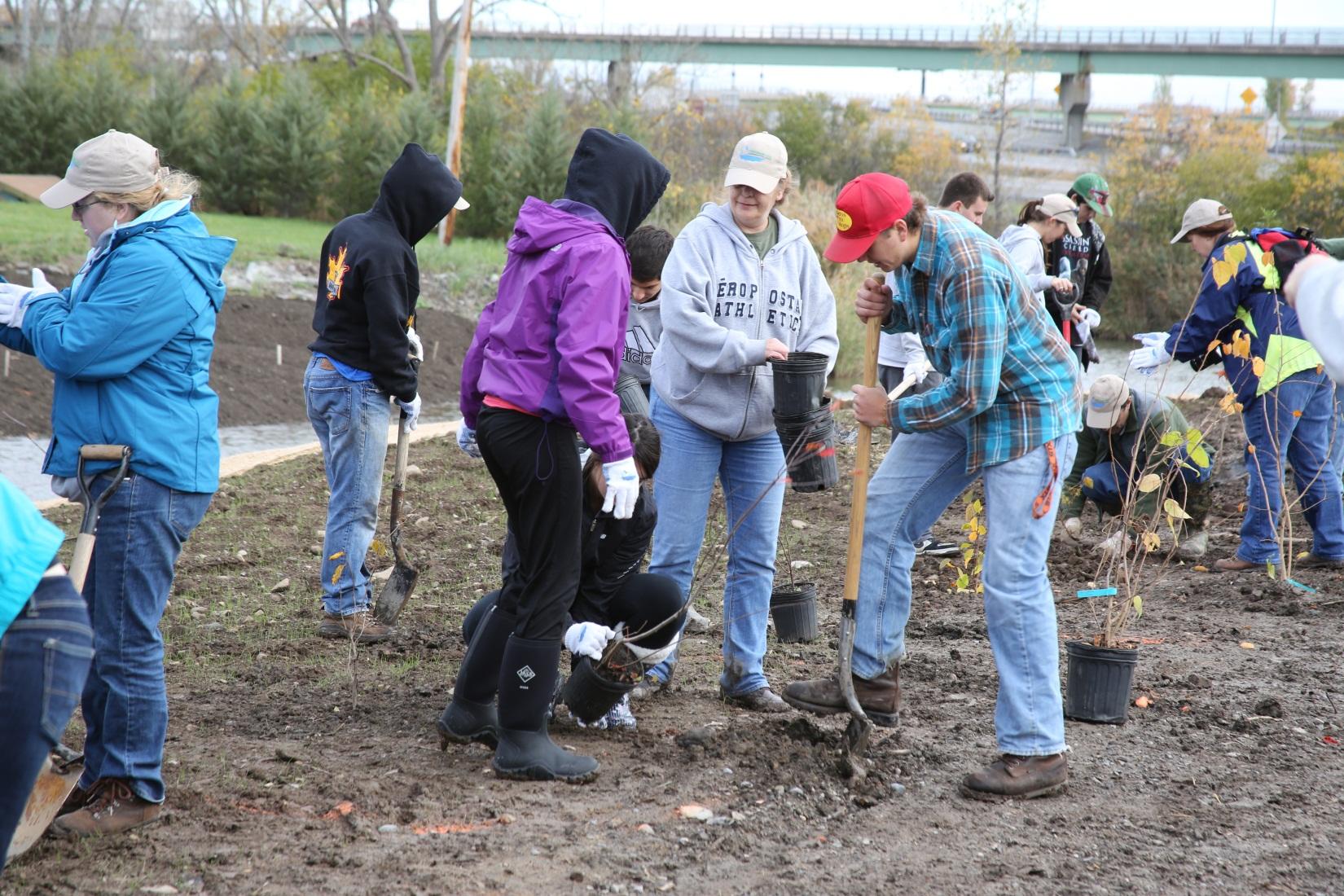
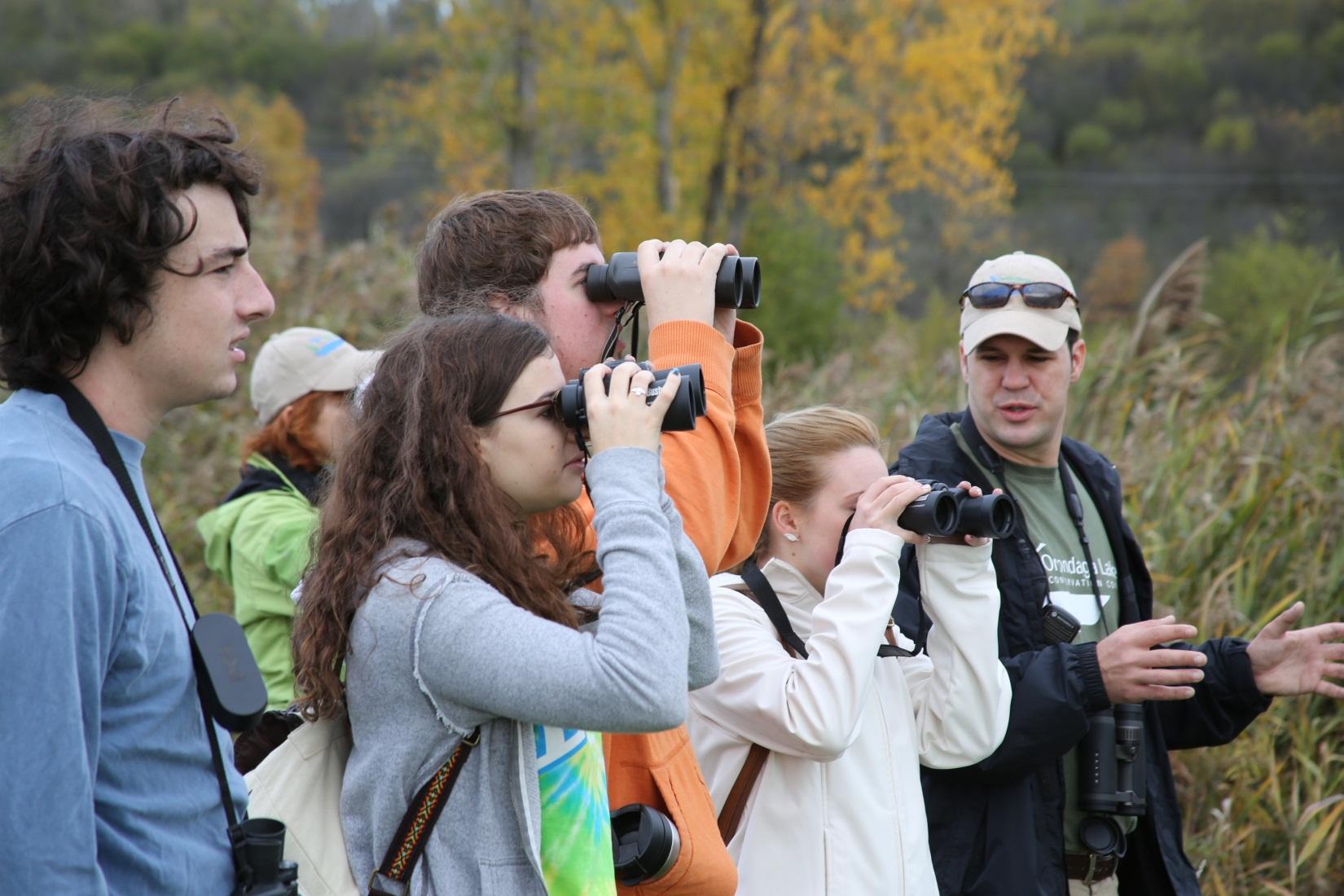
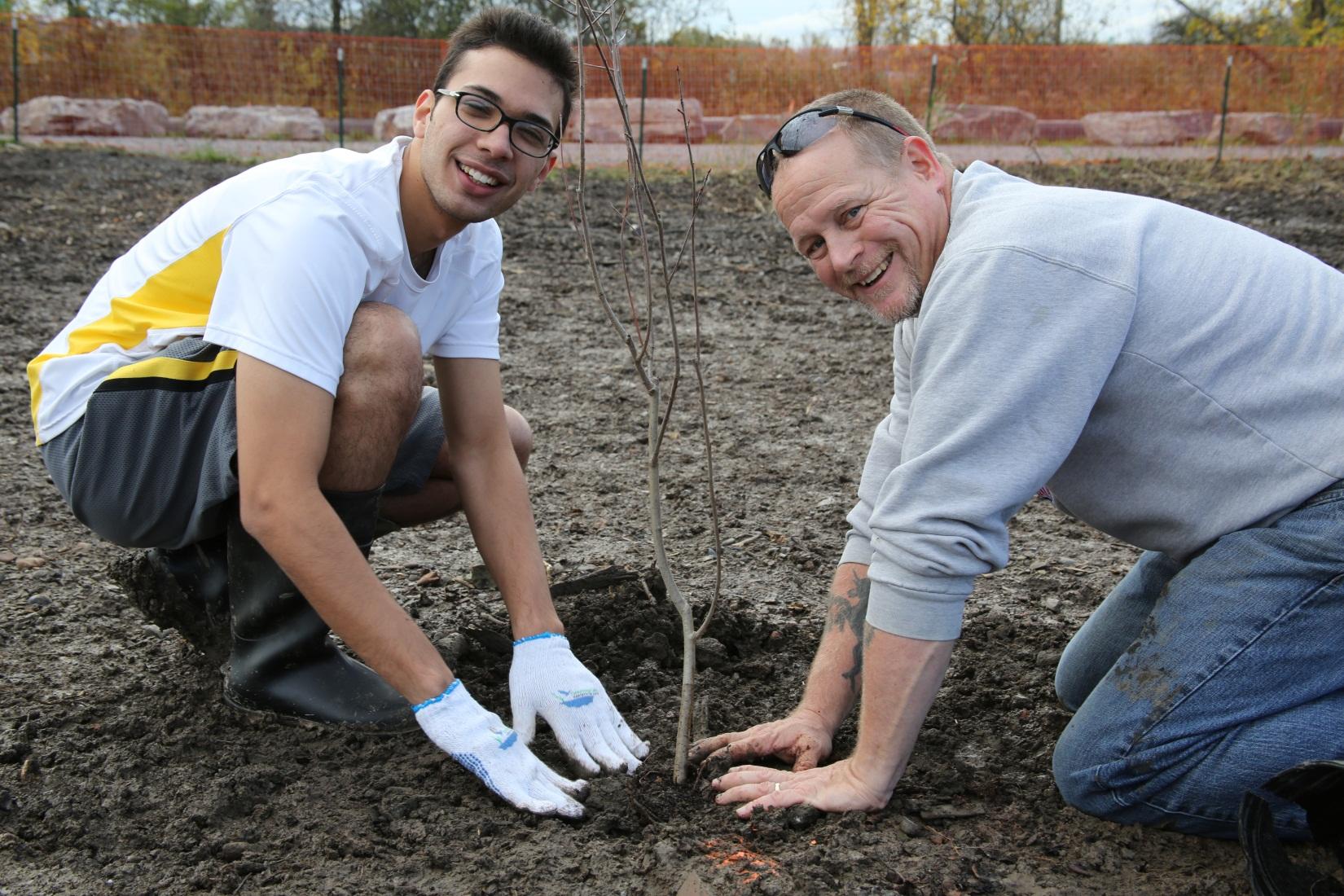
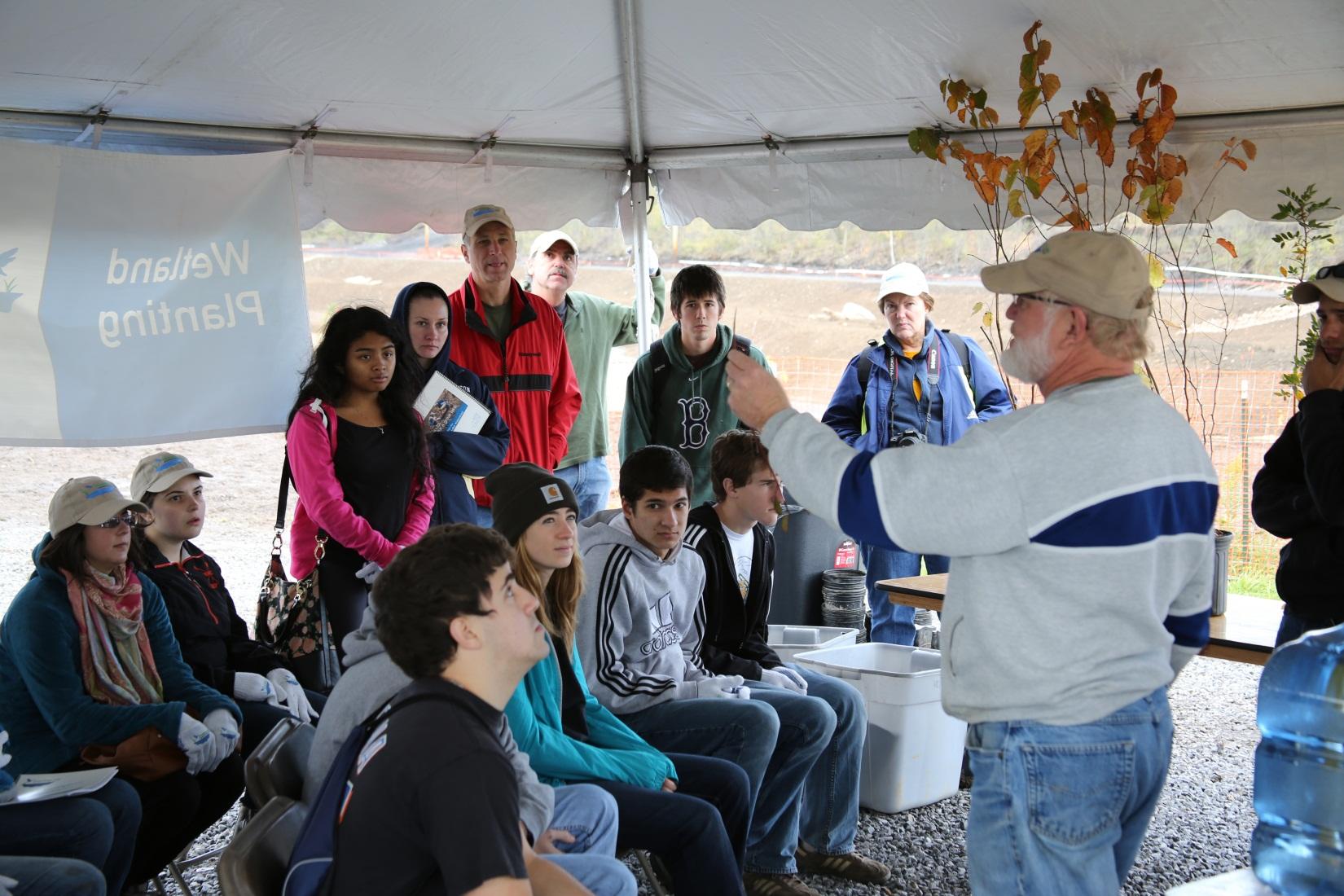
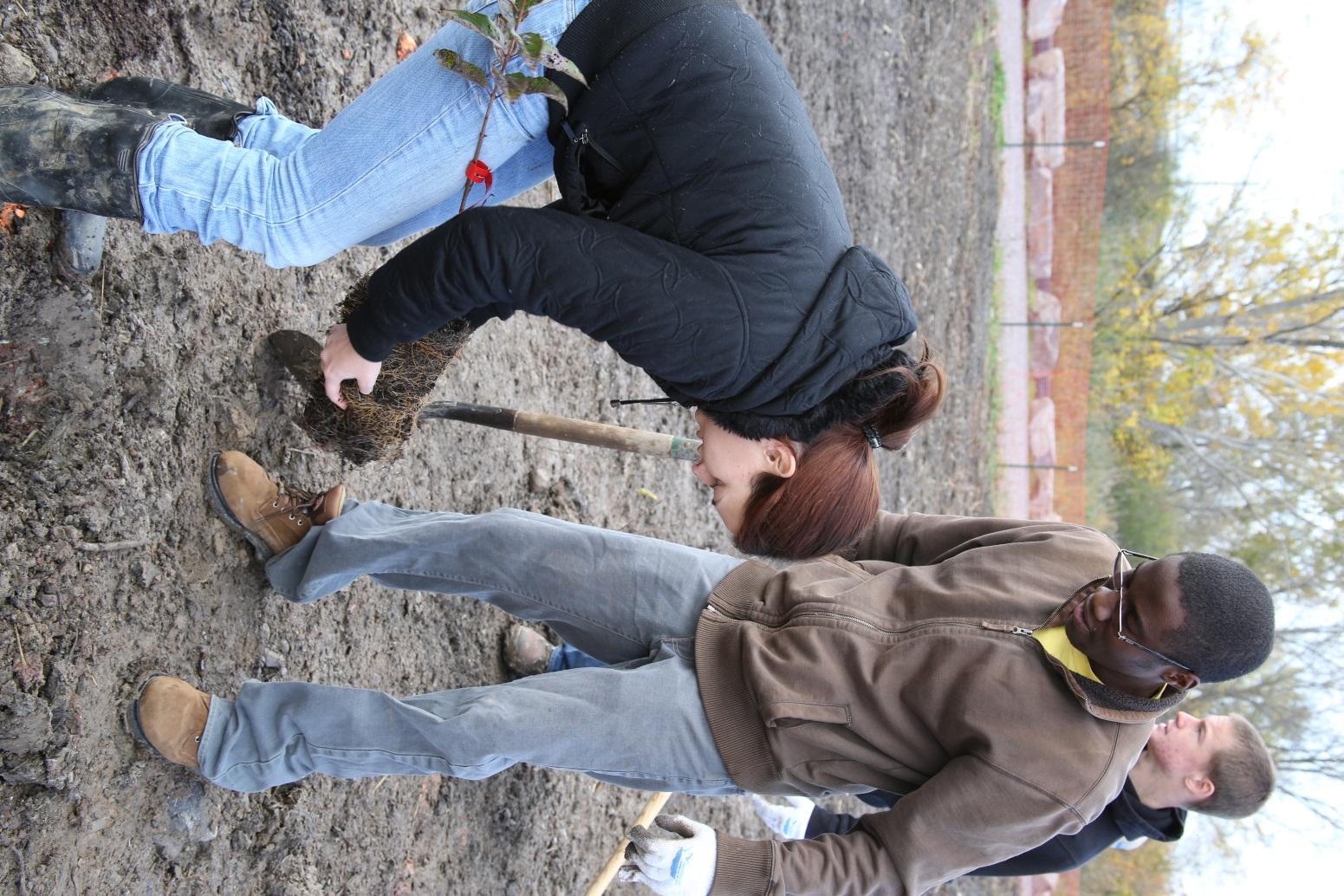
1 of 7
Donate to Audubon
Help secure the future for birds at risk from climate change, habitat loss and other threats. Your support will power our science, education, advocacy and on-the-ground conservation efforts.

